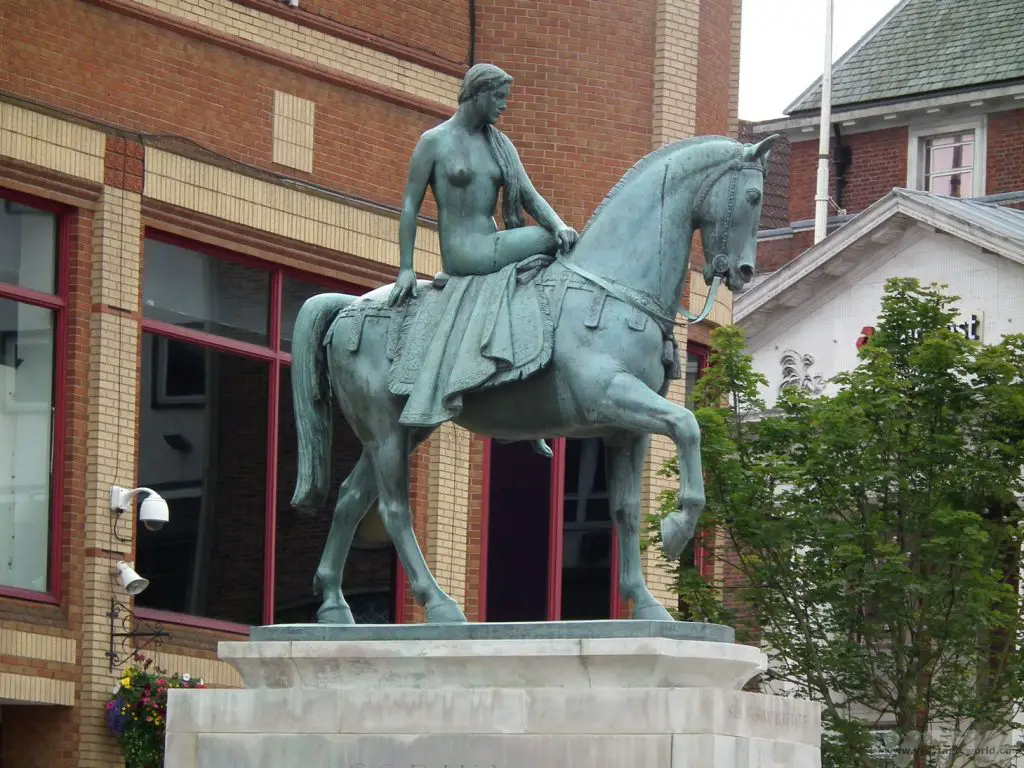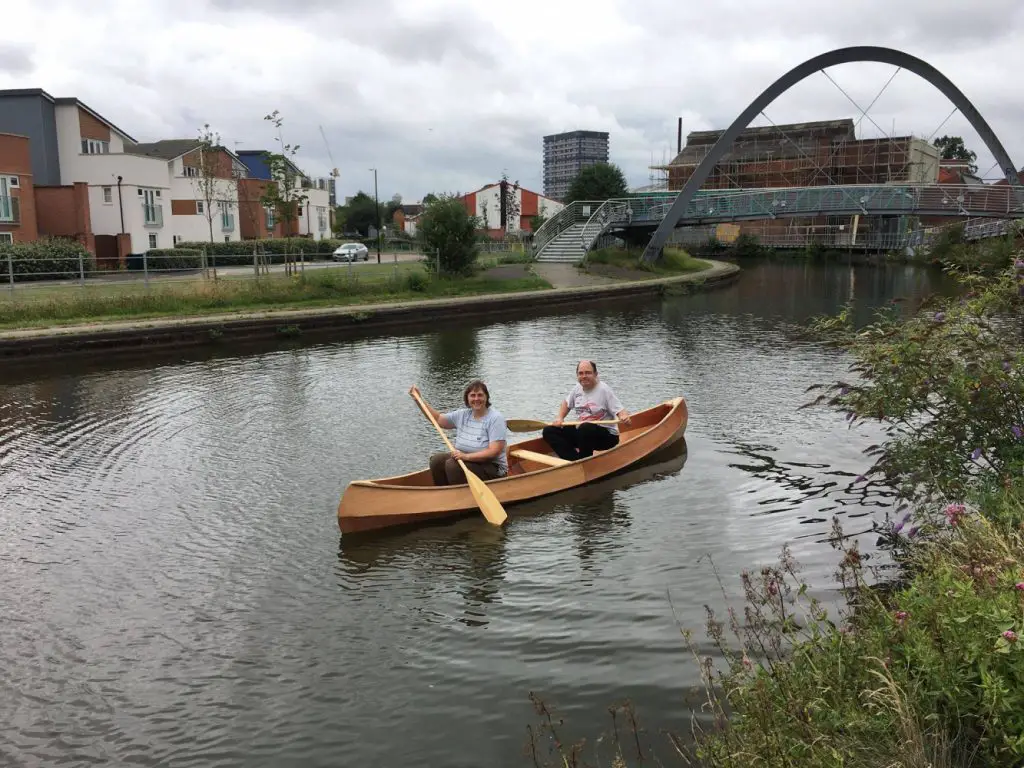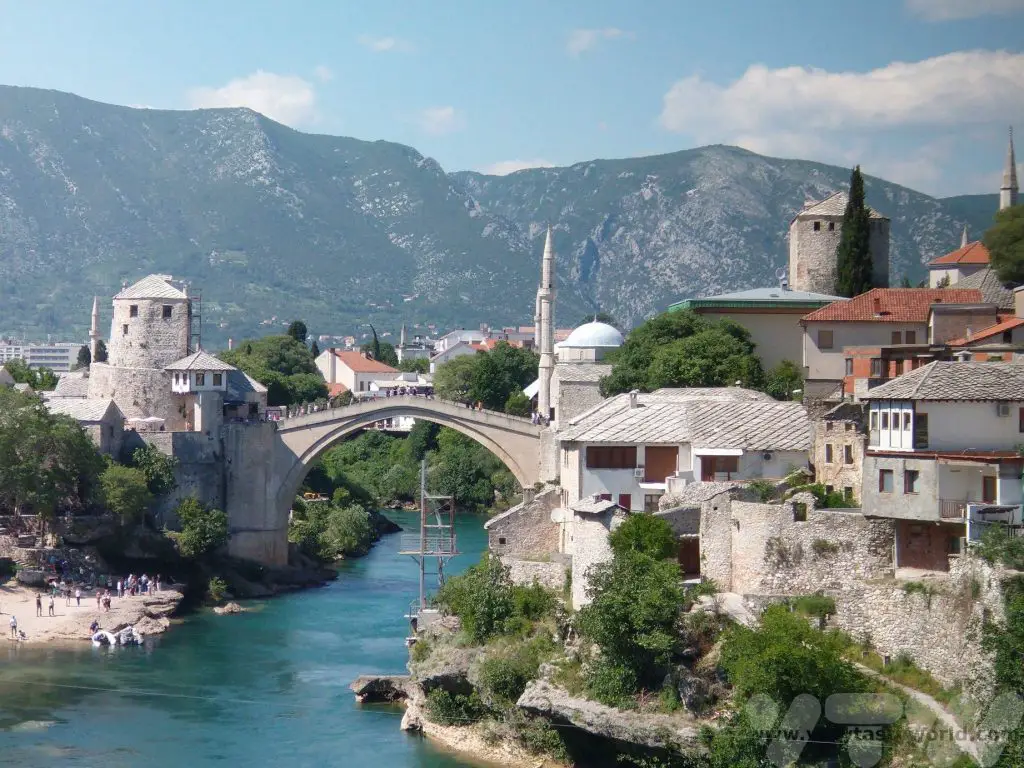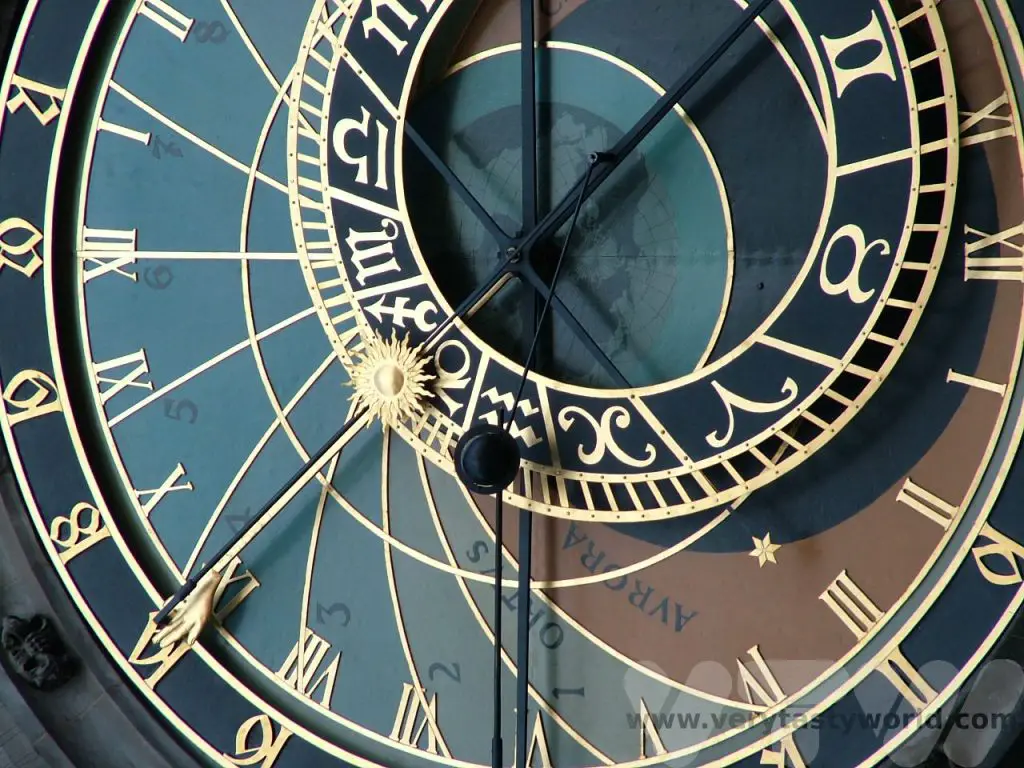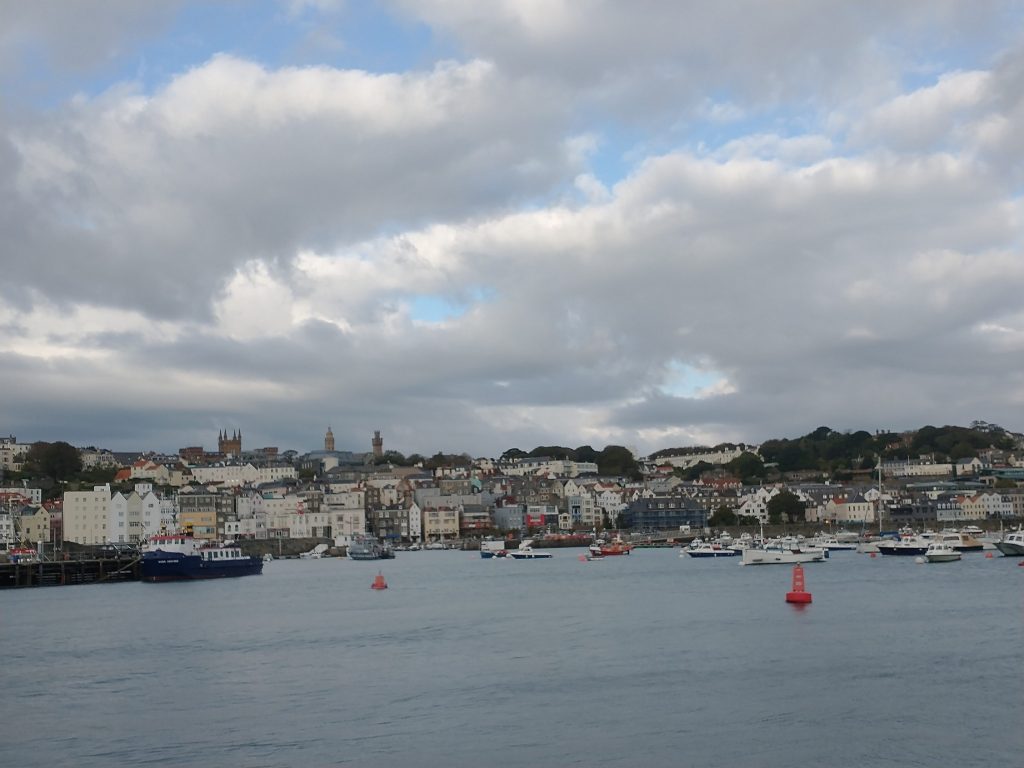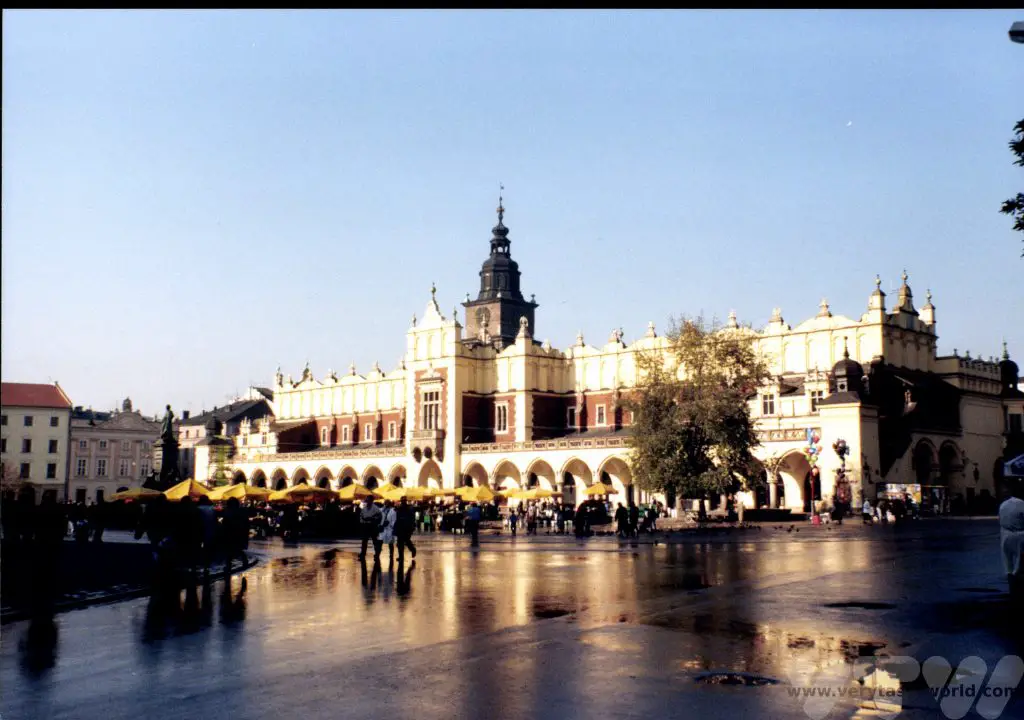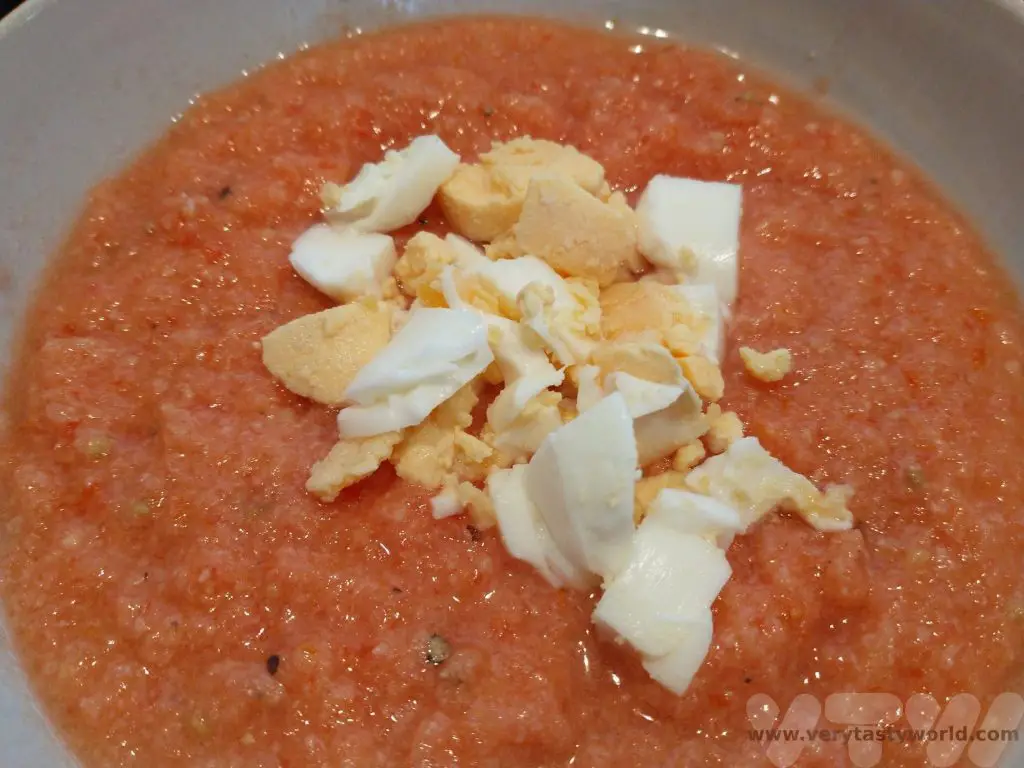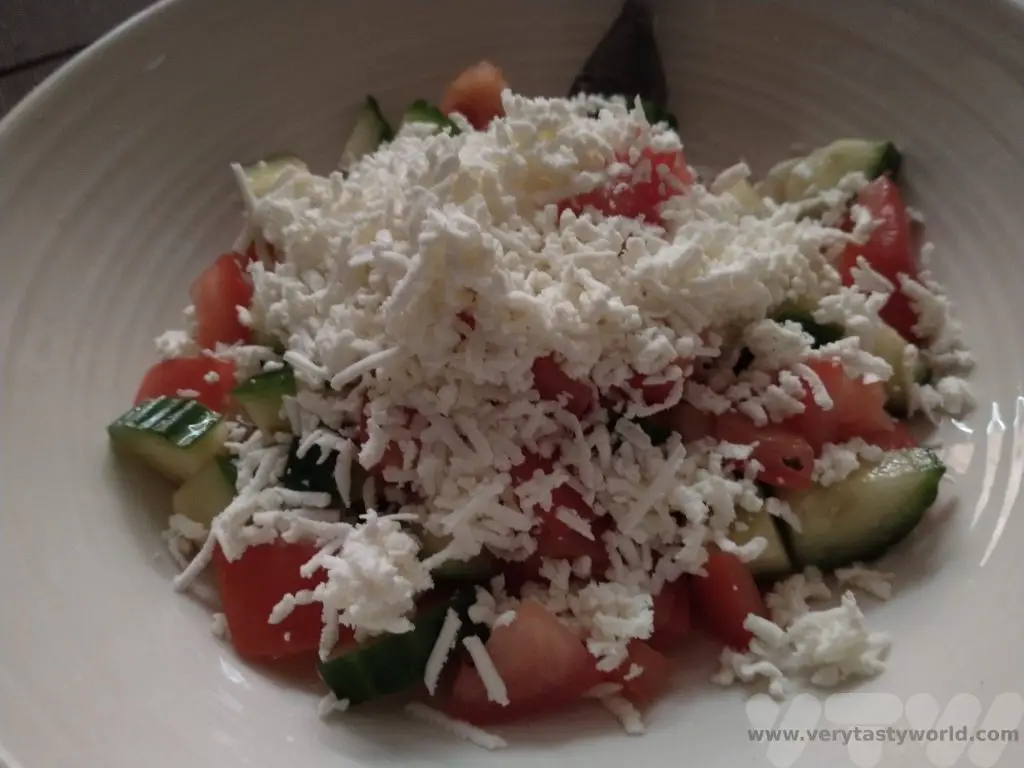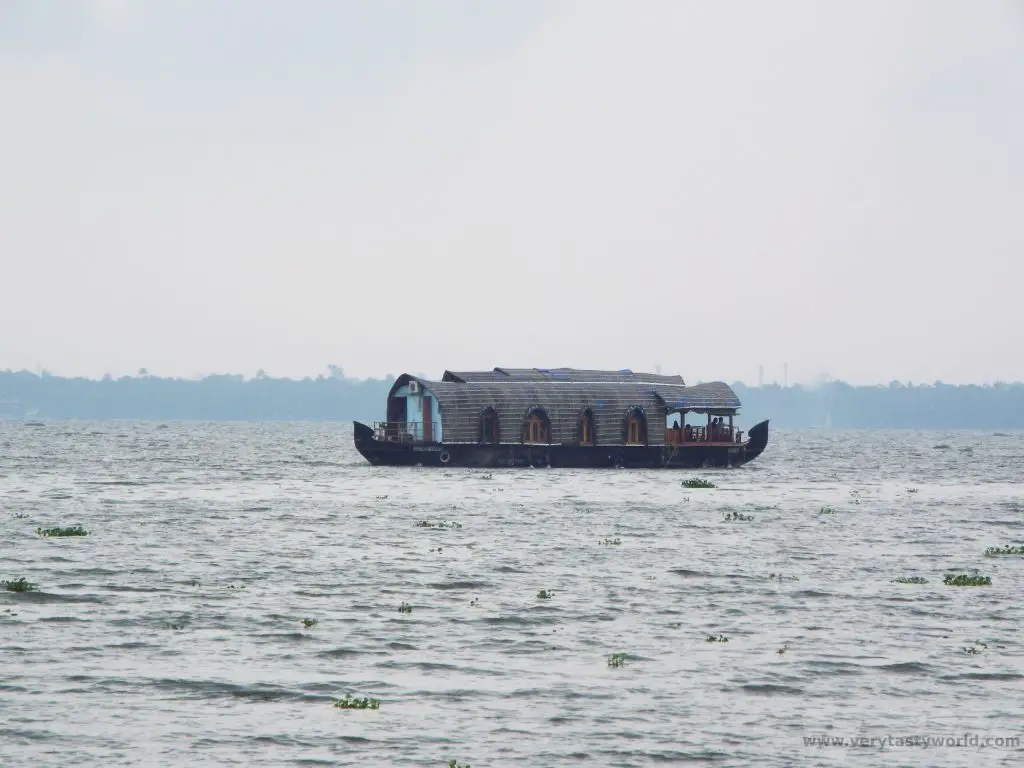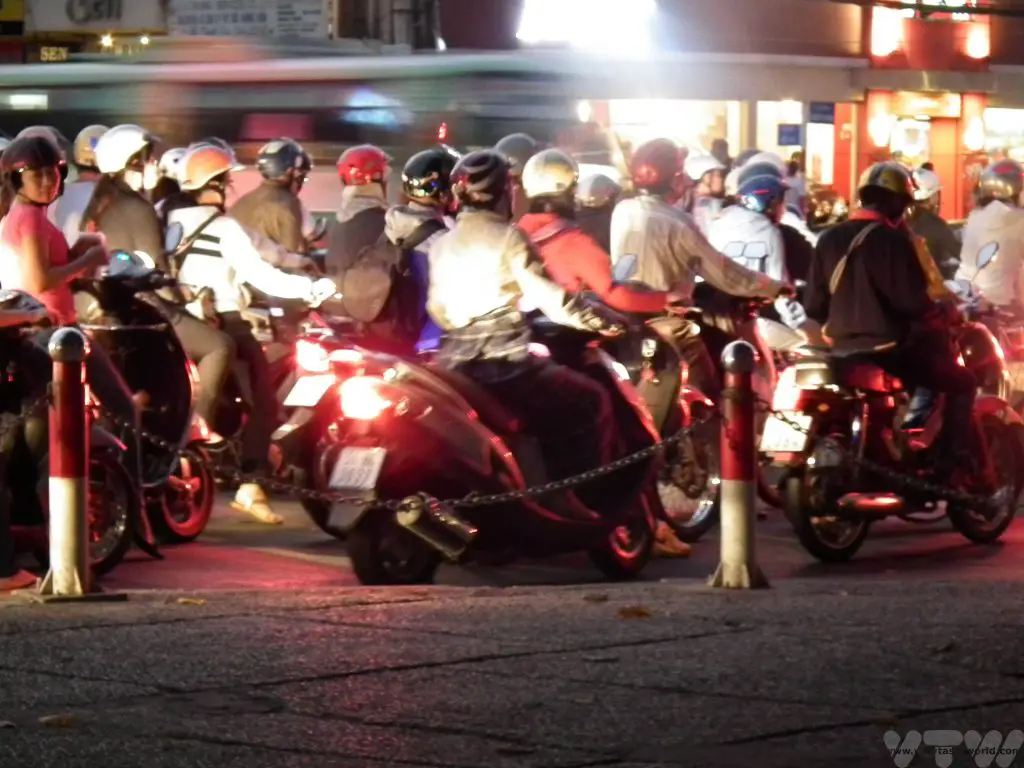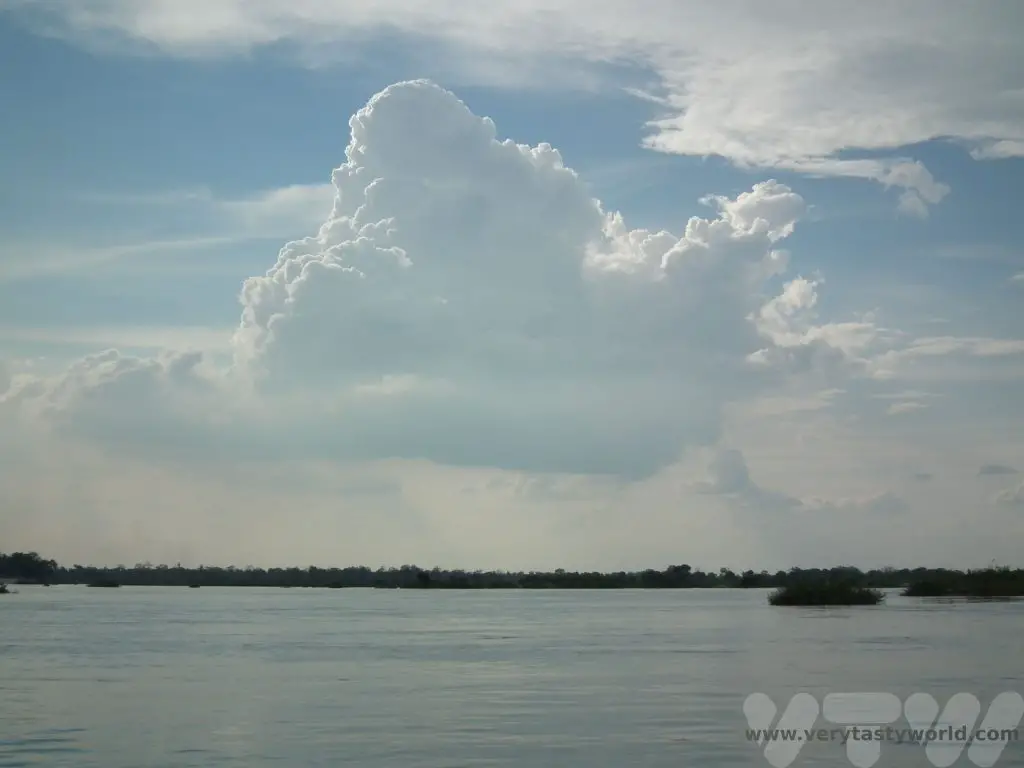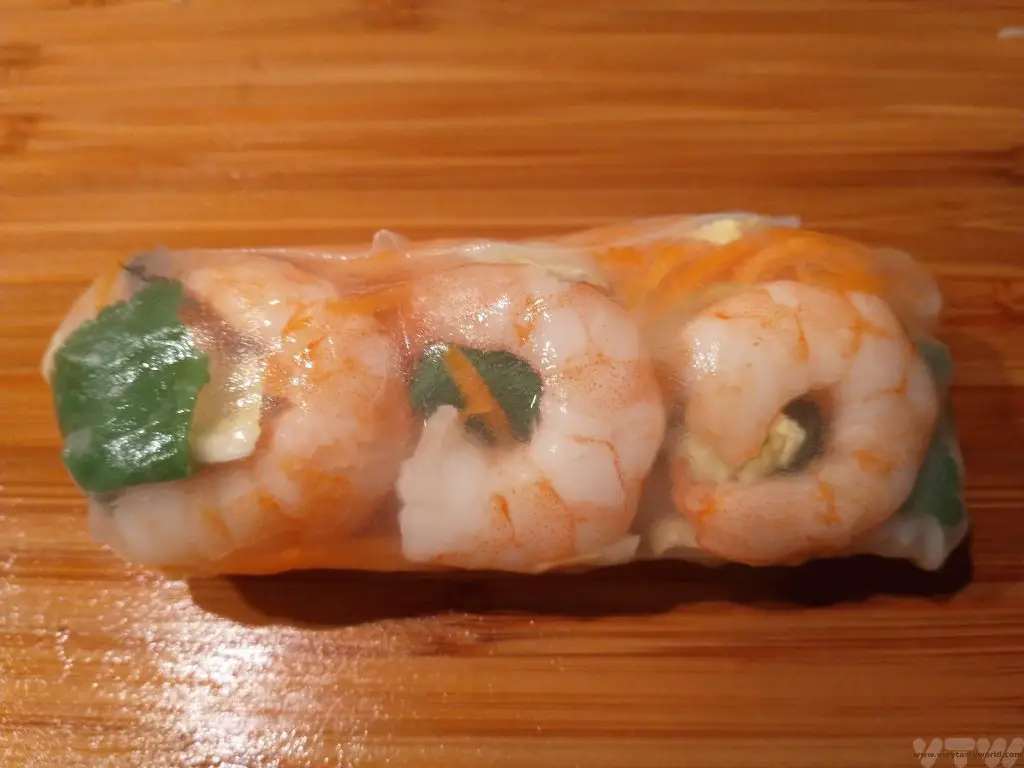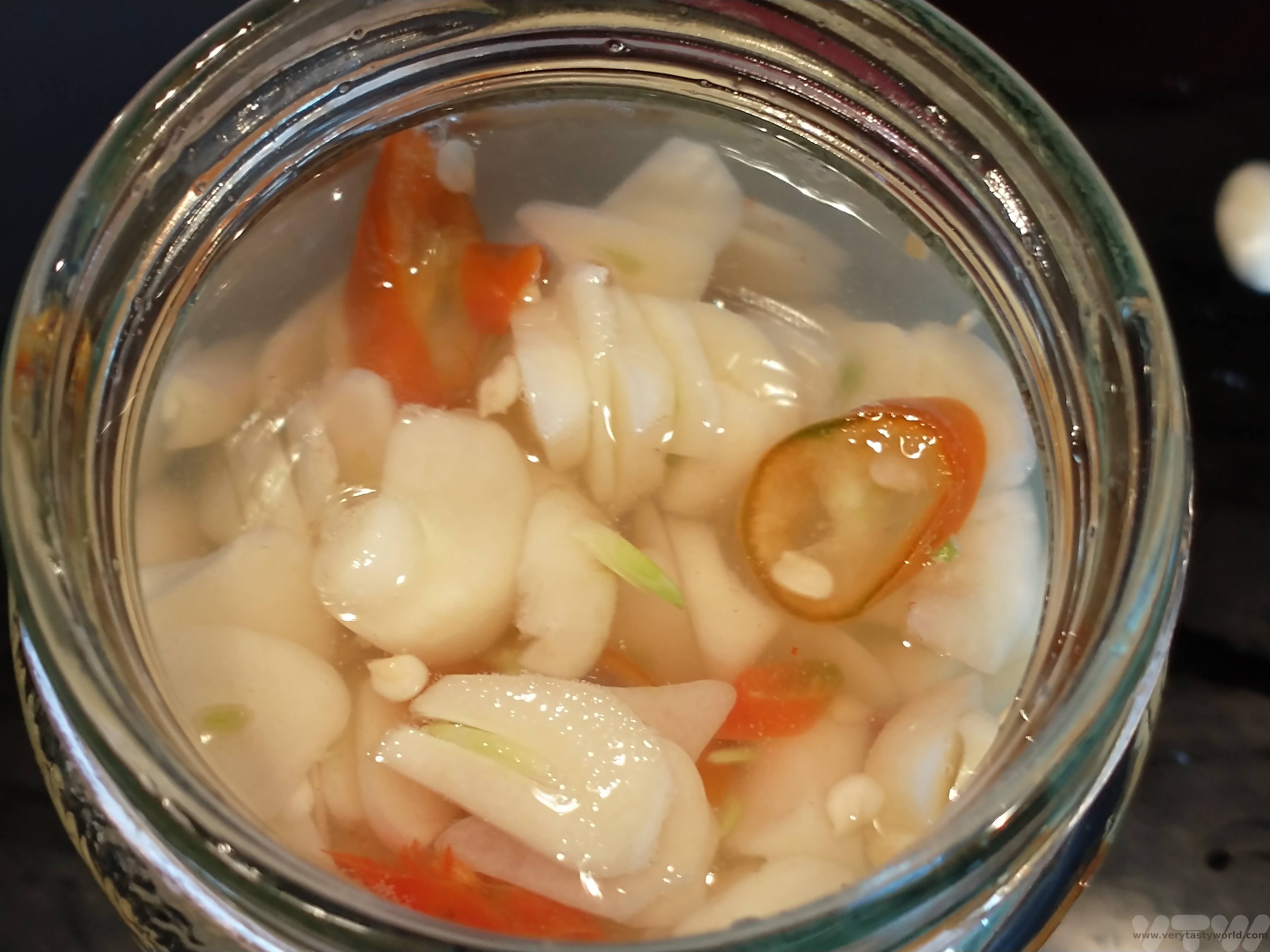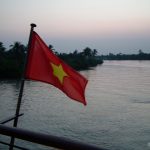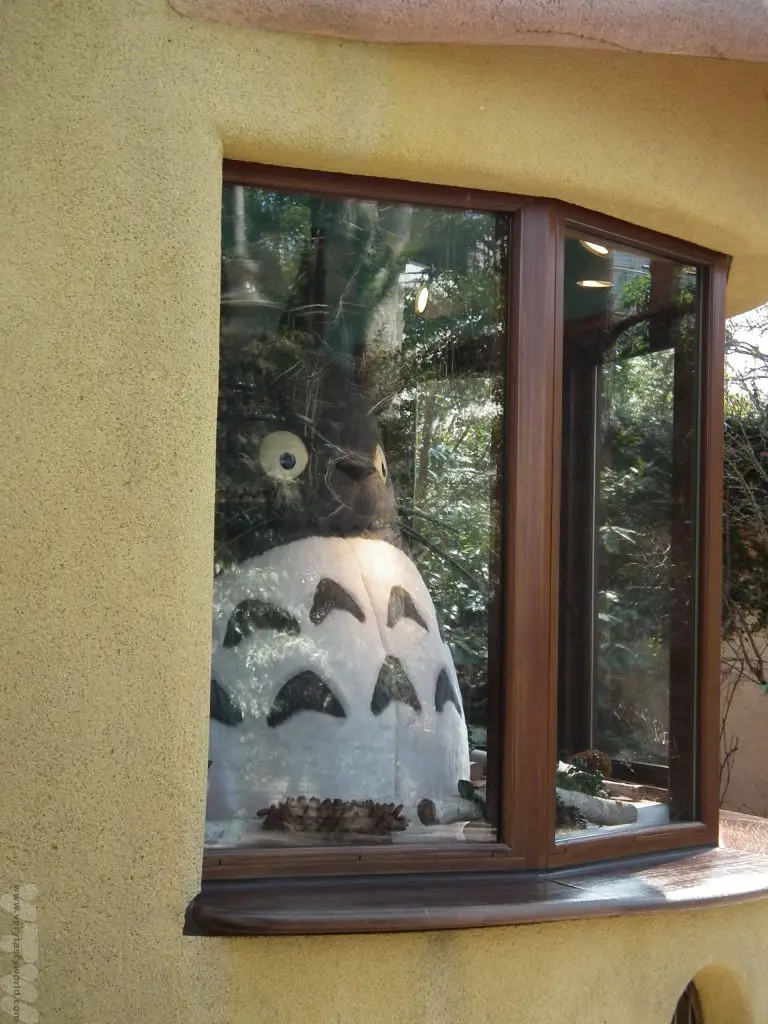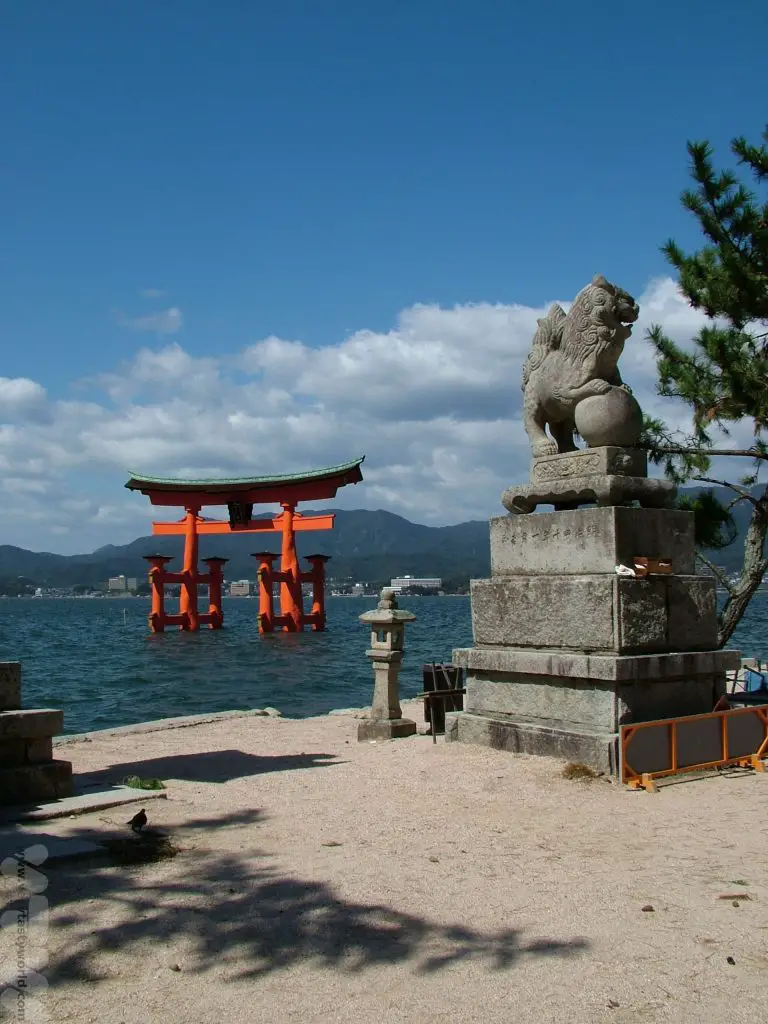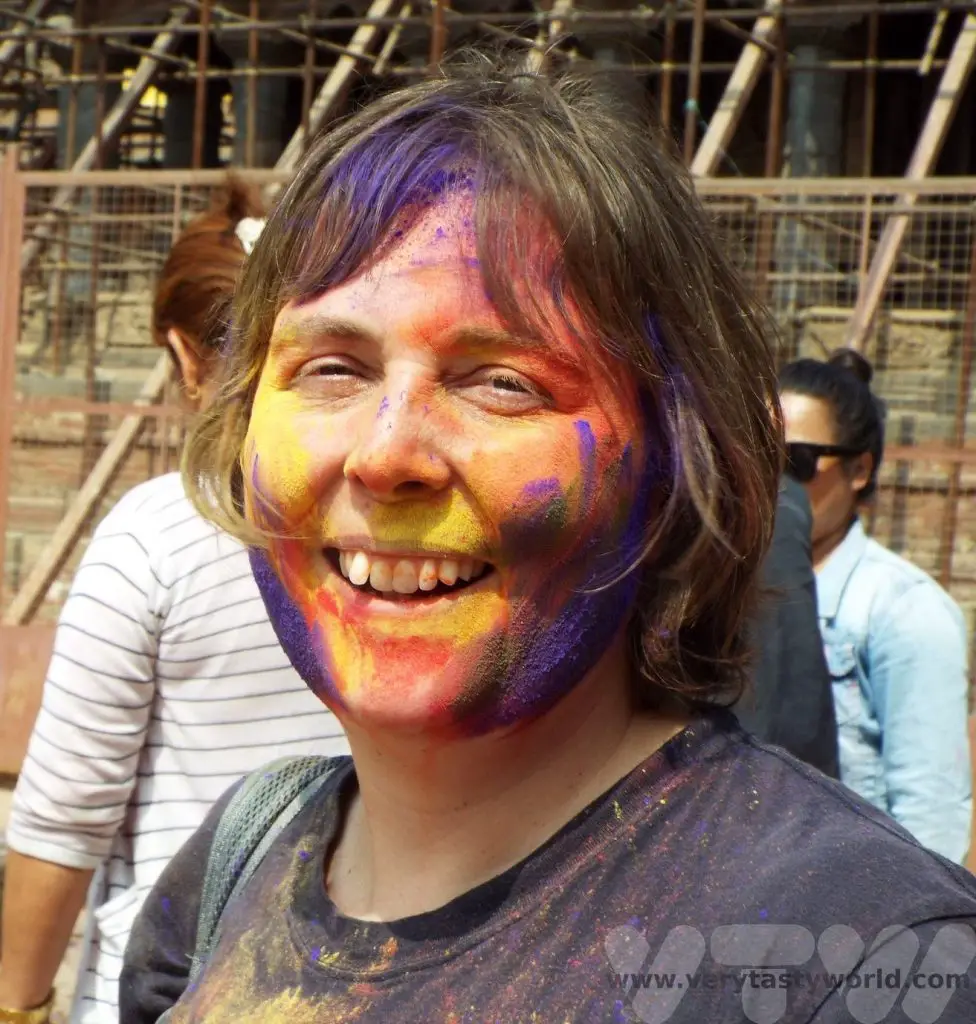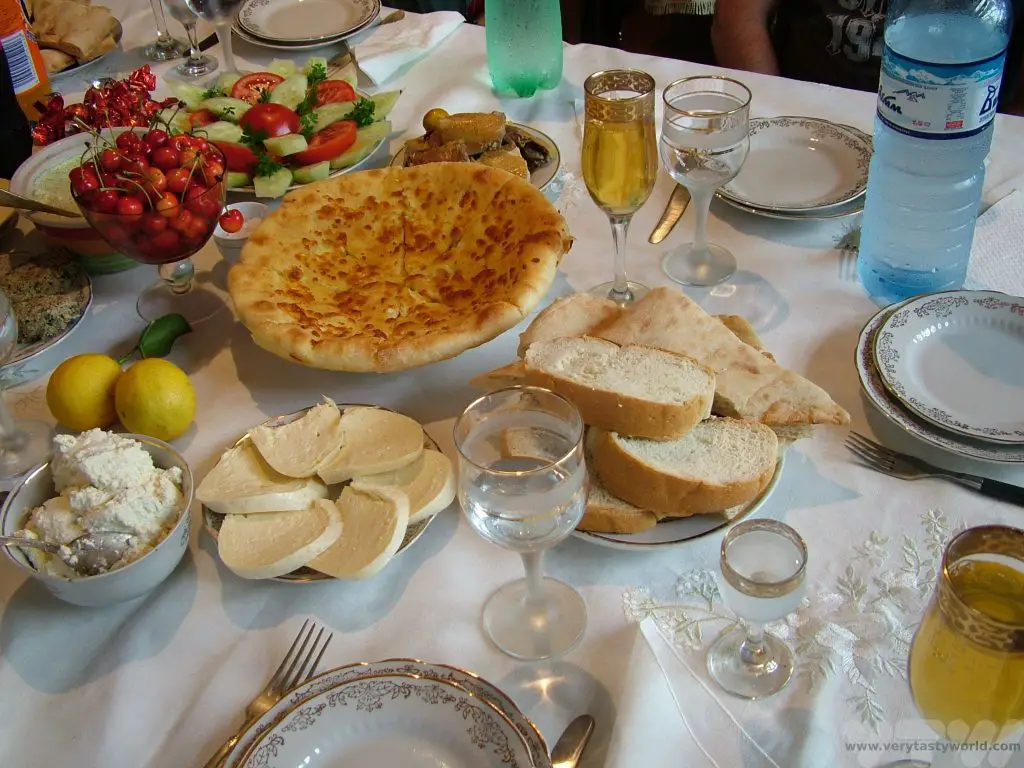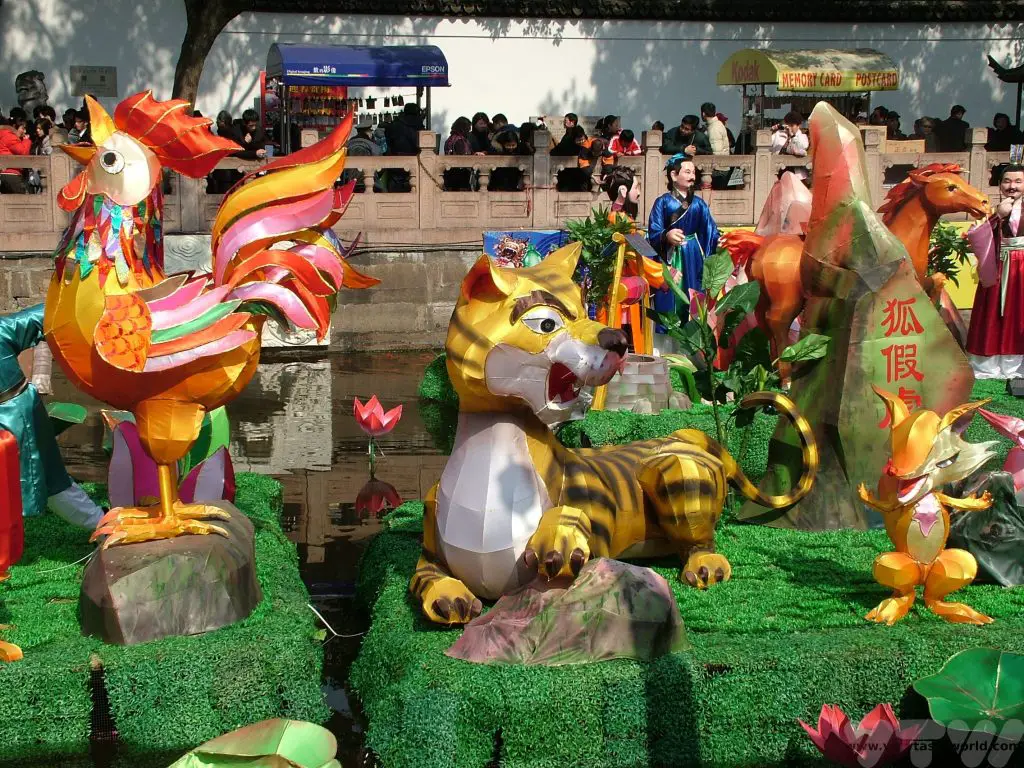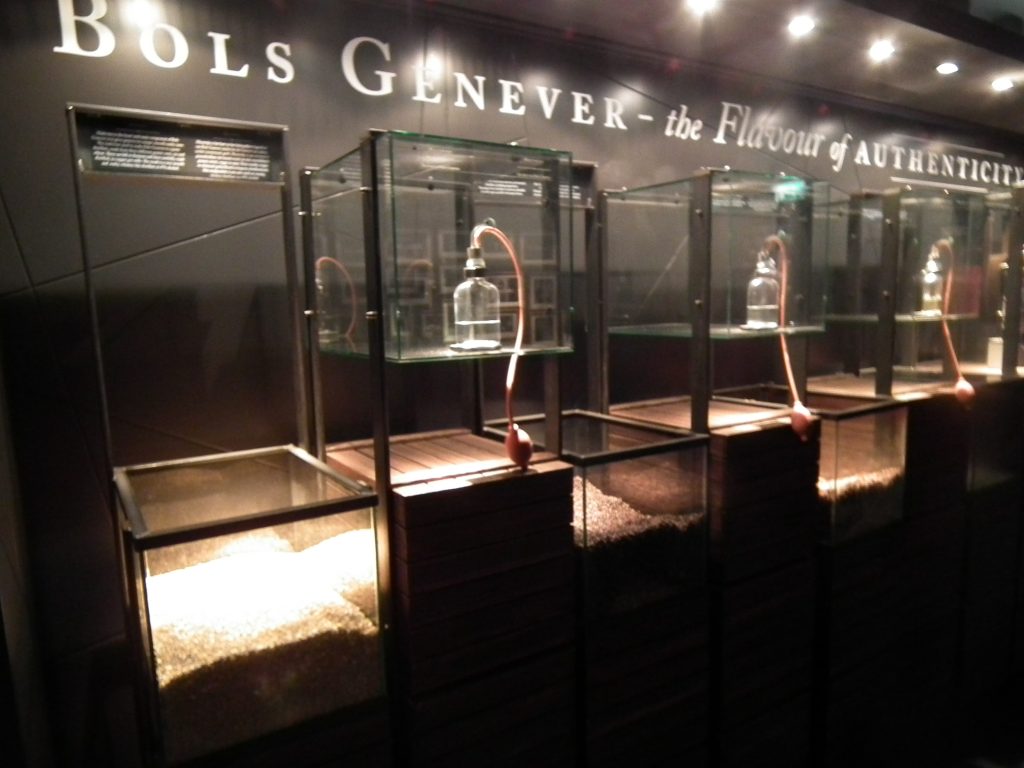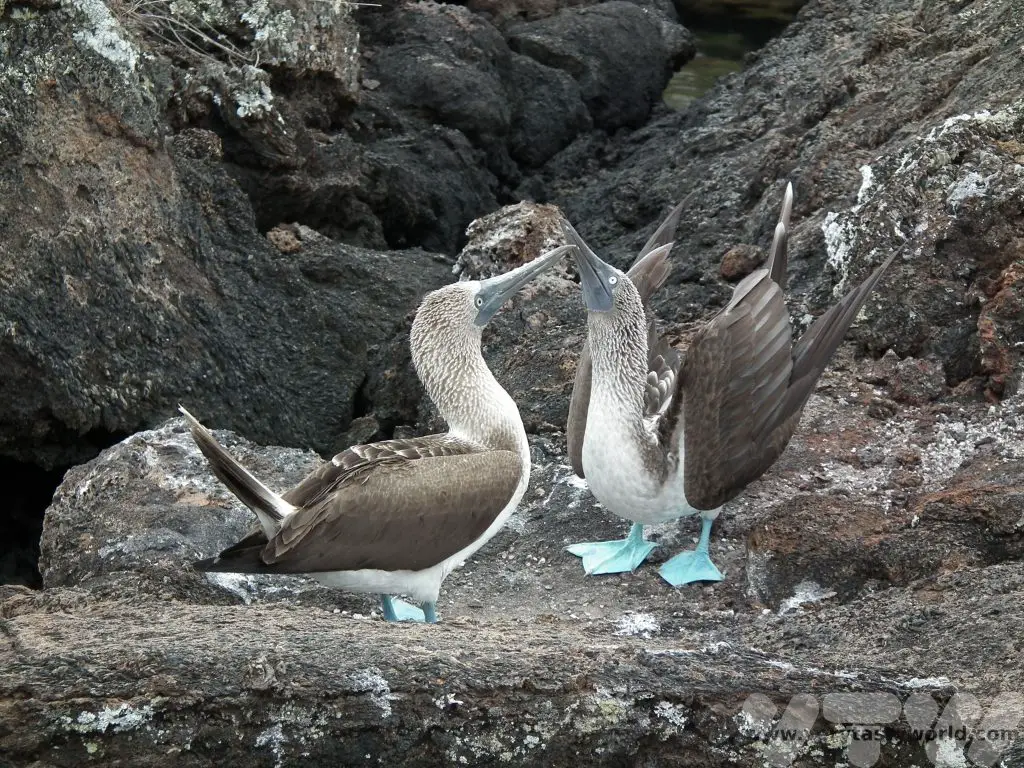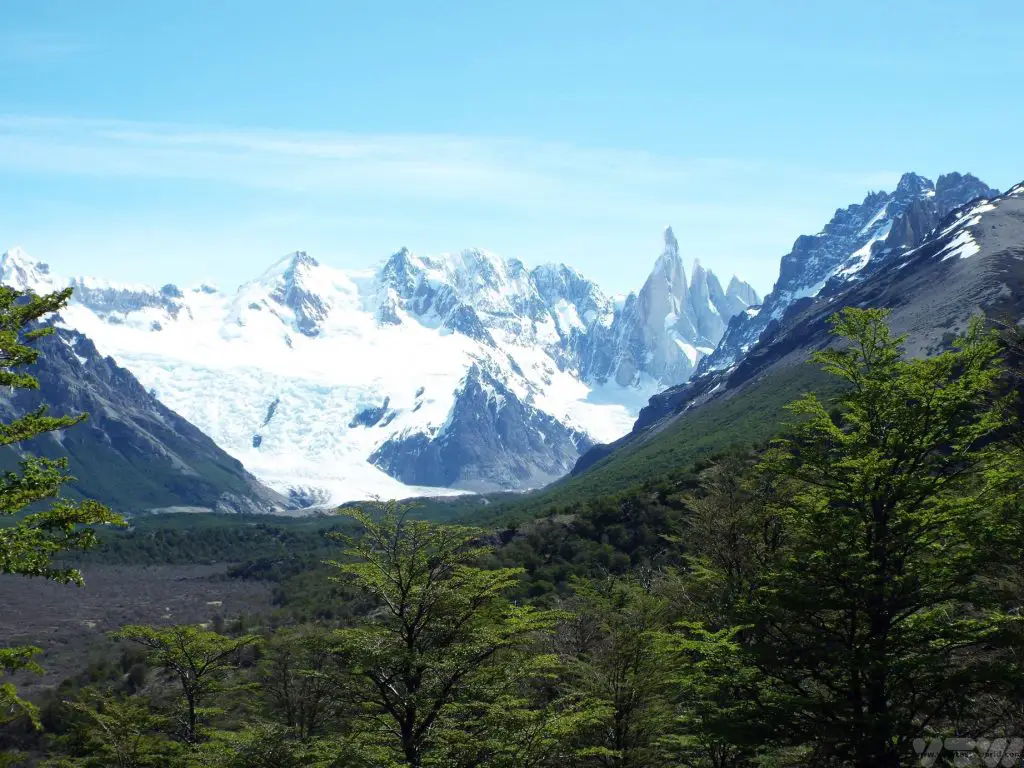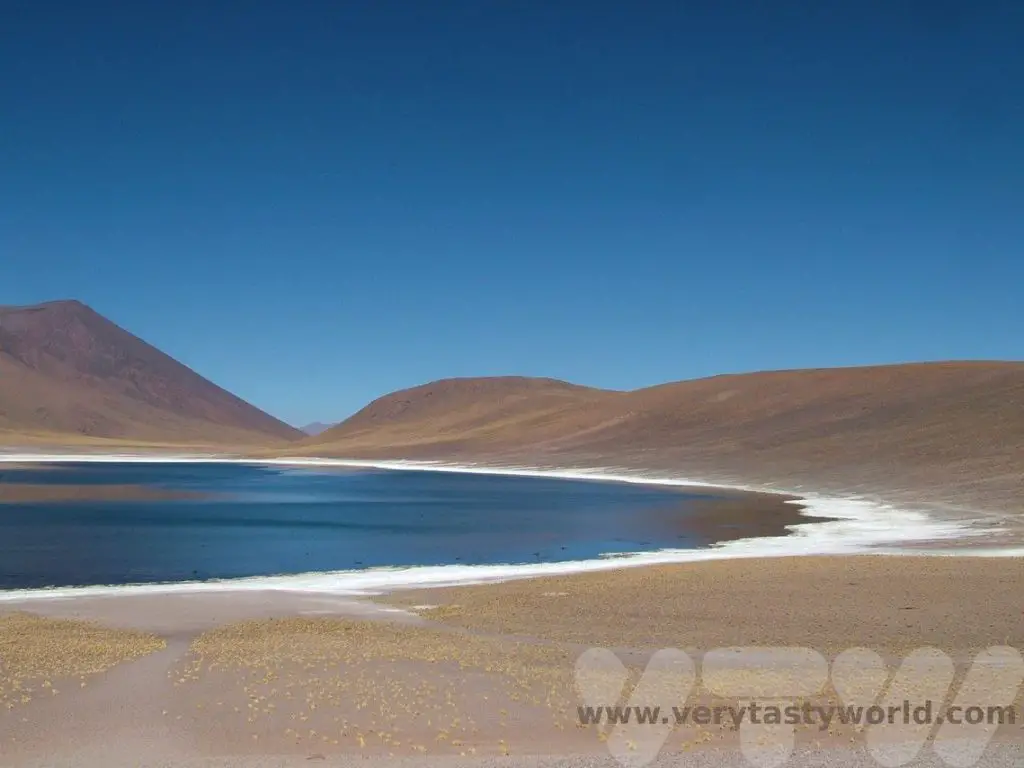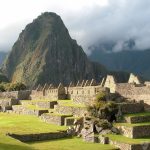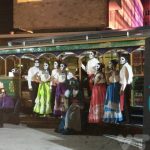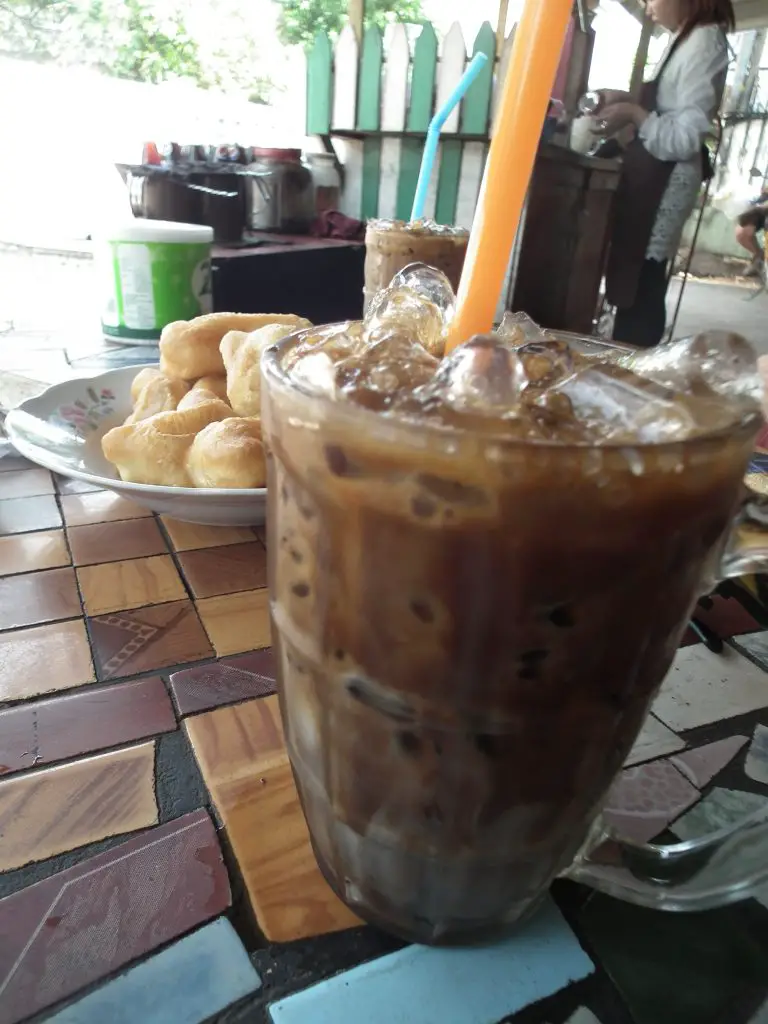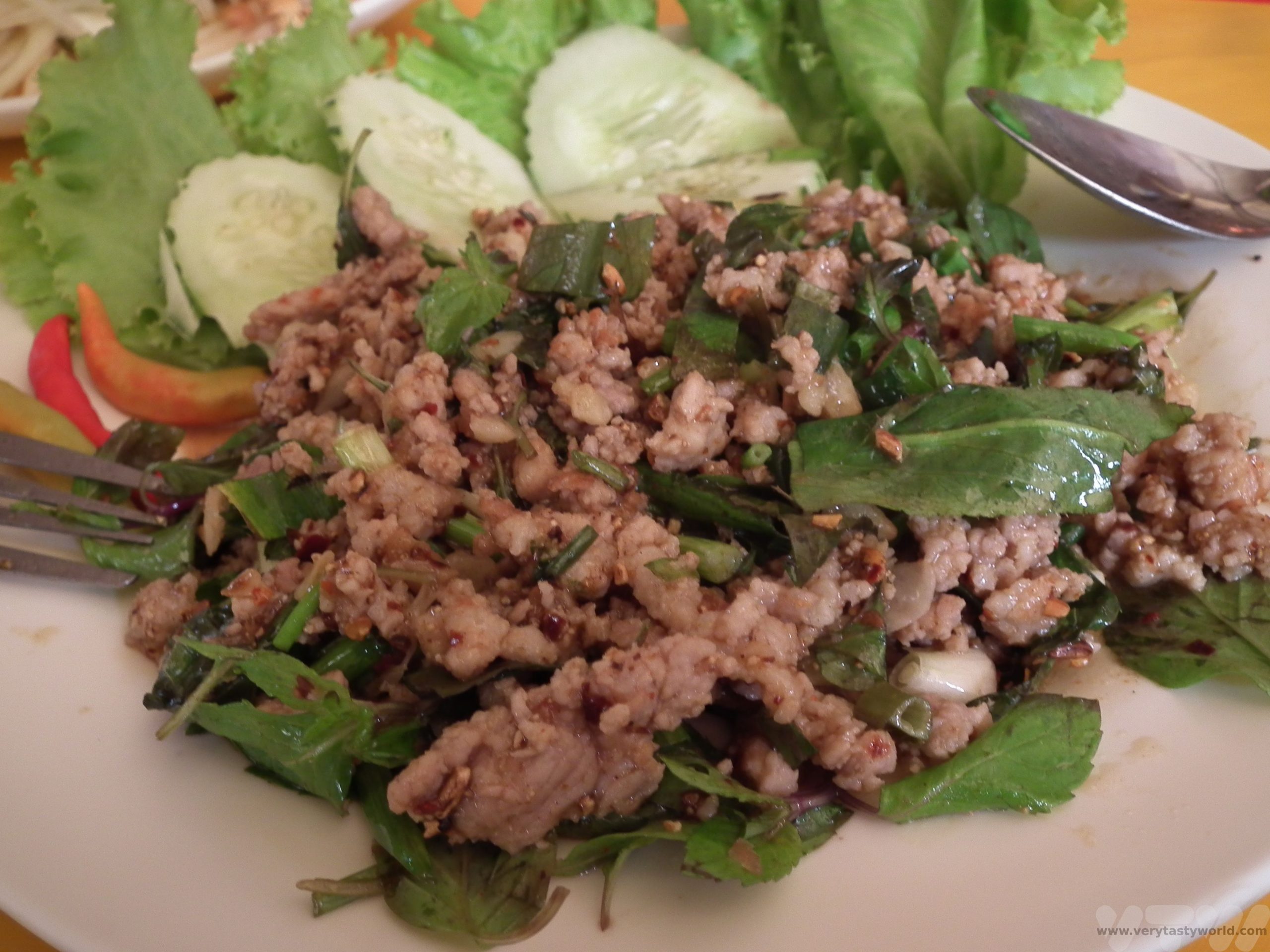Afternoon Tea in Coventry
Everything Stops for Tea
Afternoon tea is a very British tradition. The British are, of course, well known for their love of tea.
Tea to the English is really a picnic indoors.
-Alice Walker
Afternoon tea originated in the early 19th Century. It was a time when tea drinking was becoming extremely popular amongst all classes but this was also a time when people tended only to have two meals a day: breakfast and supper. Supper was usually taken around 8pm in the evening which meant that there was an awfully long gap between meals.
Anna Russell, Duchess of Bedford and friend of Queen Victoria, invented the afternoon tea. She had decided that the gap between breakfast and supper was just too long (who can help but agree?) and she would start feeling peckish mid-afternoon. She solved this problem in around 1840 by indulging in a cup of tea and a snack at around 4pm. The tea was generally accompanied by bread and butter and some cake. She invited her friends to join her and soon enough afternoon tea became highly popular amongst high society.
The elements comprising afternoon tea evolved over the years. Fortunately sandwiches had already been invented by the Earl of Sandwich, who had discovered the joys of putting something delicious between two slices of bread in 1762, so afternoon tea could accommodate this as a menu item as well.
Scone? Or Scone?
Scones are also considered to be an essential element of afternoon tea these days. These are traditionally sweet scones, eaten with jam and clotted cream. The scones are presented whole: they should be cut in half and the jam/cream or cream/jam combination applied copiously. Never reveal whether you put the jam or the cream onto the scone first to anyone from the West Country. Devon and Cornish folk have very different ideas about the order in which the scone should be adorned. We politely suggest that they taste wonderful either way.
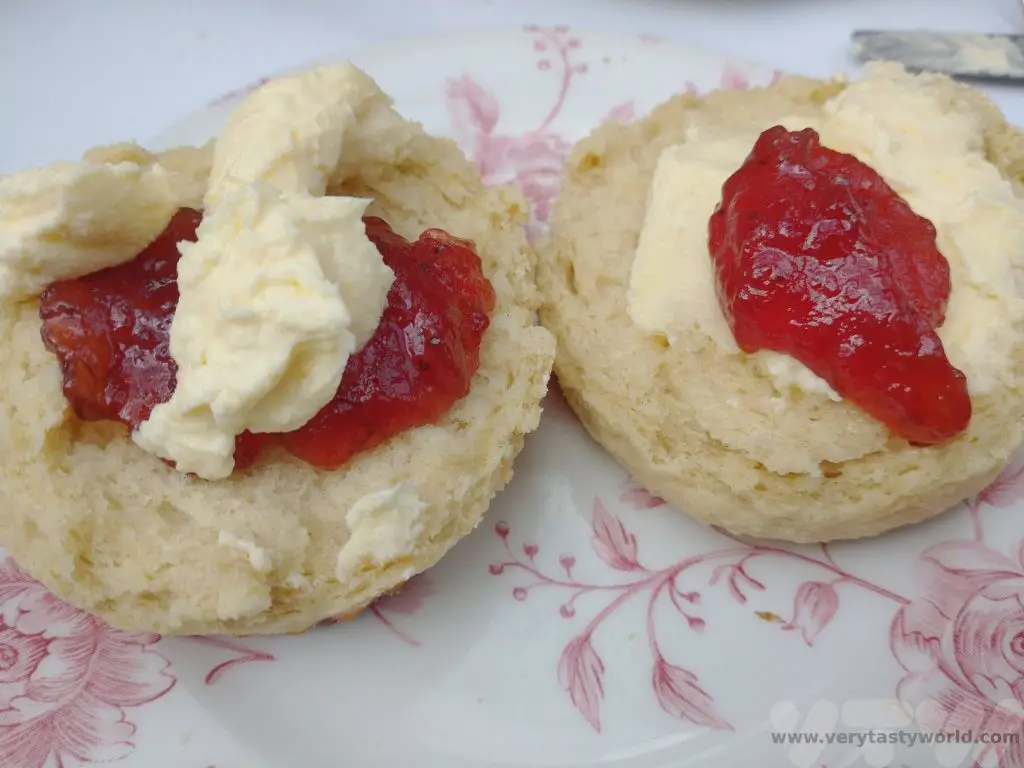
As well as disputes about how to eat scones the English also disagree on how to pronounce the word – is it scone to rhyme with ‘gone’ or scone to rhyme with ‘stone’? We’re originally from the south of England so both use the former but have regular arguments with friends about the true pronunciation.
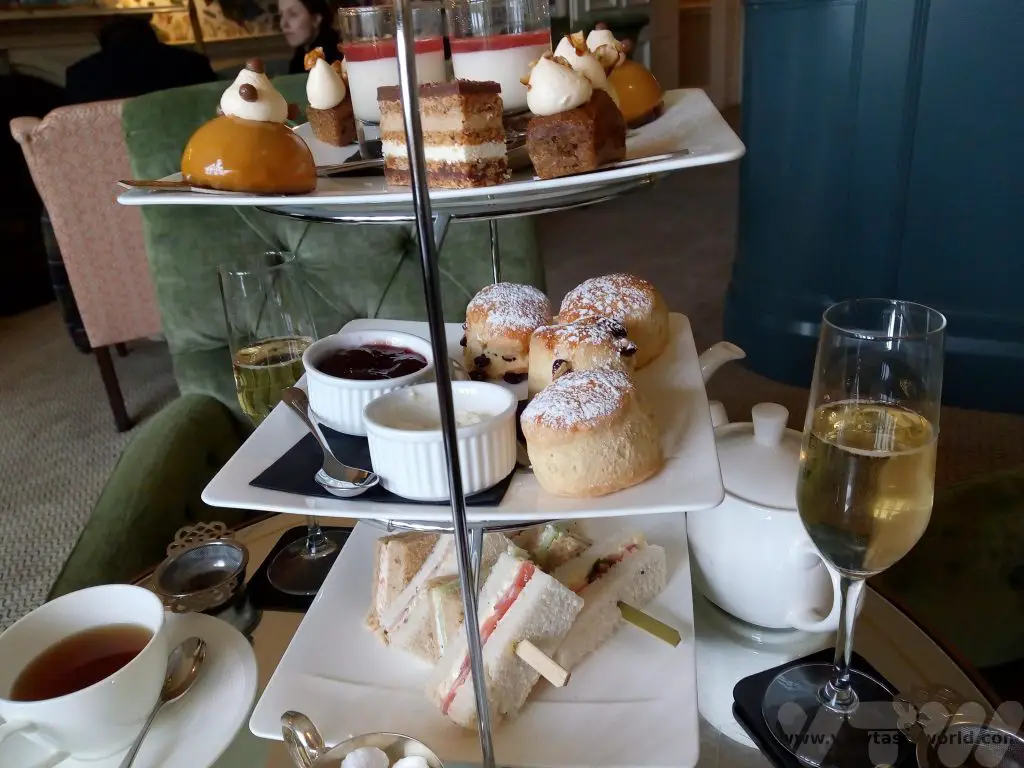
How To Enjoy Traditional Afternoon Tea
The quintessential afternoon tea comprises a selection of sandwiches, a couple of scones served with clotted cream and jam and a variety of miniature pastries, cakes or sweet treats. Served with a cup of tea. This might simply be an ordinary cuppa but it is more likely that you would be offered some speciality teas or herbal infusions. Coffee and hot chocolate are usually available for non-tea-drinkers. The more indulgent modern afternoon teas may also offer a tall glass of fizz; Champagne (preferably) or Prosecco to accompany the treats.
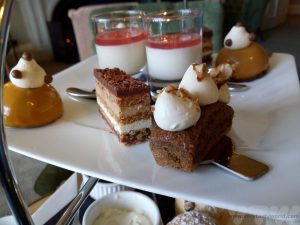
Etiquette suggests that you start with the savouries on the bottom tier. Scones should be eaten next, then finish with the sweet treats on the top tier.
This particular tea had four pastries each, including a fruity pannacotta and layered cake.
Almost a meal in itself, afternoon tea is refined and decadent.
Afternoon Tea in Coventry – Coombe Abbey Country Park
Coombe Abbey and Country Park is located a few kilometres outside Coventry city centre and is a delightful place to not only enjoy afternoon tea but also to spend time in the extensive 500 acre park, woodlands and gardens.
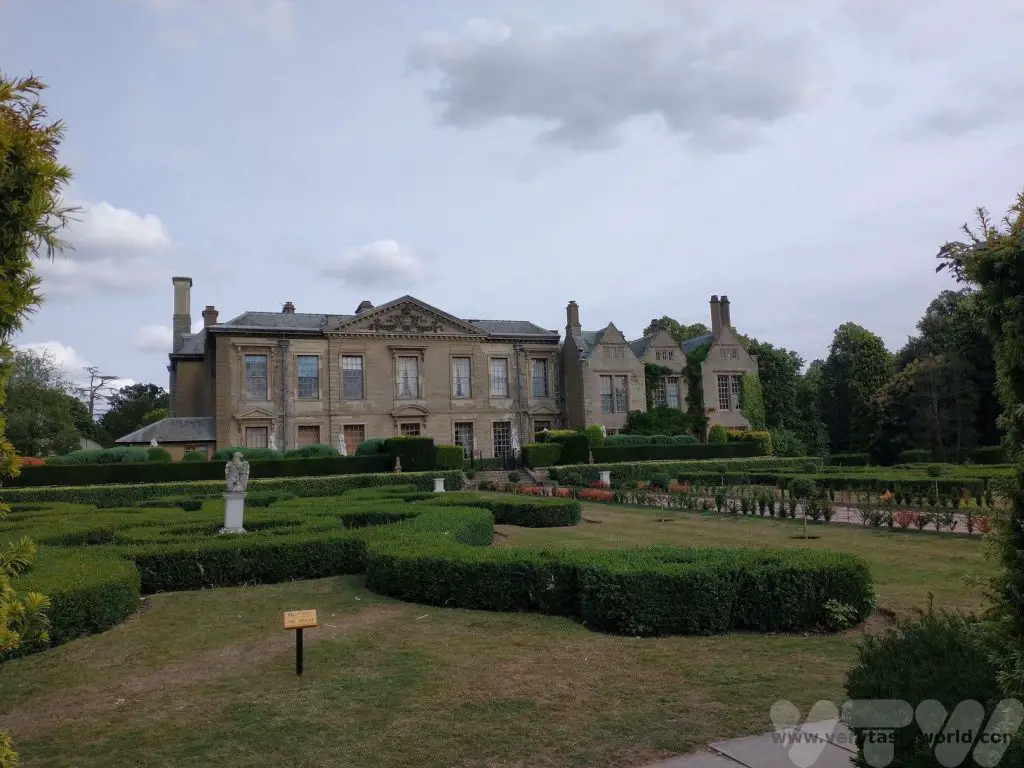
It’s possible to drive to Coombe Abbey. It takes around 15 minutes from Coventry city centre and parking fees are payable. It is a very popular place to visit at weekends and bank holidays, so sometimes the car park can be full. Alternatively you can catch the bus from Coventry’s central Pool Meadow bus station. The No 53 bus will get you there in about 40 minutes.
Coombe Abbey was originally a 12th-century Cistercian abbey that has now been converted into a hotel.
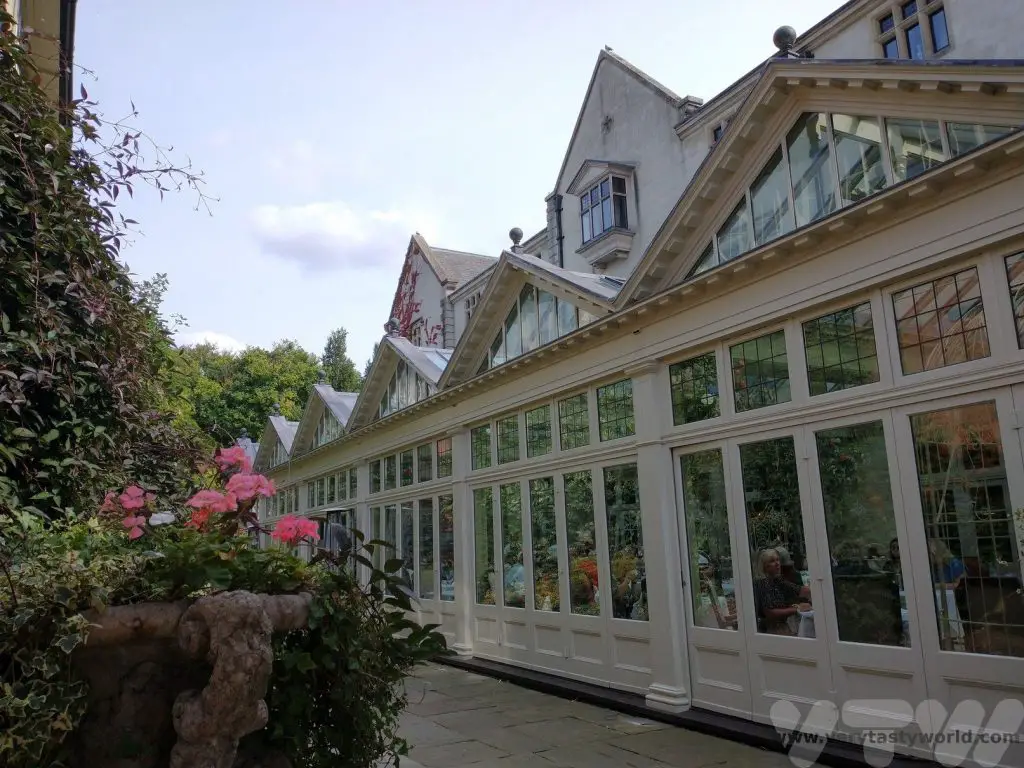
Afternoon tea is held in a lovely garden room, a light and airy space.
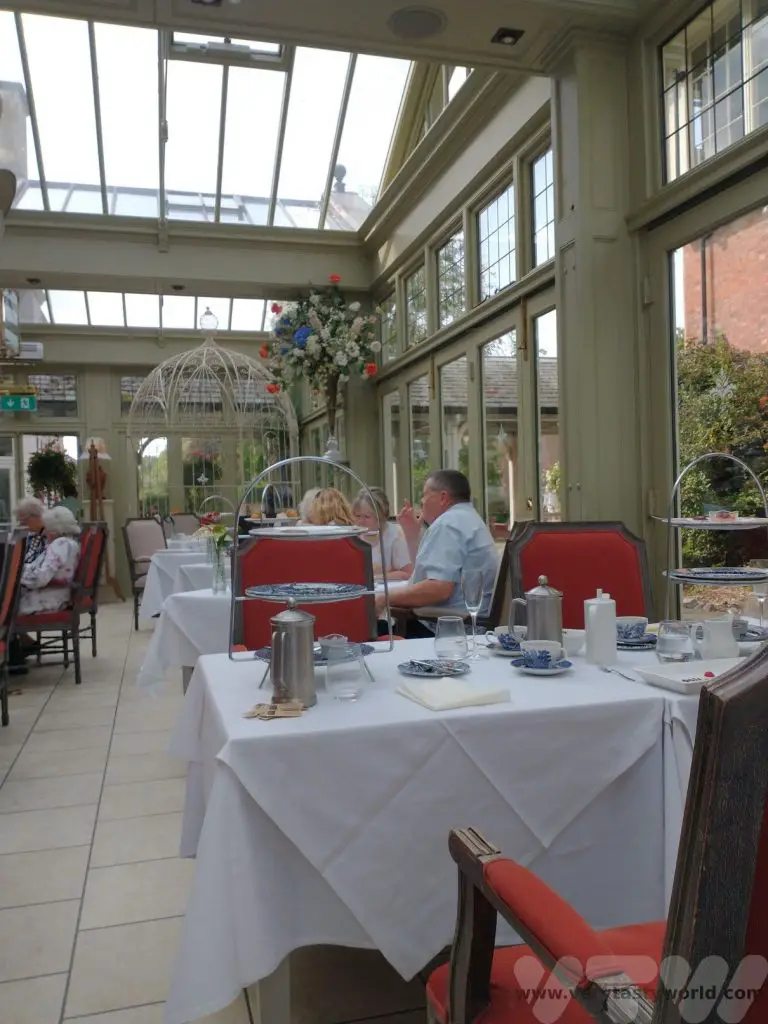
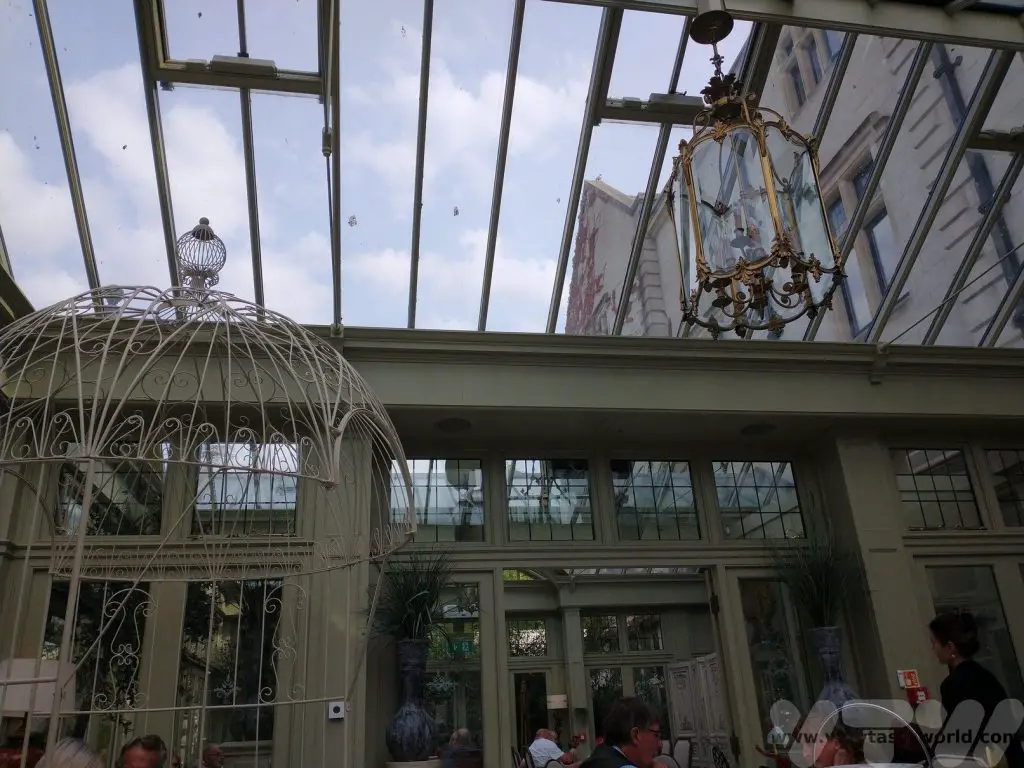
There are a variety of options available from traditional afternoon tea to savoury offerings. There is a wide variety of teas on offer – from great quality black tea to some more unusual options such as gin and tonic tea. If you’re feeling decadent, a glass of bubbly is also available.
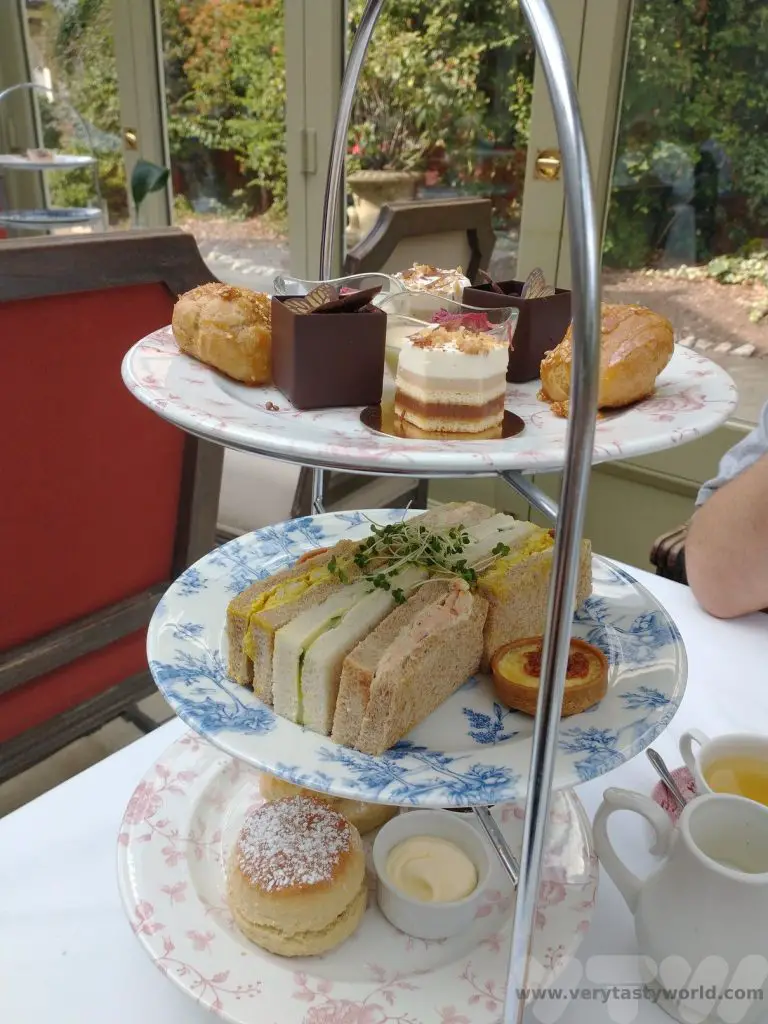
The petit fours are beautifully made.
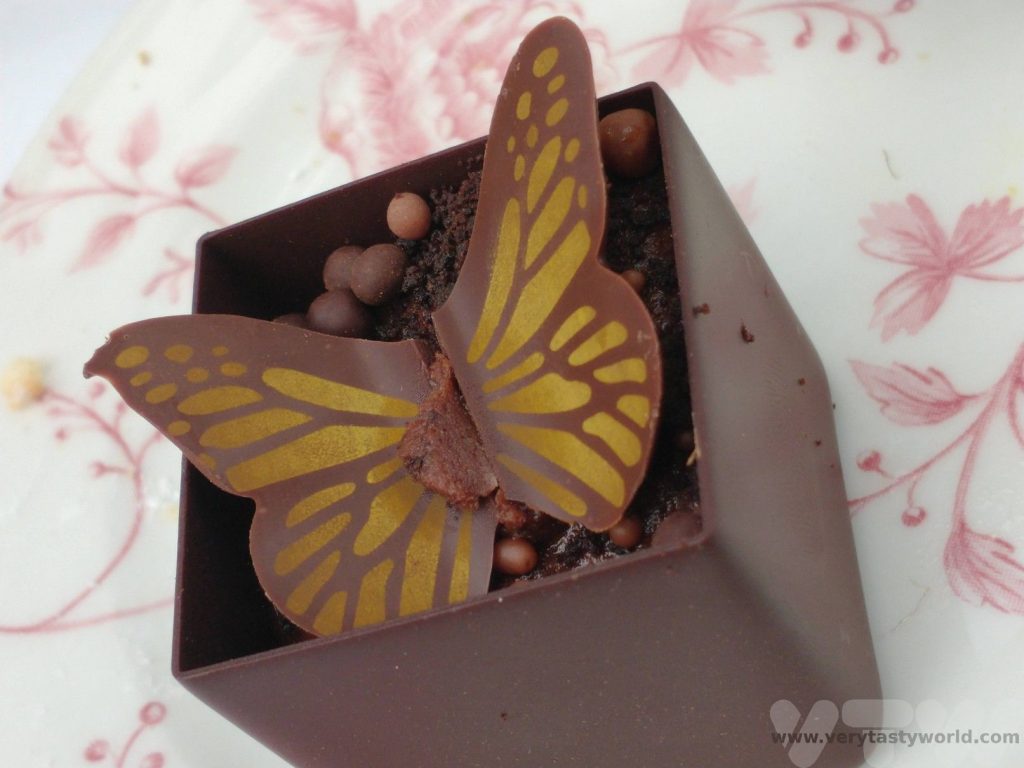
Prices range from £20 to £47 (July 2023) depending on the decadence of your choice of tea and whether you wish to indulge in fizz. The prices also vary depending on whether you are visiting during the week or at the weekend (weekend prices are higher). Afternoon teas at Coombe Abbey are very popular so booking is essential.
Other Things to Do In The Area
The grounds of the country park are delightful for walking in. There are several lakes and an extensive woodland to explore.
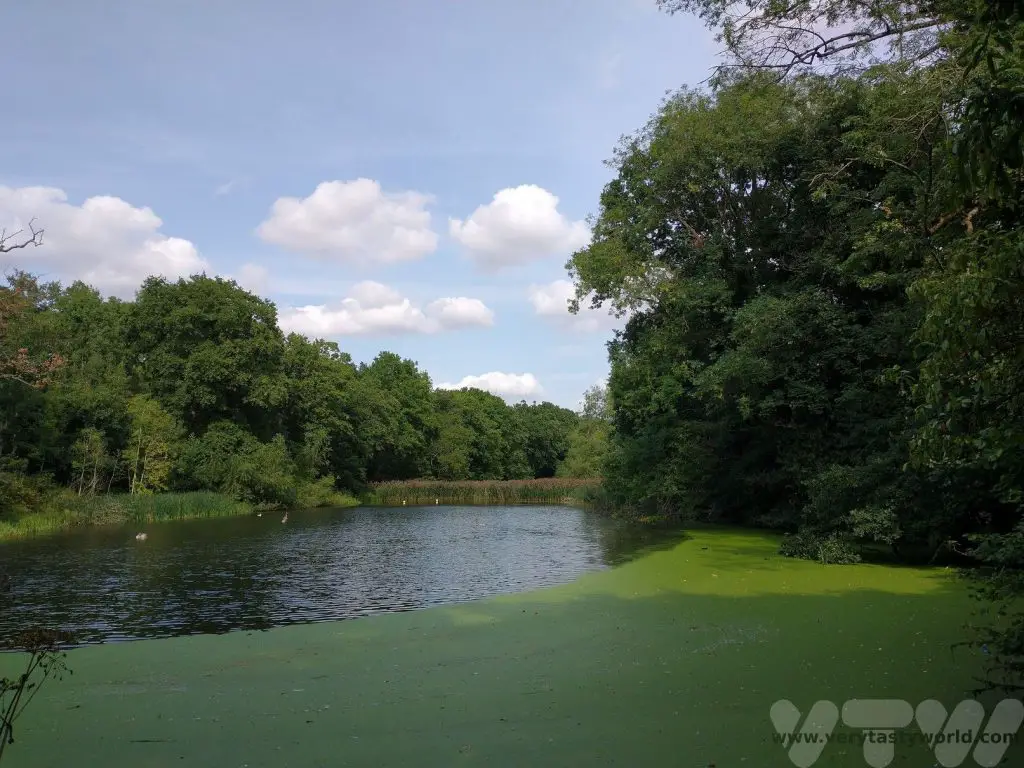
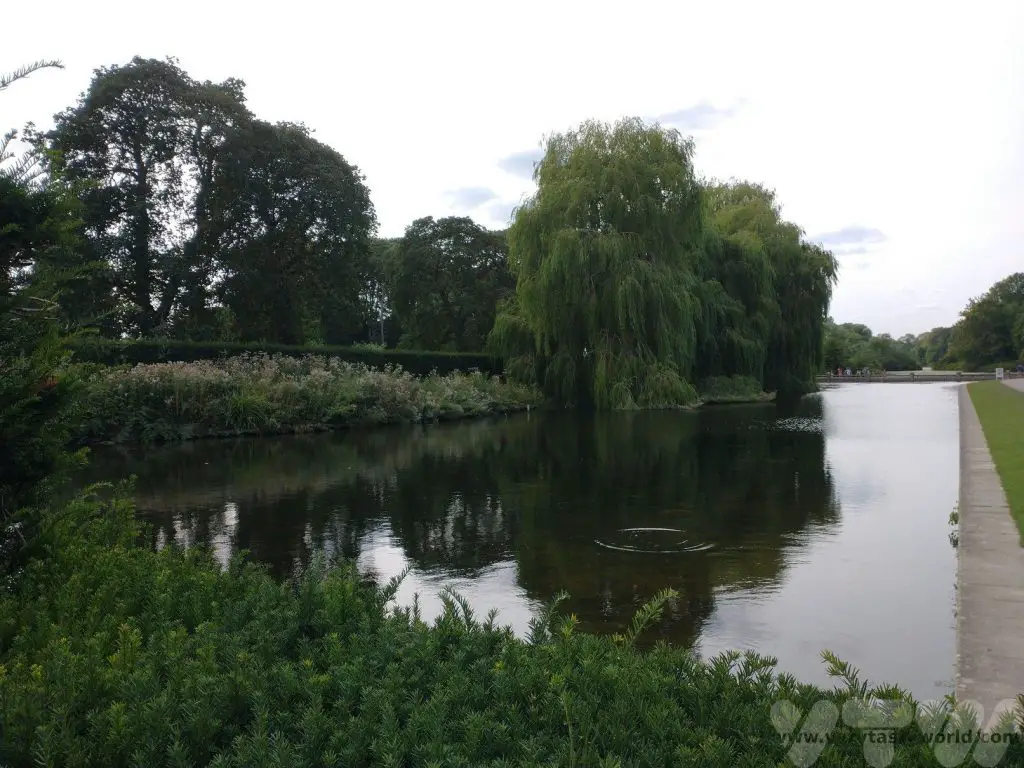
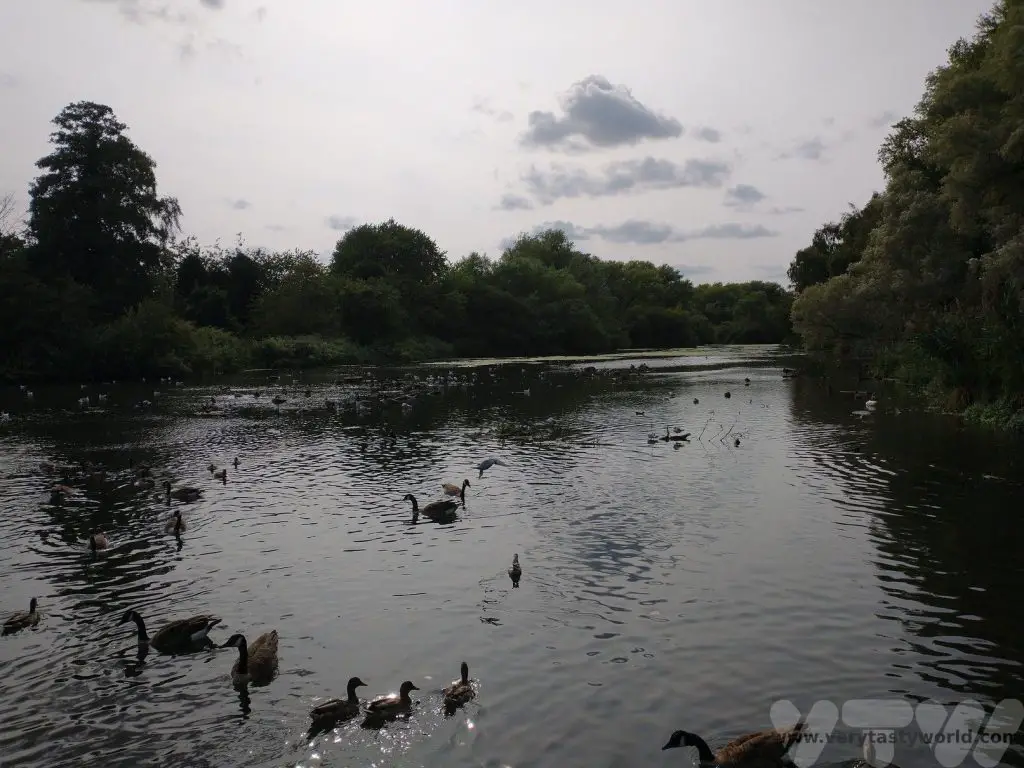
If you are feeling adventurous there is also a Go Ape facility where you can exercise your inner child and go climbing in the treetops and enjoy the exhilaration of zip wires and a tarzan swing! (Probably best to enjoy before taking afternoon tea!)
And if you’re still feeling hungry, Coombe Abbey offers mediaeval banquets in the evenings – great food and entertainment guaranteed.
Afternoon Tea in Coventry – Tales of Tea at St Mary’s Guildhall
Recently refurbished, St Mary’s Guildhall is one of the most important surviving guildhalls in the country, dating back to the 1340s.
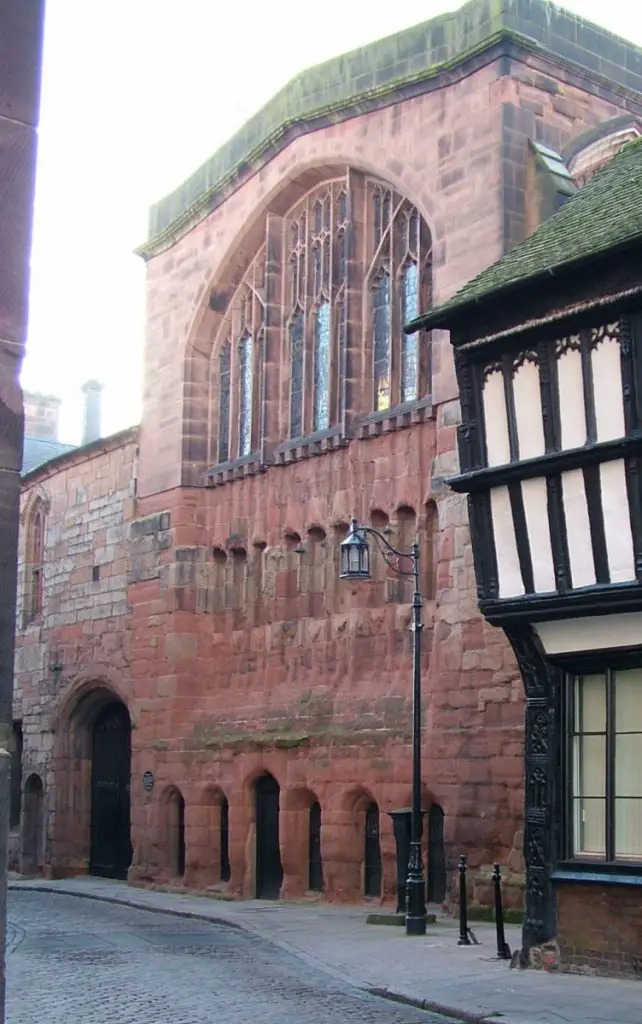
Afternoon tea at Tales of Tea is served daily in St Mary’s undercroft, a delightful and historic setting.
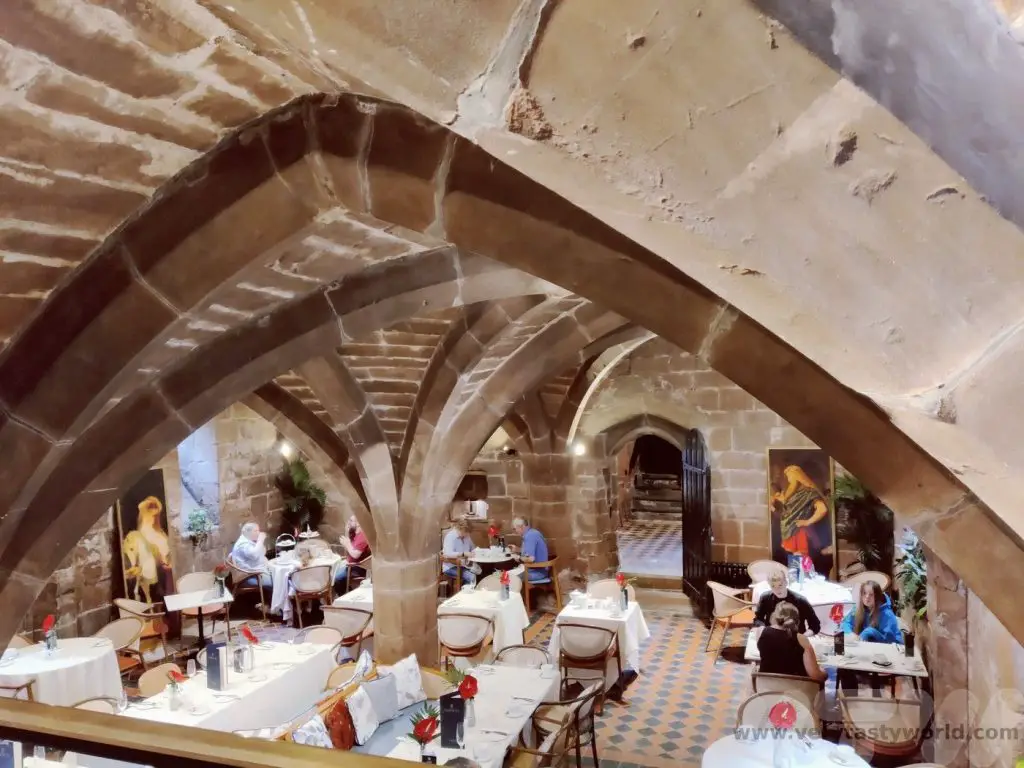
On this occasion we enjoyed a savoury tea. Although afternoon tea is delightful we do sometimes find that by the time you have eaten the scones and the first of the petit fours there is a bit of a sugar overload.
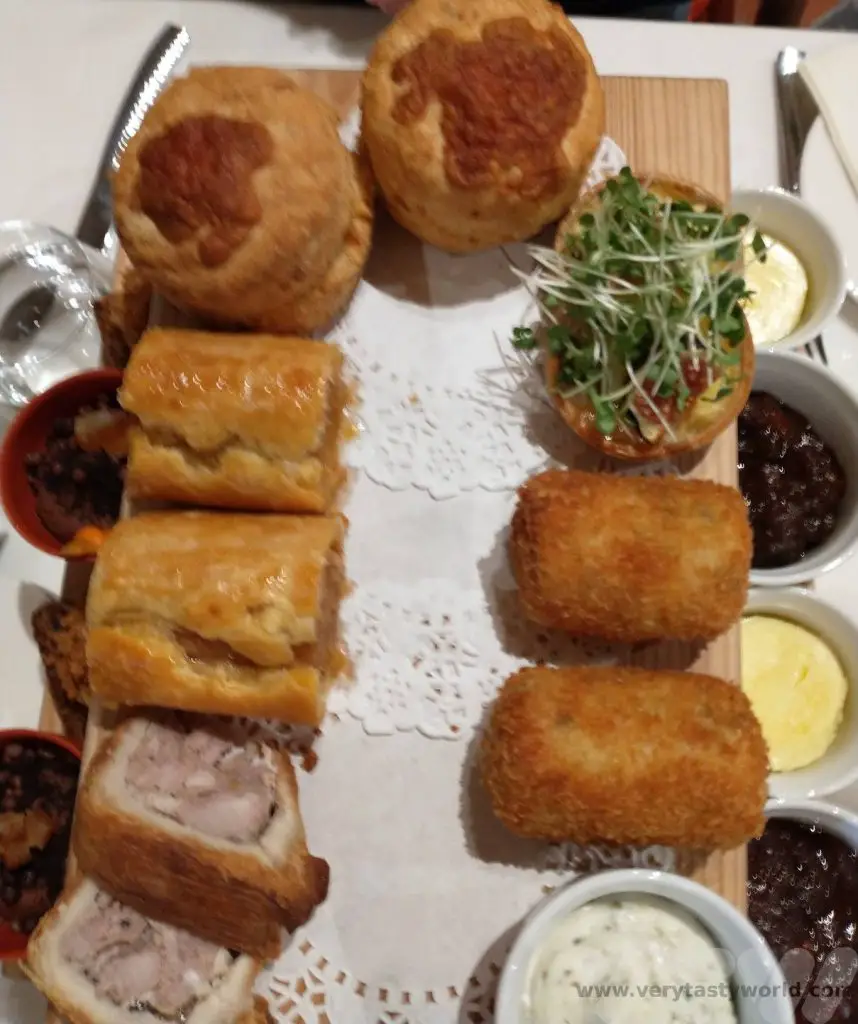
The menu does vary regularly but we enjoyed sausage rolls, pork pies, haddock croquettes, mini quiches and cheese scones amongst other savoury delights
And just a little sweetness with an edible flowerpot filled with mousse and dark chocolate ‘soil’.
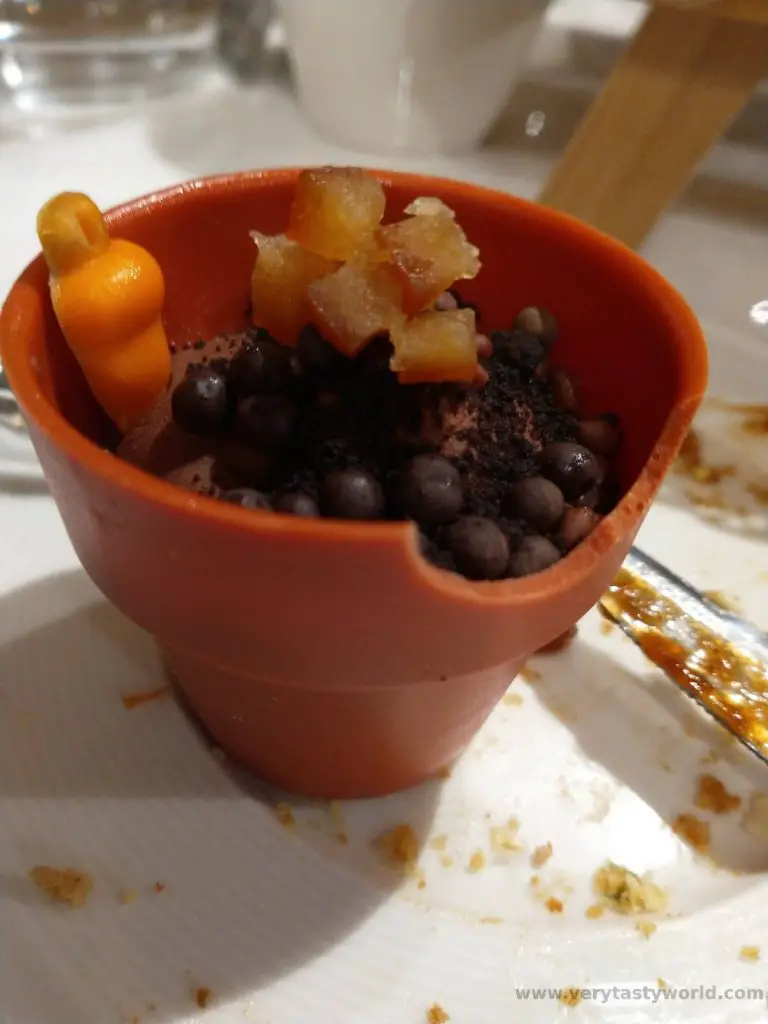
Tales of Tea is very popular so we recommend making a booking. Prices range from £25-£30 depending on whether you want a sweet or savoury tea. (July 2023) The undercroft becomes a fine dining restaurant in the evening.
Other Things to Do In The Area
St Mary’s Guildhall itself is definitely worth visiting so make sure you pop across the atrium from the undercroft.
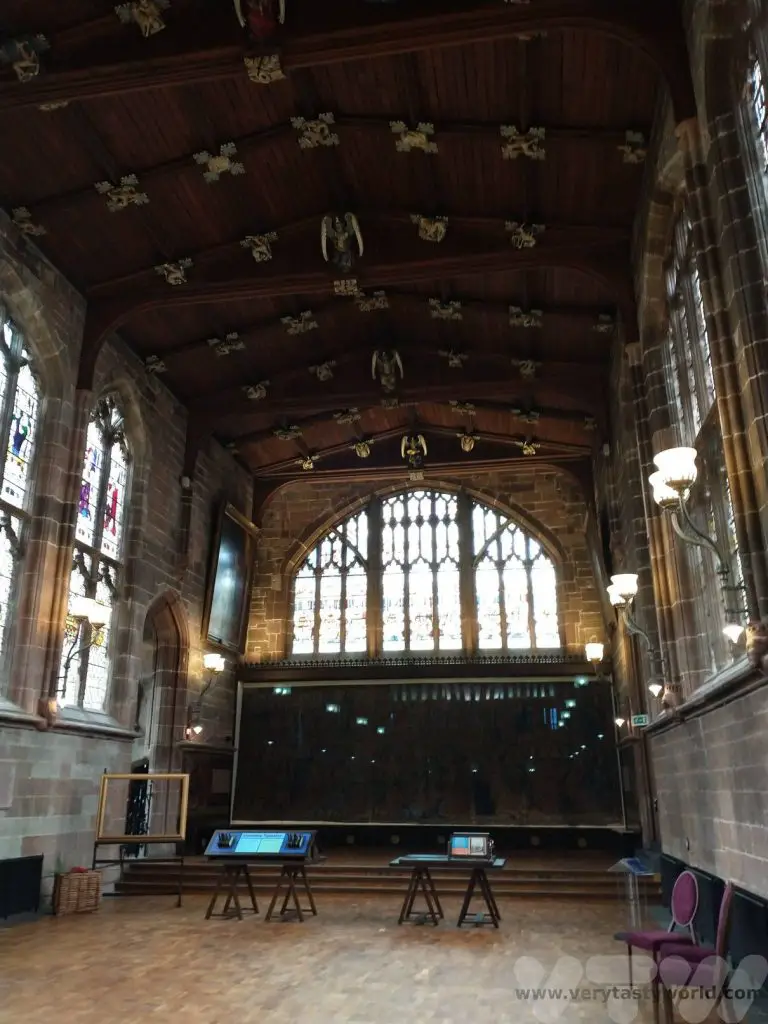
It boasts the England’s oldest mediaeval tapestry, a remarkable work that was woven in its original place – it is over 500 years old.
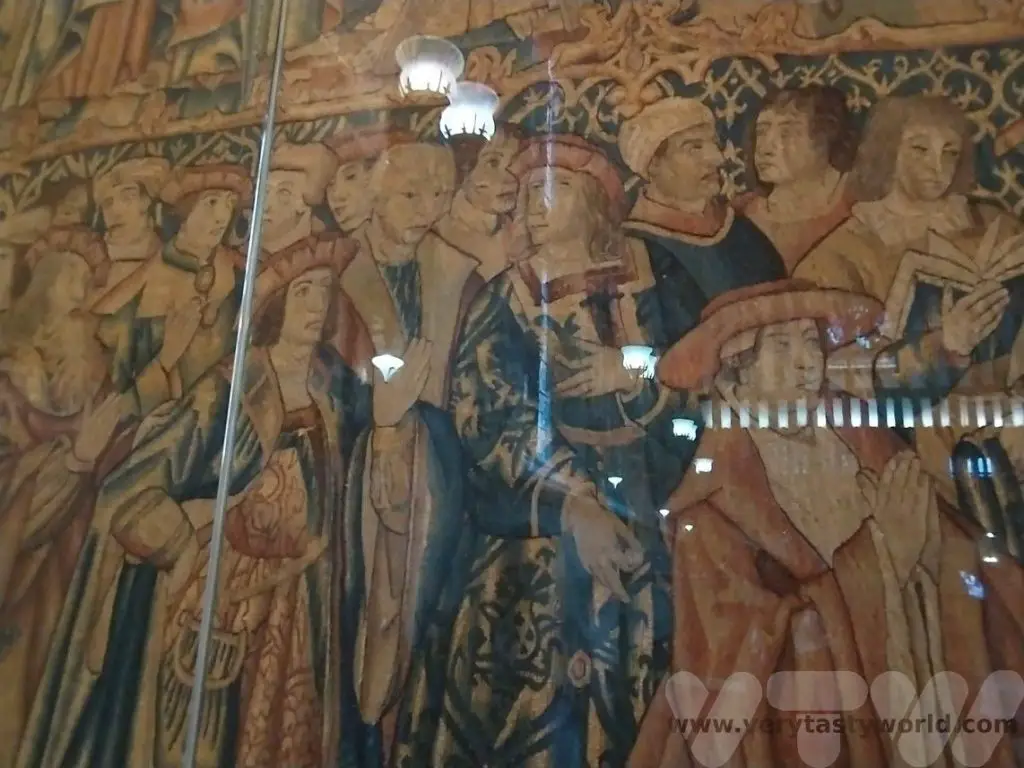
A recent refurbishment has revealed a mediaeval kitchen now restored to its former glory.
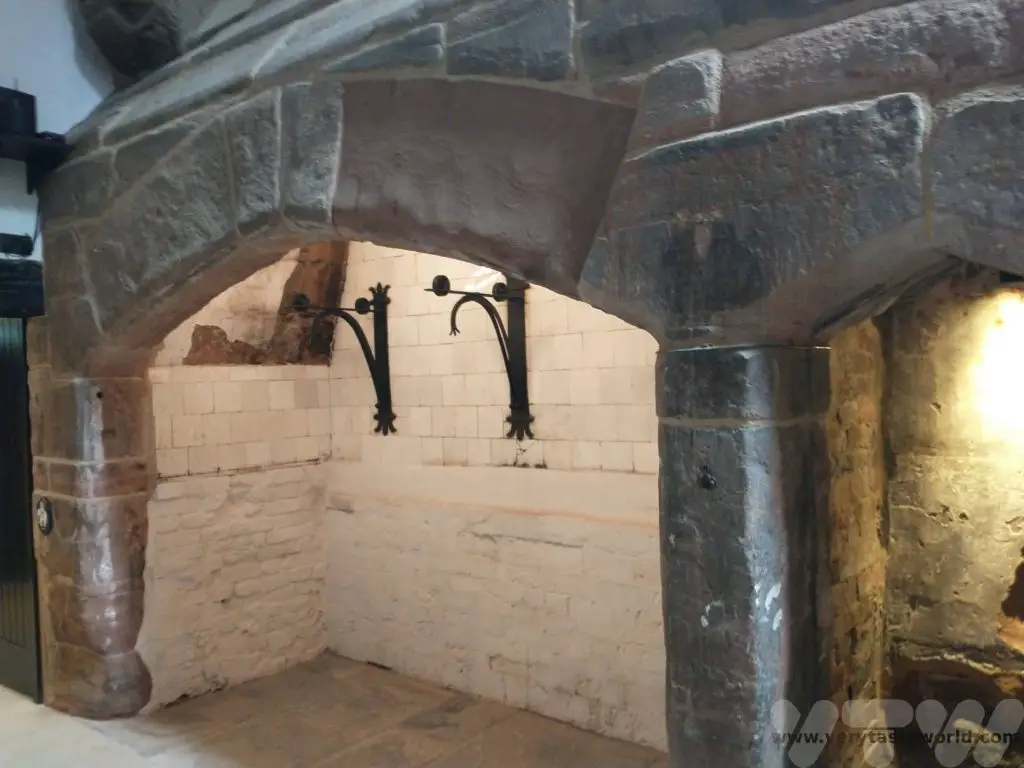
The Guildhall is located next to the ruins of Coventry’s cathedral which itself has a fascinating history. St Michael’s cathedral was constructed in the 15th Century but destroyed in 1941 during the Coventry Blitz in World War 2.

A new cathedral was built alongside the ruins of the old. Both are very much living spaces – both for worship as well as art, music and cultural events that are held throughout the year.
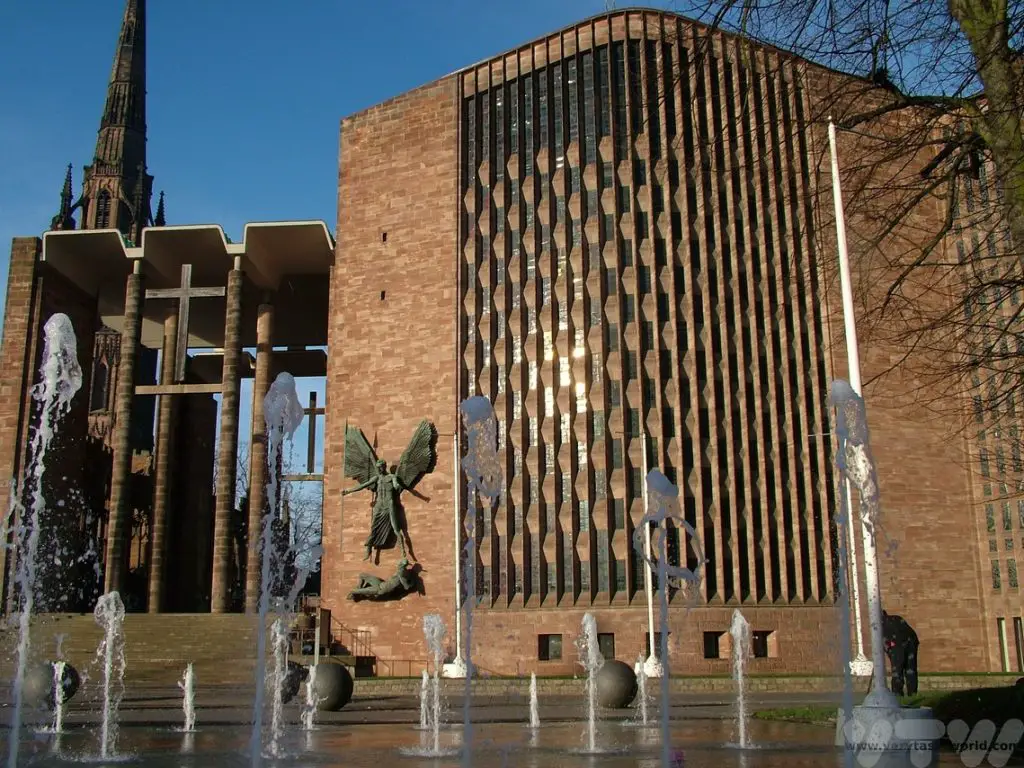
The Herbert Museum and Art Gallery is a 2 minute walk away. It hosts multiple free art exhibitions several times a year and has a permanent exhibition space on the ground floor showcasing Coventry’s history.
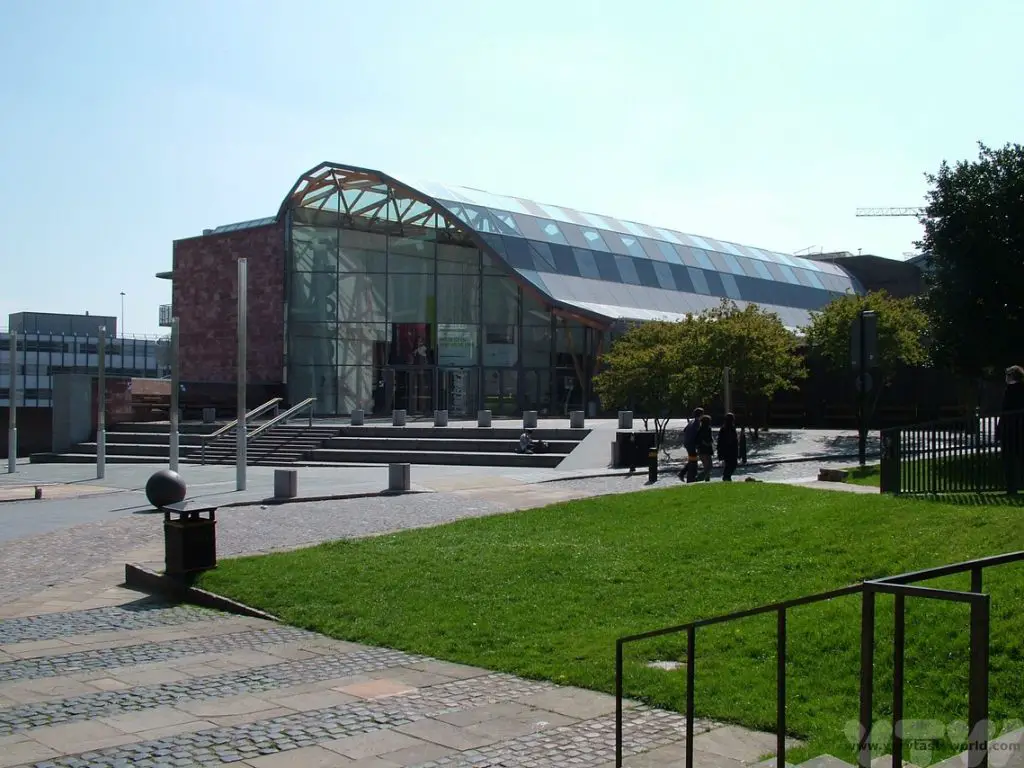
Afternoon Tea in Coventry – Telegraph Hotel
Founded in 1891 as The Midland Daily Telegraph, but with a name change in 1941, The Coventry Evening Telegraph was the city’s first daily newspaper. In times gone by it was a tabloid paper located in a large building in the city centre which housed enormous printing presses. But times have changed and the printing presses are no longer needed, so staff have relocated to the Canal Basin in Coventry. The site was opened up to the public in 2017 and temporarily hosted local art exhibitions.
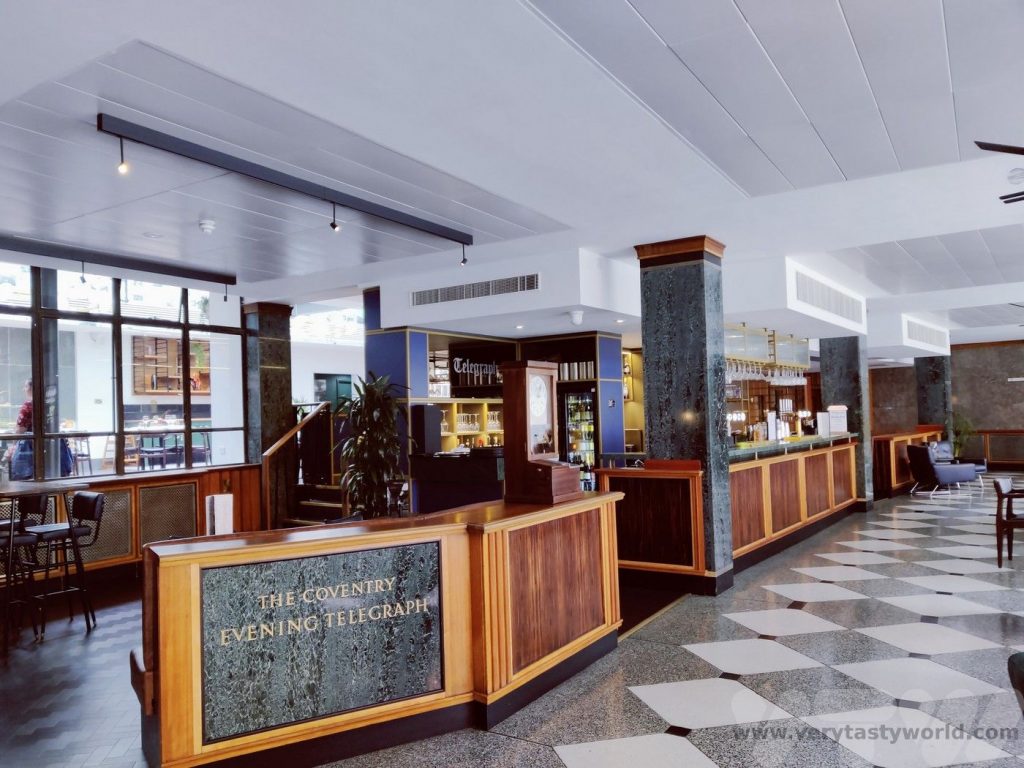
The building has now been converted into a hotel but the decor very much reflects its heritage. Afternoon tea is available. Currently on offer, afternoon tea for two people, with a glass of fizz costs £39.50 (July 2023).
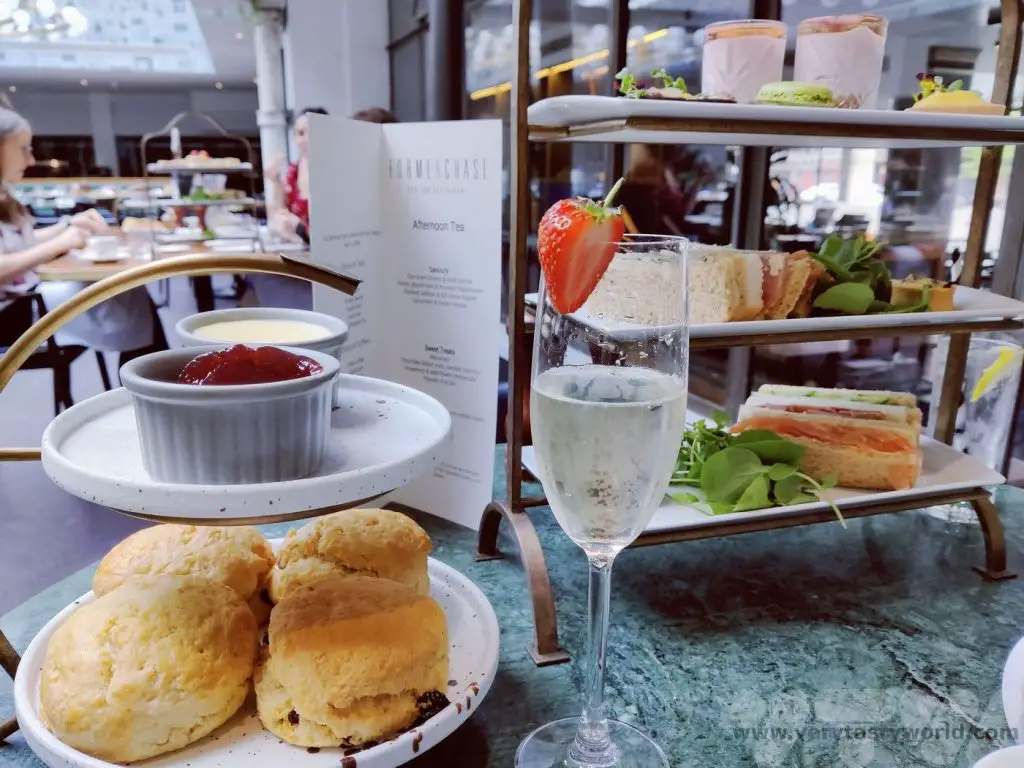
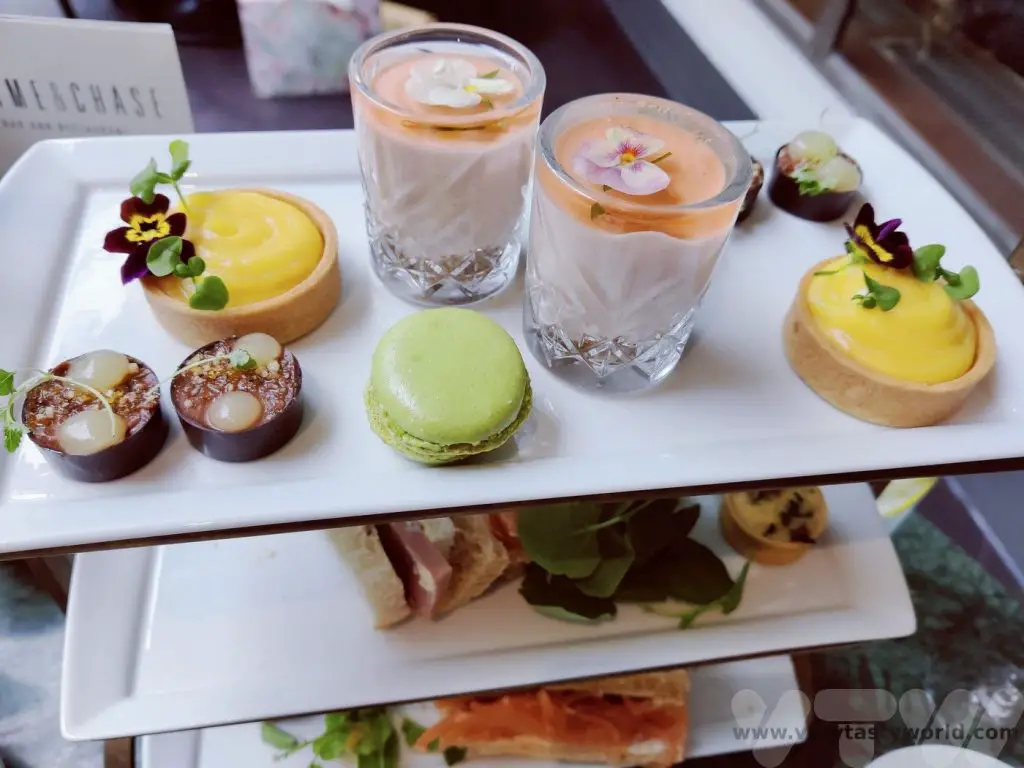
The afternoon tea is more traditional but generous and delicious. The sweet treats included pistachio macarons, chocolate delice with yuzu gel, passion fruit tarts and a strawberry and elderflower cheesecake. The tea was so filling we had to ask for a box to take some scones home with us.
Other Things To Do In The Area
Coventry Transport Museum is around a two minute walk away. It’s a great museum to visit, even if you’re not particularly interested in cars. Coventry was once the city of motor manufacturing and the museum houses a huge number of vehicles from some of the earliest vehicles to land-speed-record breakers.
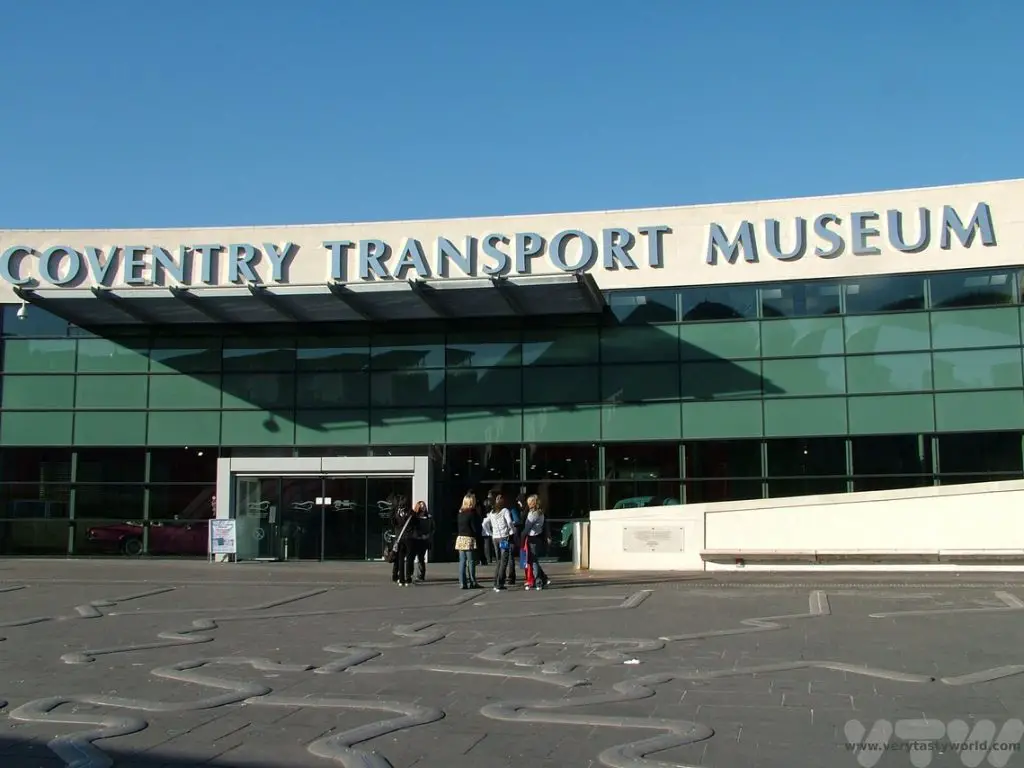
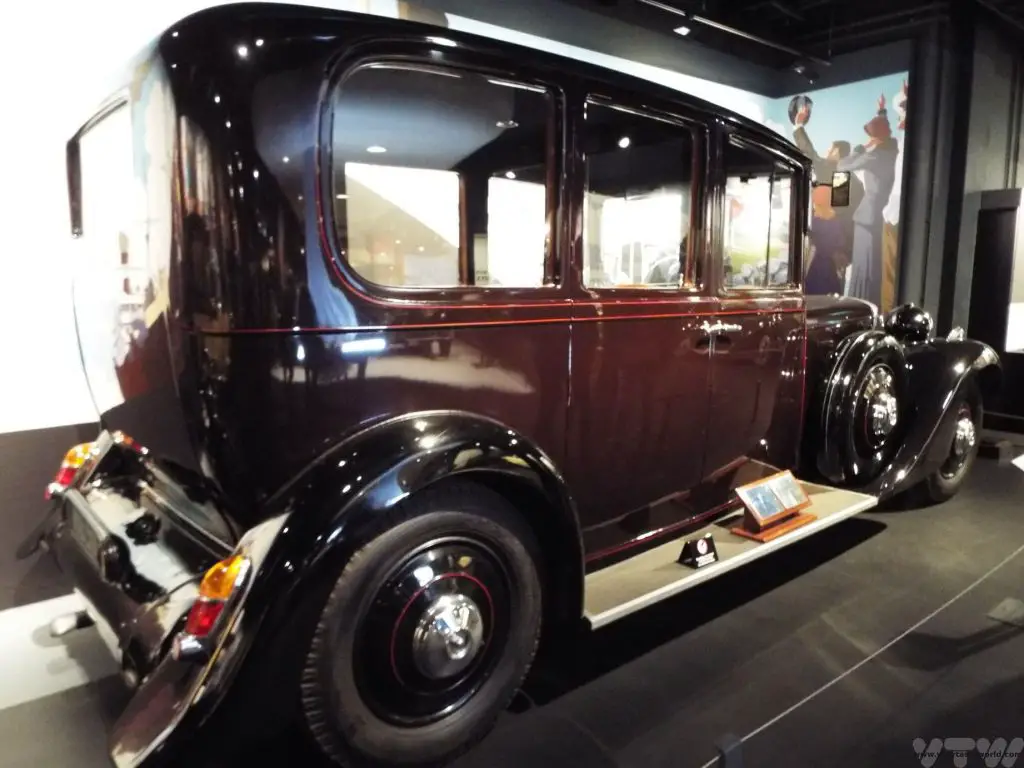
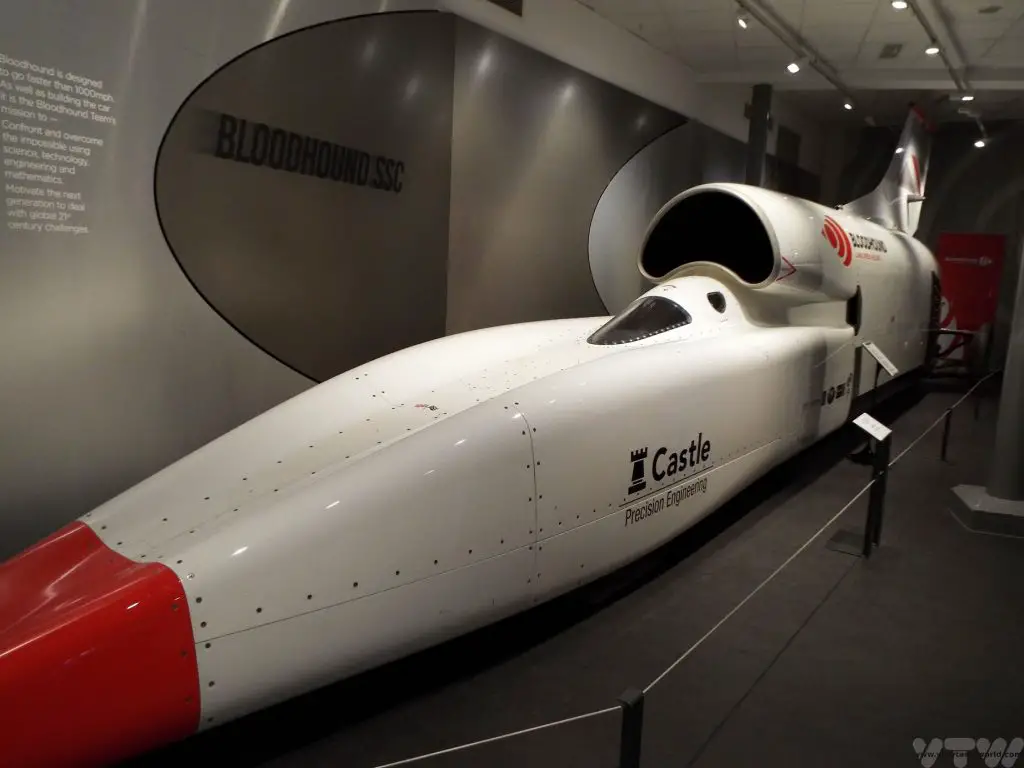
Related Posts You May Enjoy

A Day in Ronda
Ronda in Andalusia is a charming place to visit. It is most famous for being a town split in two – located on either side of a deep chasm, El Tajo, through which the Guadalevín River flows. It is a magnet for daytrippers – at just 60km from Marbella and 100km from Malaga, both on the Costa del Sol, and around 128km from the wonderful city of Seville. Here’s our guide for spending a day in Ronda.
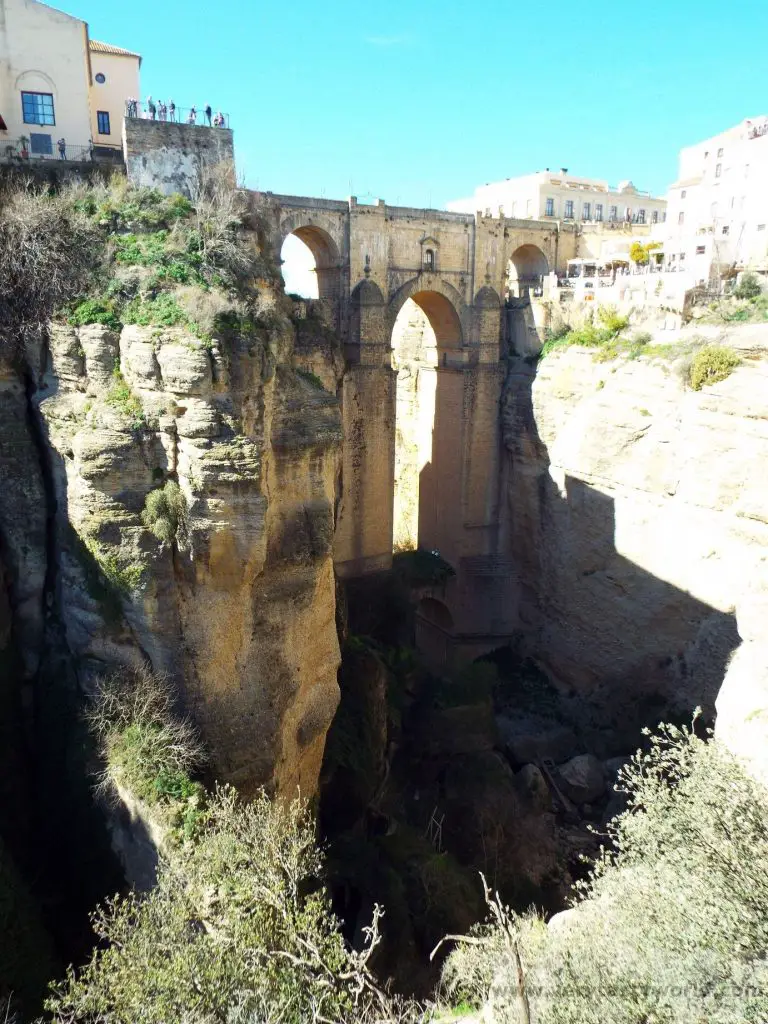
History of Ronda
Ronda is one of the oldest towns in Spain with settlements known to have dated from the Neolithic period. Celtic people arrived in the 6th Century BCE, naming the town Arunda. It was invaded by the Romans and became an important city in the region but fell into decline following the fall of the Roman Empire.
When the Moors, led by Prince Musa Ben Nusayr, conquered Spain in 711 the invaders recognised the strategic importance of its location; Ronda flourished as a city once more and became the capital of one of the five districts in Andalusia. The Moorish influence on the buildings remains to this day. Eventually Ronda became a focal point of Christian armies trying to recapture Southern Spain in the early 13th Century and the conquest of Ronda resulted in Christian knights establishing themselves in the city and replacing mosques with churches. By 1570 the city had become a completely Christian town.
It wasn’t until the 17th century that the major bridges were constructed across the town’s mighty gorge. The Old Bridge – Puente Viejo – was built in 1616. And the Puente Nuevo was completed in 1793, part of a series of buildings constructed in the town, including the famous bullring.
The city was occupied by the French in the 19th Century which resulted in hardship for many of the citizens. It is thought that legends of the guerrilla fighters, known as bandaleros, originated during this era. (There is a museum dedicated to bandits in the town.) Similarly, in the 20th Century the city also suffered significantly during the Spanish Civil War. Apparently the chamber above the arch on the main bridge was used as a prison and torture chamber by both sides, some unfortunate prisoners being thrown to the rocks in the gorge.
These days the town is thriving and is a hugely popular with tourists.
Jardines de Cuenca
The Puente Nuevo Bridge is the town’s most popular attraction and it’s easy to see why. It’s possible to walk down to the hillside to the Jardines de Cuenca, a serene set of gardens that you can wander through and get a spectacular view of Puente Nuevo and the gorge. But don’t forget to turn around and get some shots of the lovely countryside. We were lucky to visit in early spring, when the blossom was just coming out.
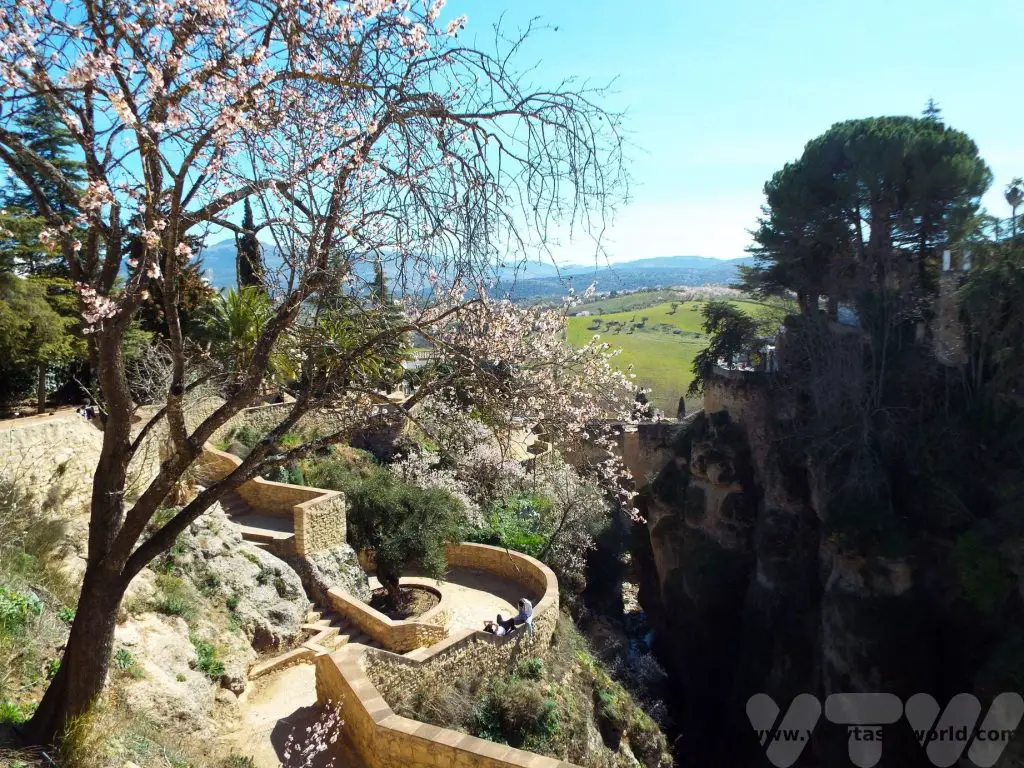
If you want to stay in a hotel or eat at a restaurant with a view of the gorge and bridge, the prices are likely to be higher than in other parts of Ronda. Although the dramatic bridge Puente Nuevo is the main attraction of the town, there are two other bridges in Ronda and both of them are lovely. They are located further down the gorge.
Puente Arabe (also known as the Roman bridge) – is the smallest bridge. Its foundations are Roman but it was rebuilt by the Moors. It is located close to the Arab baths.
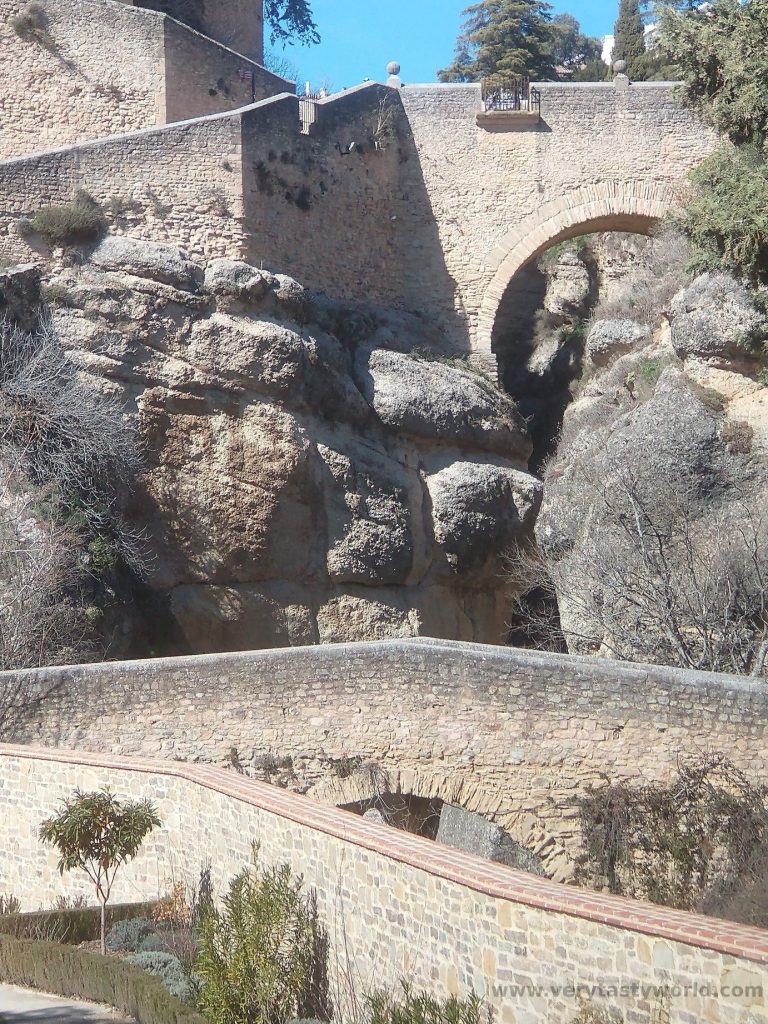
Puente Viejo is the “old bridge”, a single arch bridge constructed in the 16th Century.
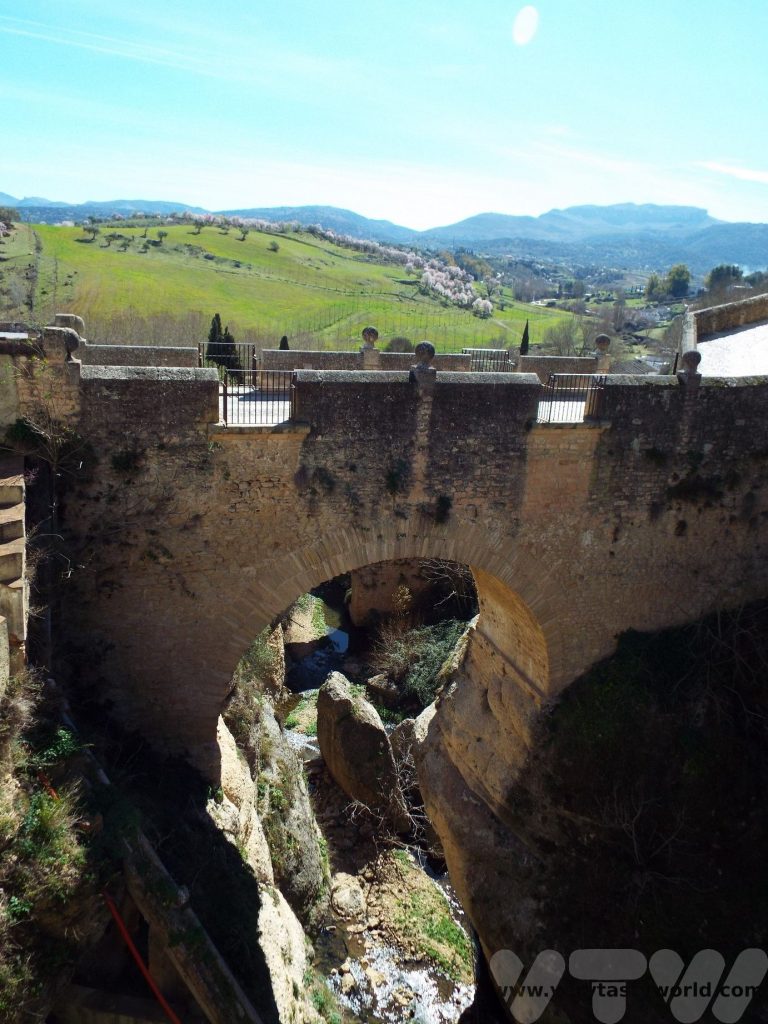
Puente Nuevo is the “new bridge”, even though it was completed over 200 years ago. The interior above the main arch used to be a prison (you can imagine it being very secure!), was briefly a bar and is now a museum dedicated to the history of the bridge.
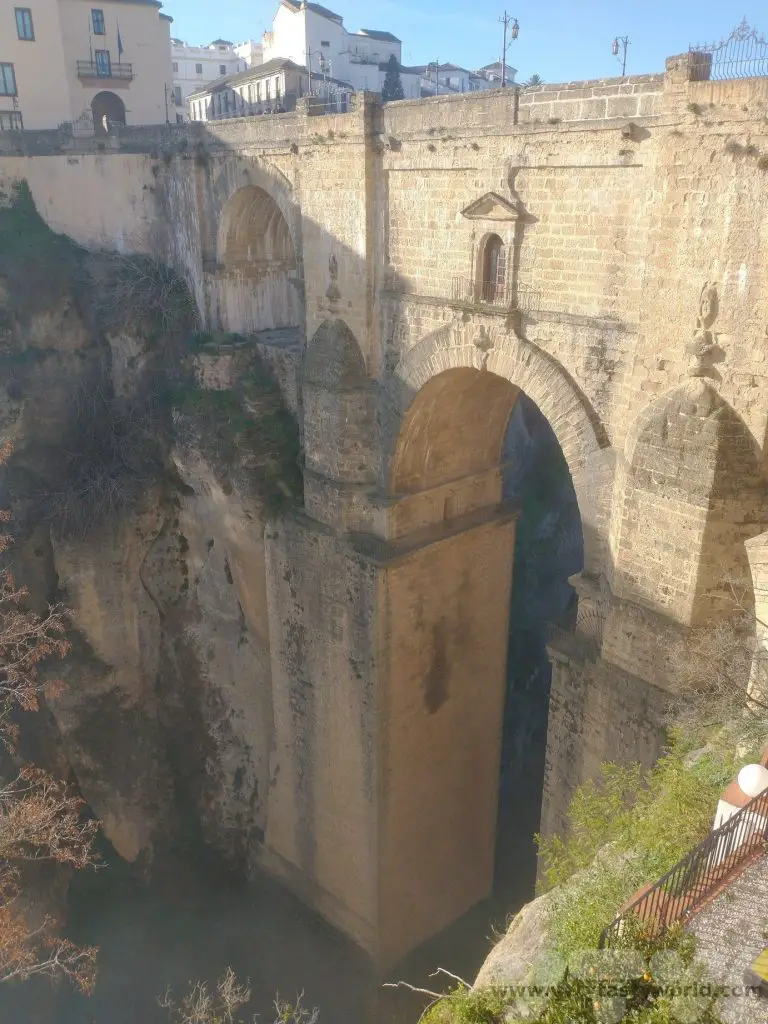
The city walls can easily be reached from the Roman Bridge and it is possible to walk along them to see fantastic views.
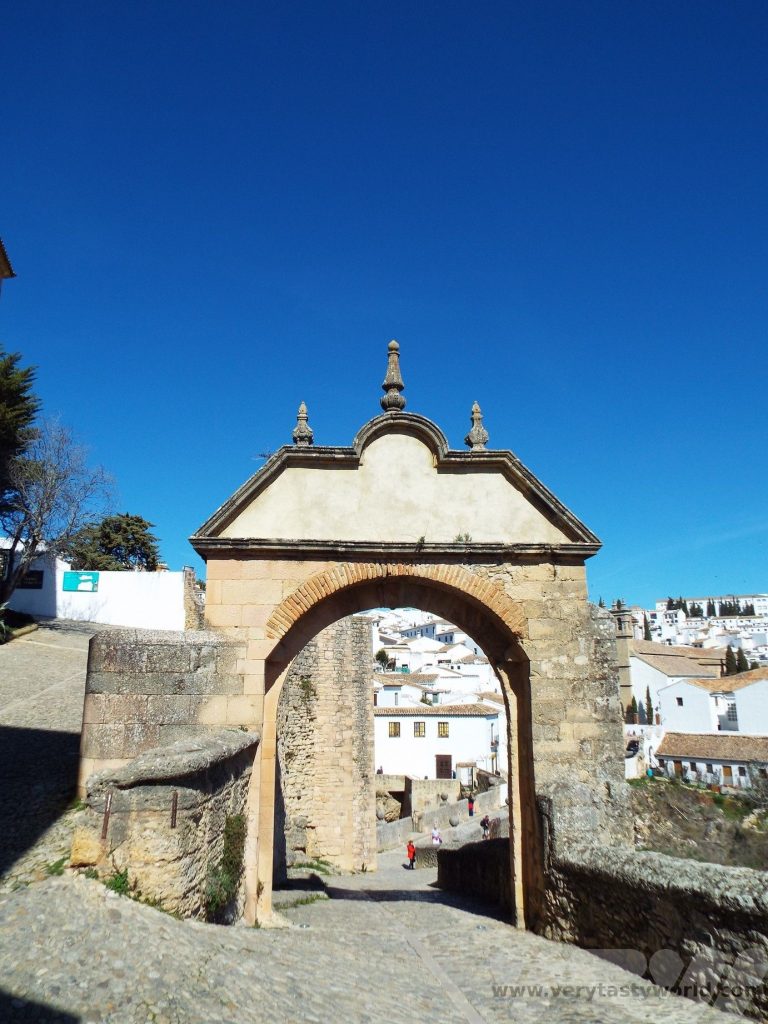
The Arabian Baths
The Arabian Baths are well worth visiting. They are located at the original entrance to Ronda, close to the Roman Bridge. They were built in the 13th Century by the Moors, who were Muslim, and hence placed a very great importance on cleanliness. But they weren’t just for cleaning, they also offered a social space where people would meet as well as bathe.
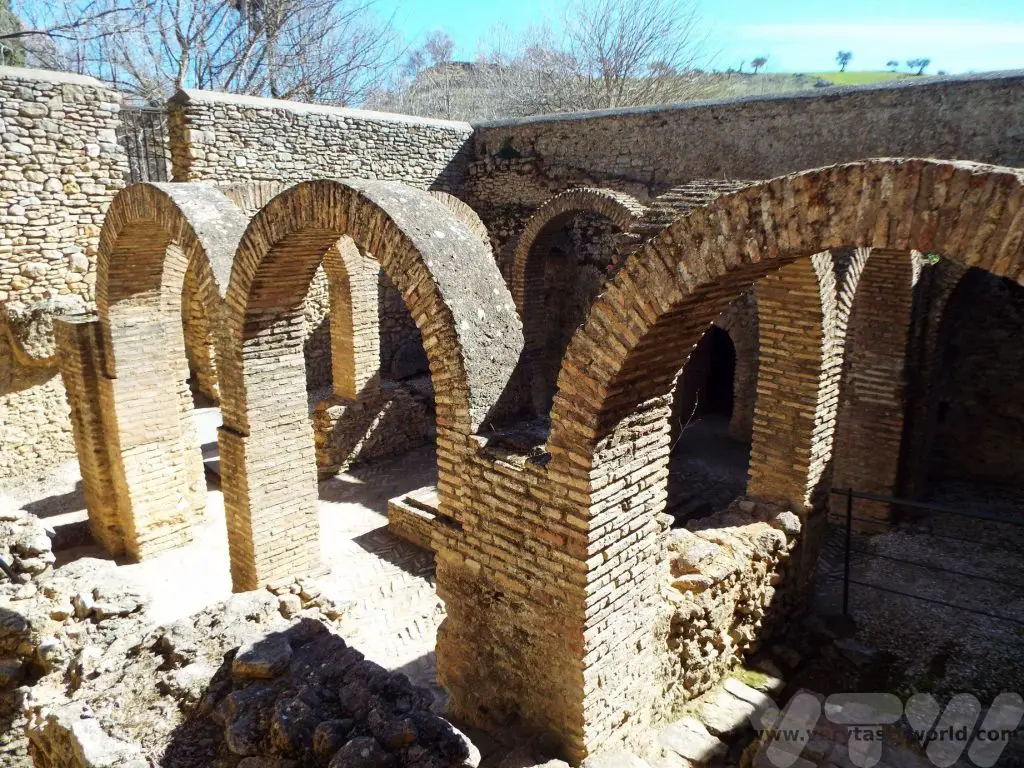
The baths are located next to the river to ensure a constant water supply, and were constructed partially underground in order to control temperatures. There are many similarities with the design of Roman baths.
The baths here are remarkably well preserved (in fact they are considered to be the best in Spain) and it is possible to visit the cold, warm and hot bathing rooms as well as some of the sanitary facilities. There is a central room with vaulted ceilings and wonderful star shaped skylights.
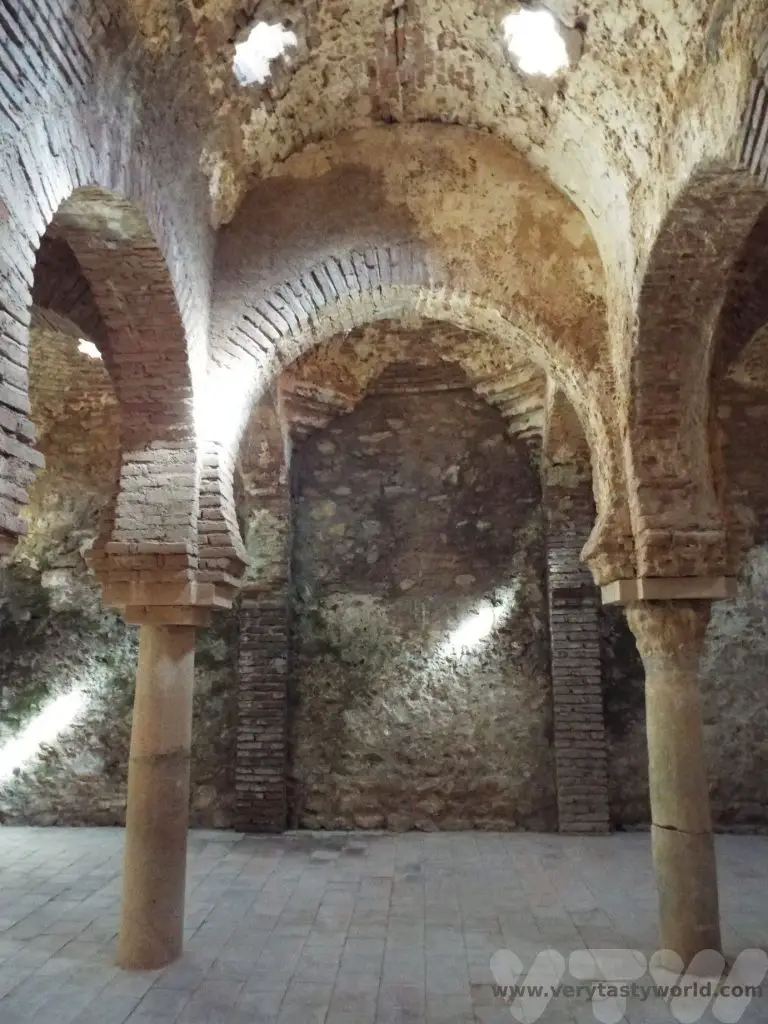
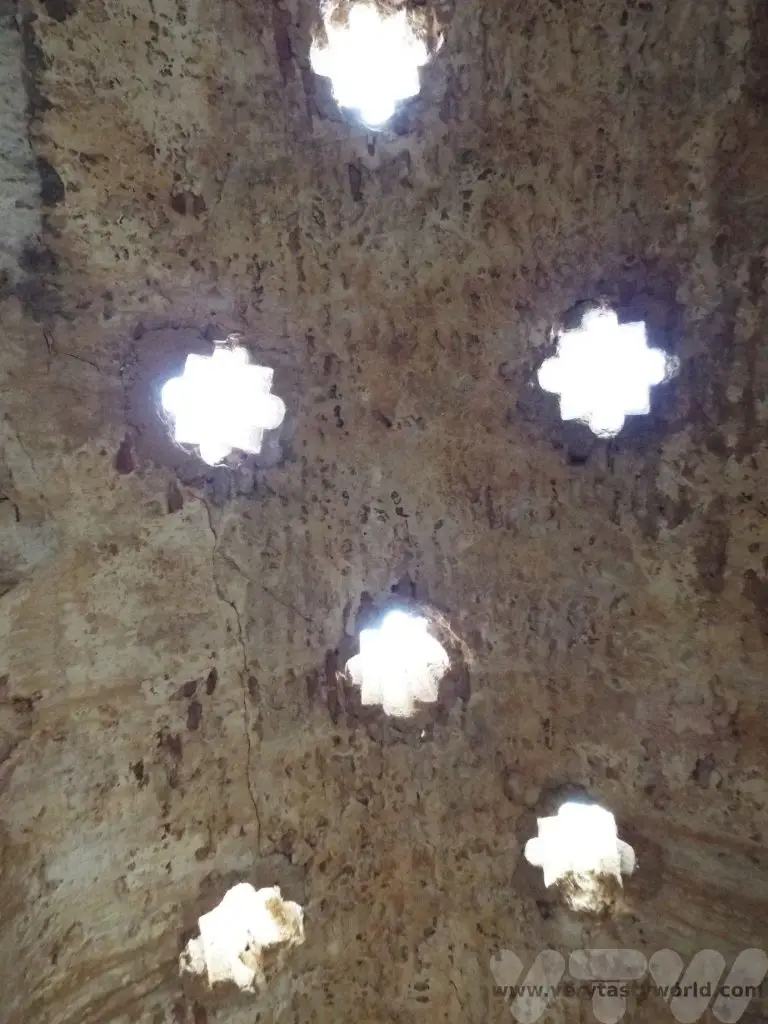
Outside the main baths is the water pump tower, known as a saqiya. A donkey would have turned a wheel to pump water from the river, which would flow along an aqueduct towards the boiler room, which heated the water for the baths.
The Water Mine and Garden Palacio del Rey Moro y La Mina
We found this to be disappointing and not very good value for money. The main attraction of interest was the water mine – a staircase that leads from the top of the gorge down 231 steps that have been carved into the rock to reach the river below. The history is interesting: the mine was the only source of water for the city. In Moorish times, Christian slaves, chained to the steps, were used to carry the water in bags up to the top. When a Christian army invaded the city in 1485 the mine was blockaded and the inhabitants of the city lost their water supply. It is possible to enter the mine and walk down the steps.
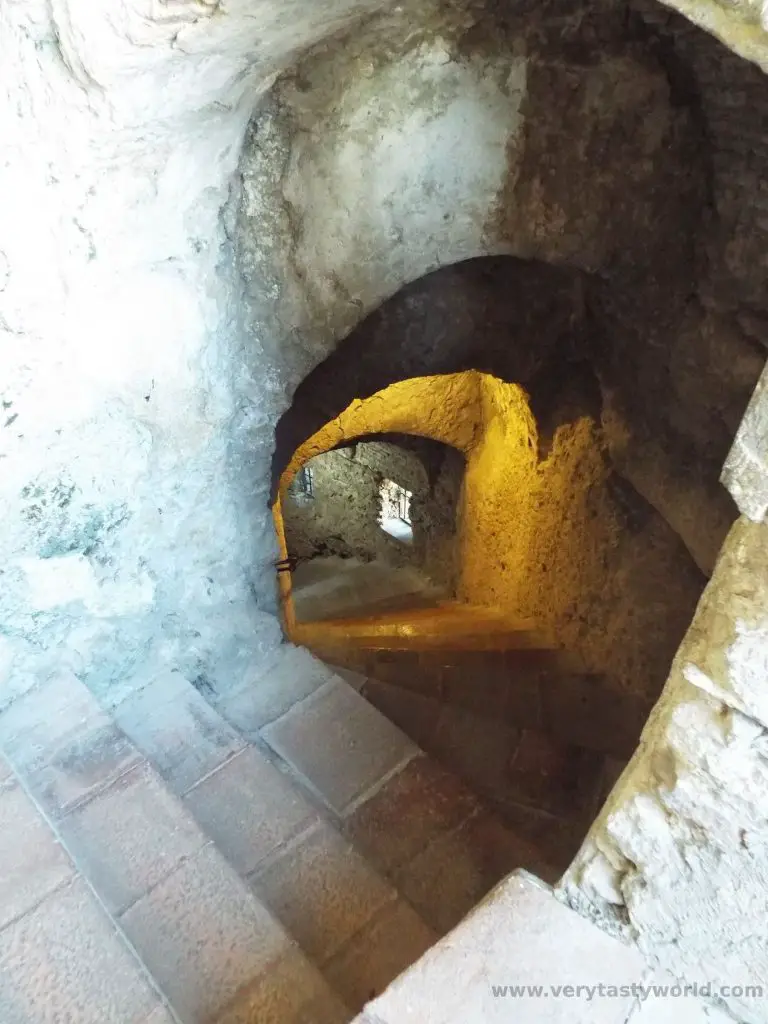
Beware, though, the steps are well maintained at the start but soon get slippery. It would have been helpful if the warnings about steep, slippery steps had been given outside the entrance, before we paid up, and entered the site. And, what goes down must come up, so be prepared for a long climb back.
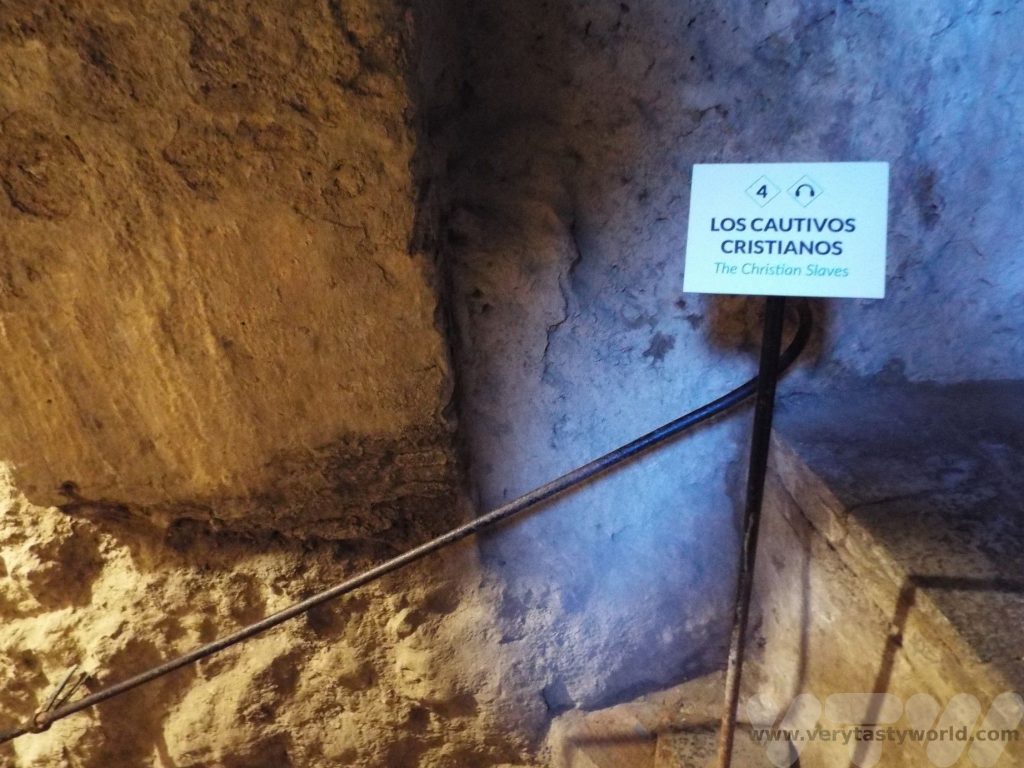
The garden of the Moorish King’s palace is pretty but not extensive. Also, it was built in the 18th Century, long after the Moors had gone, and the garden was designed in 1912, which feels like a bit of a cheat.
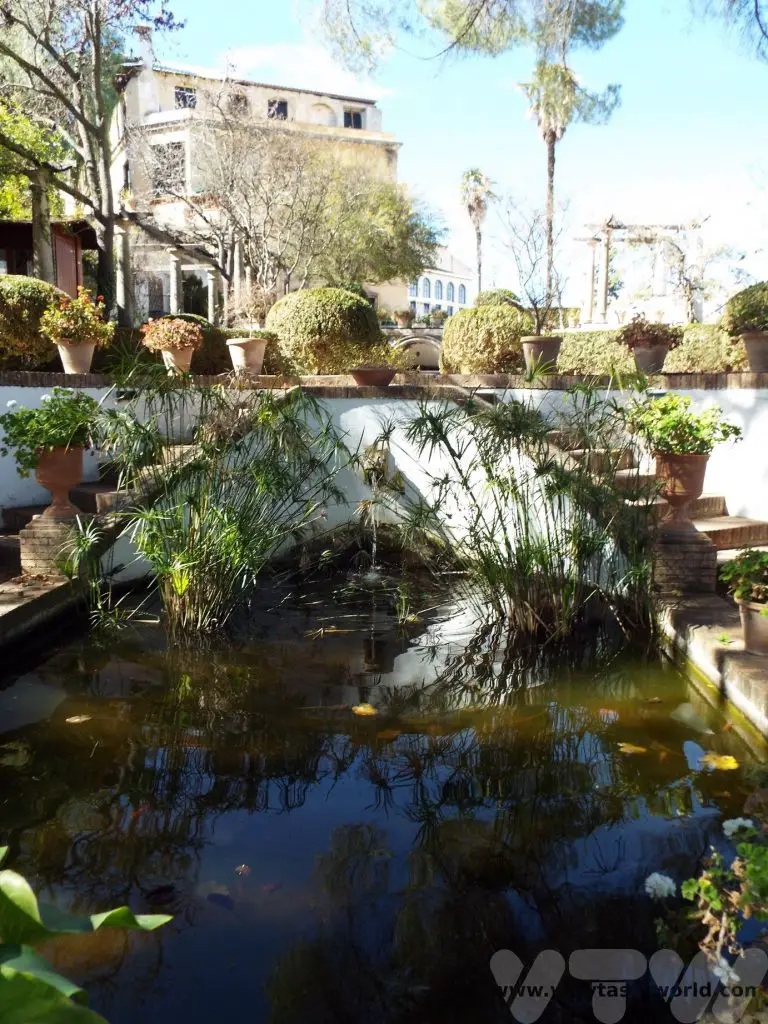
The Bullring
Ronda is considered the place where modern bullfighting began. At the Plaza de Toros, Ronda has a large bullring, built in 1785, which is one of the oldest in Spain. There is a museum which gives a history Bullfighting is a part of Spanish culture and history but it wasn’t something that we wanted to see. If you are in need of visitor information, the tourist office is located close to the bullring.
Next to the Plaza de Toros is a small park with two unusual statues by sculptor Seville Parra. Film director Orson Welles and author Ernest Hemingway both fell in love with Ronda and Spain. Hemingway wrote about Spain in his novels Death in the Afternoon and For Whom the Bell Tolls. Welles was so taken with Ronda that his ashes are buried close by, in a well on the estate of his friend, bullfighter Antonio Ordóñez. The park itself offers some nice views of the surrounding area.
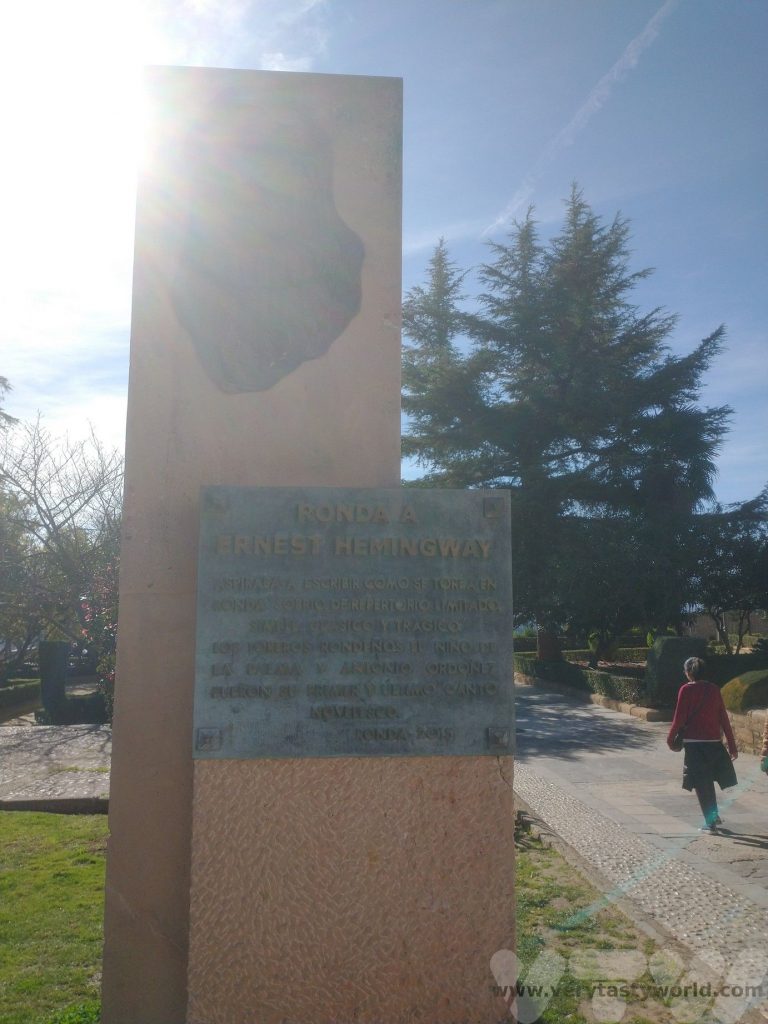
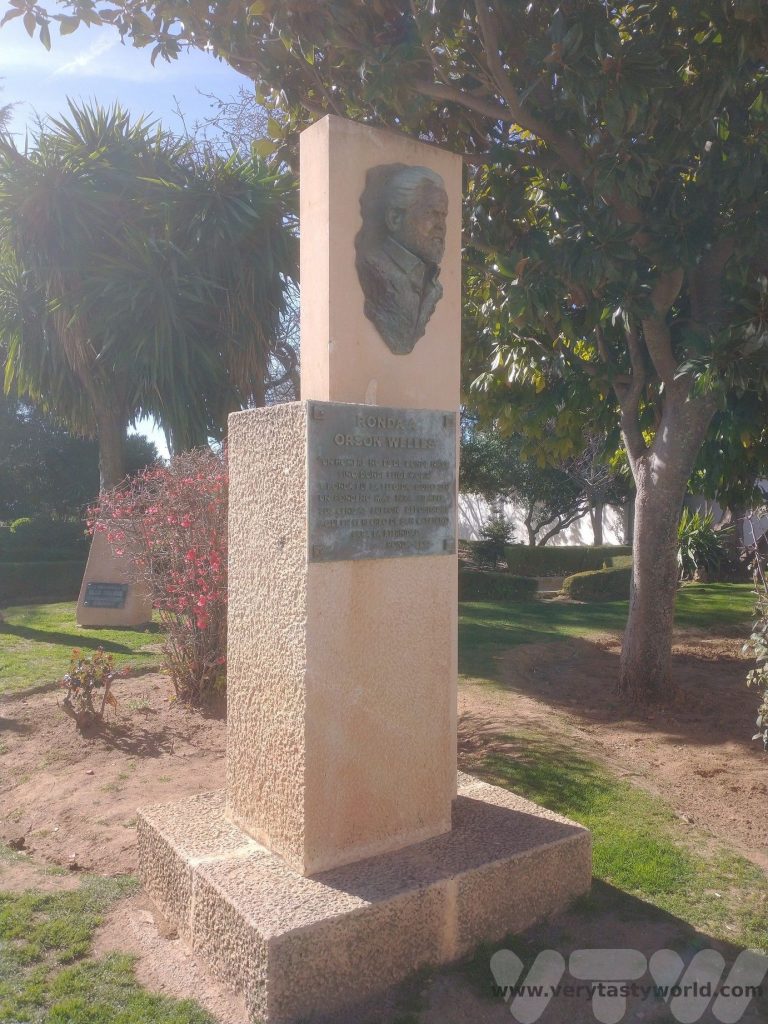
It’s lovely just wandering through the town. The oranges were already ripening on the trees.
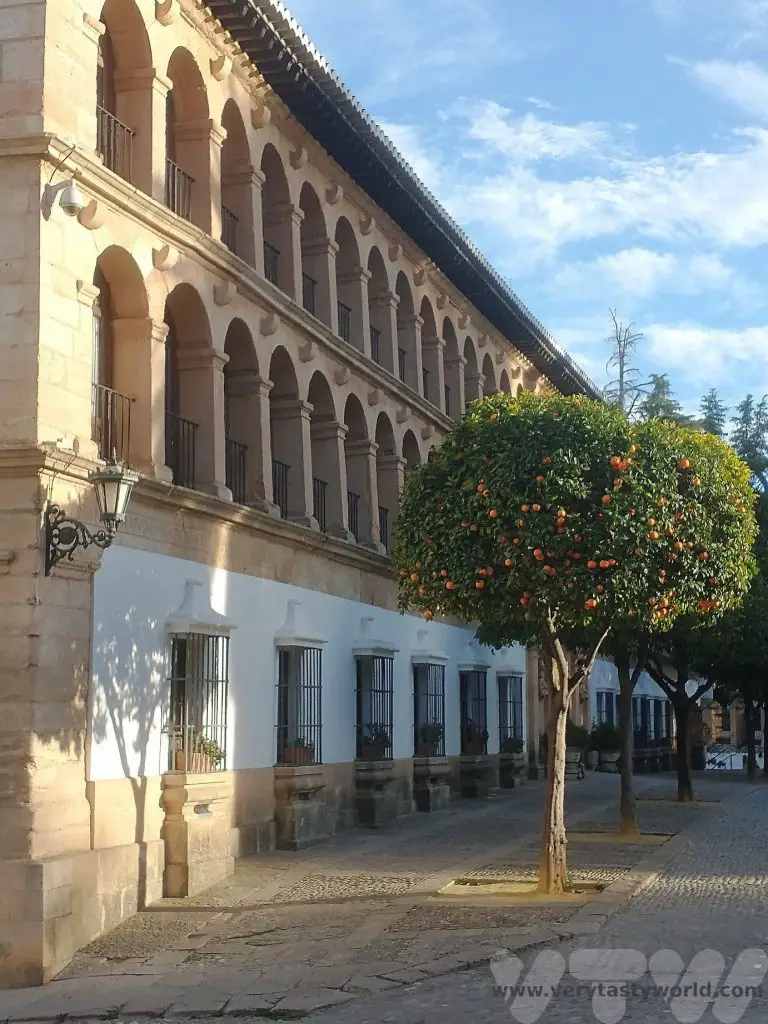
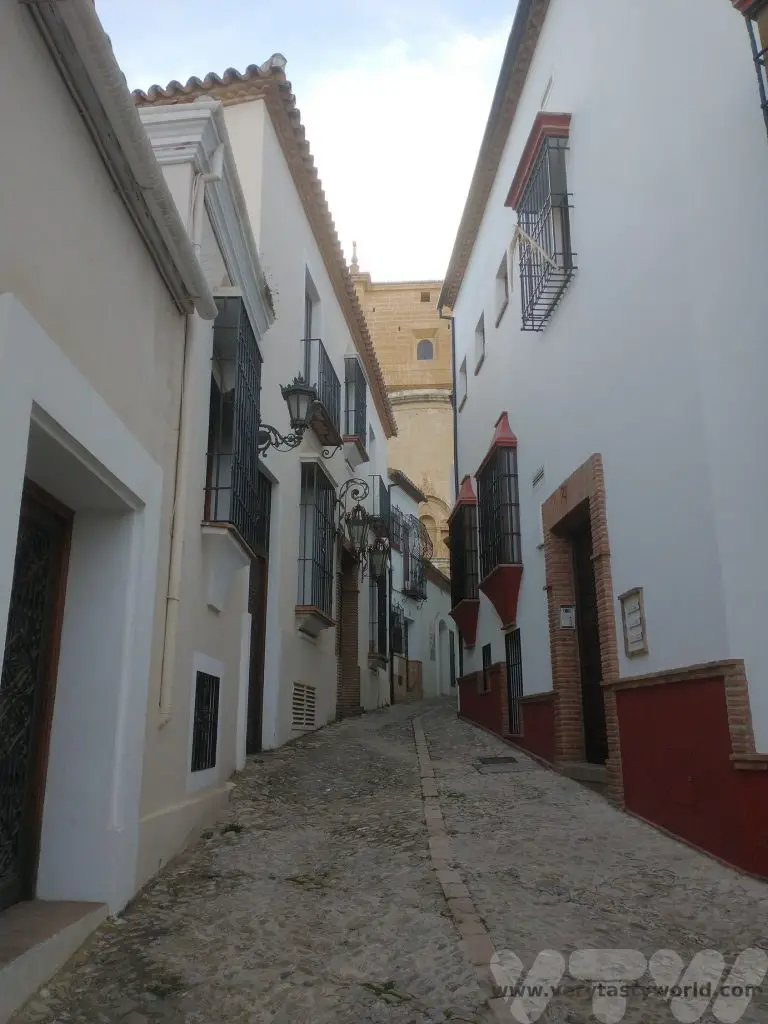
Eating in Ronda
In terms of eating, like much of Spain, Ronda has its fair share of restaurants that offer a menu del dia at lunchtime – a fixed price set menu which is usually good value. Bear in mind that the restaurants are likely to be busy at lunchtime because of the day trippers. Prices in the evening are likely to be more expensive. Sadly some of the restaurants we wanted to visit were closed, so we contented ourselves with tapas followed by churros.
Meats and cheeses in Andalusia are fantastic – with a wide choice available and all delicious.
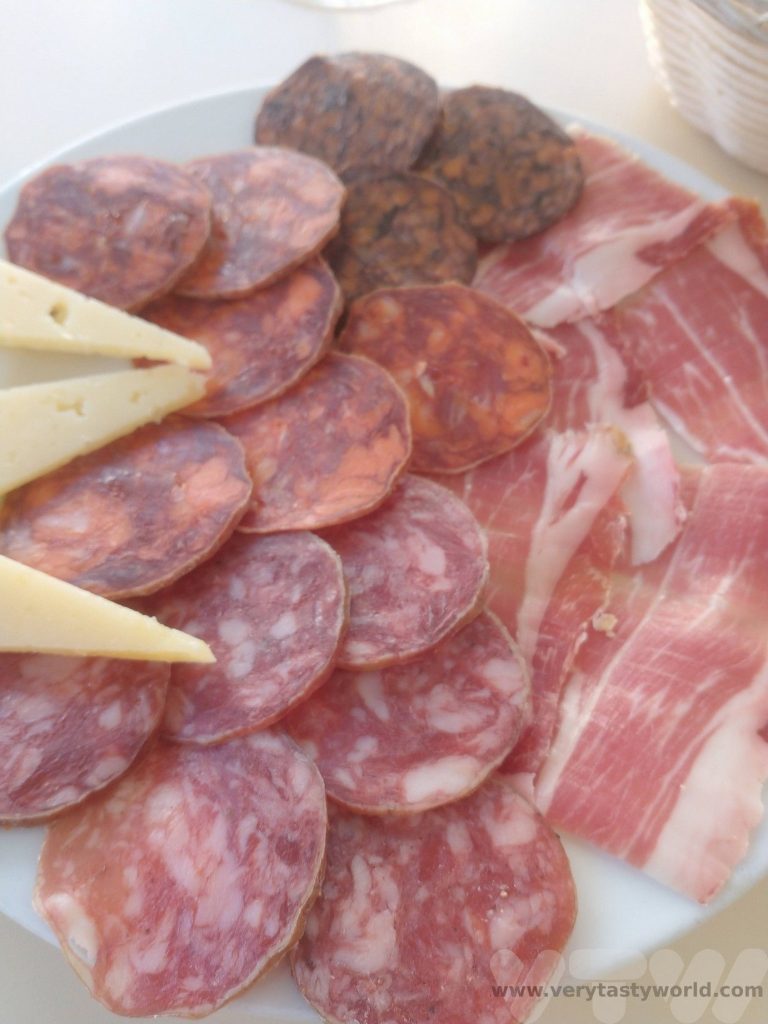
Churros are cylindrical fried dough delights. They can vary in shape and length – some thicker, thinner, longer or shorter, but they usually have a ridge along the length due to the dough being piped into the sizzling oil using an implement called a churrera, which is a bit like a syringe with a star-shaped nozzle. They may also be coated in sugar. Churros are traditionally dipped into hot chocolate, which is rich, thick and deeply chocolatey.
Churros are usually eaten at breakfast but there were restaurants all over Ronda offering them as daytime snacks. They are popular so some cafes may run out later in the afternoon. They are so sweet! We got such a sugar rush we felt like we could have run up and down the gorge several times after eating them.
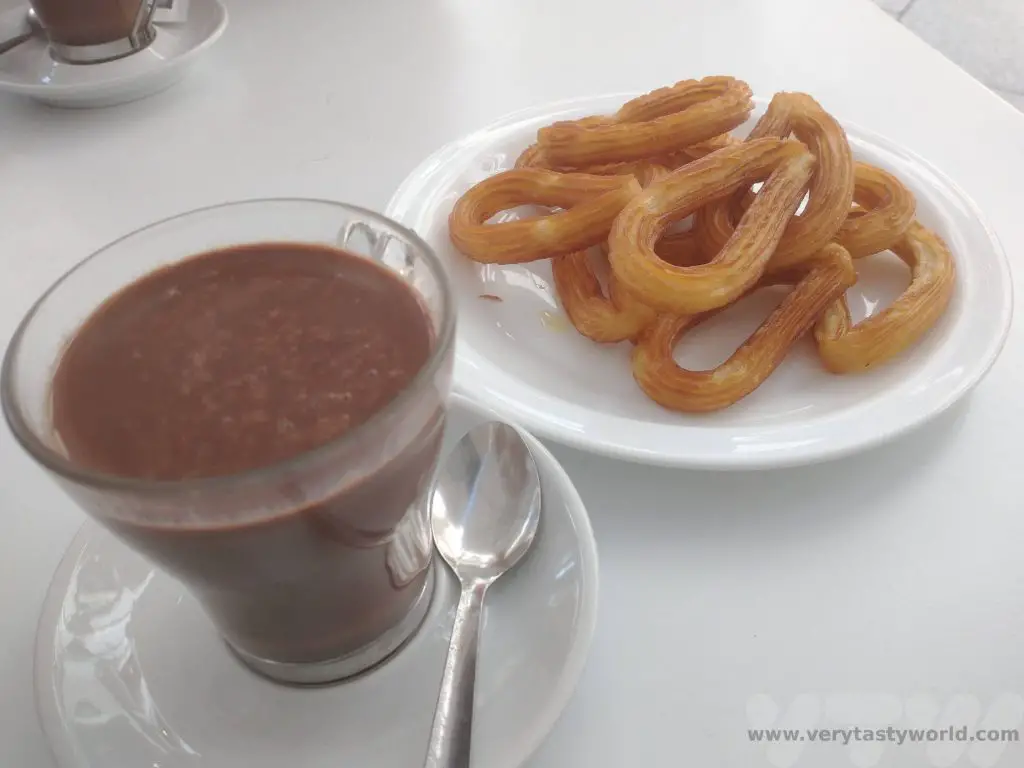
While many people spend just a day in Ronda day, we would actually recommend an overnight stay if possible. One of the reasons for wanting to stay overnight was that we could see the bridge lit up at night. The daytripper crowds will have melted away by this time.
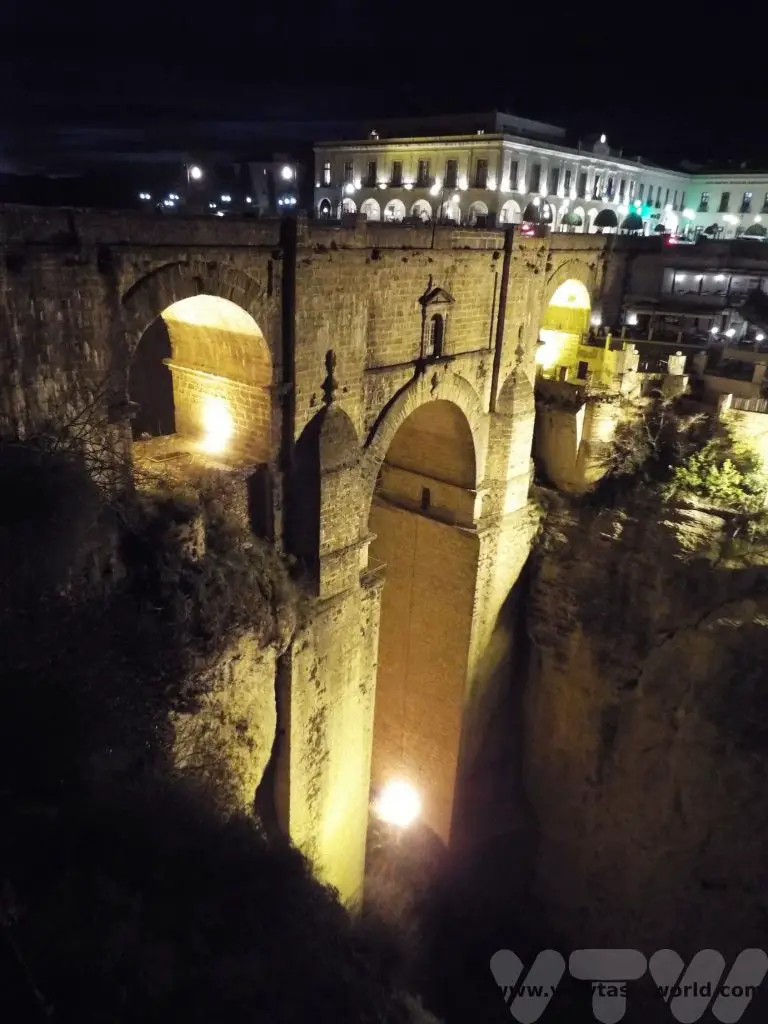
We paid a bit extra for a room with a view of the bridge. It wasn’t quite what we expected – it did include a bit of the bridge but the hotel’s claim that we had a ‘bridge view’ didn’t really meet our expectations. Hey ho.
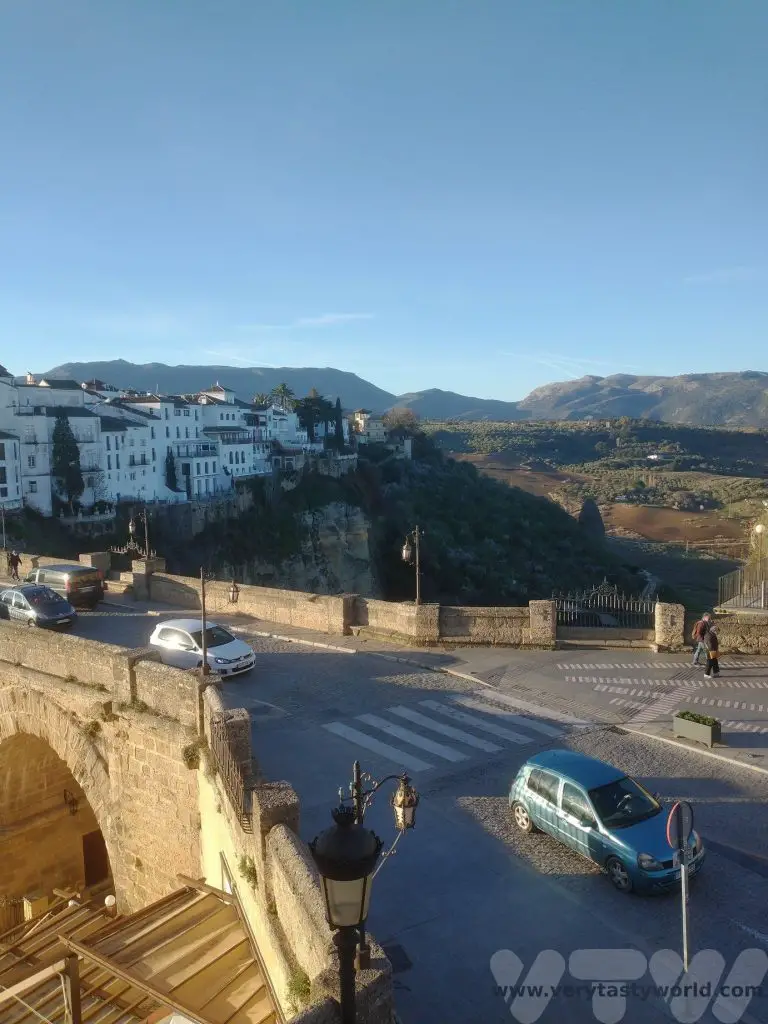
Much better was eating a traditional Andalusian breakfast in their restaurant…
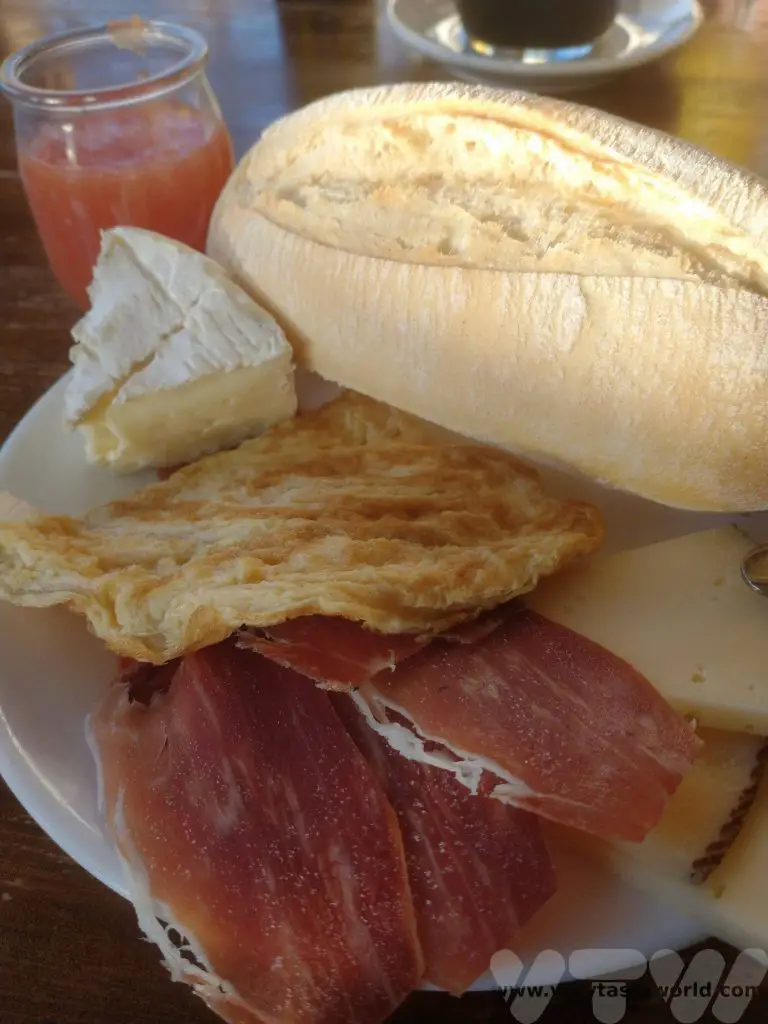
…overlooking the gorge on a beautiful misty morning.

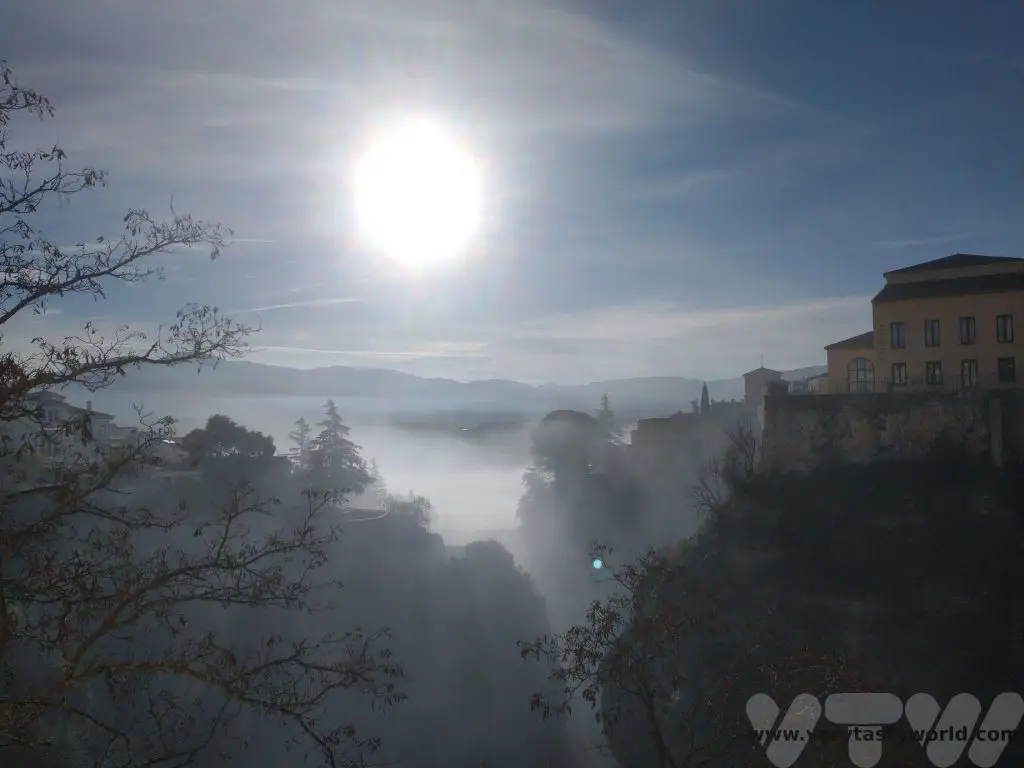
Related Posts You May Enjoy

Mekong Delta River Cruise in Vietnam
Fruits of the Dragons
As the mighty Mekong river reaches Vietnam and approaches the South China Sea the main waterway splits into a maze of rivers that form the Mekong Delta. The region is known locally as Cuu Long, or “Nine Dragons”, representing the nine main tributaries. Located just a few hours away from Ho Chi Minh City, enjoying a Mekong Delta river cruise is a lovely excursion when visiting south Vietnam.
The delta region covers an area of around 40,500 square kilometres in south-western Vietnam. It is the mouth of the Mekong, Asia’s third longest river, which has run nearly 5000km from its source in the Tibetan plateau, through China, Myanmar, Lao PDR, Thailand, Cambodia and finally into Vietnam.
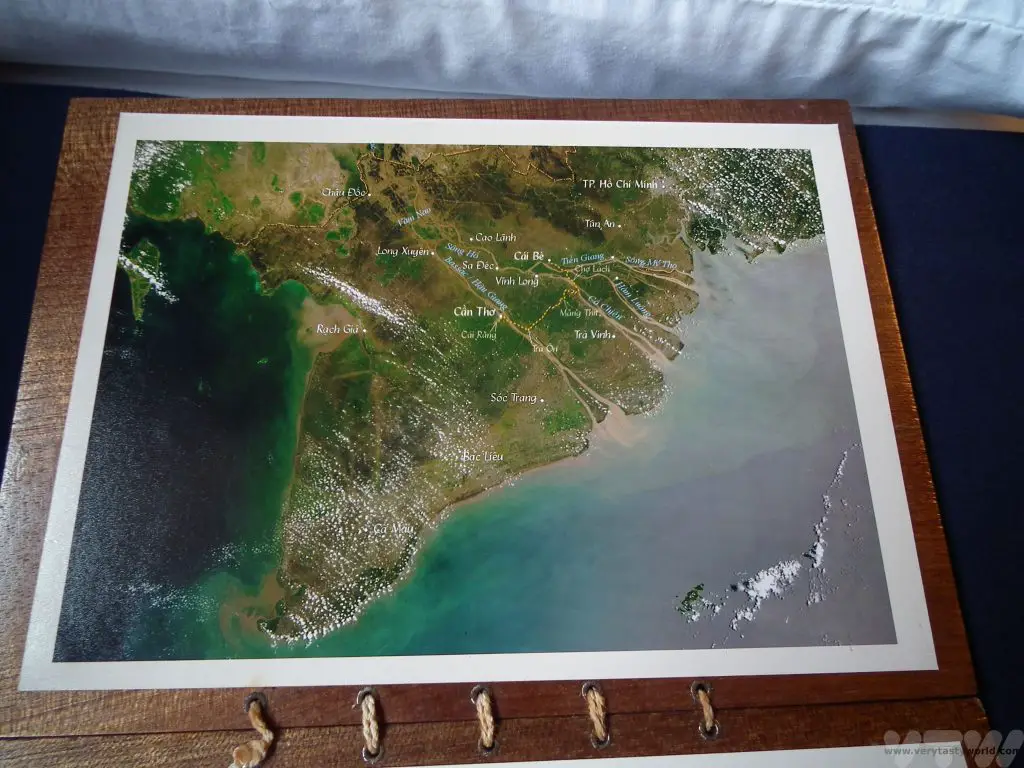
River Cruise
Three to four hours’ drive away from the relentlessly loud and energetic Ho Chi Minh City, the hectic urban hubbub slowly transitions to rural rice fields. It is possible to undertake a river cruise along the Mekong Delta from a number of locations in the area; there are plenty of choices with various levels of indulgence. It’s a lovely way to see the country from a very different perspective and at a pace that is much more laid back. We chose a two day journey from Cần Thơ to Cái Bè starting along the Sông Hậu branch of the river and sailing into the Mekong.
Depending on budget there are different boats available. Some are rather splendid – we travelled on a traditional style Bassac boat. These are wooden vessels with private cabins and a decks with seating so that you can enjoy the view.
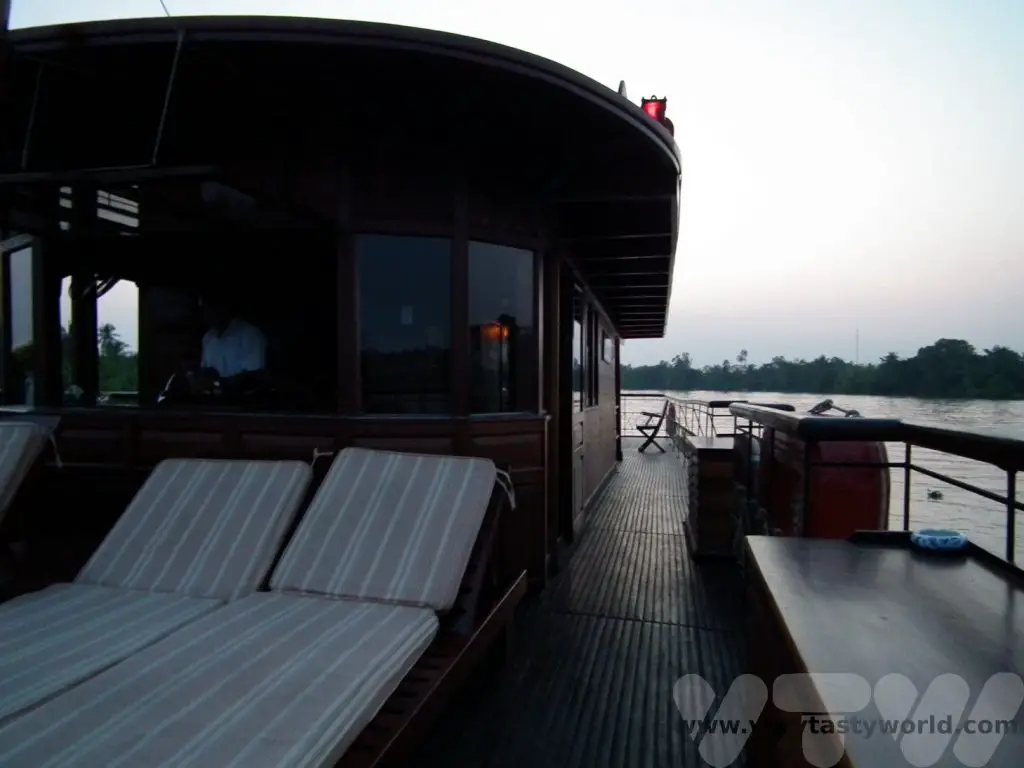
The cabins are compact, but had all the facilities we needed, including a teeny en-suite shower room.
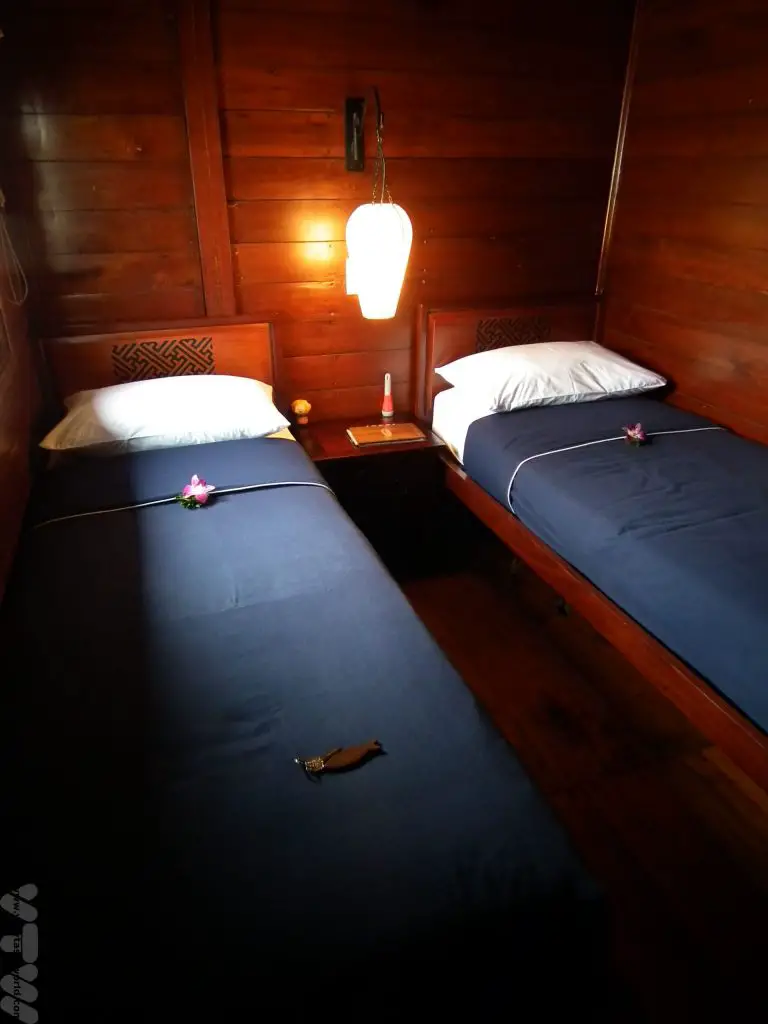

A Slow Journey Along the Mekong Delta
Cruising along the Mekong can best be described as ‘leisurely.’ We saw all sorts of vessels, large and small, as we travelled along.
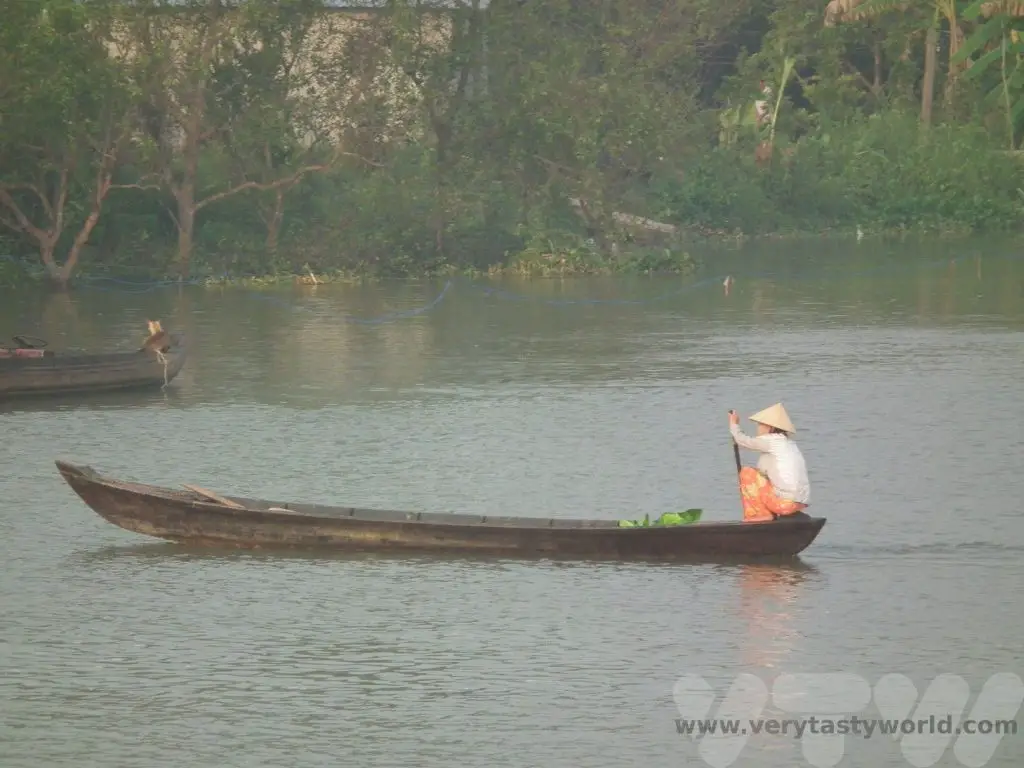
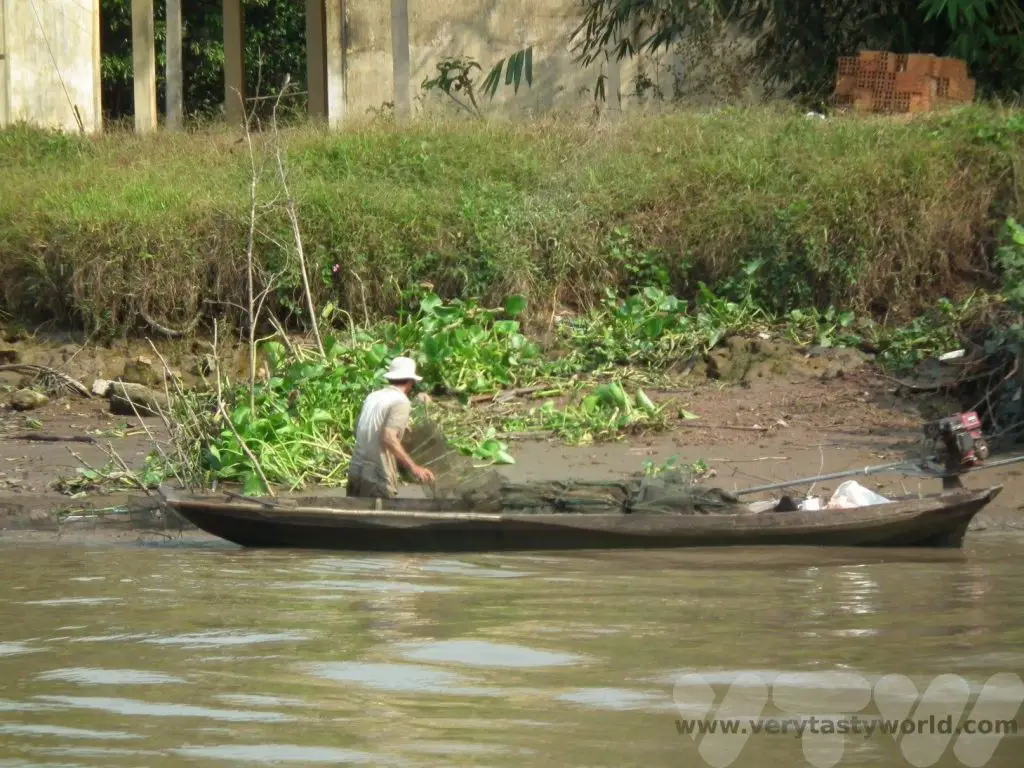
All along the journey we saw water hyacinth floating gently by. This is a fast growing plant that floats freely in the river. It is a bit of a problem in the delta as it can get clogged up in a motor boat’s propellers and is also somewhat invasive, preventing other life thriving on the river. It is apparently edible (not sure we’d want to fish it out of the river and have a munch and, anyway, it needs to be cooked first) but it can also be collected and processed in order to make woven products such as mats, bags and baskets, which local people can sell.
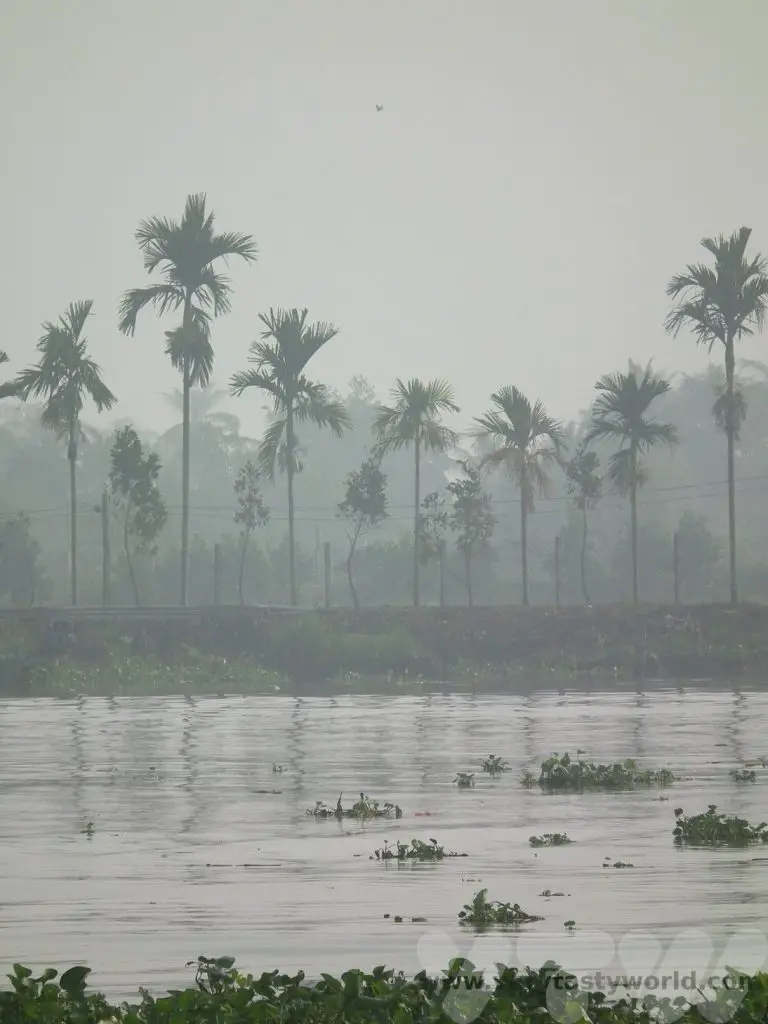
Mekong Delta River Cruise – A Land Excursion
Many of the boat trips offer excursions to various attractions along the way. It is also possible to visit some of the onshore villages in the area and to explore them on foot, visiting local farmers and learning about the food that’s produced there.
The area is extremely fertile and rice is the major crop grown. Due to the climate in South Vietnam it is possible to achieve three crops per year.
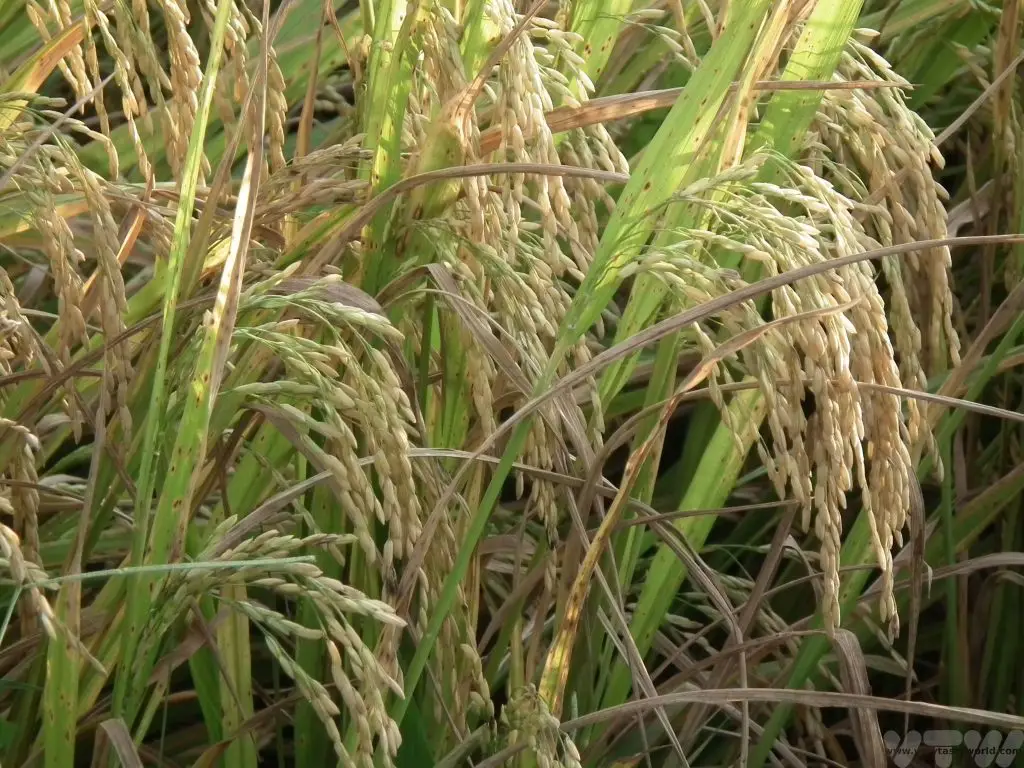
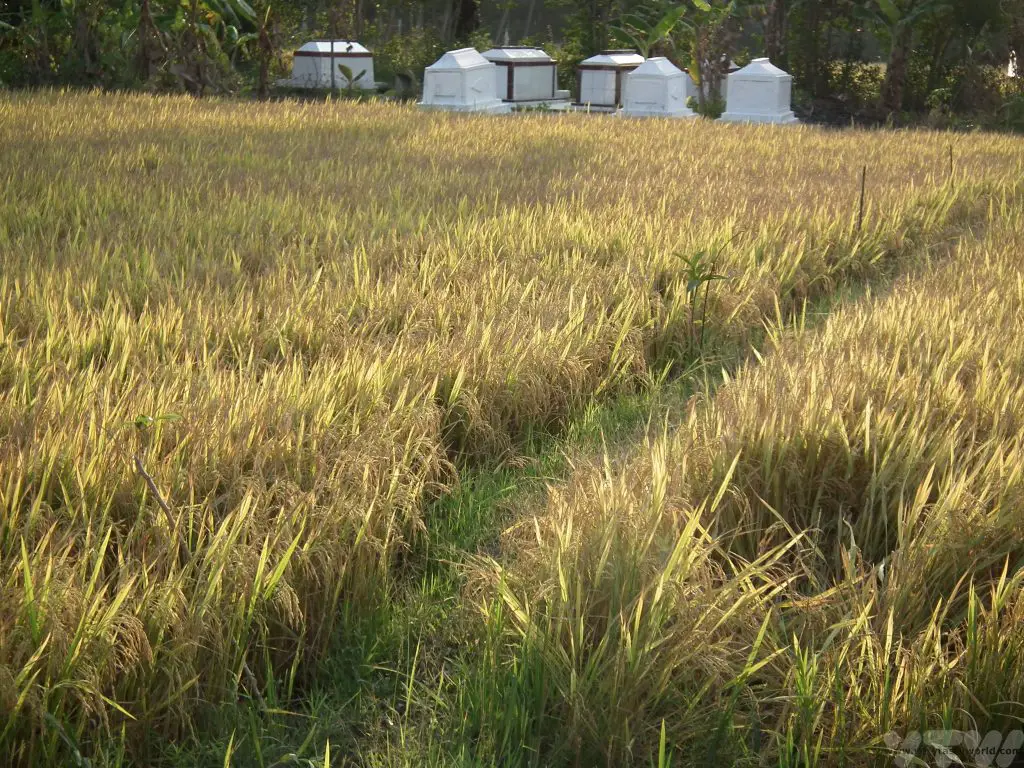
There are no cemeteries in Vietnam so families set up graveyards in the fields.
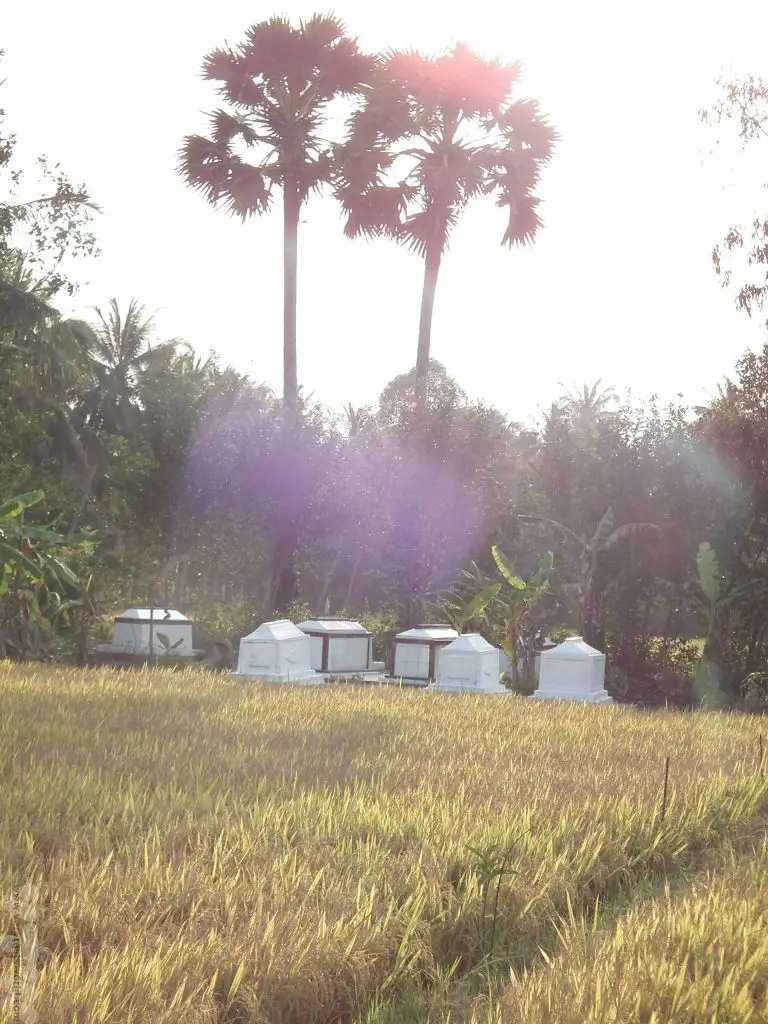
There are also a number of fruit trees that grow in the region. Some are familiar.
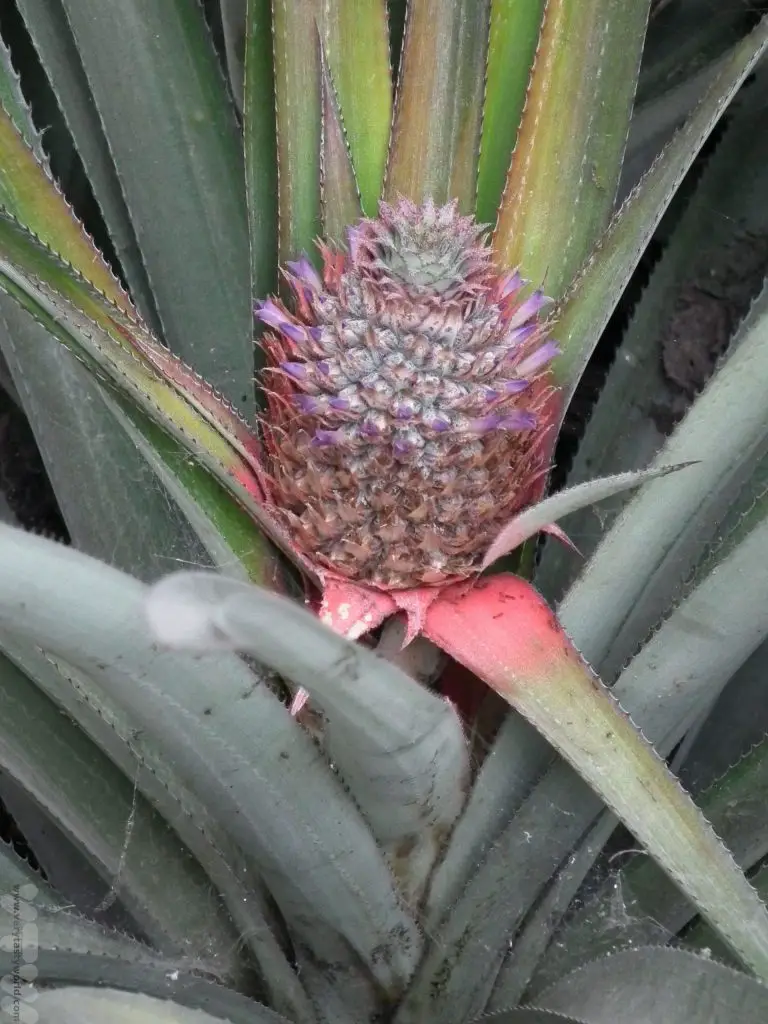
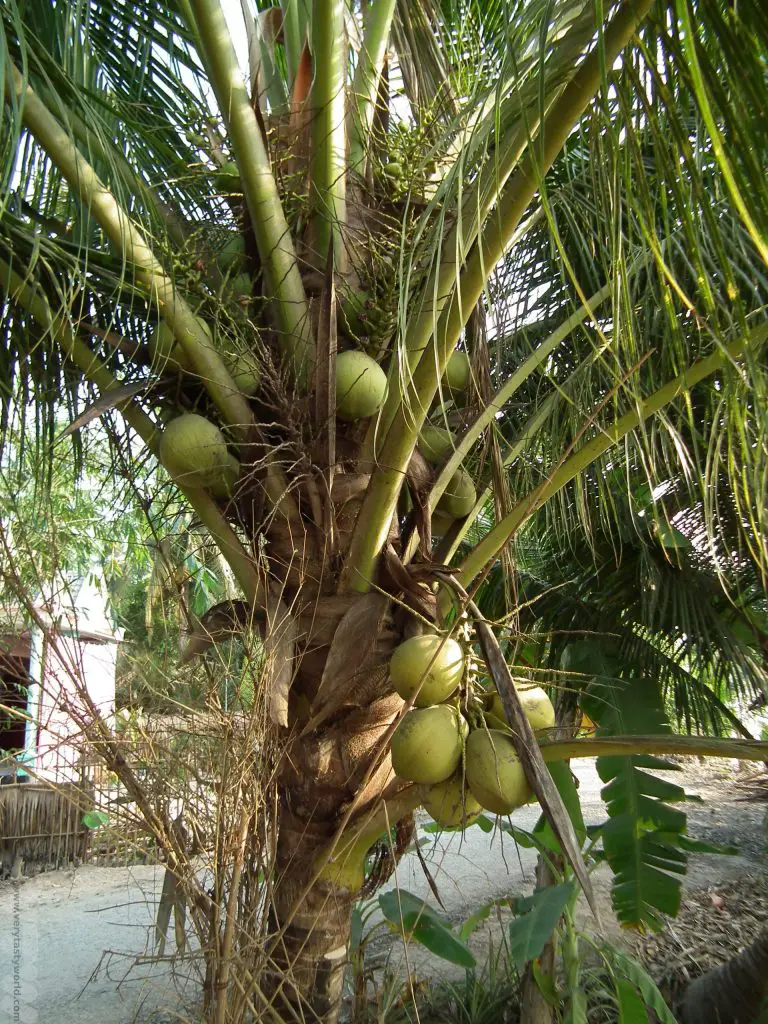
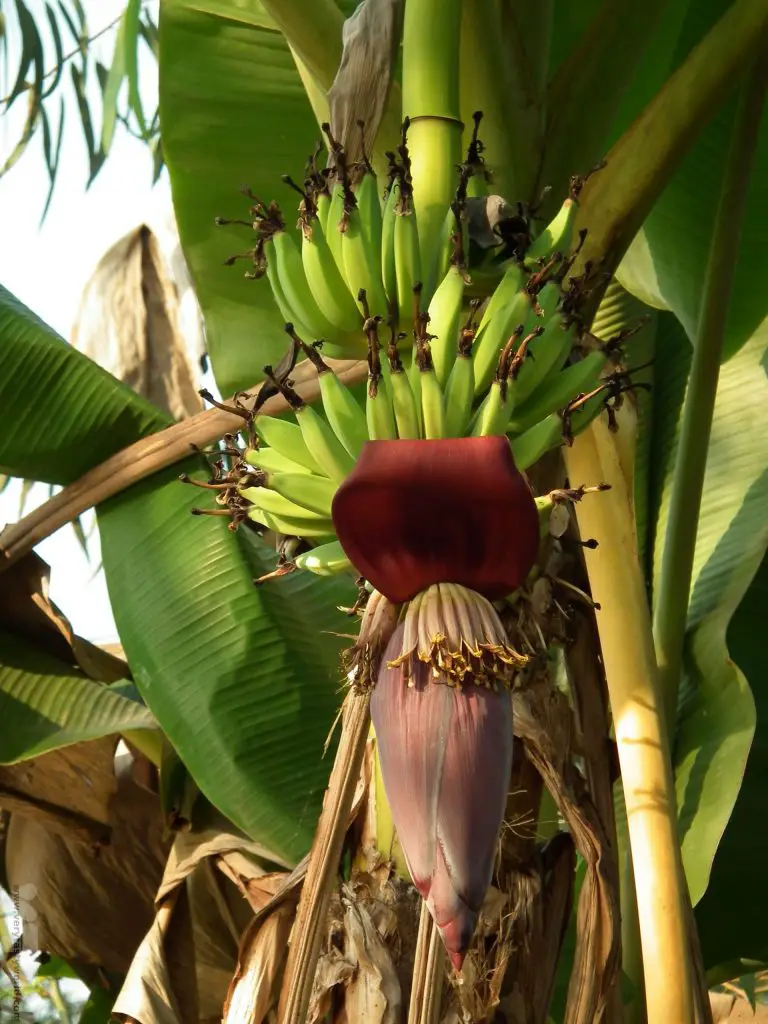
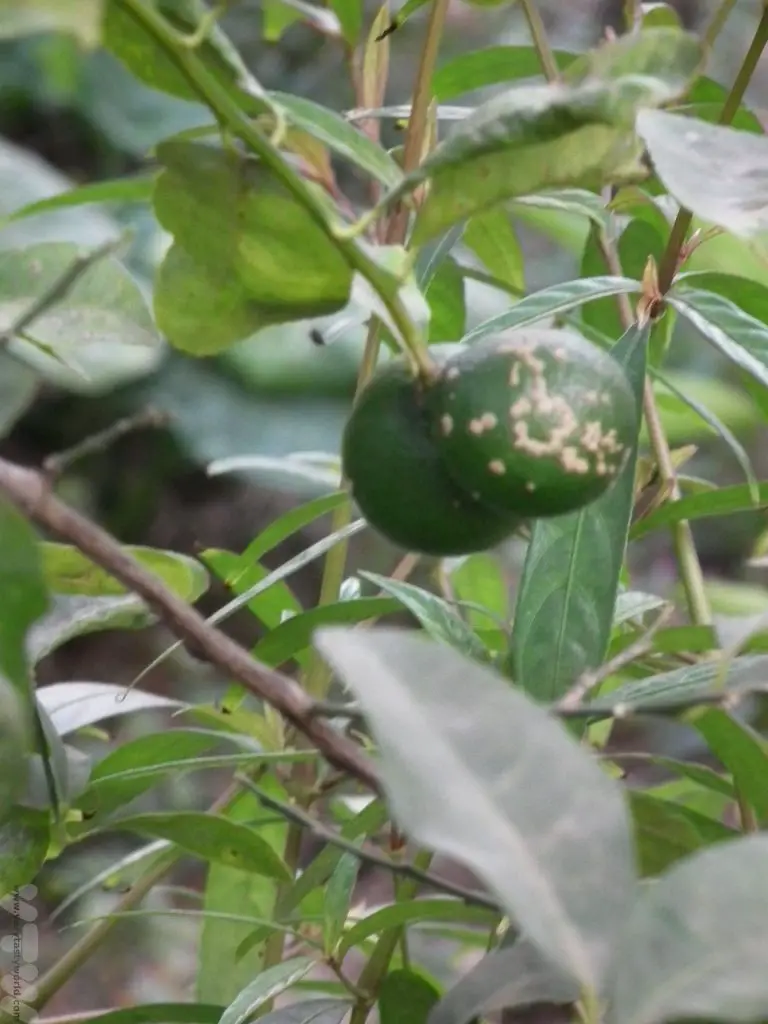
Jackfruit has become hugely popular in recent years as a ‘meat substitute’. Its texture and ability to absorb flavours make it incredibly versatile for vegetarians and vegans – mock ‘pulled pork’ is a particular favourite. But actually it is very tasty as a fruit in its own right.
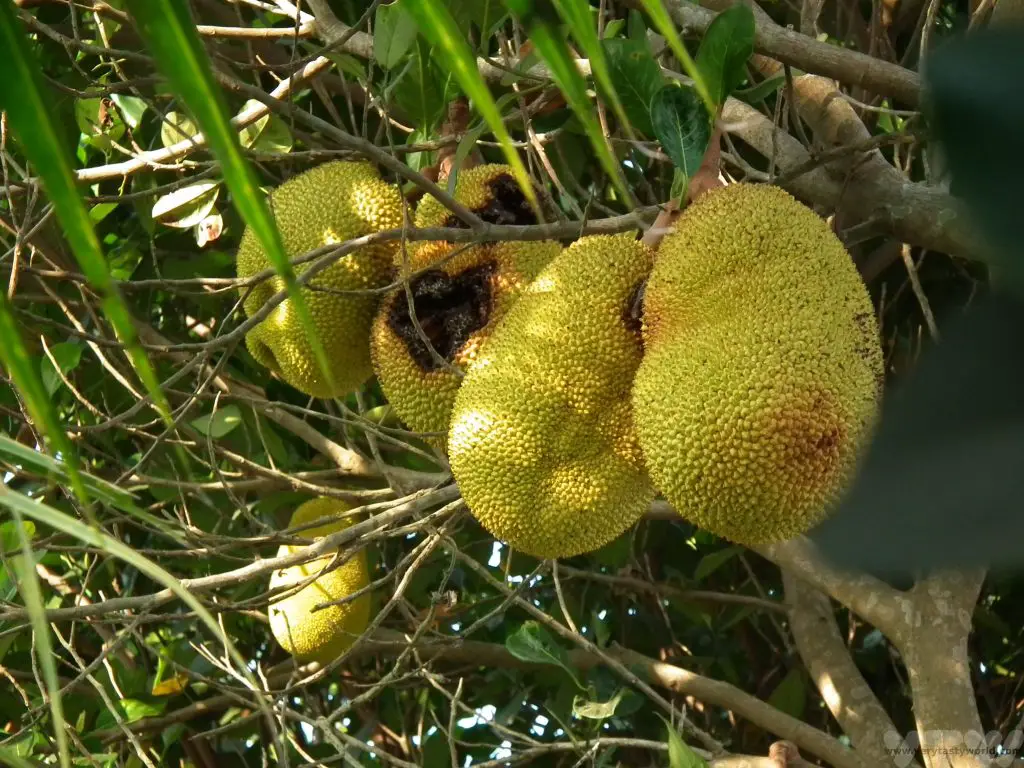
Tapioca is the starch derived from the roots of the cassava trees and often used in puddings (which are far more delicious than school dinners).
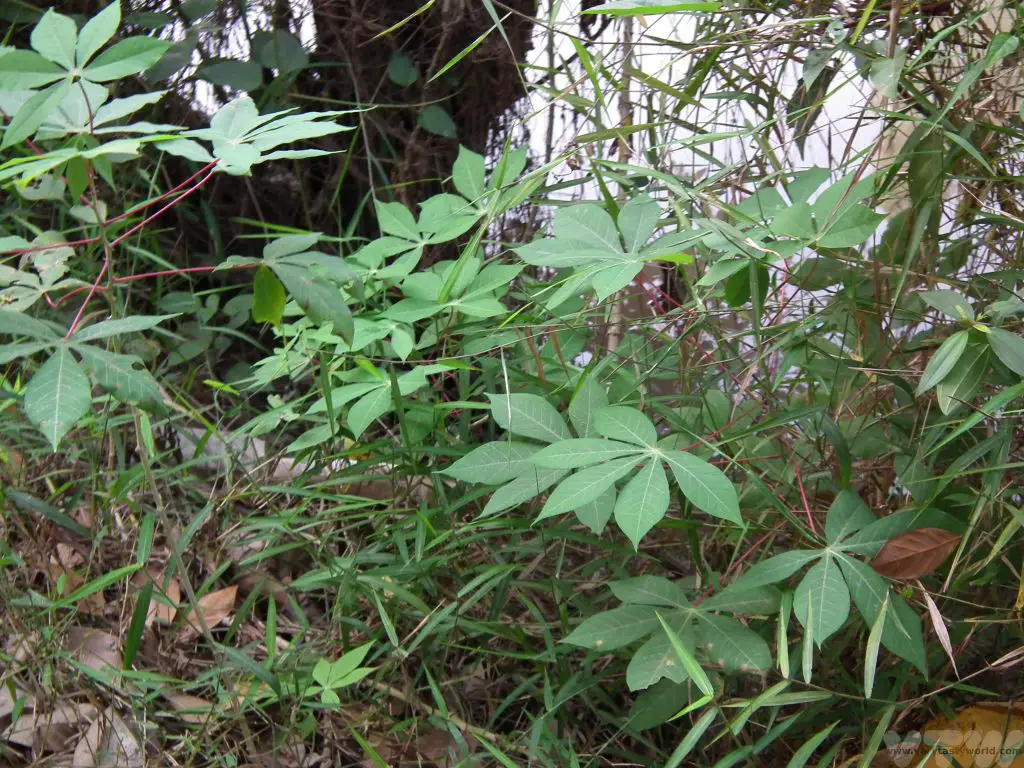
Some of the residents are happy to open up their houses and it is possible to do home stays with local families. If you’re just on a day trip, visitors are sometimes offered some of the amazing fruits grown on the island.
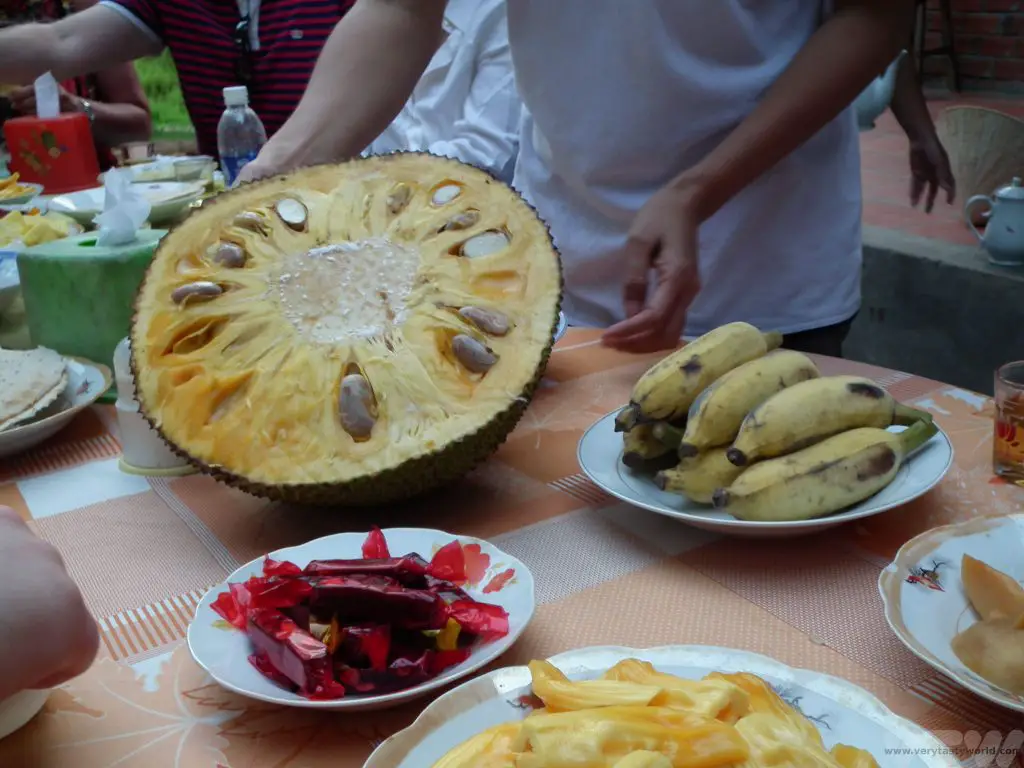
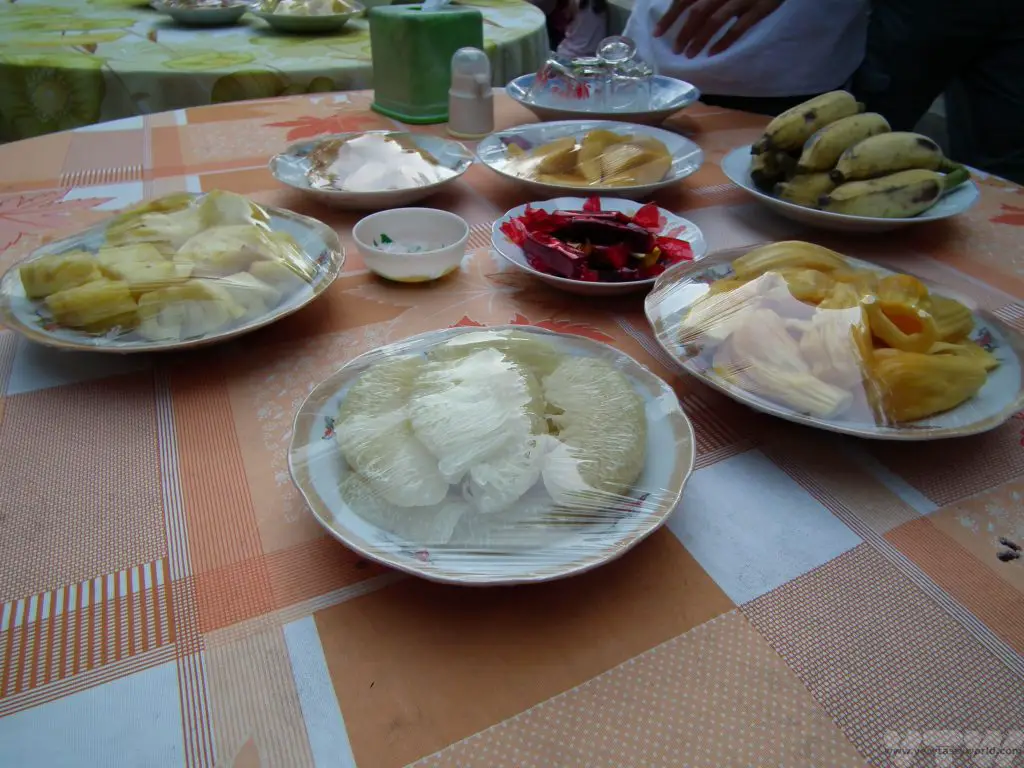
This platter was exceptional. There is an sequence to eating the fruit in order to gain maximum enjoyment: Always start with the fruit with sour flavours and finish with the sweet.
One plate that was a particular revelation was the pineapple. Of course, fresh pineapple is utterly scrumptious, especially when it hasn’t travelled half-way around the globe, but it was served by sprinkling a little chilli and salt on each piece and was a taste sensation. It makes sense: like a lot of Vietnamese food it includes sweet and sour flavours (which the pineapple provides) plus an additional salty dimension and a good dose of heat from the chilli.
Banana leaves are not only functional, they can also be decorative – just look at this lovely banana leaf ‘origami’ grasshopper.
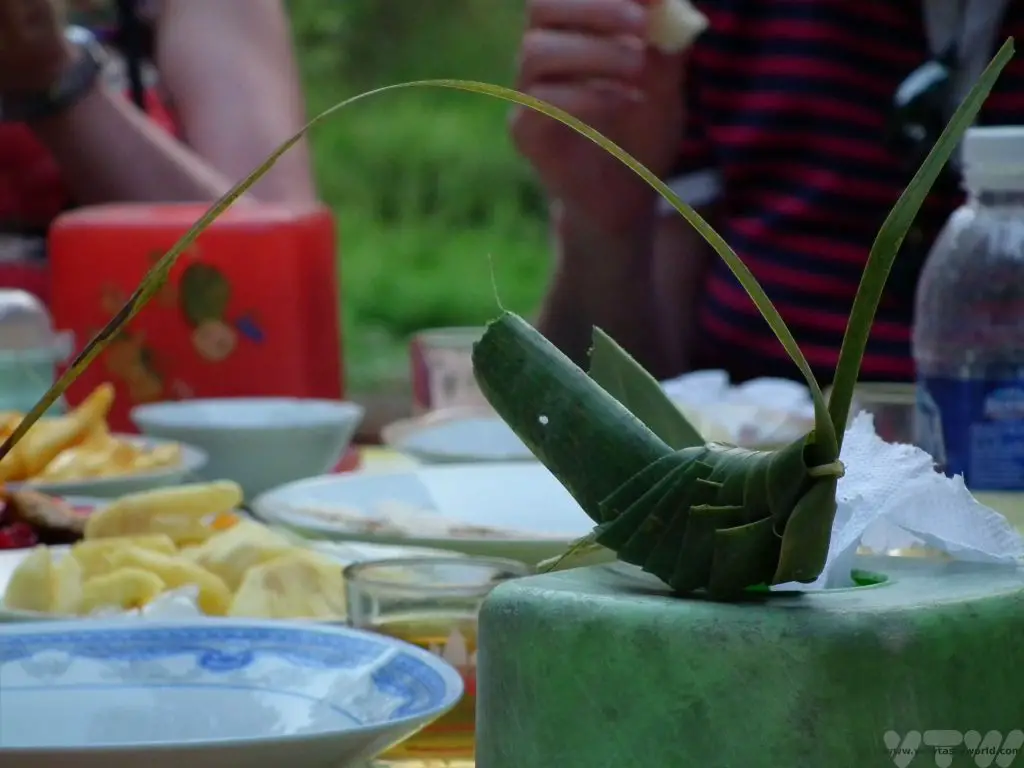
It was late afternoon by the time we returned to our boat.
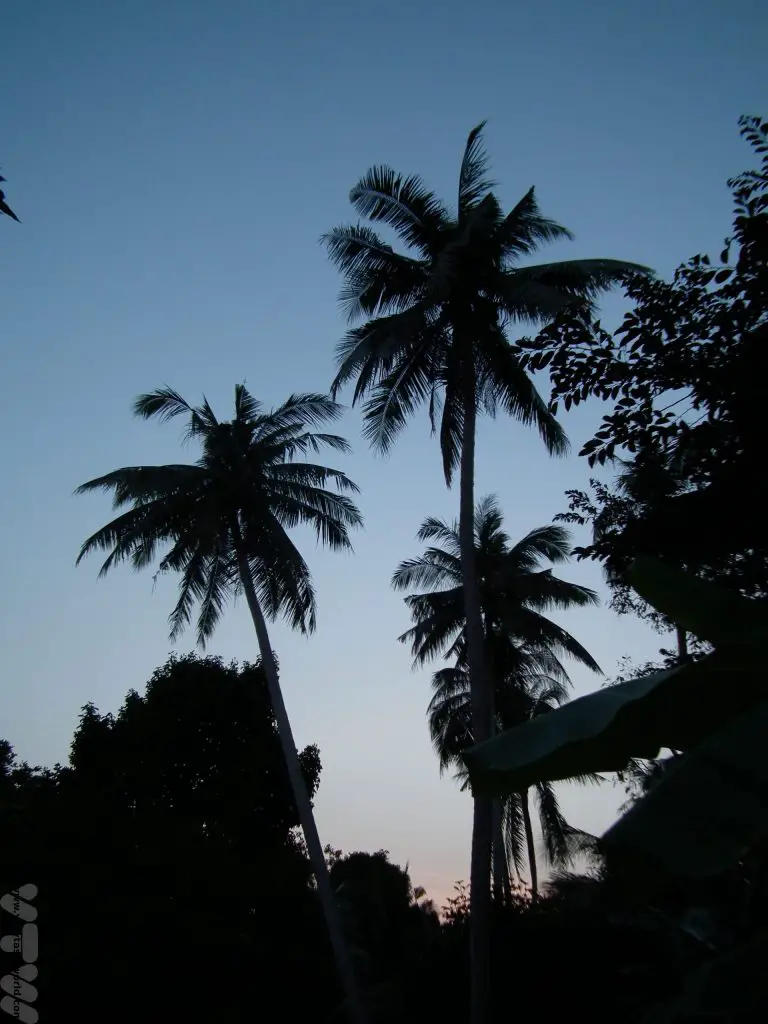
Time for a delicious, decadent seafood dinner…
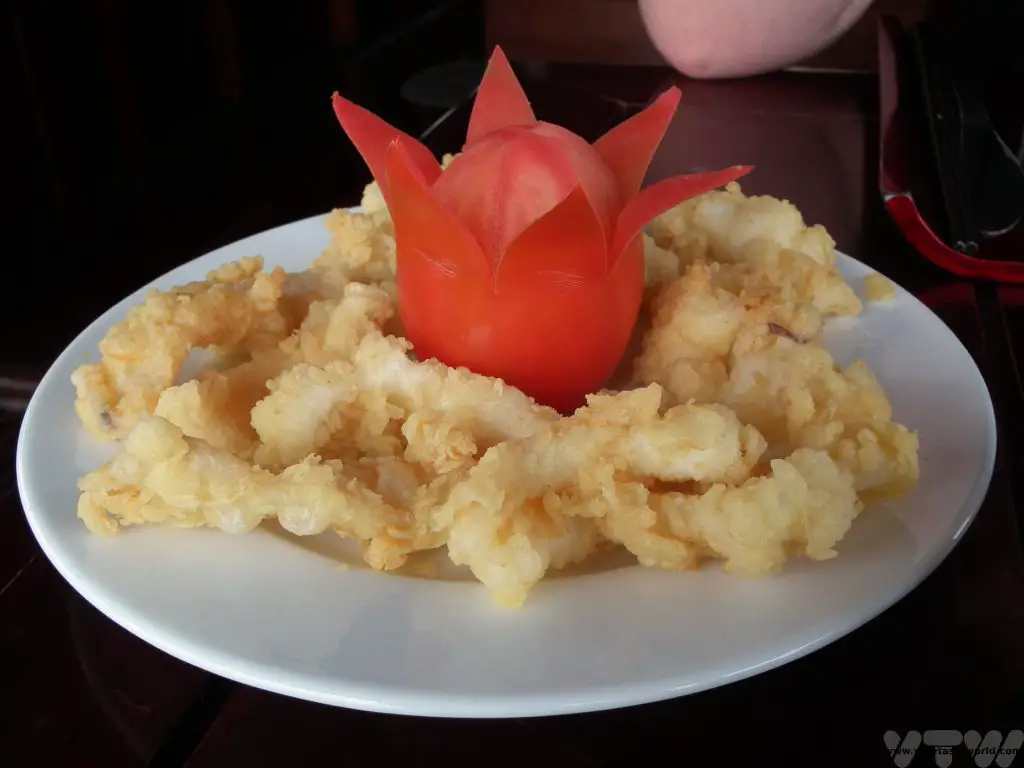
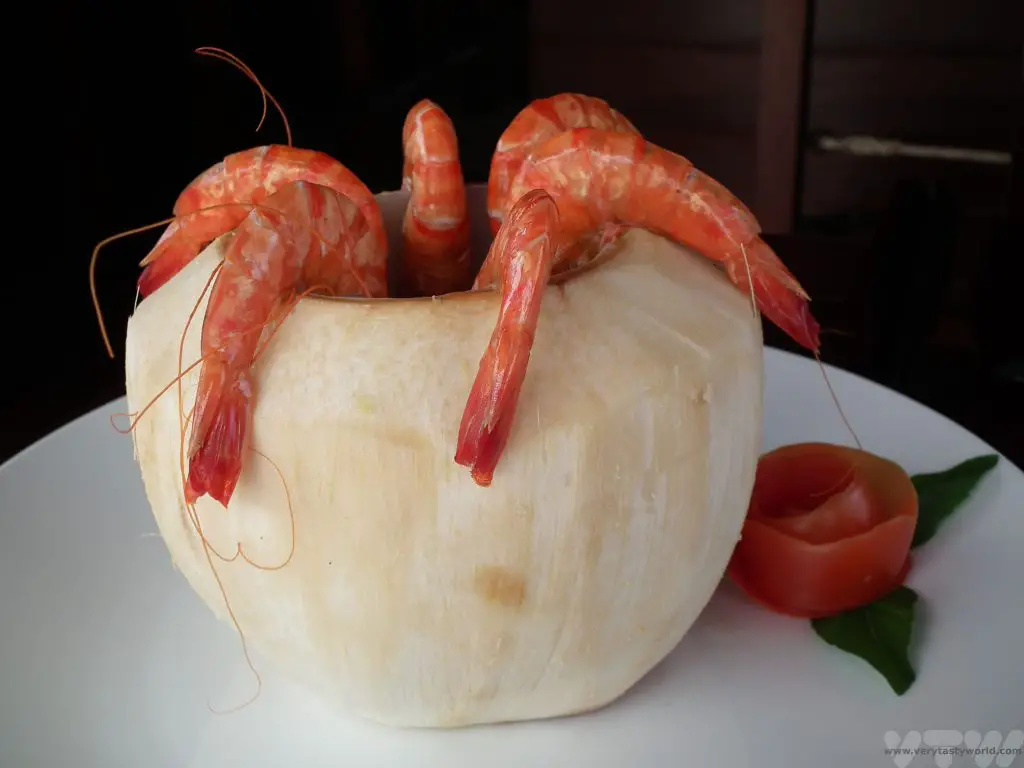
…followed by after-dinner drinks watching the sun set over the Mekong.
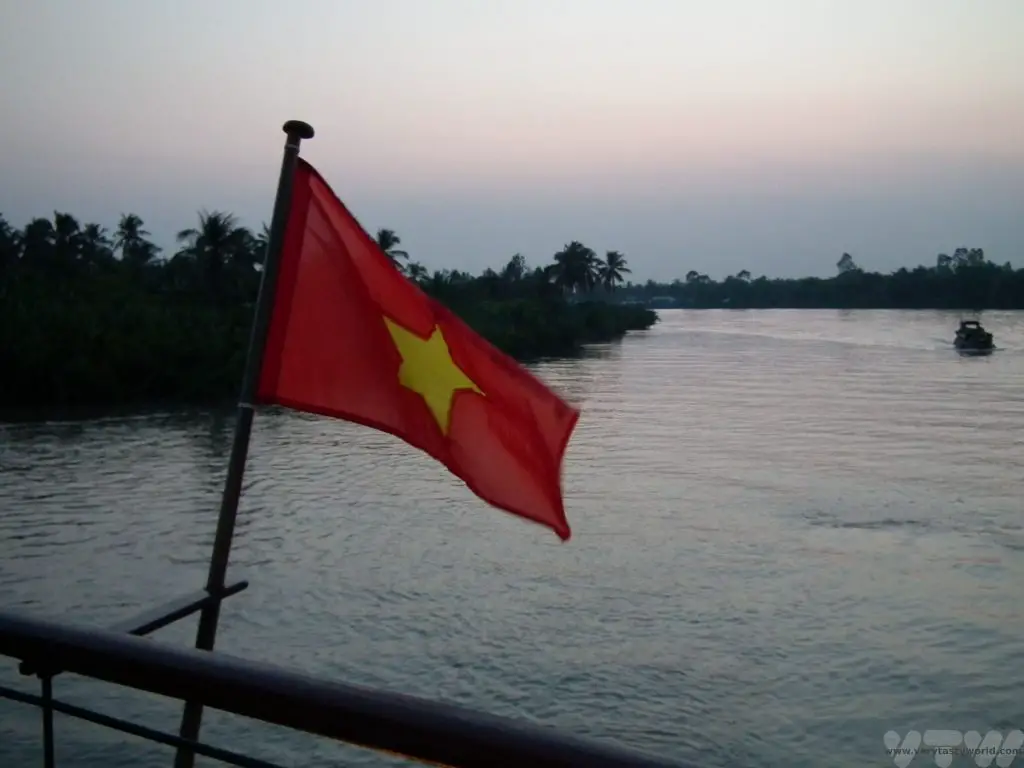
Journey to Cái Bè
Our boat docked at Tra On for an overnight stay onboard. The following morning we headed towards Cái Bè. The Mekong becomes much more of a working river and we passed by many riverside emporia and floating shops.
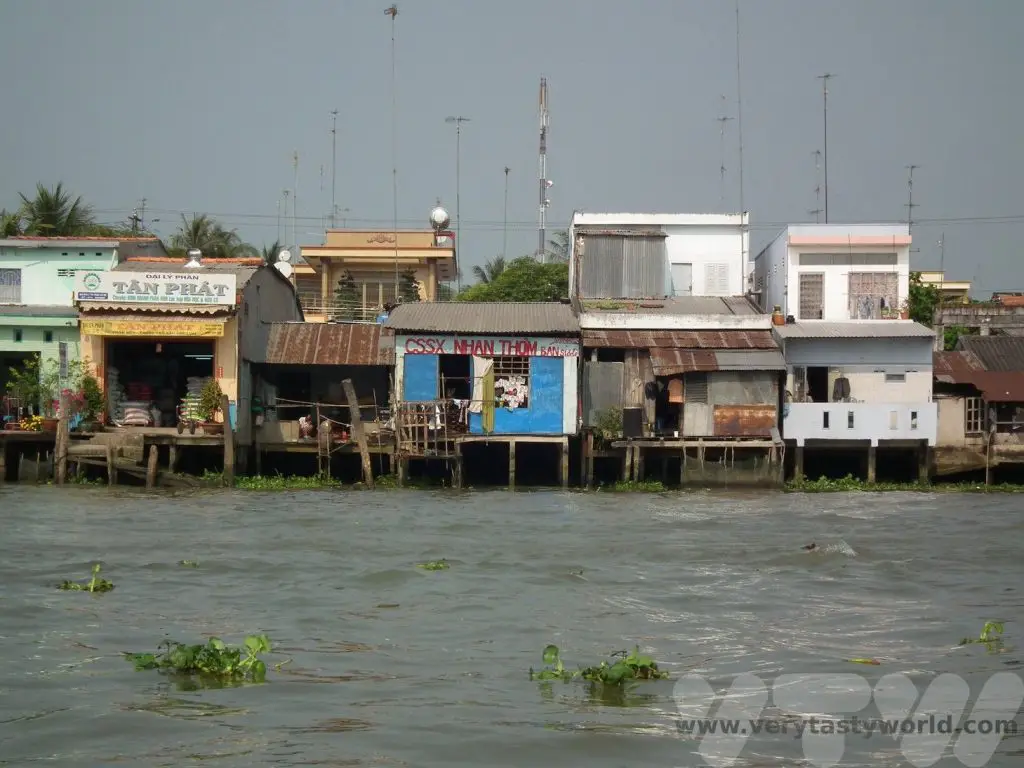
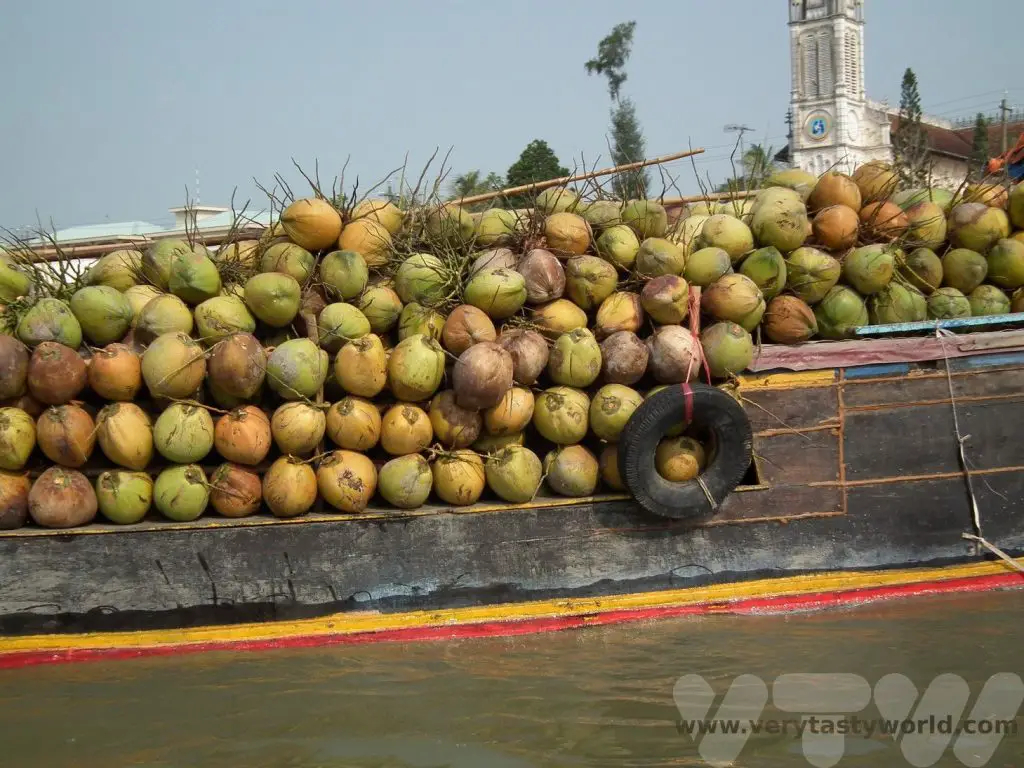
Cái Bè has a Catholic church – an unusual structure to see in the region. Dating from 1929-1932 apparently it has the tallest bell tower in the province.
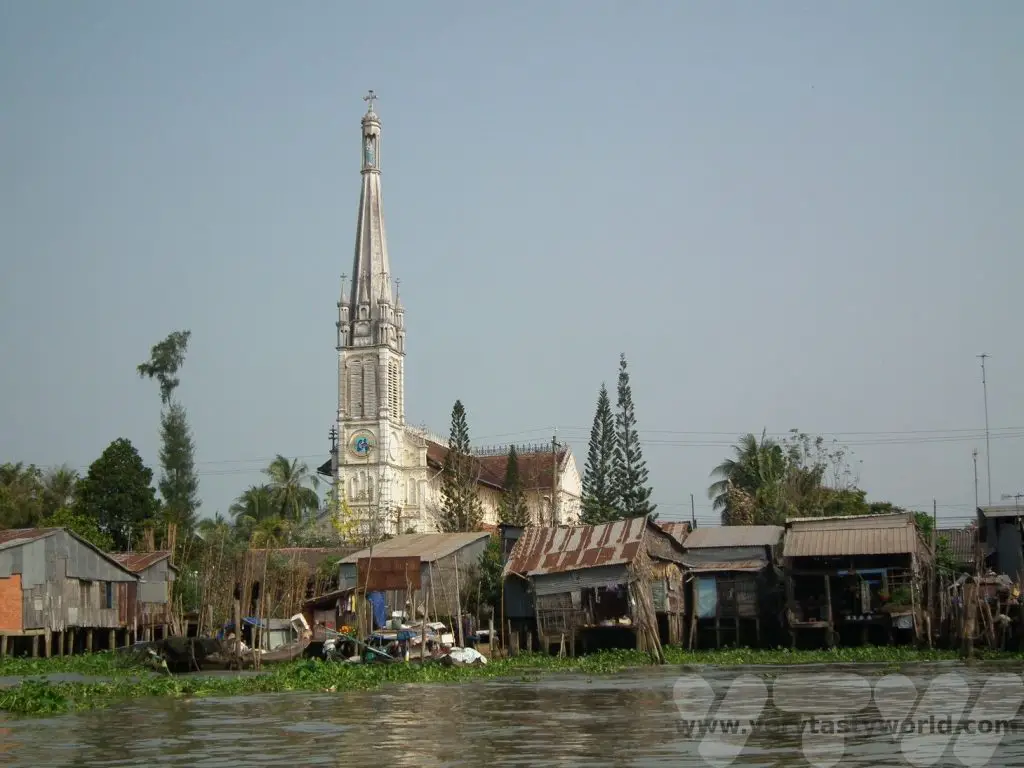
The local boats have eyes painted on them which reputedly scares away the crocodiles.
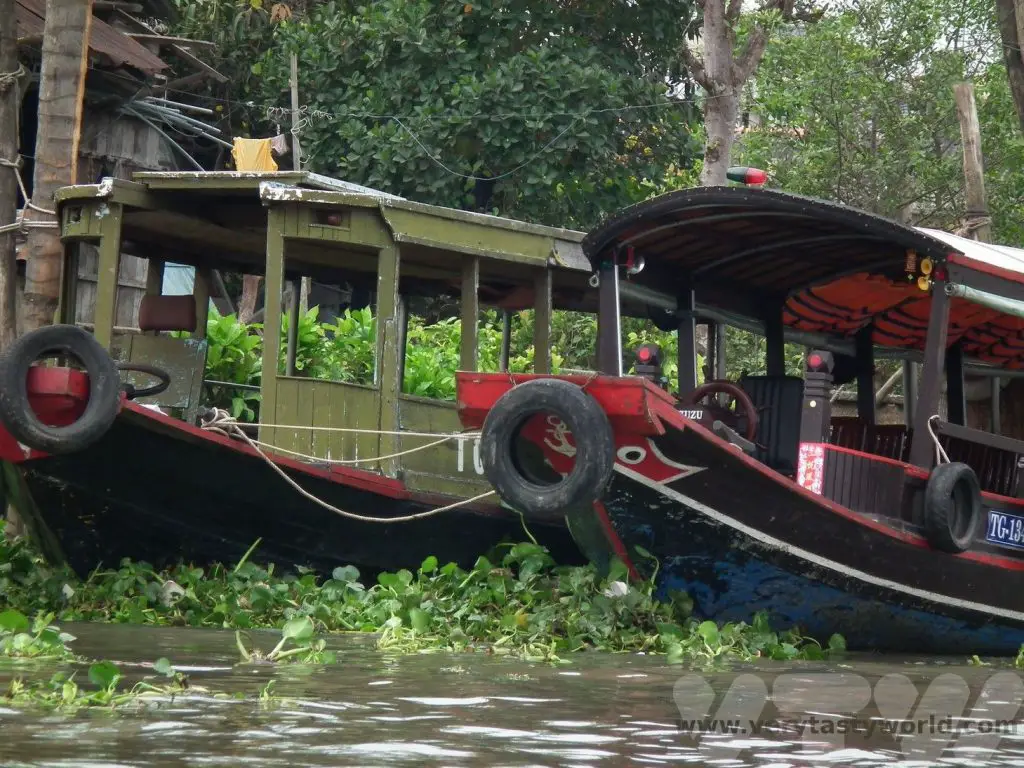
On arrival at Cái Bè we disembarked and visited a factory which made rice products – rice paper and rice cakes – as well as candies.
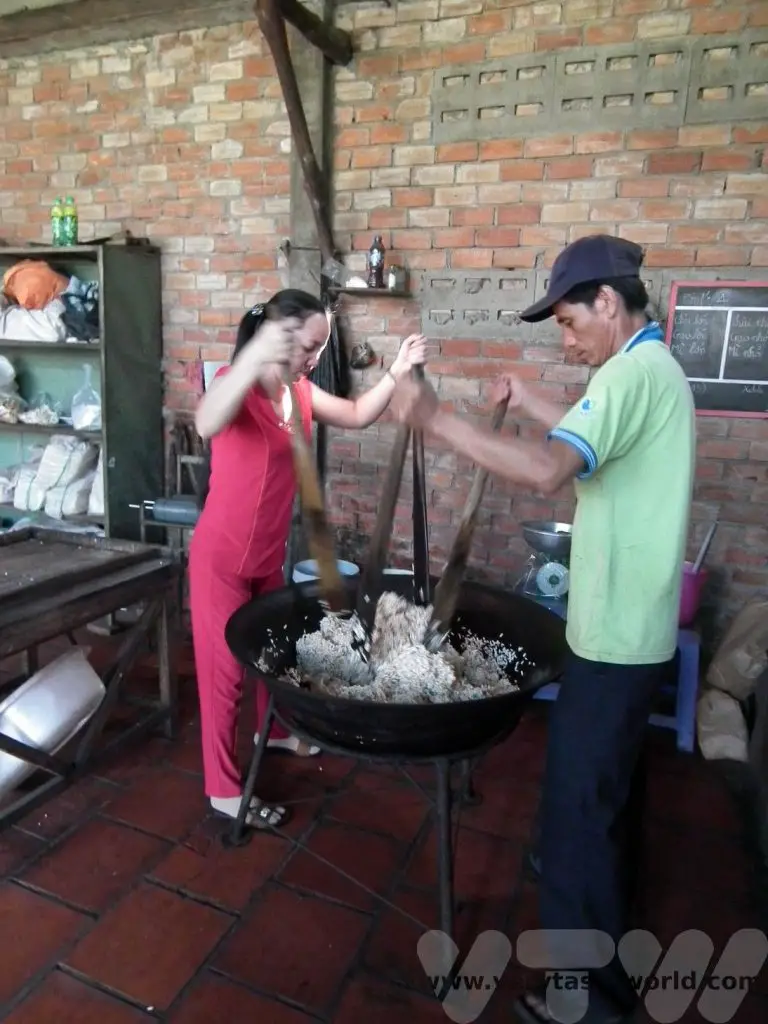
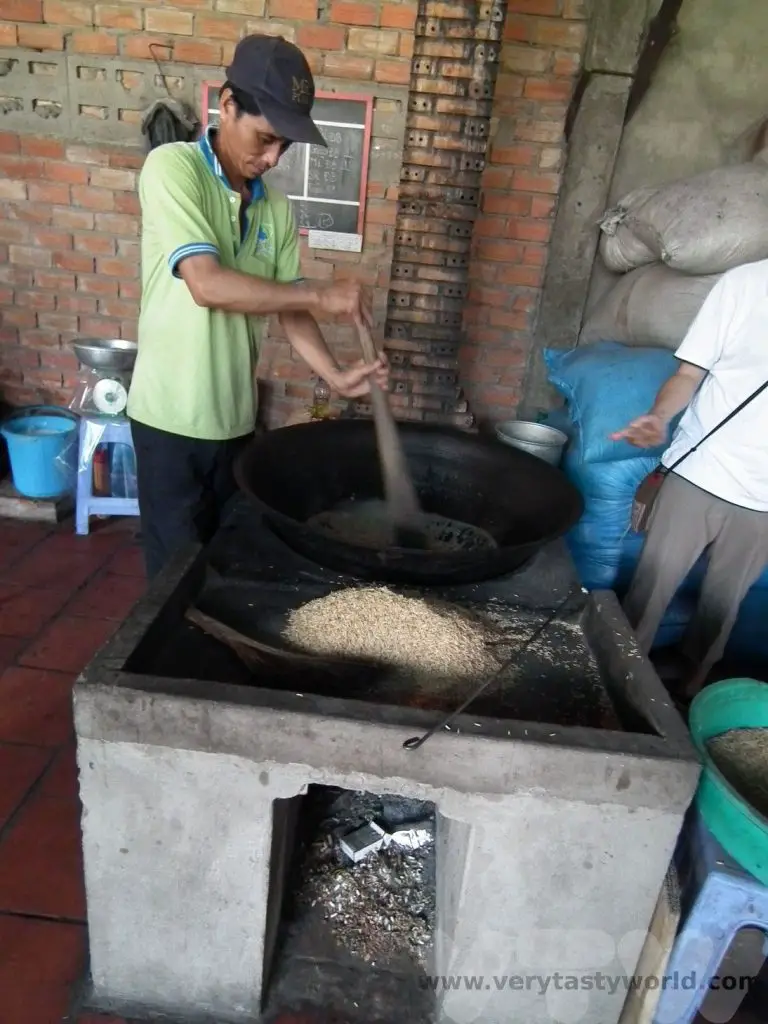
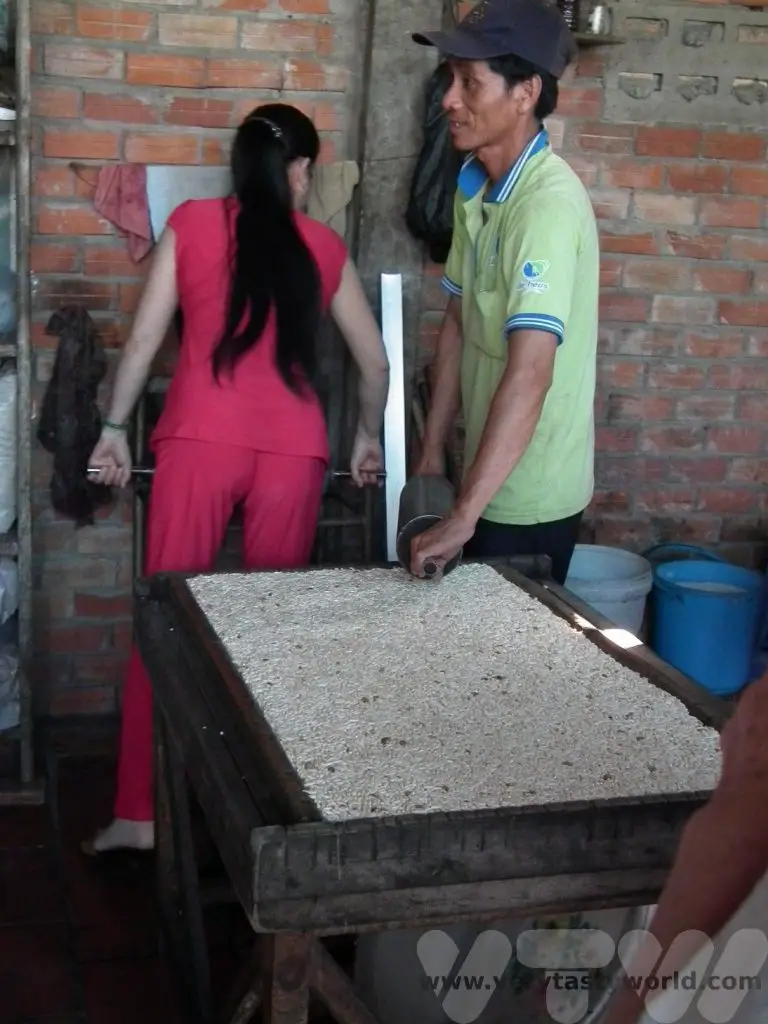
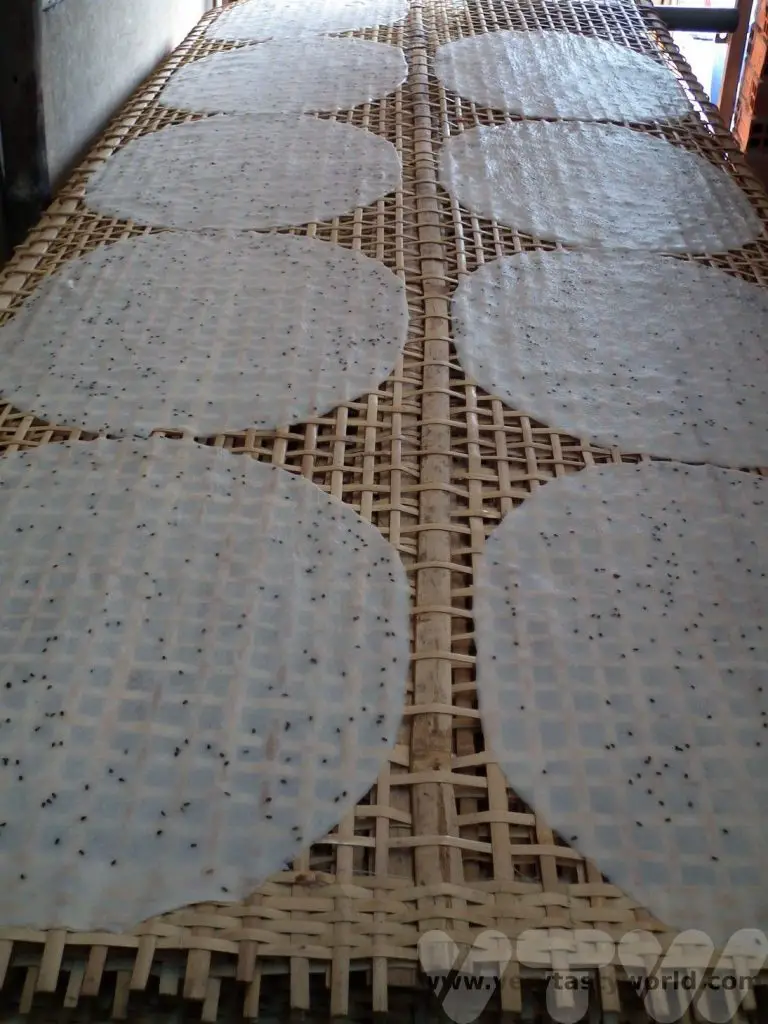
In making coconut candy, shredded coconut is used to make coconut milk and cream which is combined with sugar and malt syrup and then heated and mixed together.
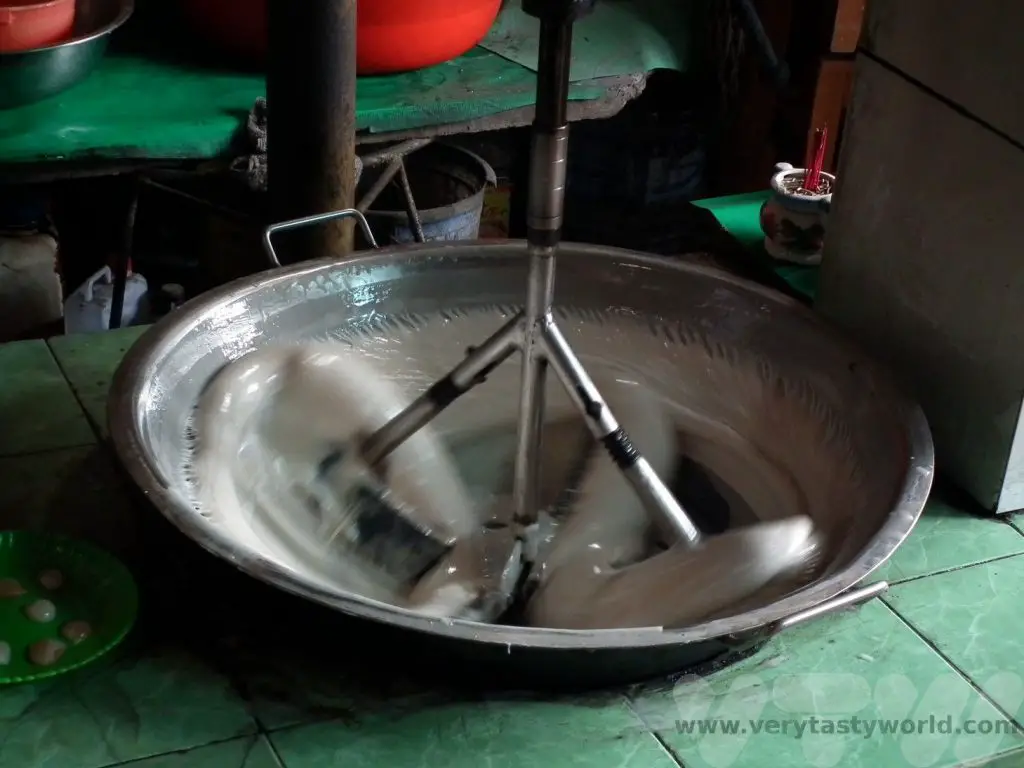
Whilst still warm, the mixture is then laid into strips to cool and then they are cut into bite-sized candy pieces.
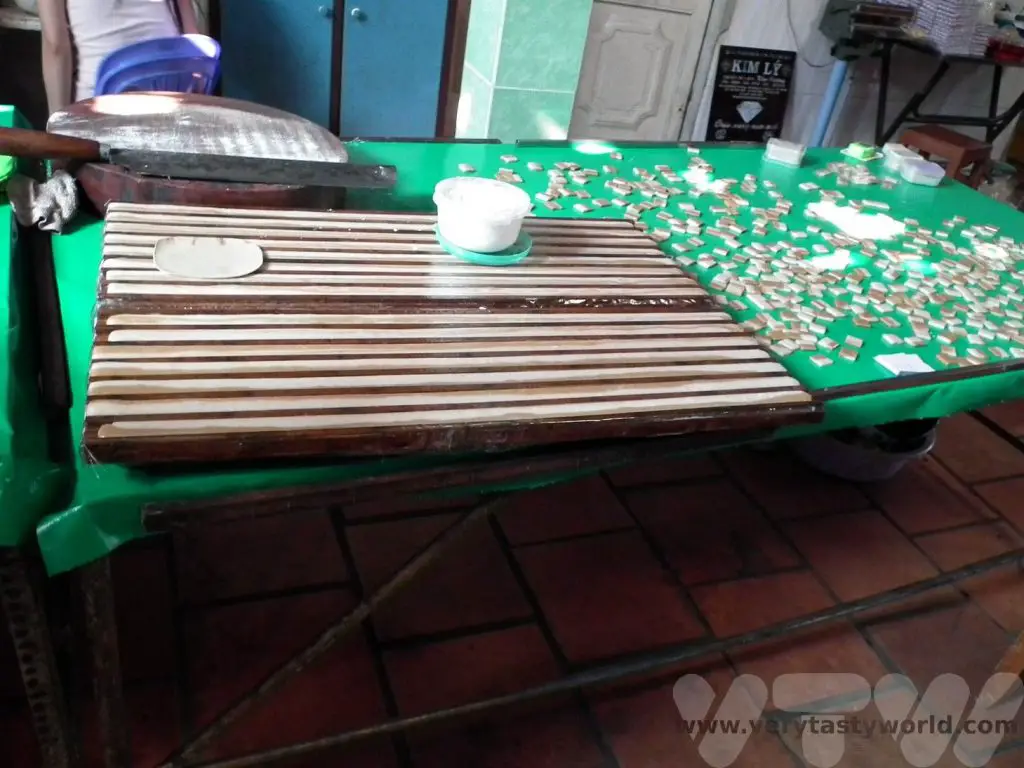
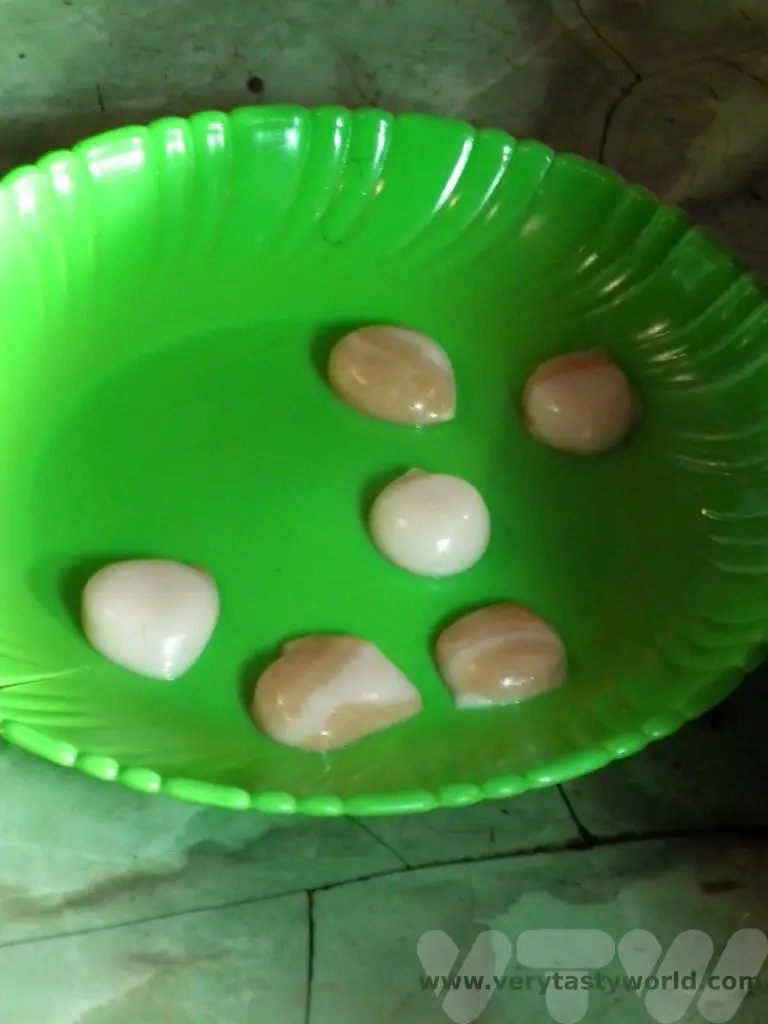
Related Posts You May Enjoy

Japanese New Year Food and Traditions – New Year in Tokyo
Visiting in Tokyo in December is a great way of understanding Japanese New Year food and traditions, one of the country’s most important celebrations.
While Christmas Day is a normal working day in Japan (albeit one where it has become a custom to eat Kentucky Fried Chicken of all things – there’s a really interesting programme on the BBC World Service about this tradition), many businesses tend to close down for the new year period, usually from around the 28th December to the 4th January. Certainly most will be closed on the 1st to the 3rd January but some businesses may close for longer in order that proprietors and employees can spend time with their families. This means that if you are sightseeing, some ryokan may not be receiving guests and some museums and attractions will be closed.
We were in Japan around new year 2019-2020, our last trip before the world changed so dramatically.
See the Lights in Shibuya
Shibuya is a vibrant, bustling district in Tokyo which has loads of shops and restaurants. Its most famous features are found close to the station.
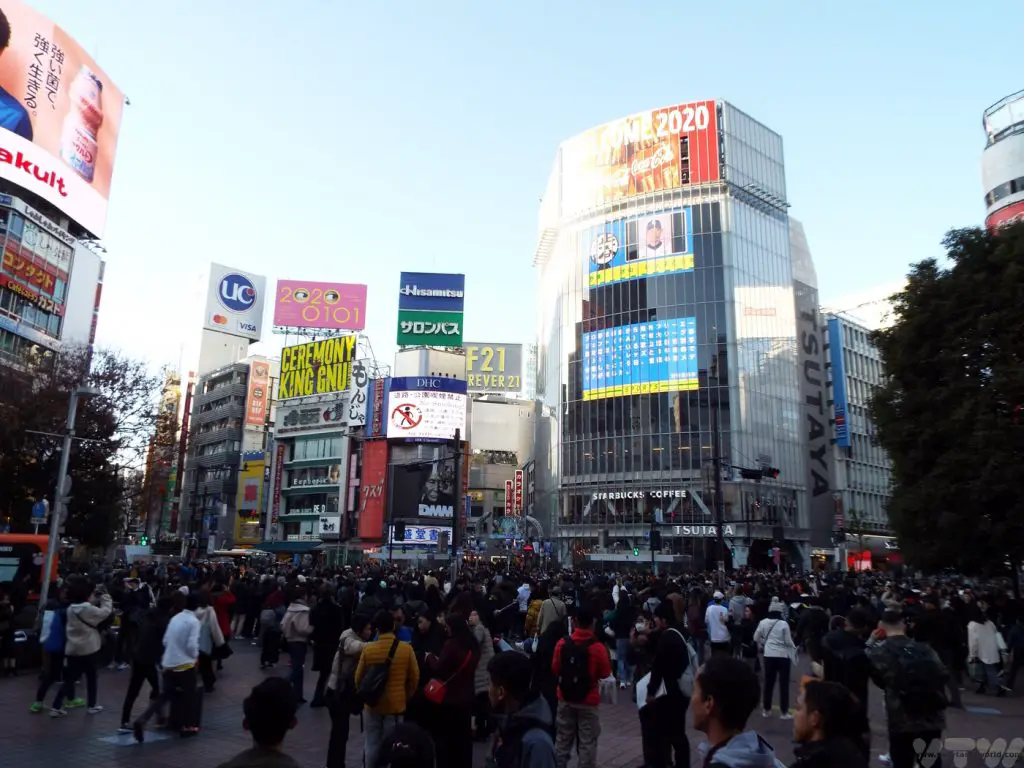
Its road crossing is possibly one of the best known in the world as it has featured in numerous films and adverts.
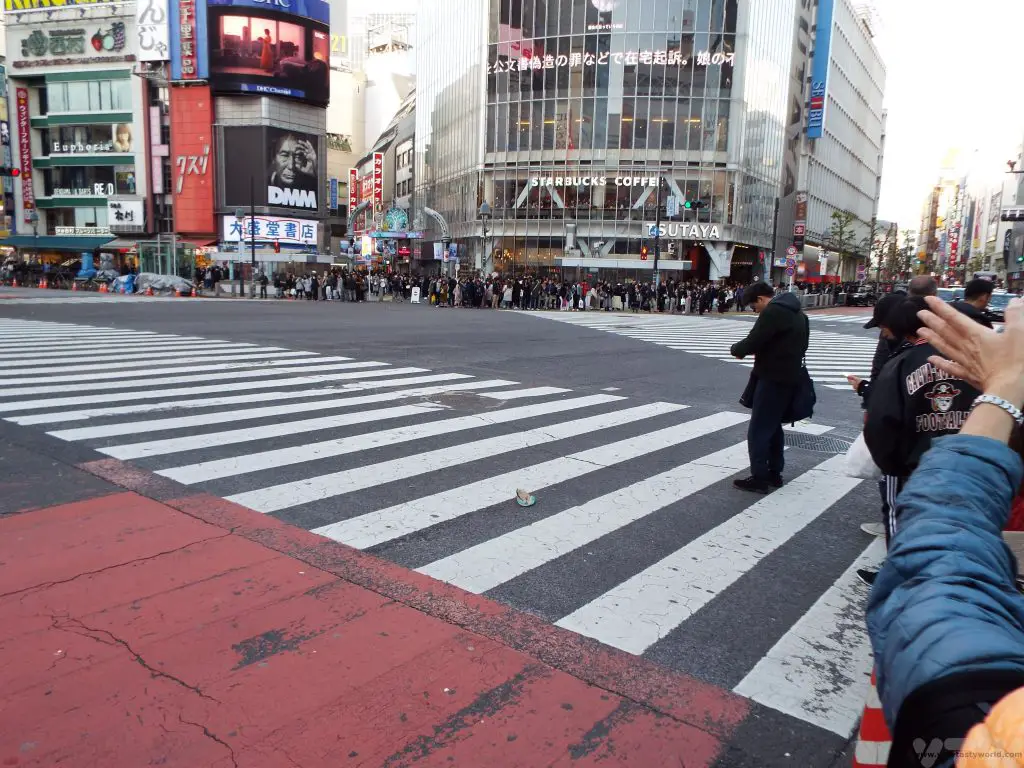
Apparently its nickname is ‘scramble’ because at its busiest time over 2,500 people can cross the road in the two minutes that the pedestrian lights allow.
As new year approaches, the crossing was the place to join the celebrations for those wanting a party. We visited in the afternoon as preparations were underway and also got to see some of the lights in the surrounding area.
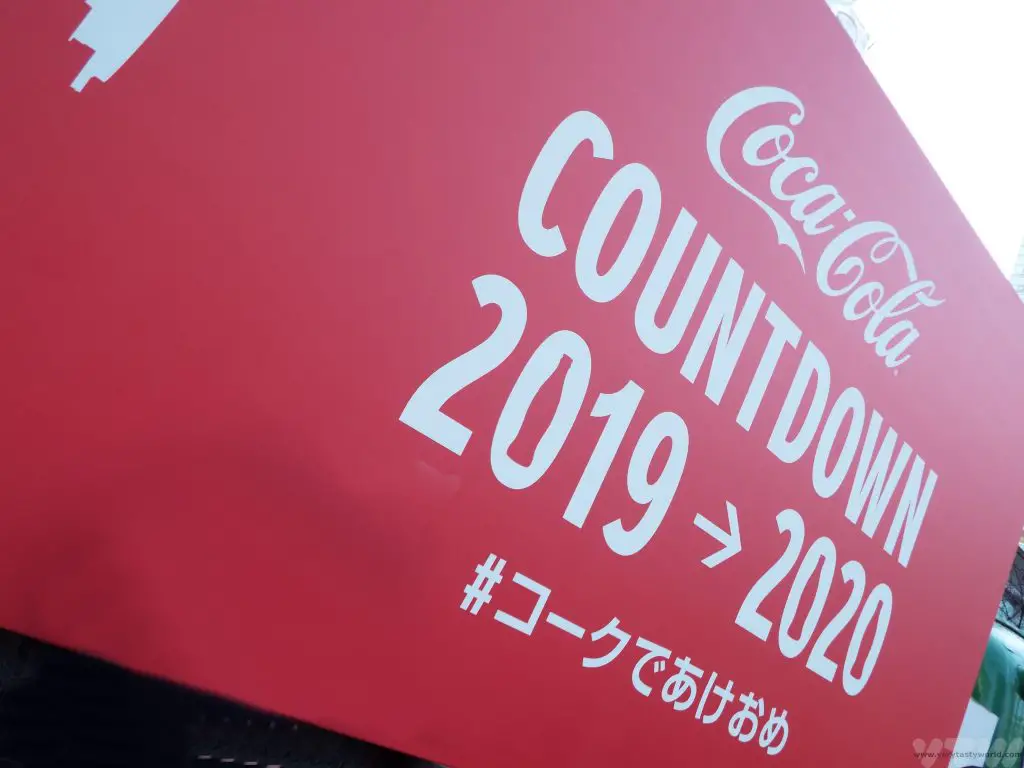
The statue of Hachiko is a famous Shibuya landmark. Hachiko was an Akito dog owned by a professor in the 1920s. The professor used to go to work and each day his dog would wait for him to return at the station in the evening. The professor died in 1925 but Hachiko would still wait for him every evening for a decade until his own death. It’s a very moving story of canine loyalty and a statue was erected to the dog outside the station in 1934. Of course, he is dressed for the occasion at this time of year.
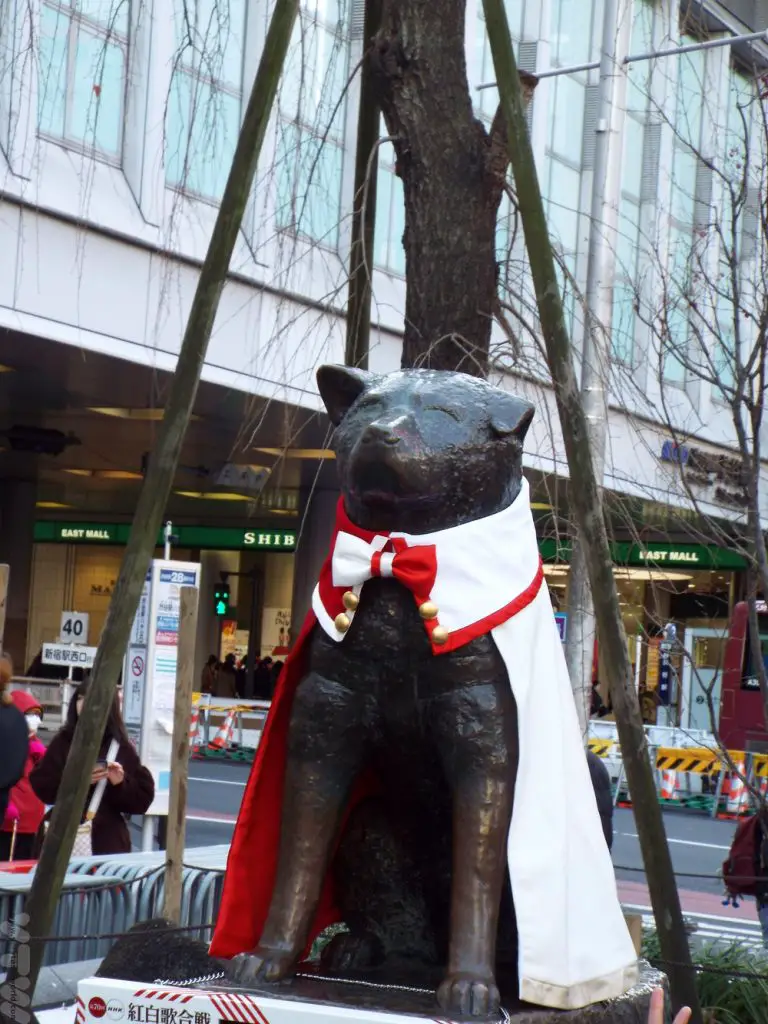
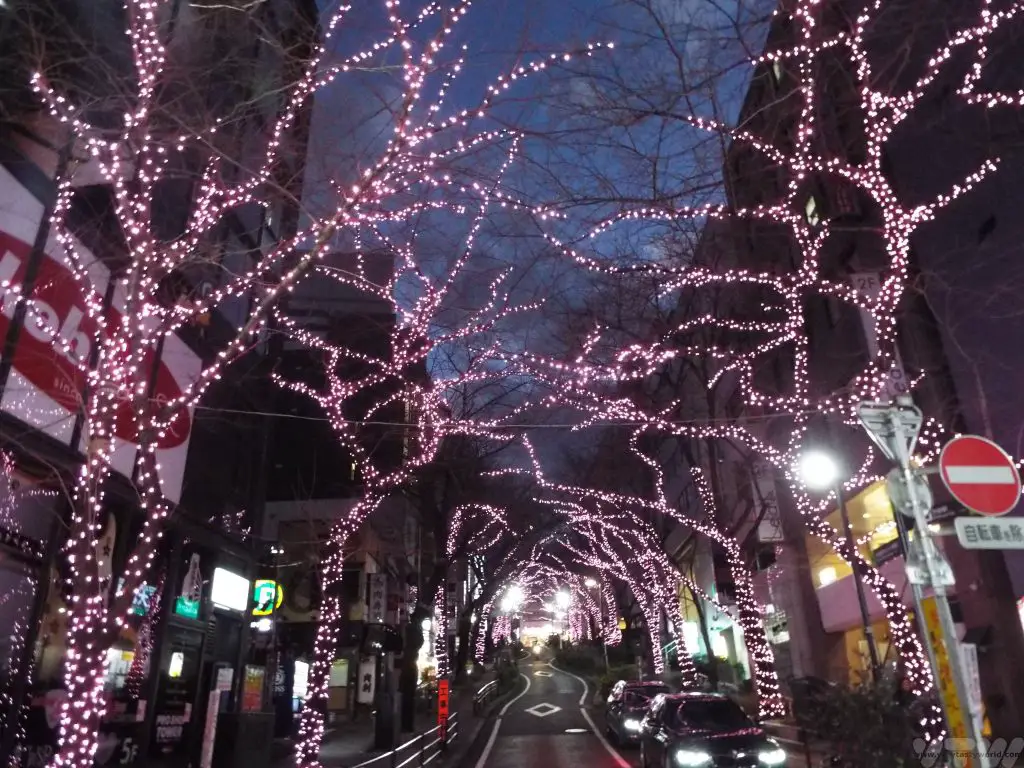
Japanese New Year Food –Noodles in Shinjuku
One of the traditional things to do on New Year’s Eve is to eat Toshikoshi Soba – year-end noodles. The principle is that long noodles equate to a long life, so they represent longevity and good luck. This is a popular tradition and soba shops are likely to be busy on New Year’s Eve. We had a wonderful meal with a dear friend at lunchtime at the food hall in Takashimaya Times Square, the vast department store just south of Shinjuku station, which has a variety of wonderful restaurants located on the top two floors. We chose the soba restaurant there. We had to queue for around 40 minutes which wasn’t a problem – it had such a nice atmosphere.
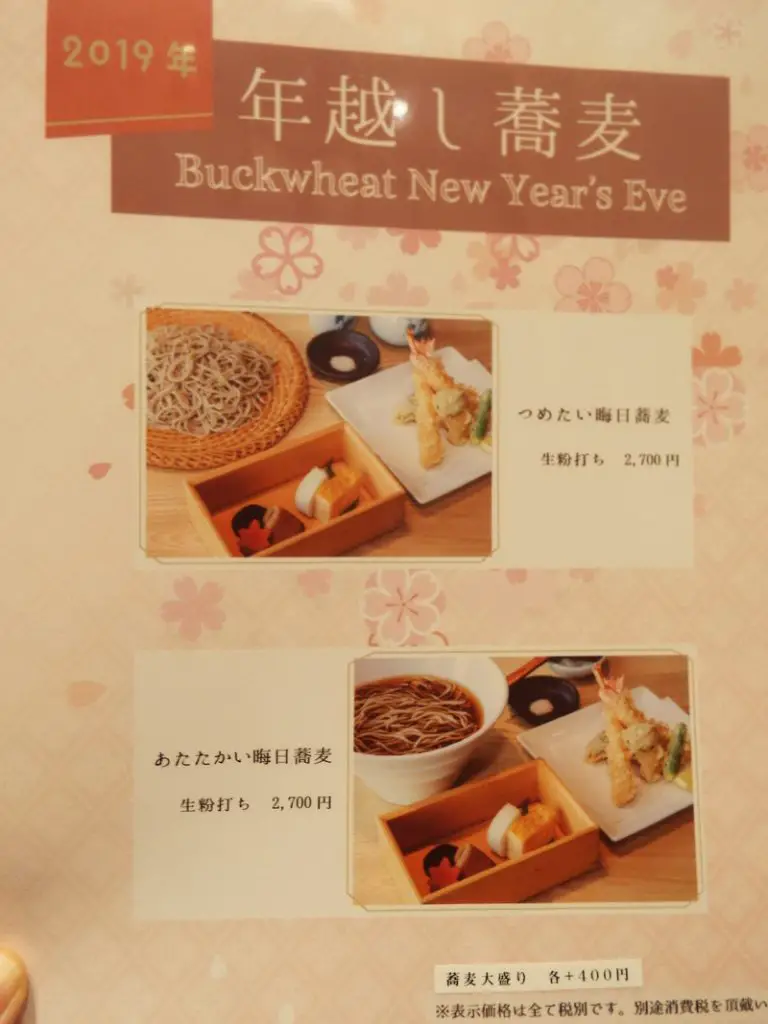
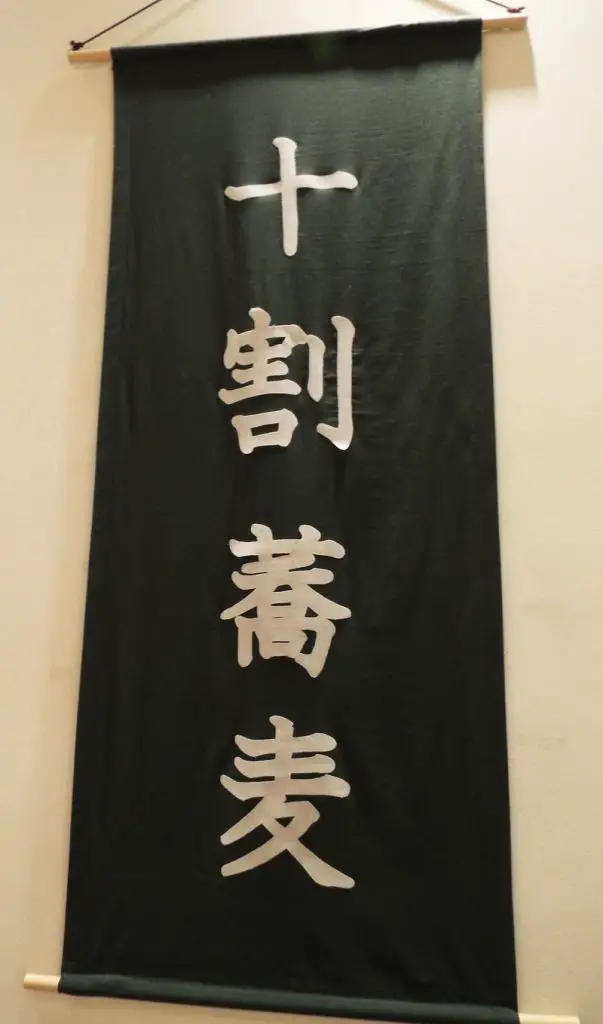
Once seated you are not rushed to finish your meal, even though there will be people waiting outside. If you want to dine on noodles in the evening your wait may be much longer – we saw very long queues in Shinjuku later that night.
We ordered the set menu which came with tempura and other treats. It wasn’t cheap but it wasn’t bank-breakingly expensive and the entire meal was simply divine.
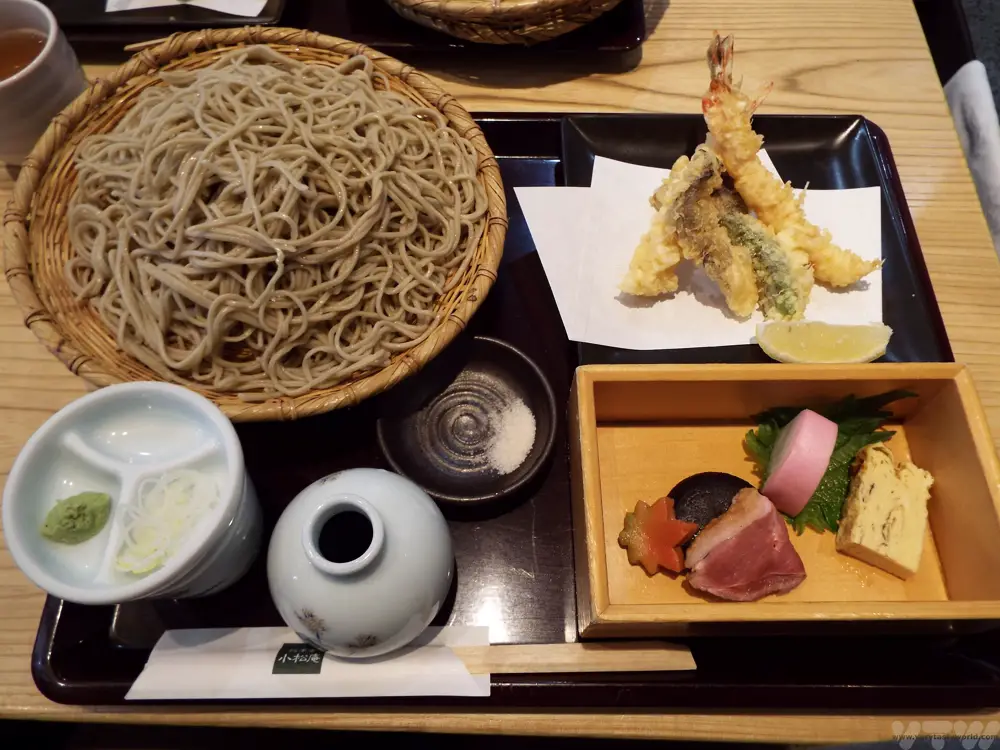
The noodles are presented on a traditional platter and appear to arrive in the most enormous mound but, on closer inspection, actually have been cleverly placed on a conical tray.
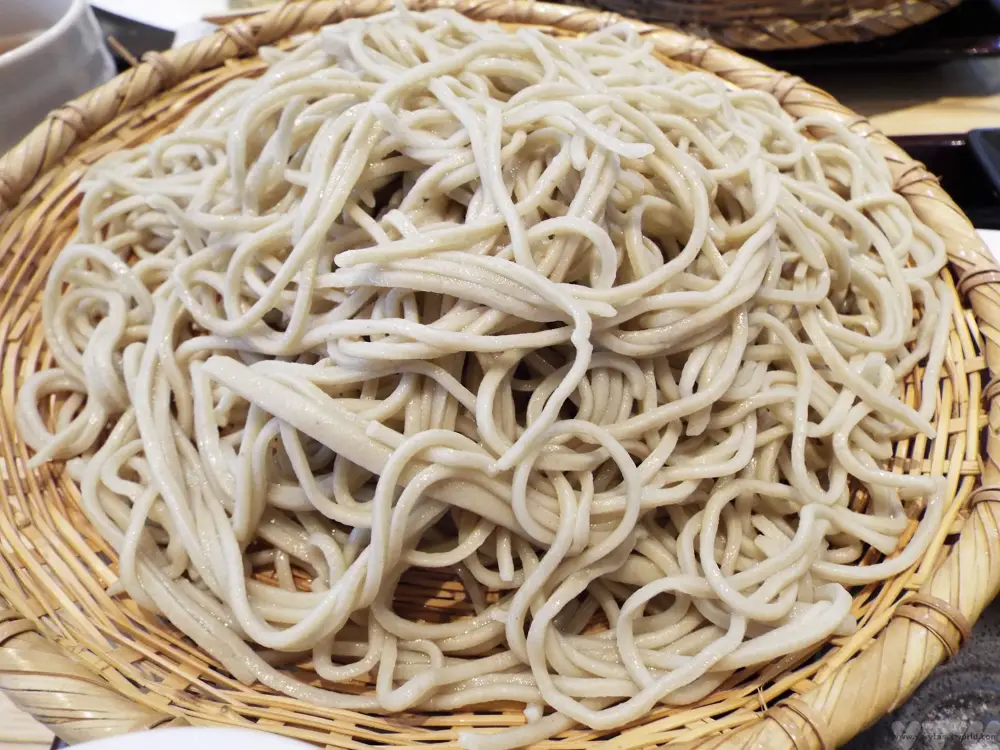
Soba are buckwheat noodles that can be served hot or cold – on a winter’s day, hot was definitely the best way to enjoy them.
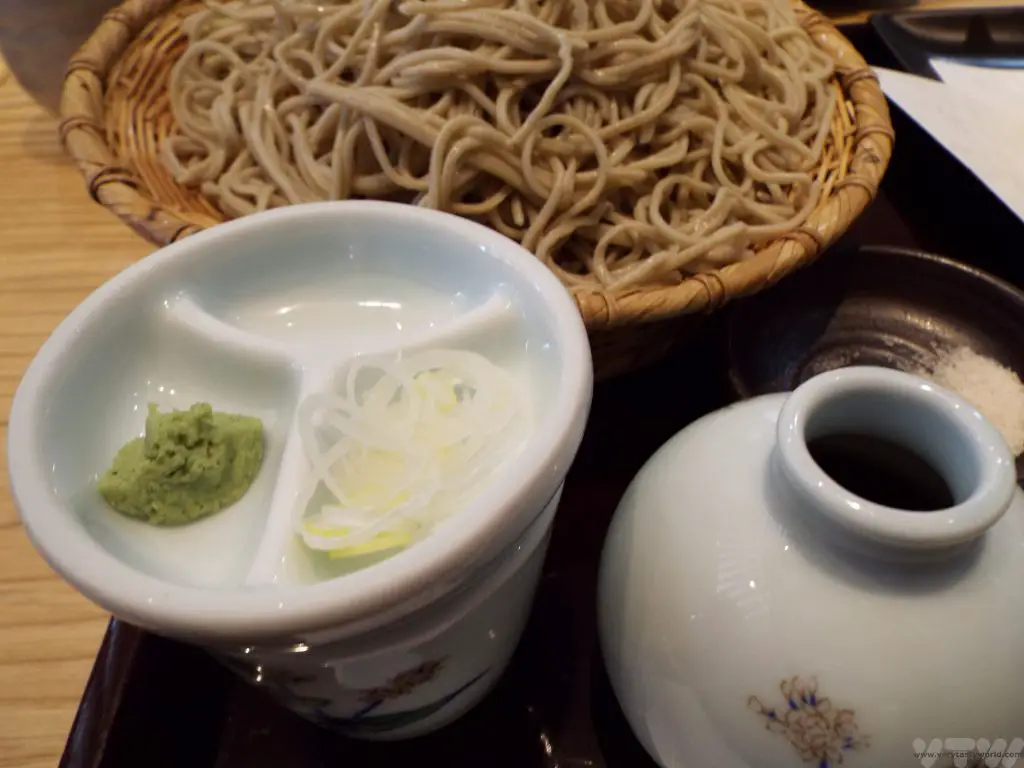
You are provided with a broth which you can season to your liking and then you dip the noodles in the broth. It is polite to slurp in Japan! (Which, when you’ve been brought up not to slurp your soup, is surprisingly difficult!)
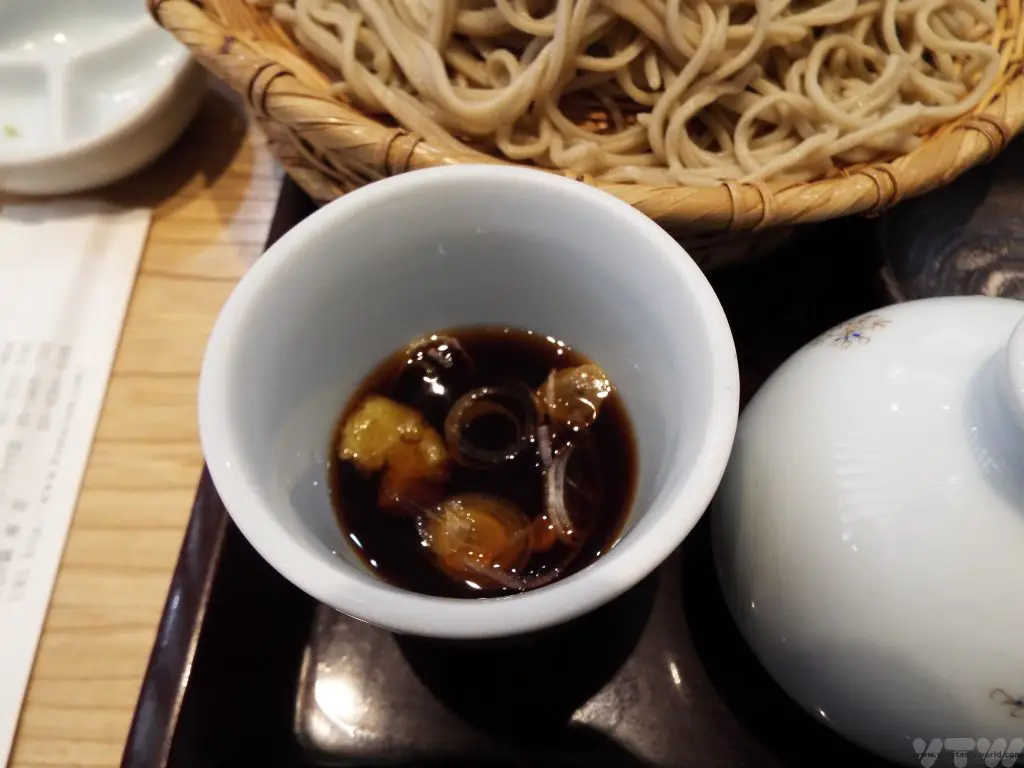
As we were finishing the restaurant staff came around with a small teapot filled with a hot, white opaque broth. This was sobayu, the water that that the noodles had been boiled in. We mixed it with our leftover sauce, added any further condiments and drank it – it’s a very satisfying way to finish off the meal.
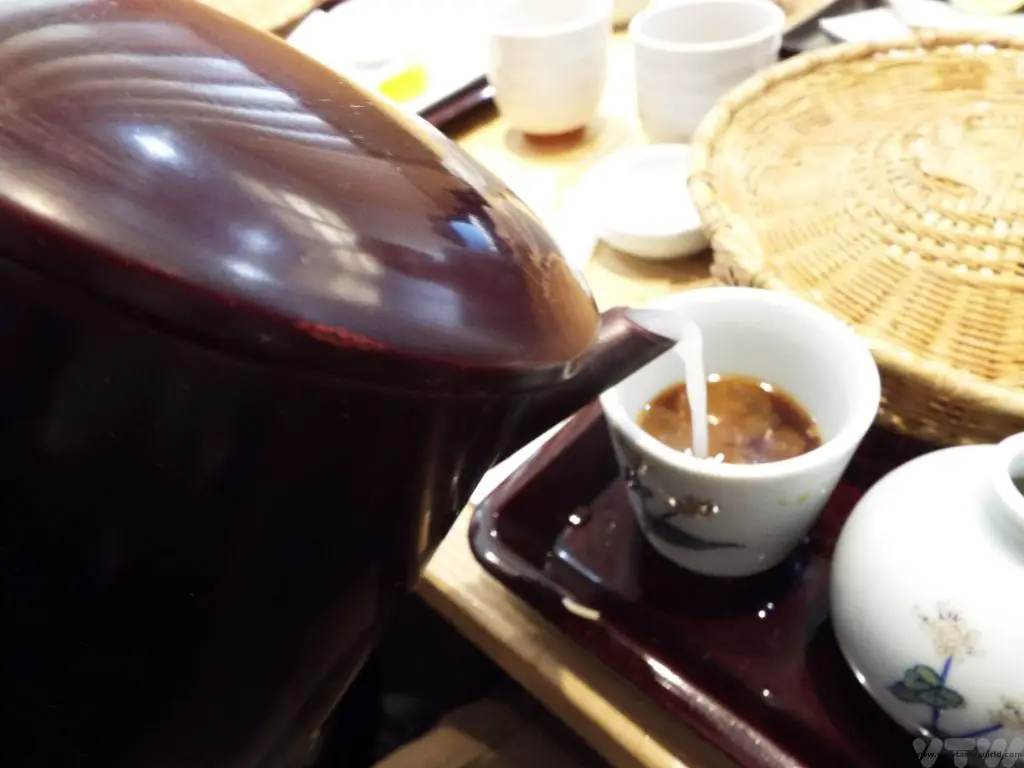
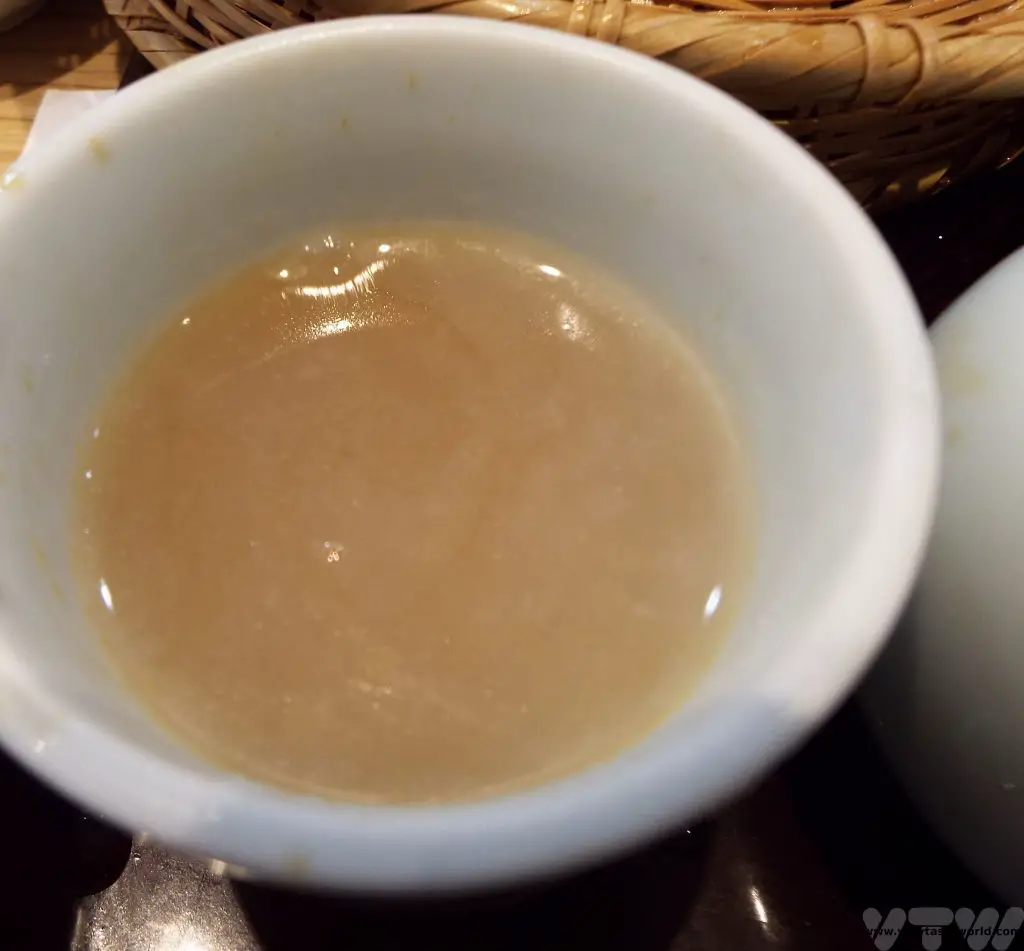
Back To The Hotel to Watch TV
New year is a family time and one particular Japanese new year tradition is that people stay home to see the new year in together. Kōhaku Uta Gassen is the NHK (the national broadcaster) TV channel’s new year show which has been running since the 1950s. It is a national custom to watch Kōhaku on New Year’s Eve. The format of the show is that popular singers, musicians and bands are invited to join and each are assigned to one of two teams – red and white. They each perform throughout the evening and the audience and judges decide which team was the best. Quite often western performers will take part as well. At the end of the show, just before midnight, everyone sings Hotaru no Hikari, a song similar to Auld Lang Syne. We spent some time in the early evening at our business hotel to catch some of the songs before heading out to see in the new year.
Seeing in the New Year
There are several choices depending on how you are feeling. Shibuya was the place to go for a party atmosphere. The famous road crossing was usually filled with people waiting to see the new year in and the atmosphere guaranteed to be lively. However, in recent years, the event in Shibuya has been cancelled (even post-Covid), so check the local news if you are planning on going out. Other locations include Tokyo Tower, which has a countdown to the New Year, and Tokyo Disney and Disney Sea has traditionally had fireworks displays on New Year’s Eve. There will also be celebratory parties and countdown events in hotels and izakaya across the city.
We chose to visit the Meiji Jingū. It’s one of Japan’s most important shrines, a Shinto shrine, just a couple of stops from Shinjuku, where we were staying. Meiji Jingū is a lovely place to visit at any time. It is set in a large, forested park which is very pleasant to wander through and is a completely serene contrast to the hustle and bustle of neon urban Tokyo. There are several JR stops that you can use to reach the shrine. We disembarked at Harajuku, the district where the cool kids hang out, and followed the crowds heading towards the shrine. We arrived at around 11:30 pm and were by no means the first people there. It’s a pleasant stroll from the beautiful wooden Torii at the entrance.
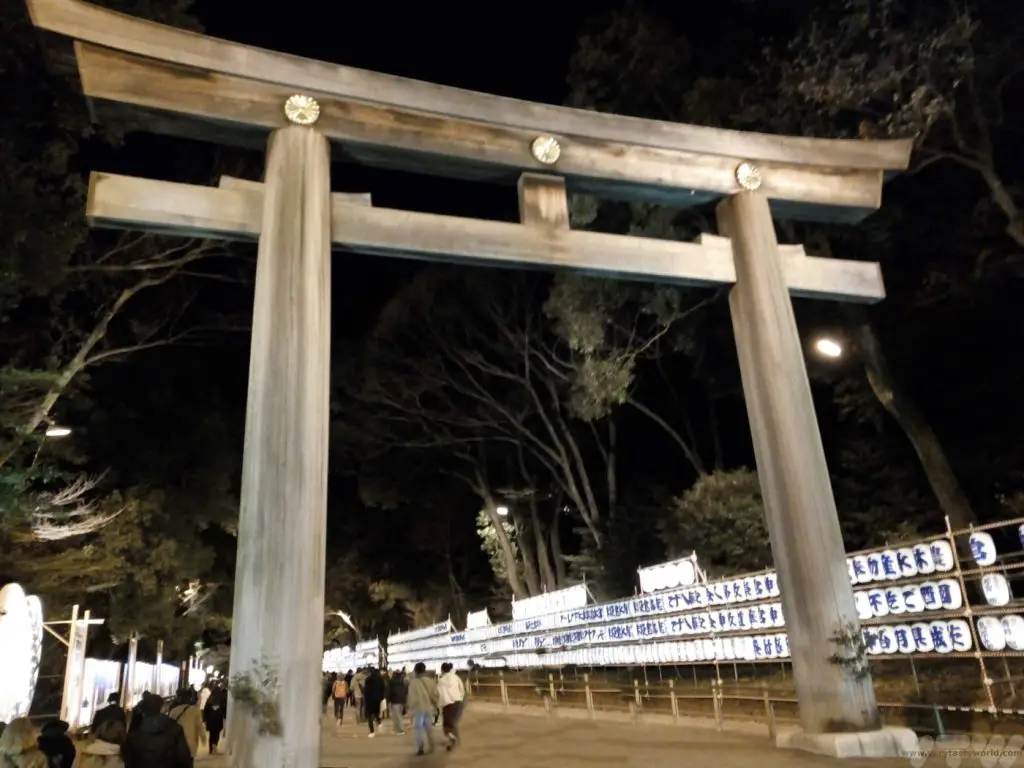
You need to bear in mind that it’s a one-way system as you walk through. You will see traditional lanterns and rows of sake barrels along the way.
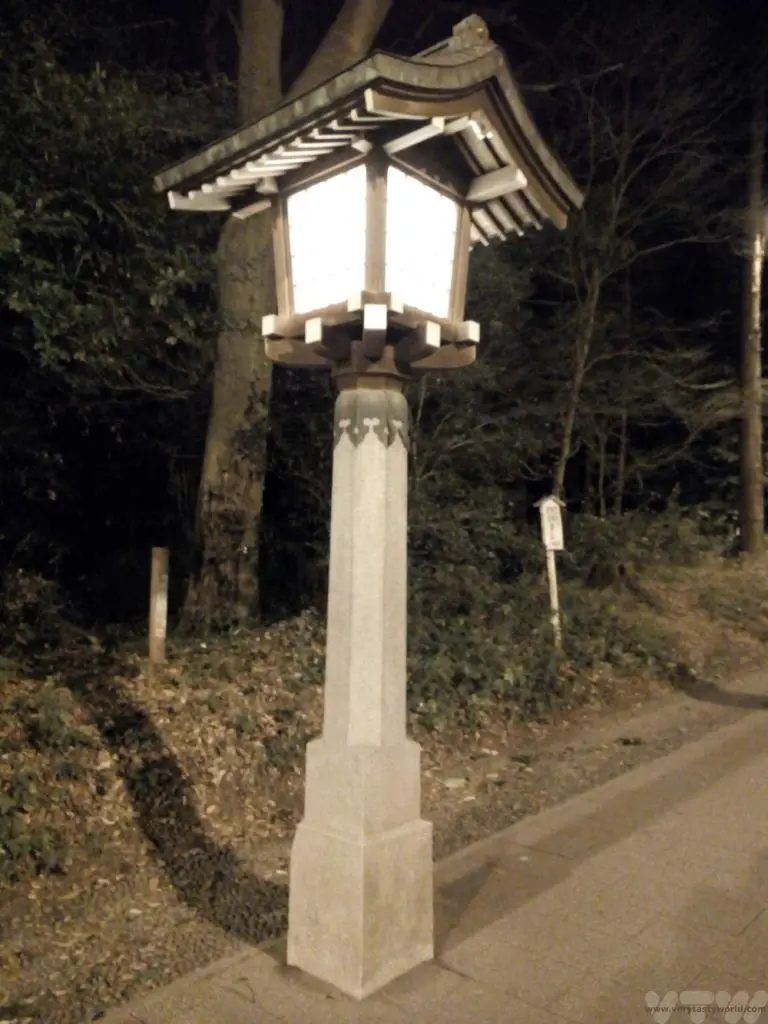
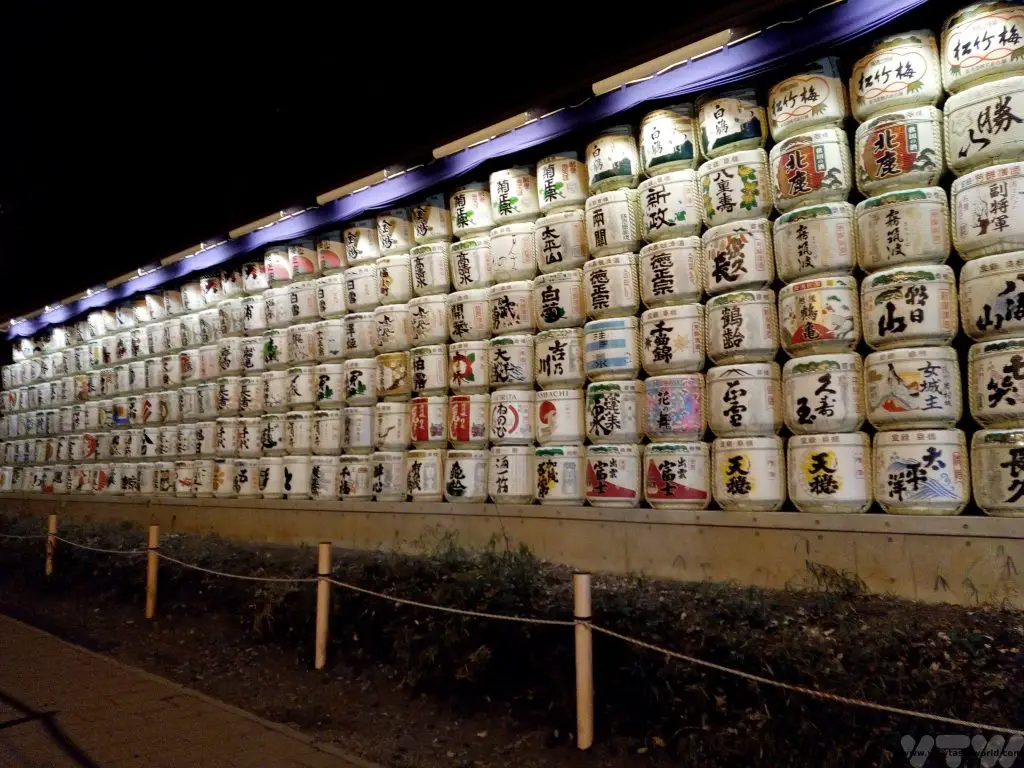
Then we stopped at the barrier which had TV screens showing pictures of the crowd as it assembled and the shrine itself. We weren’t too far from the front but were still some way from the shrine. Even though the area was very crowded, everything was typically well-organised and there was a quiet buzz of excitement.
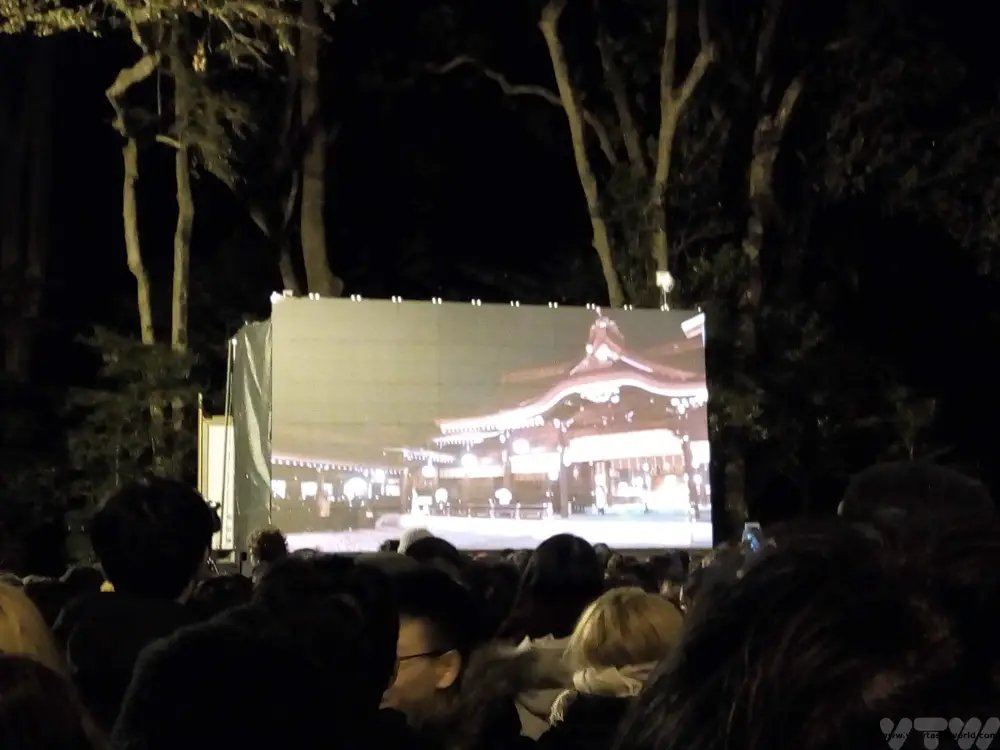
As the new year dawned 108 bells rang out. This is actually a Buddhist (Japan’s other main religion) custom, the number represents 108 temptations and the bell ringing is to reject 108 worldly desires. The bell is actually rung 107 times on the last day of the old year and just once after midnight. The bell rings aren’t uniform in length – some of the bells are rung in quicker succession than others.
We were reasonably close to the front at the Meiji shrine but it still took us around 45 minutes to reach the Naien, the inner area, which contains the shrine buildings. Marshalls were present wielding signs in both Japanese and English and beckoned visitors either to approach, or to ‘wait a short while, please’ before coming forward. This means that smaller groups of visitors were able to visit the shrine and offer prayers without it becoming over-crowded. It was an excellent system, especially as everyone co-operated beautifully.
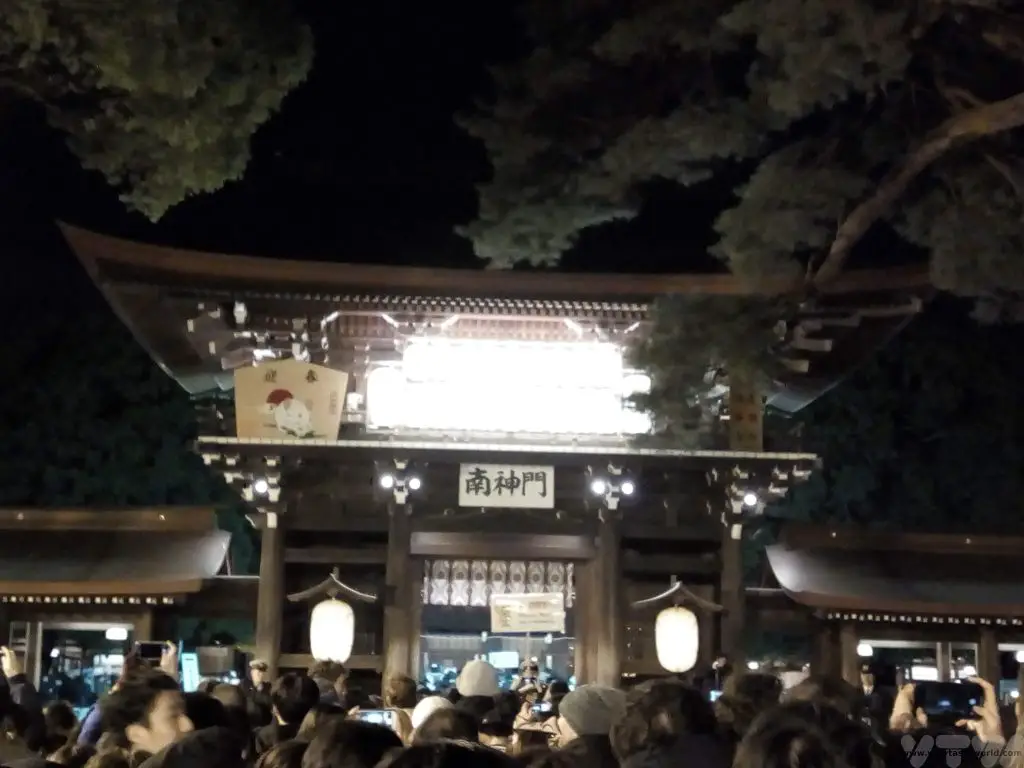
When it was our turn, it wasn’t really possible to undertake the full Hatsumōde but we threw our coins, bowed, clapped and made our wishes and prayers for the new year. The Meiji shrine is the most famous shrine to visit and apparently attracts over three million visitors in the first three days of each year. A lot of people don’t quite make it to the very front of the queue.
Outside the main temple area there are stalls with refreshments and it’s possible to hang out and enjoy the atmosphere. We then walked back to Yoyogi station, where we knew the platforms were likely to be less crowded than Harajuku, and we hopped onto a very full, but joyous, train on the Yamanote line, just one stop back to Shinjuku. As we arrived back at our hotel, a barrel of sake had been opened in the lobby and we were invited to partake of a cup. We greeted the hotel staff, ‘Akemashita, omedetou gozaimasu!’ – meaning: the new year has dawned, congratulations!
Hatsumōde – Visiting a Temple
Another Japanese new year tradition is visiting a temple within the first three days of the year. Although we had been amongst the first to undertake Hatsumōde at the Meiji shrine the night before, we met up with our friend in Kichijoji. (Also, because we were out at the shrine to see in the new year, we hadn’t found out whether the red or the white team had won Kōhaku, so she was able to update us with this important information.)
Hatsumōde is considered to be a very important part of welcoming the new year and there will be queues at temples. We met quite early and had to queue for around 30 minutes. It was all very organised and the atmosphere lively.
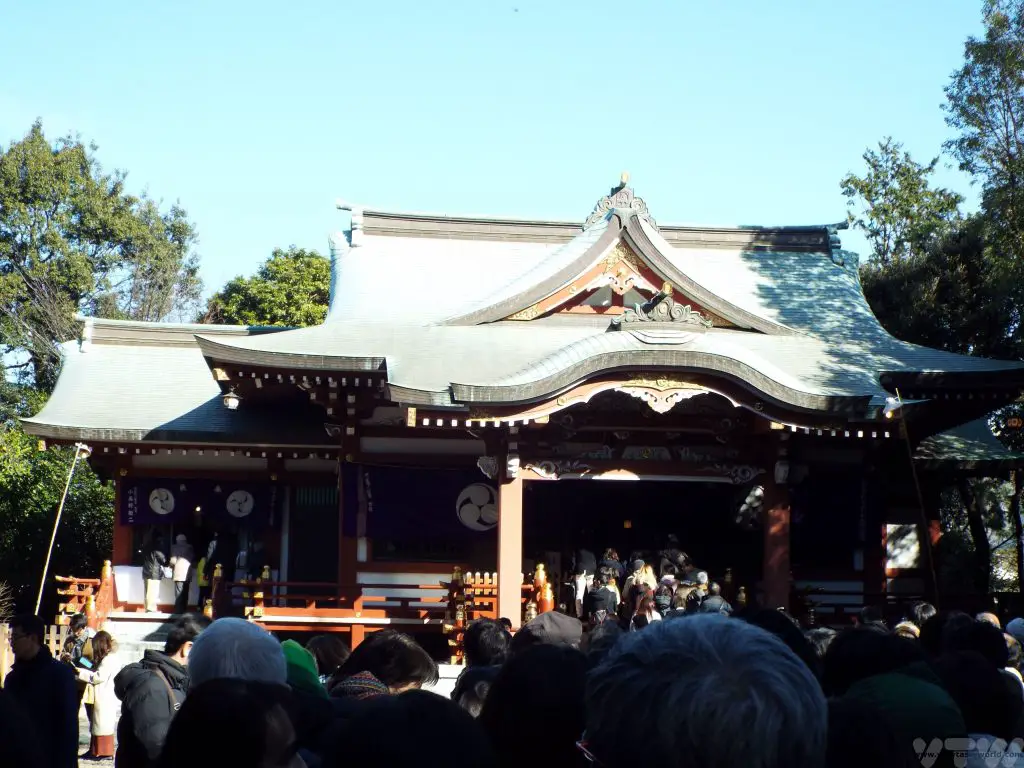
There is a certain ritual that one undertakes when visiting a Shinto shrine. It is absolutely fine for anyone from any religion, or none, to visit a shrine and make an offering. First of all, it is important to purify oneself before entering the shrine. This is called ‘temizu’.
Approach the chozuya, which is a small pavilion which contains a purification font filled with water. There are multiple ladles laid next to the basin. Holding the ladle in your right hand, pour water over your left. Change hands and repeat. Change hands and then pour a little water into your left hand and take it into your mouth. You aren’t supposed to swallow the water but to spit it delicately into the drain.
Then walk up to the shrine itself and make an offering by throwing a coin. The monetary value isn’t important but 5 yen and 50 yen coins are considered to be lucky. Go-en (5 yen) sounds like ‘goen’ which means ‘good luck’ in Japanese.
Then you should bow deeply, from the waist, twice, then clap your hands twice, to show reverence to the kami-sama (the god; kami can also be interpreted as a spirit). Keep your hands together for a silent prayer.
We were delighted to be invited to our friend’s family home to enjoy osechi-ryōri, traditional new year foods.
Japanese New Year Food
New year is a time for feasting and there are some dishes that are particularly associated with celebrations. Osechi-ryōri comprises lots of little dishes beautifully presented. Much of the food is prepared in advance so that the whole family can eat together rather than spending loads of time in the kitchen.
The quintessential Japanese new year food is mochi. These are rice balls made by pounding steamed sticky rice with a big mallet in a large wooden container to achieve a stretchy and slightly sticky consistency. This is then formed into little rice dumplings. They have an unusual texture – very soft and delightfully squidgy. New year mochi is called kagami mochi and comprises two mochi balls one set on top of the other, with a tangerine on top.
Mochi may be flavoured and/or filled with all sorts of ingredients. Matcha green tea, milk flavouring and azuki bean paste are popular fillings. Sometimes the mochi will have a sesame coating.
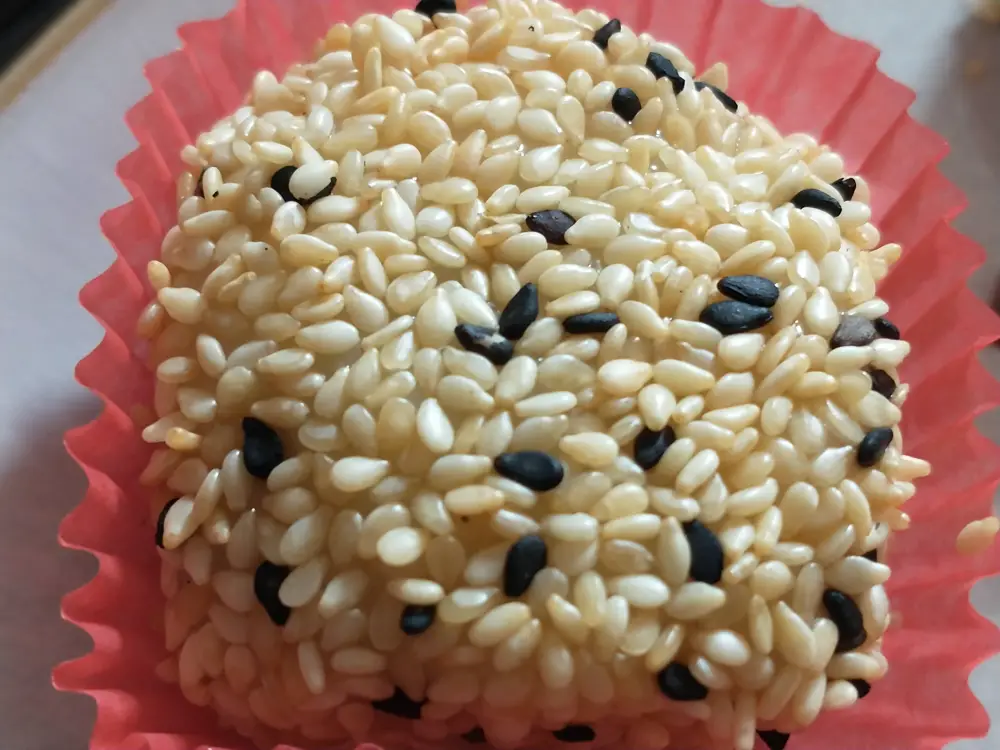
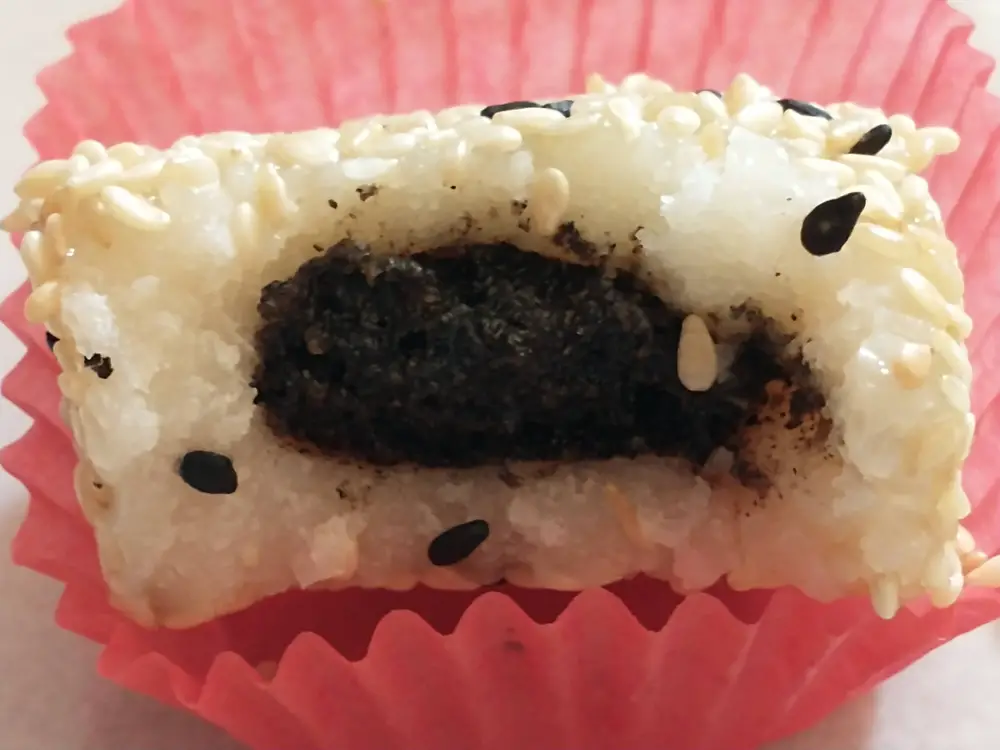
Matcha mochi with azuki bean filling is delicious:
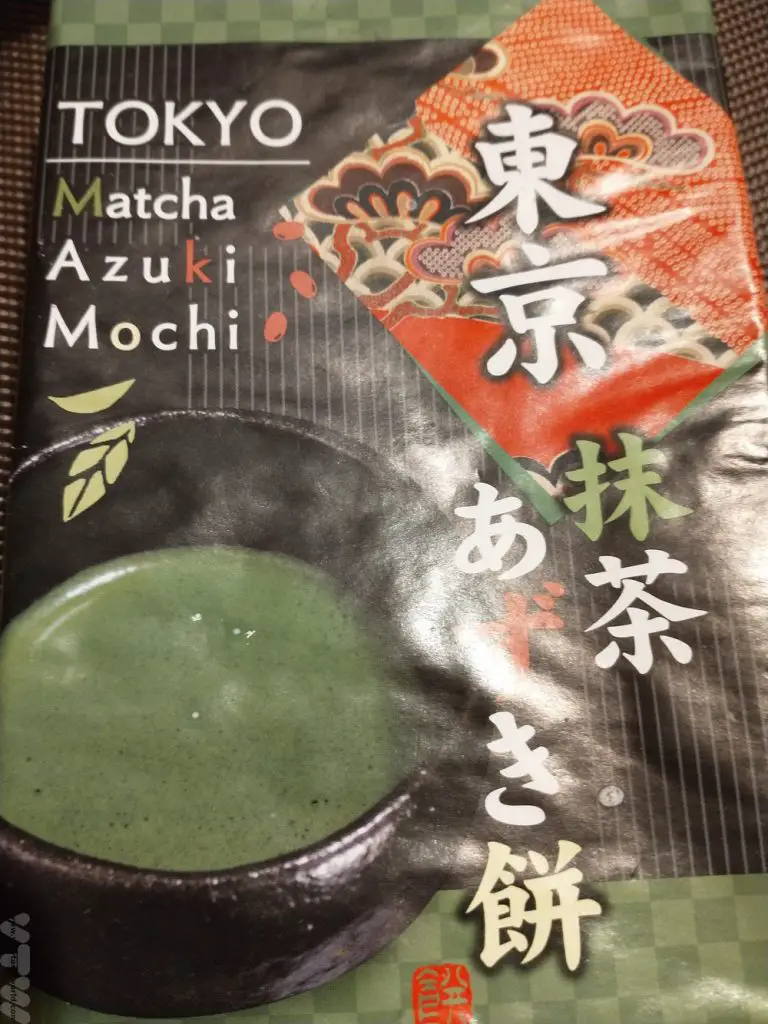
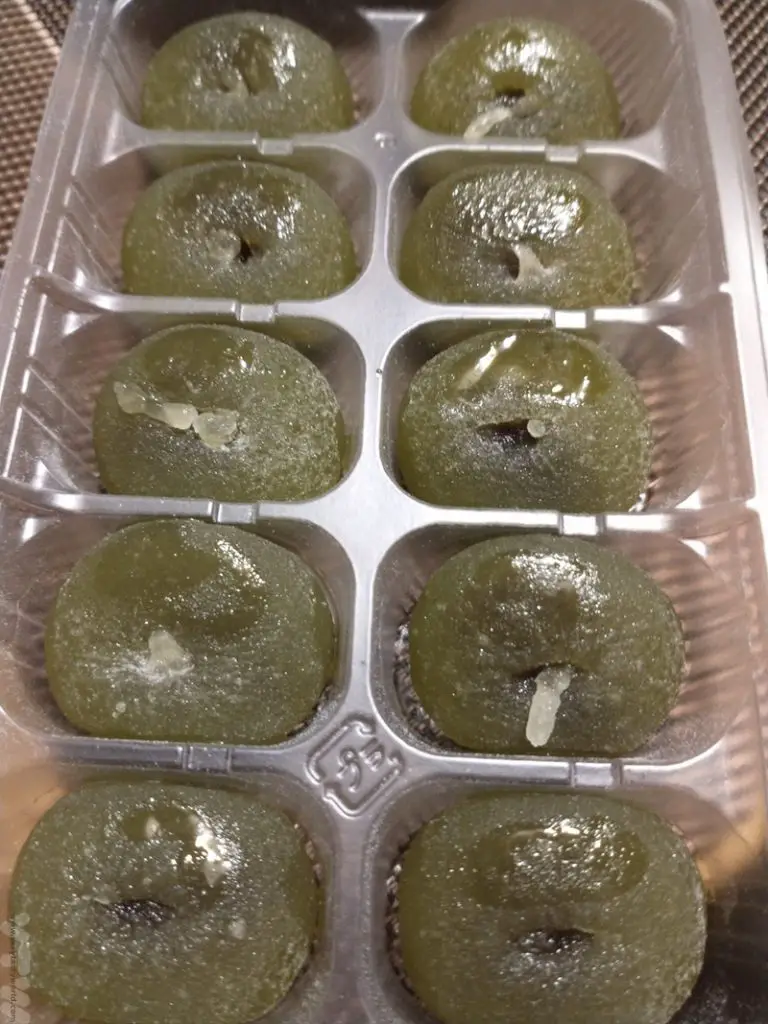
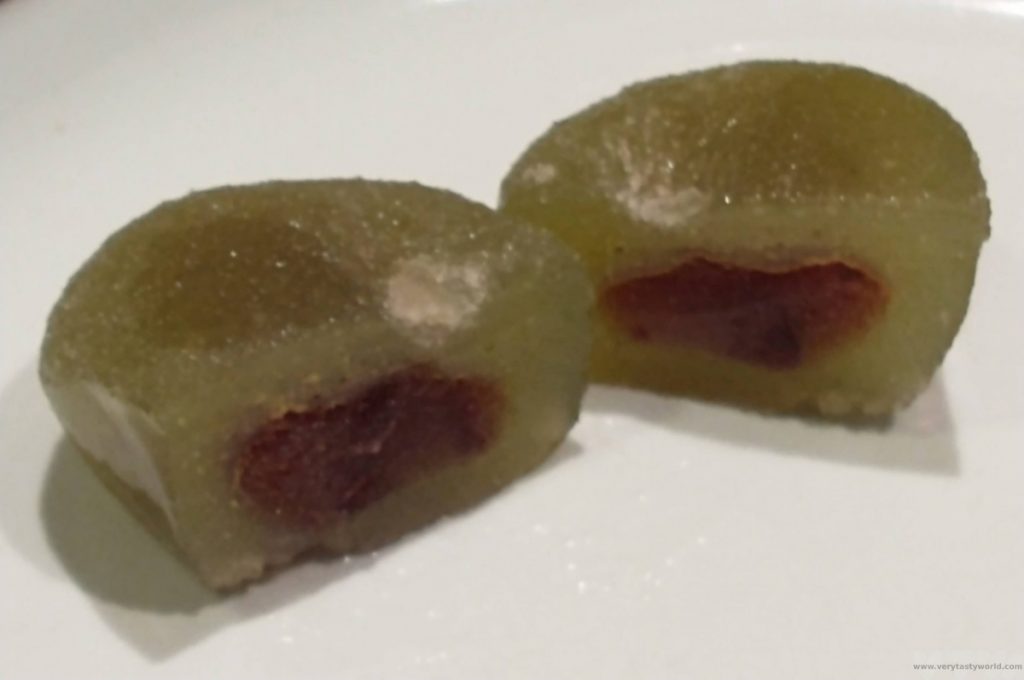
Kazunoko is a popular new year dish. It is marinated seasoned herring roe. The roe is yellow in colour and comprises hundreds of eggs all bound together. The texture is surprisingly crunchy and the flavour slightly salty. It is usually marinated overnight in ingredients such as dashi (Japanese stock), soy sauce and sake. We were lucky to enjoy home-made kazunoko marinated in sake lees and it was delicious. The multiple eggs in the roe are symbolic of a large family. The kuzunoko can be served on its own or with other delicious ingredients, in this case, with prawns and a scallop on top of cucumber.
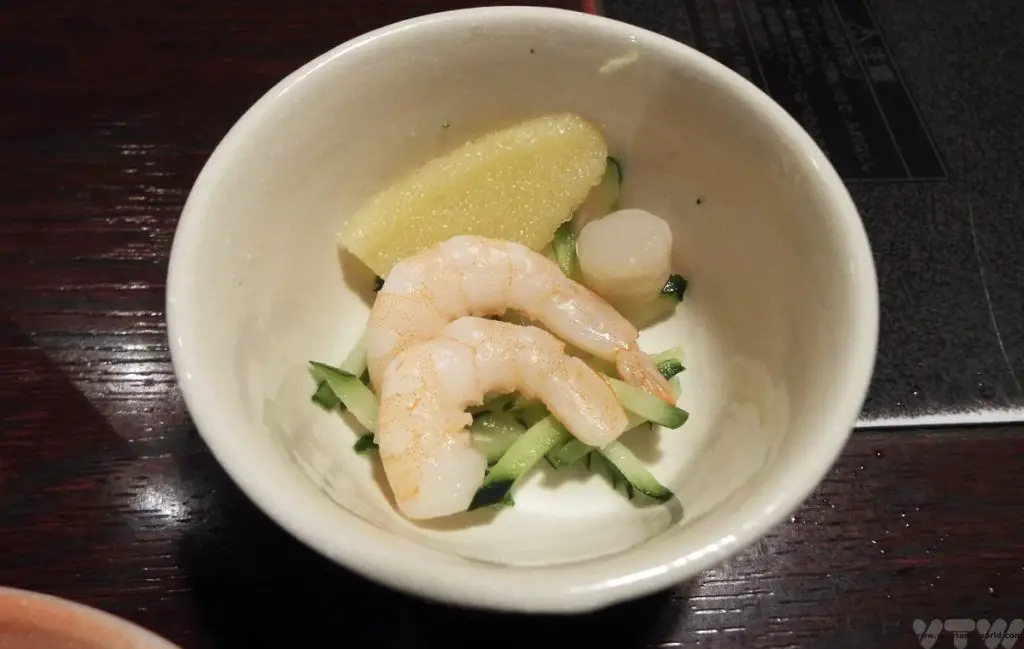
Kobumaki is a piece of kelp seaweed. It will have been simmered for a while to soften and is one of the Japanese new year food traditions is to present it in the shape of a bow. An alternative serving is a roll of kombu tied with a strip of dried daikon (a white radish); this is called hoshi daikon. Further variations include wrapping the kombu around a piece of meat or fish. The word ‘kombu’ also means ‘joy’ in celebration of a joyous day.
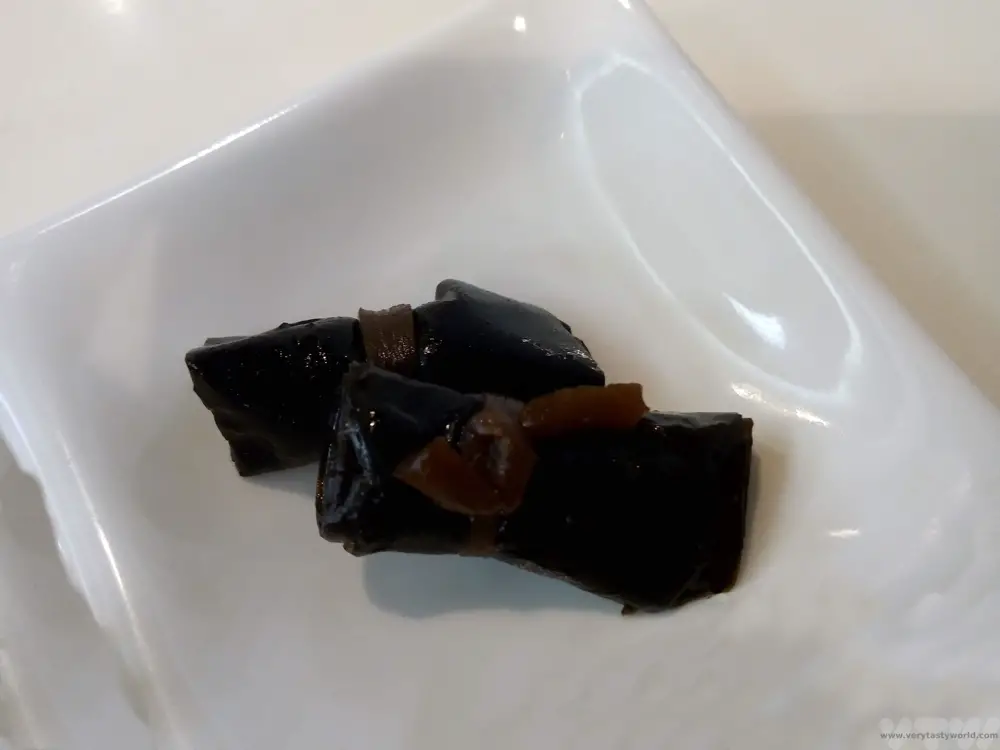
Sushi is not usually part of osechi-ryōri but it is a celebratory food and is often eaten on special occasions. It would be unusual for Japanese families to make their own sushi – they would leave it to the experts and buy some in.
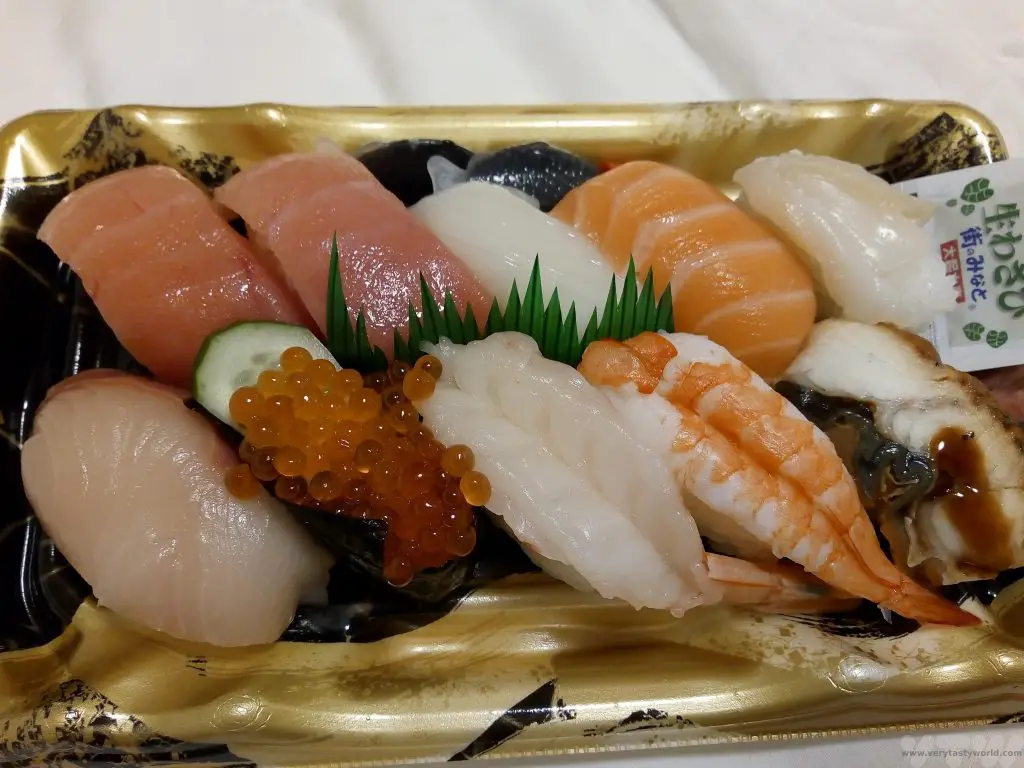
Retail Therapy
Another Japanese new year tradition is Fukubukuro. When the shops reopen many will offer lucky bags – sealed bags or boxes – containing random merchandise. The value of the goods inside are greater than the price you would normally pay and sometimes you may – by sheer luck – end up with some very cool products. We met up with a dear friend in Nakano Broadway the following day and found a Lucky Box stall. At just 300 Yen we didn’t have high expectations but it was fun seeing what was in the box.
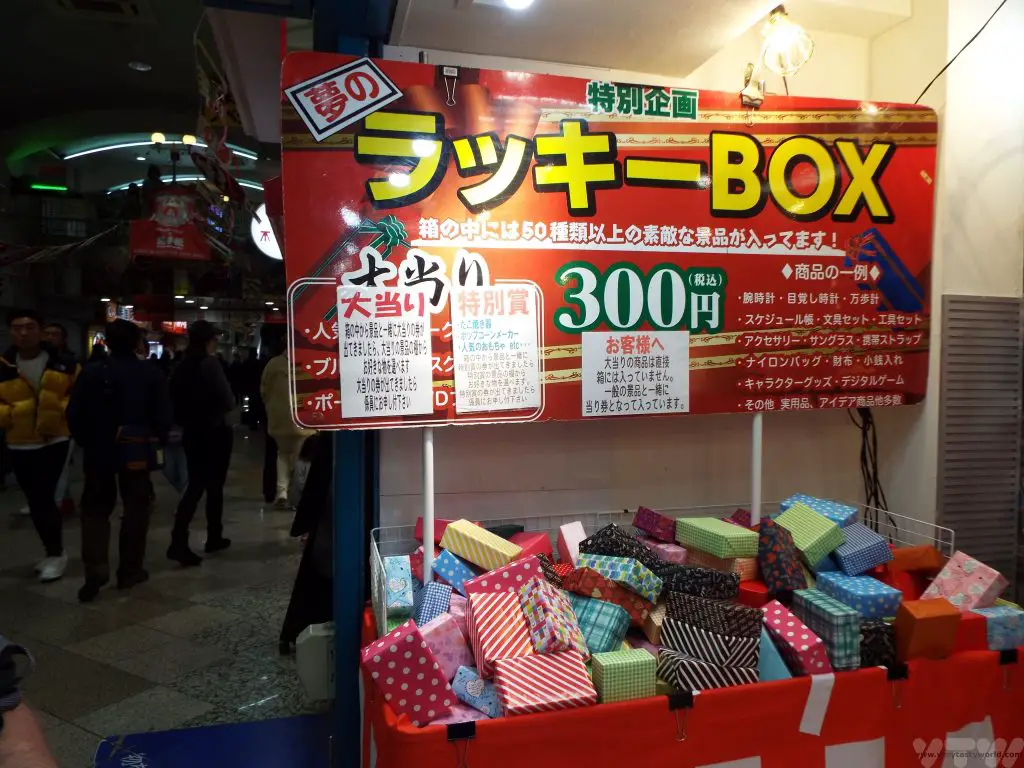
Related Posts You May Enjoy

- Recipe: Simmered Shiitake Mushrooms
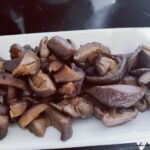
- How to Use Public Transport in Japan

- RECIPE Oyakodon Donburi

- Planning a Trip to Japan
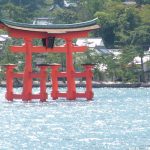
- The Makanai: Cooking for the Maiko House
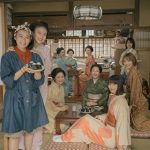
- Setsubun Food – Bean Throwing Day
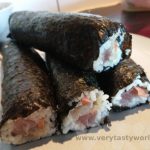
- The Gassho Farmhouses of Rural Japan
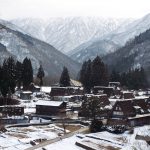
- Recipe: Japanese Simmered Pork Belly – Buta no Kakuni

- RECIPE: How to Make Umeboshi

Happy SinterKlaas – A Celebration of the Netherlands
Happy Sinterklaas! The Feast of Sinterklaas (a contraction of St Nicholas) is celebrated all across the Netherlands, and also in Belgium, on the 5th and 6th December. St Nicholas was the patron saint of children. While he has a similar appearance to that of Santa Claus (who is derived from Sinterklaas) with his red robes and fluffy white beard, his attire reflects St Nicholas’ historic occupation as the Bishop of Myra (now in modern-day Turkey) in the 4th century, so he wears a bishop’s mitre and holds a crosier.
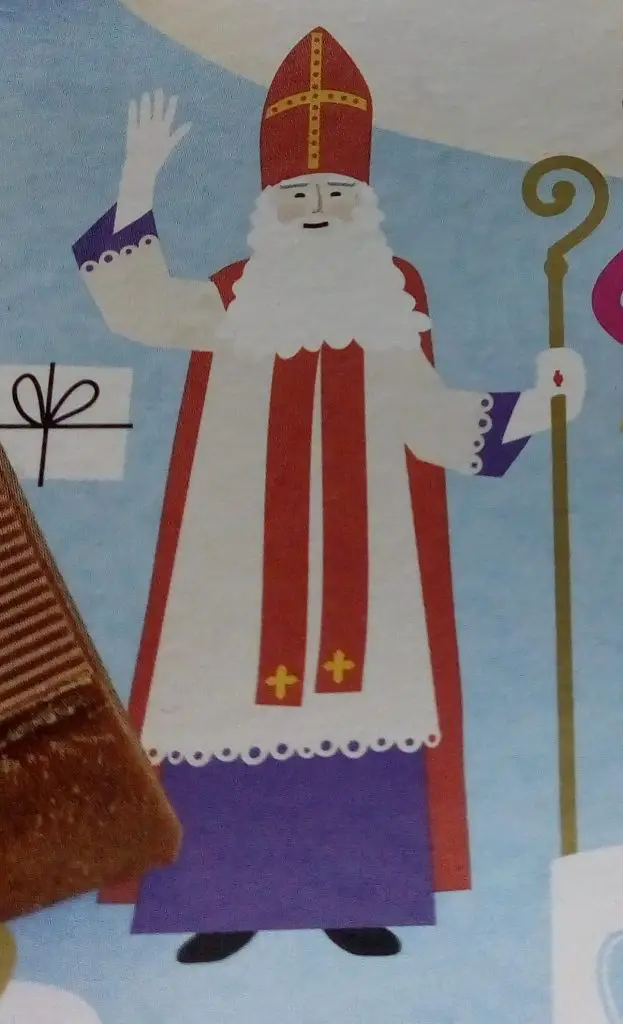
Like Santa, he knows which children have been naughty or nice, as he has all that information recorded in a big red book. Traditionally, nice children receive presents but naughty children were packed up in a sack and taken to Spain. Not-quite-naughty-but-not-quite-nice-enough children might have received a bundle of birch twigs or a lump of coal instead of presents in the past. But that doesn’t happen so much these days…
Festivities connected with Sinterklaas start in mid-November (on a Saturday, three weeks before the 5th December) when he ‘arrives’ on a boat from Spain – each time to a different port – and parades through the city on a white horse. Thousands of people turn out so see him and the event is televised. Sinterklaas’s helper is known as Zwarte Piet (Black Peter), in fact, multiple Pieten also join the parade and carry bags to throw sweets and other treats to children in the crowd. There has been some debate over the depiction of Piet in recent years in the Netherlands and he is Schoorsteenpiet (Chimney Pete), from the soot in the chimneys, in many cities these days.
Although there is an official arrival, most Dutch cities have a Sinterklaas parade. During the weeks that Sinterklaas is in the Netherlands tradition dictates that he rides over the rooftops and children put out a shoe with a treat for the horse, such as a carrot or sugar cube, by the chimney (or the radiator if there isn’t an open fire in the house). During the night Piet climbs down the ‘chimney’, takes the horse’s treat and replaces it with a present.
The 5th December is the day that Dutch people give each other gifts, rather than on Christmas Day, which is usually a time for a quiet family celebration. Known as pakjesavond after the Dutch word for present, the family will sit together and hear a knock at the door. Children will open the door to find a bag of presents for them. Older children and adults give gifts and also have a custom of writing irreverent poems to family and friends.
Happy Sinterklaas Sweets And Treats
Traditional sweets are pepernoten (mini biscuits), speculaas (spiced biscuits), marsepein (marzipan).
Pepernoten are little spiced biscuits made from rye flour and sugar with anise, cinnamon, and clove flavourings. Sometimes they are coated in chocolate.
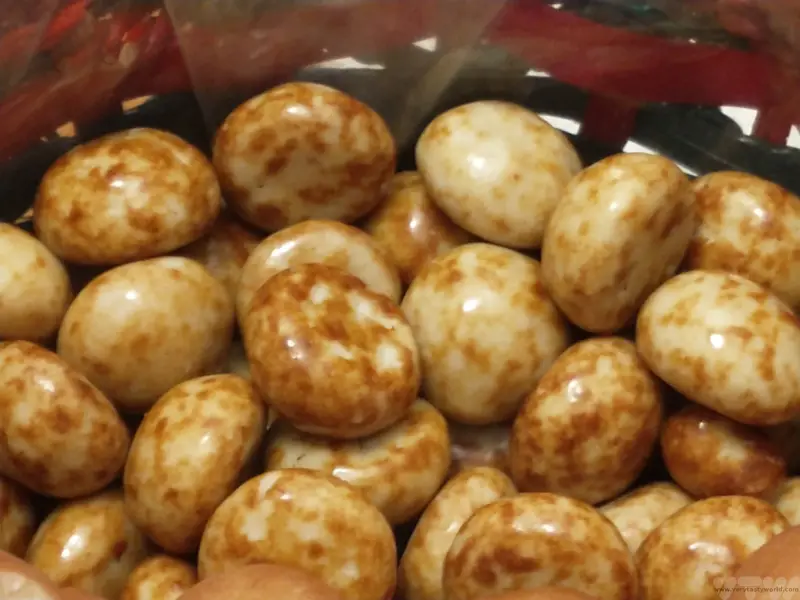
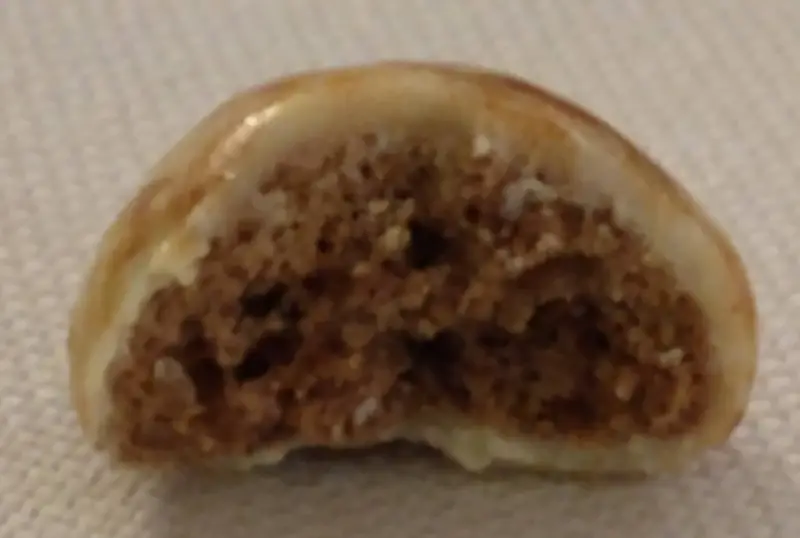
Dutch marzipan is awesome – it is often beautifully crafted in a variety of guises: marzipan fruits, a packet of pigs and even chips, presented Dutch-style, with (sugar) ‘salt’ and (white chocolate) ‘mayonnaise’.
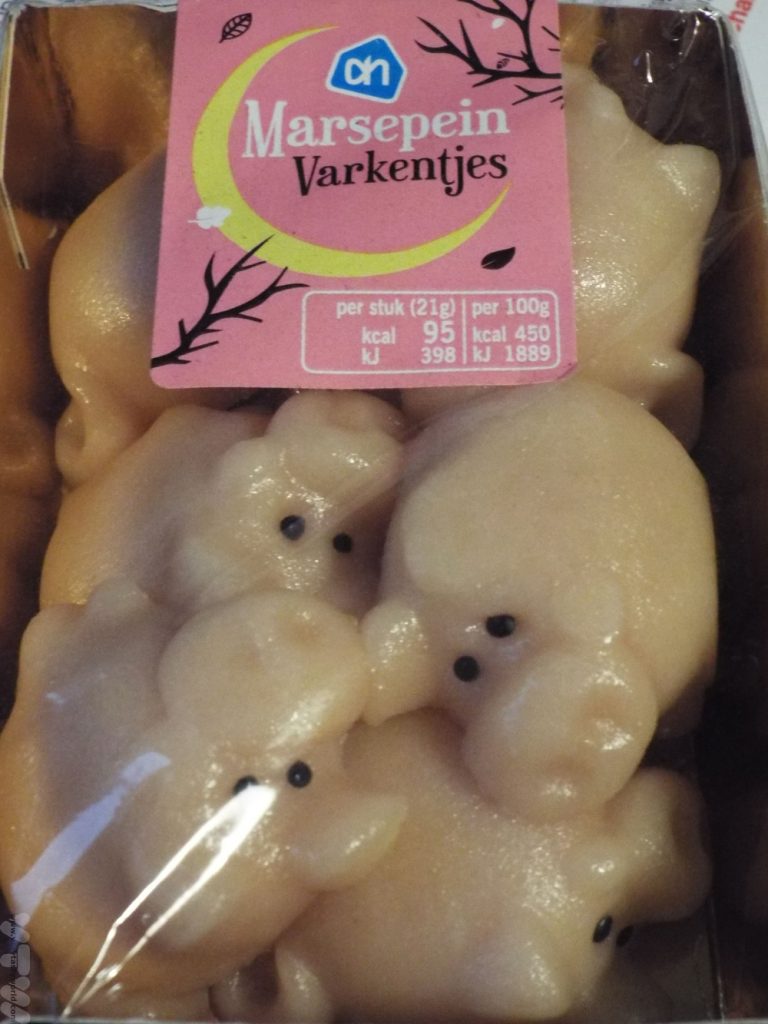
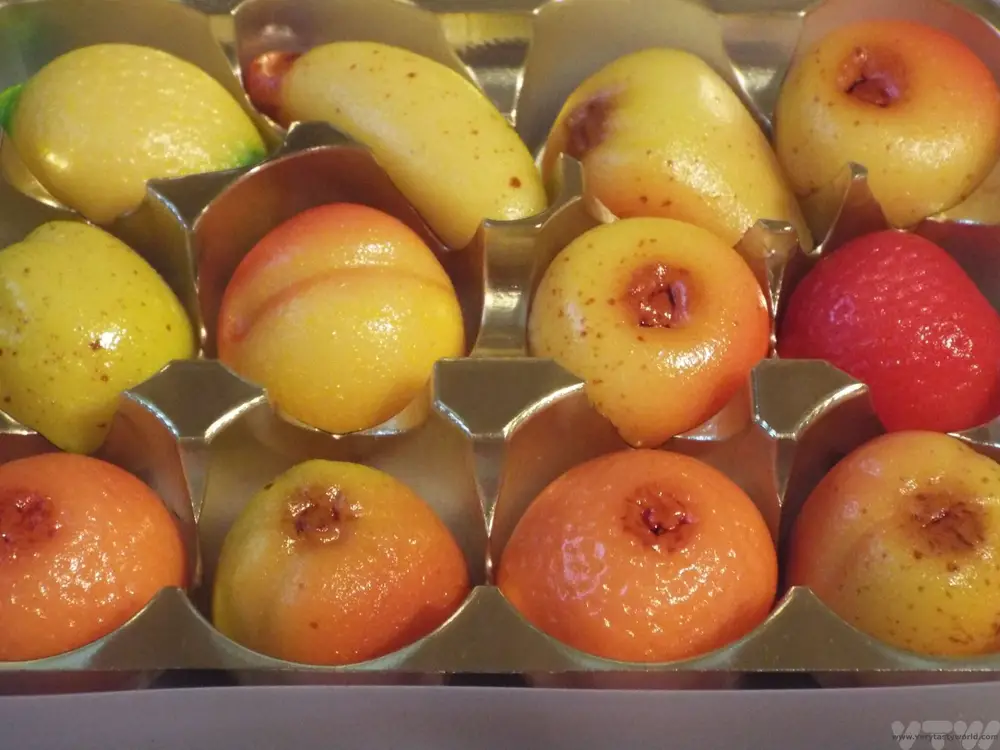
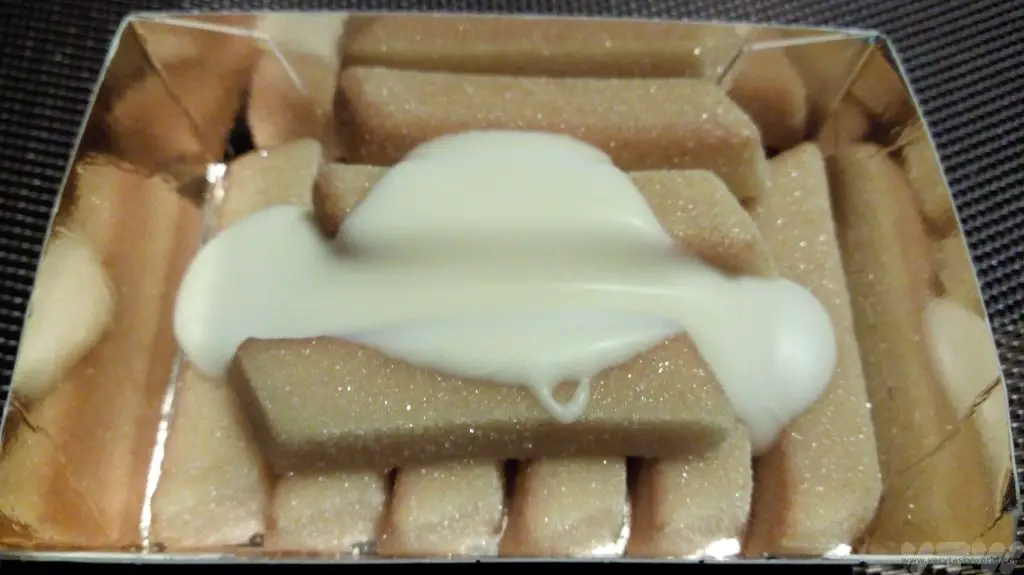
Best of all are the chocolate letters associated with Sinterklaas – it’s a massive bar of chocolate in the shape of the first letter of your name. You don’t have to worry if your name begins with an ‘I’ instead of an ‘W’ – you get the same amount of chocolate!
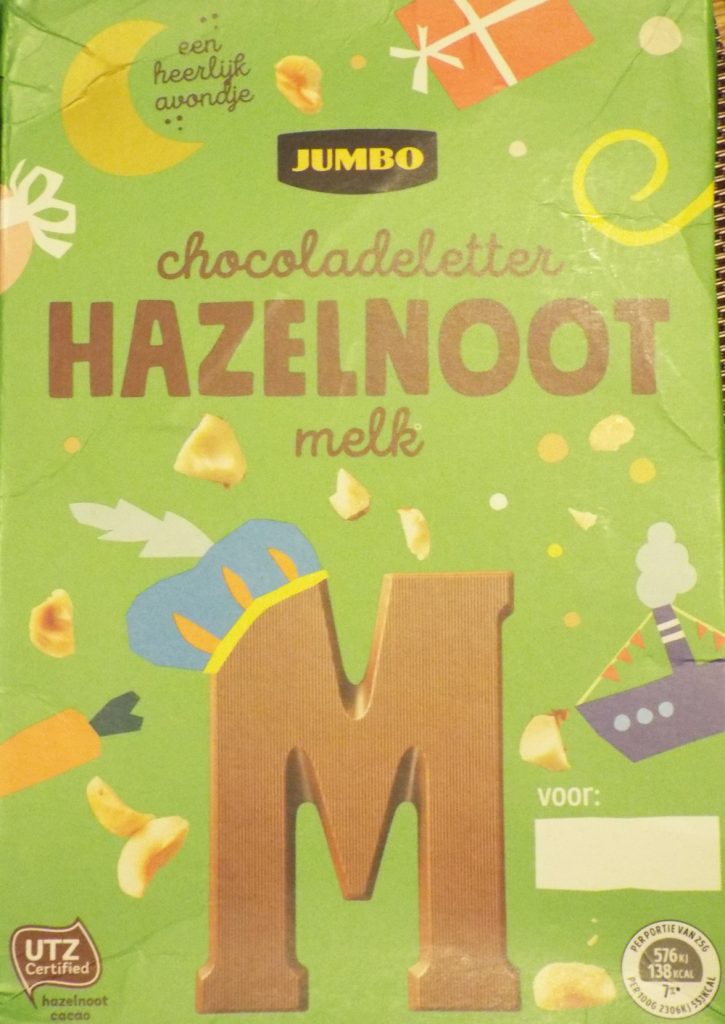
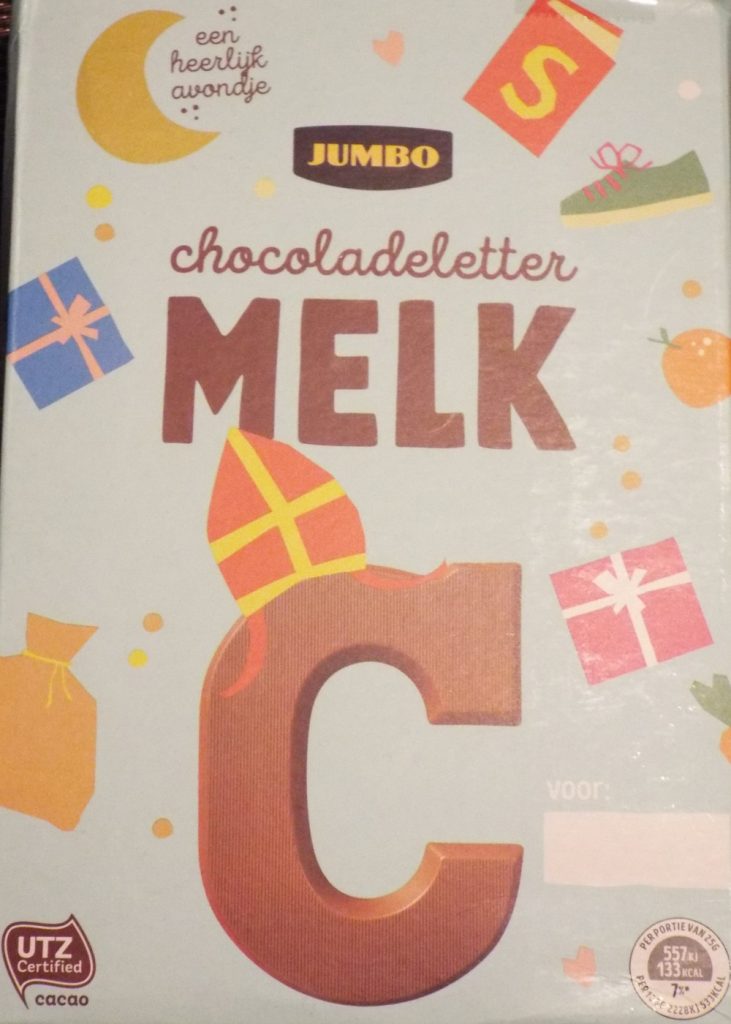
Colin is half-Dutch and has long enjoyed the tradition of Sinterklaas. And, no matter how old you are, somehow if Sinterklaas can post you a chocolate letter, your day is guaranteed to be filled with joy.
PS – Thanks, Mum!
Related Posts You May Enjoy

Visit Quito, Ecuador
A Great Latitude
The remarkable Galapagos Islands are undoubtedly Ecuador’s top tourist attraction and many trips to the islands start out from Quito. The city itself has plenty to offer the visitor. We were lucky enough to undertake a largely land-based Galapagos tour but gave ourselves a couple of days on the Ecuadorian mainland before and after this trip, predominantly to give ourselves some days in hand in order to make sure we could catch our connecting flights, but also because we wanted to explore the city and surrounding area. There are all sorts of day trips available in and around the capital when you visit Quito.
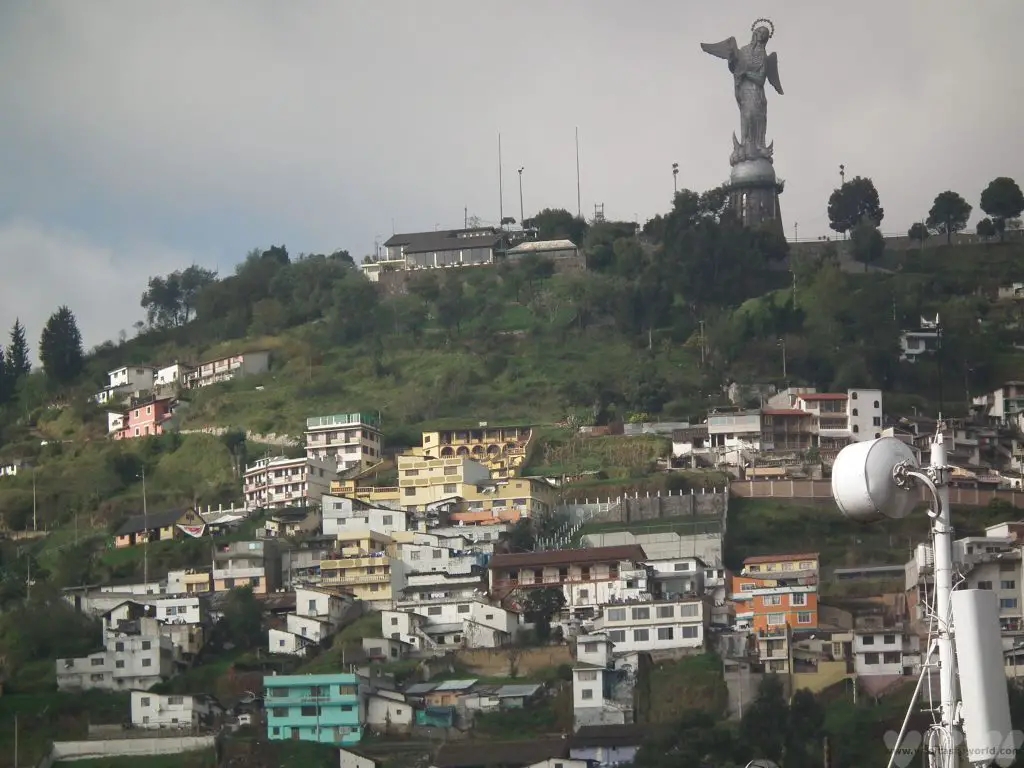
Quito is the second highest capital city in the world, located virtually on the equator and at an altitude of 2850m above sea level. If you’ve not spent time at that altitude it is really important to take it easy, even climbing a flight of stairs can leave you a little breathless when you first arrive. Many hotels in South American countries offer coca tea which is supposed to help with the effects of altitude sickness, although if you do feel ill make sure you seek medical attention.
When you visit Quito, the Centro Histórico is a great place to stay. San Francisco de Quito was founded by Sebastián de Benalcázar in 1534 and the colonial architecture is considered to be so important that the city is designated a UNESCO world heritage site (along with Krakow in Poland). It also has some of the best bars and restaurants in the city. Our hotel had a good view over Santo Domingo Plaza, one of many colonial plazas.
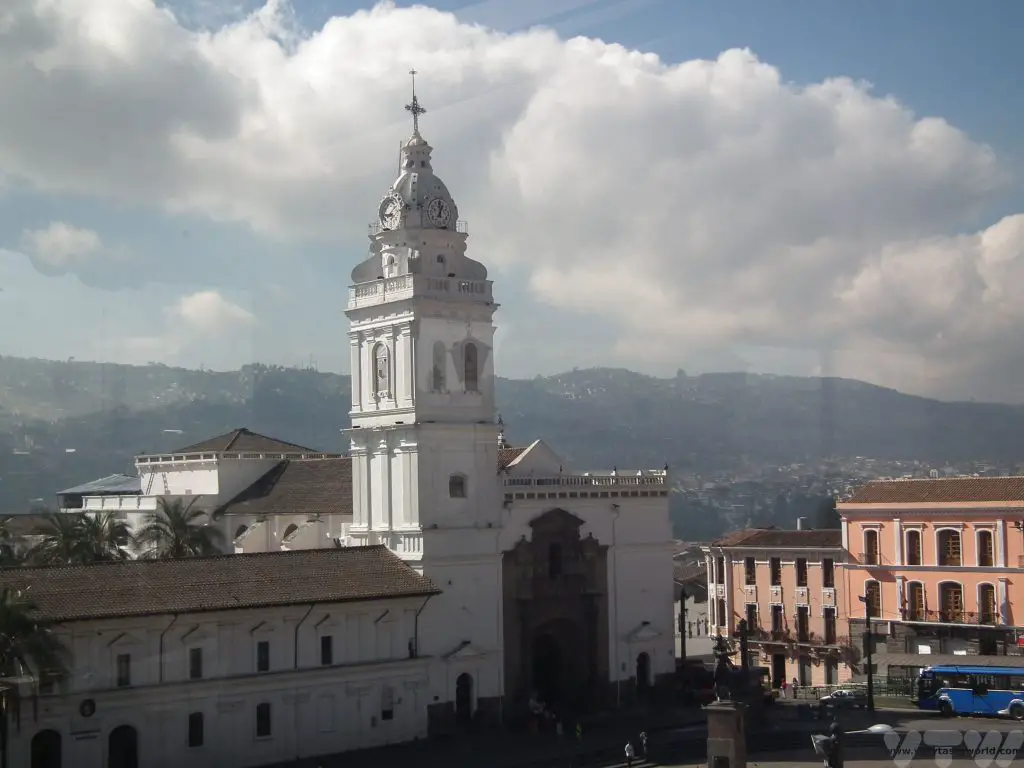
It is very pleasant just wandering through the city.
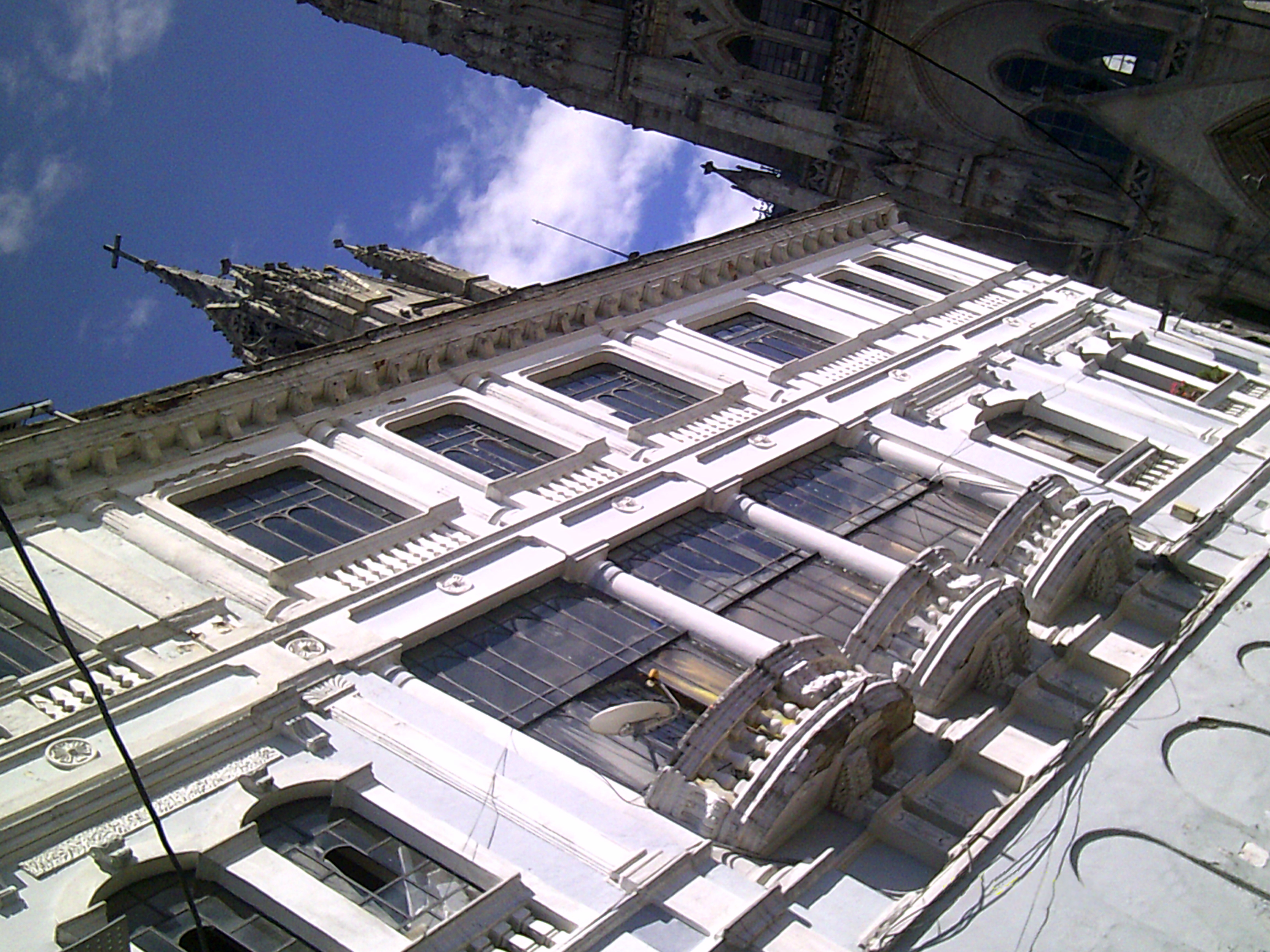
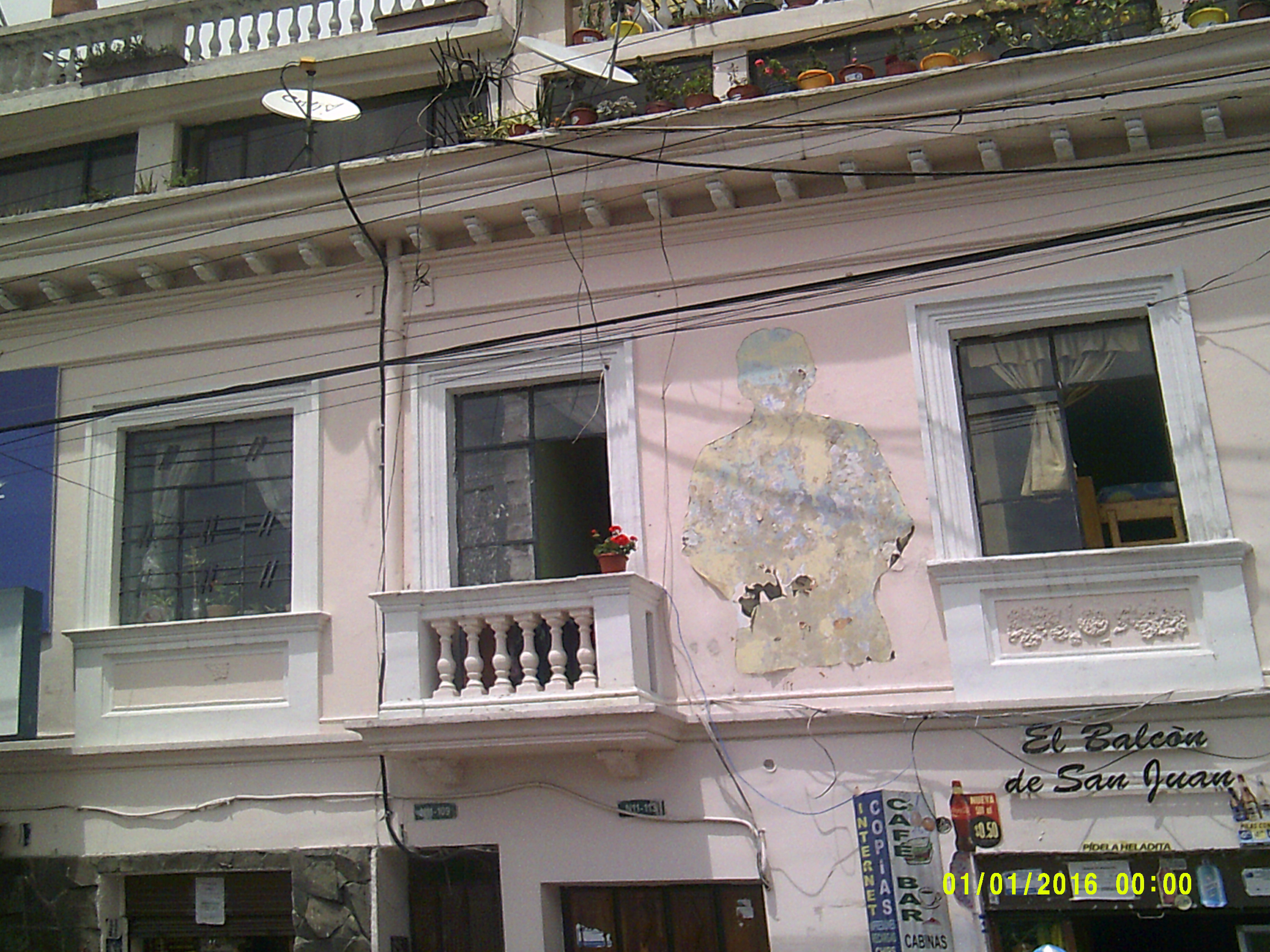
Basílica del Voto Nacional – Basilica of the National Vow, a Roman Catholic church, is located atop a hill. Apparently it is the largest neo-Gothic basilica in the Americas and is still officially unfinished. There is a local legend that when it is finally completed the end of the world will be nigh.
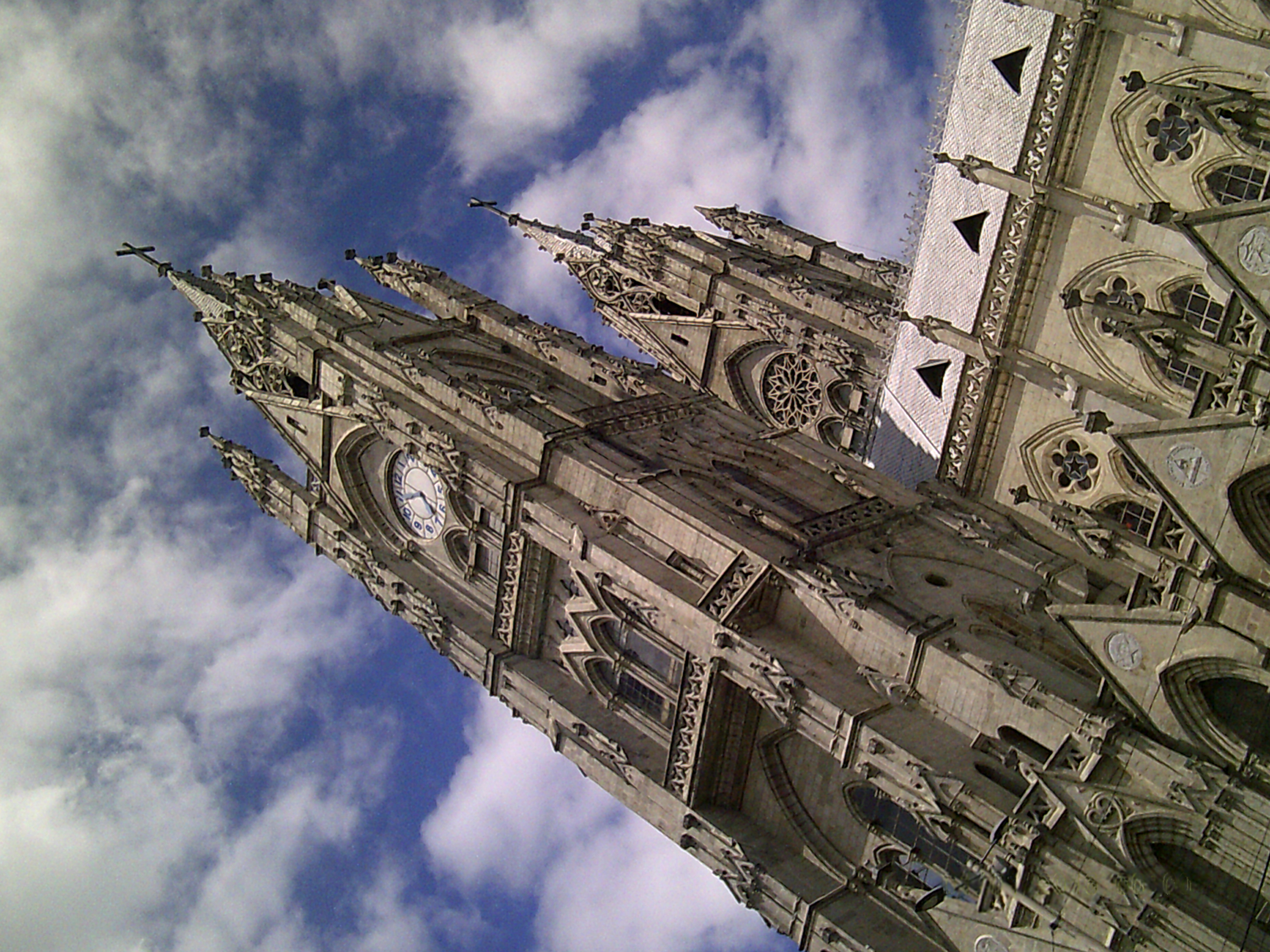
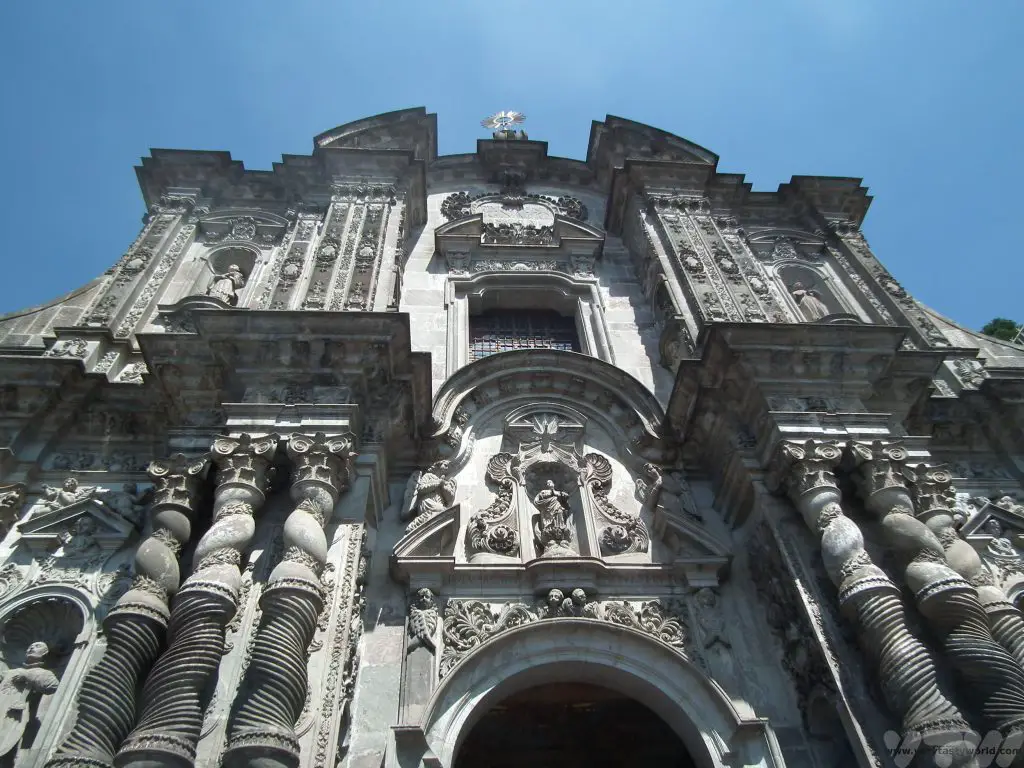
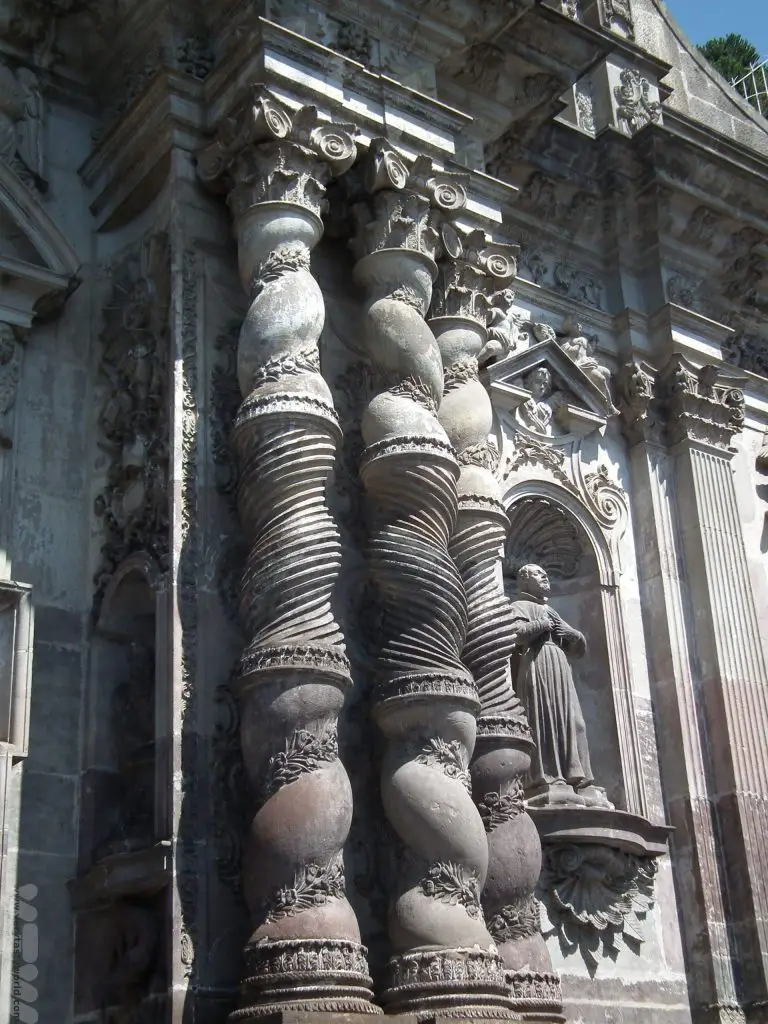
La Iglesia de la Compañía de Jesús, known locally as la Compañía, is a Jesuit church which was completed in 1765. Its interior is decorated with wood carvings, gilded plaster and gold leaf in an astonishingly ornate style.
The Plaza de Indepencia is a focal point with its expansive square.
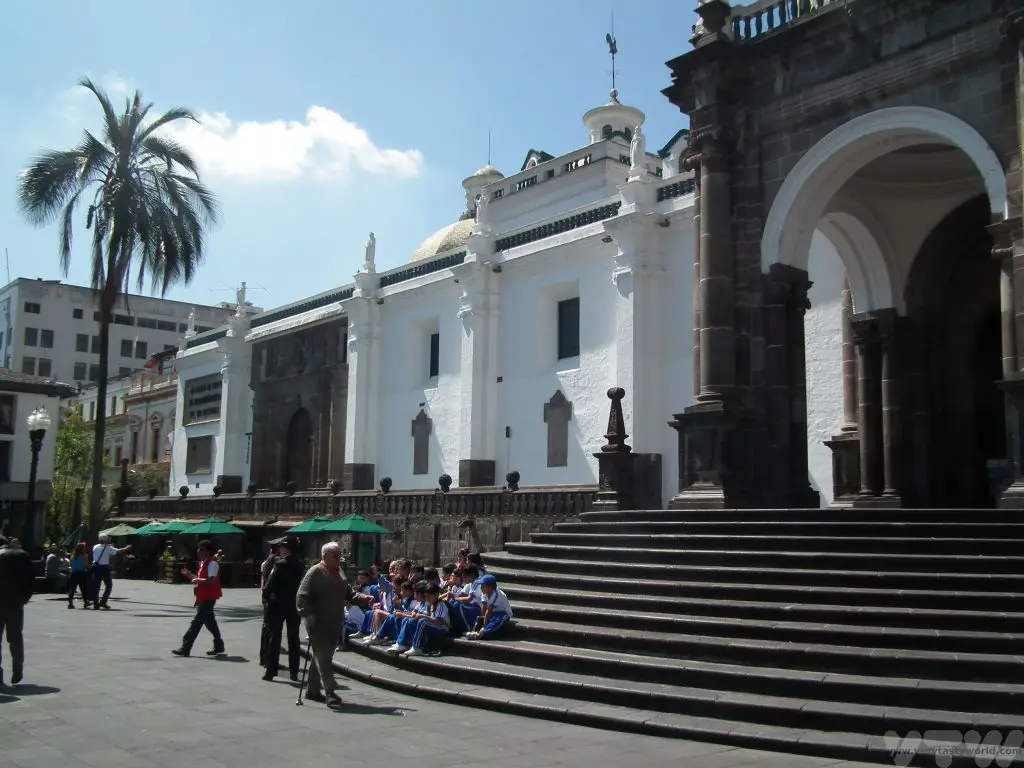
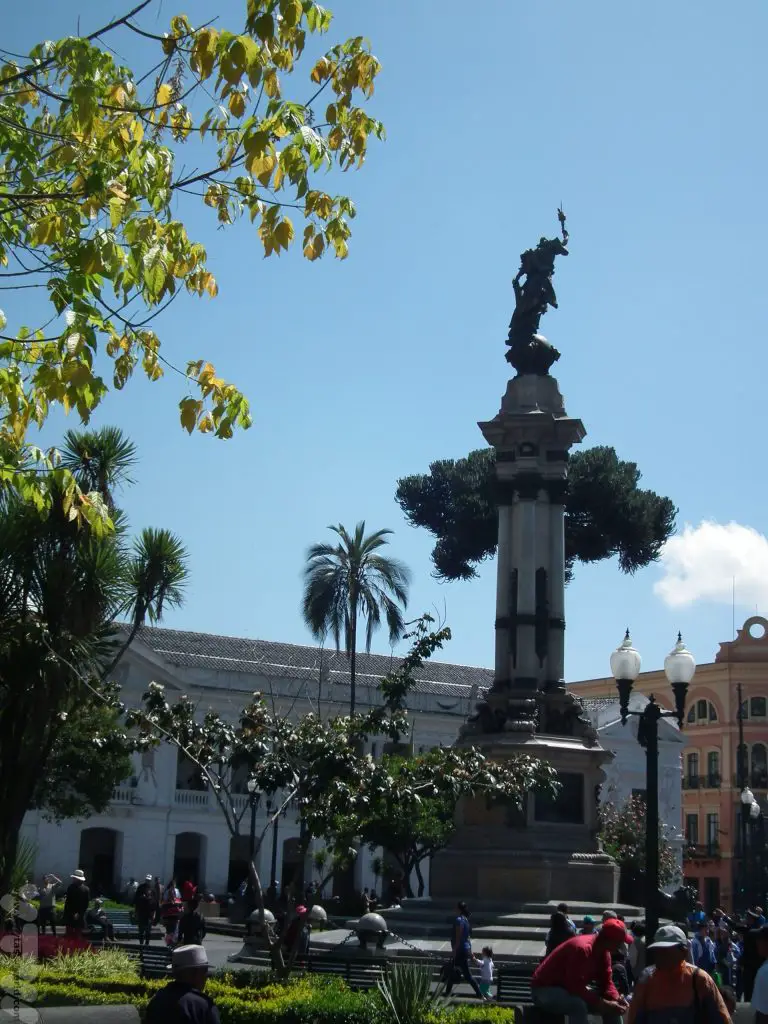
There are lots of shops and restaurants in the area but, notably, just around the corner from the Plaza is a chocolate shop which offers the most amazing chocolate delicacies. To be fair, there are loads of chocolate shops offering amazing chocolate delicacies (Central and South American countries are quite rightly famous for their chocolate), but it was in this one that we discovered Pacari chocolate. The chocolate isn’t cheap but it’s the best quality we’ve ever tried. The company is really ethical as well; a fair trade organisation they support local farmers in Ecuador by paying a good wage and working with them directly. The chocolate is also 100% organic and absolutely stonkingly delicious.
We brought home a multitude of different chocolate bars: the ‘pure’ choc – at 60% cacao – but also some of the flavoured ones. Many are flavoured with fruits: passion fruit and cherry really captured the flavours of the fruit, lemon verbena’s zing was a lovely contrast with the smooth, silky chocolate. We had enjoyed corn in various guises throughout our trip so toasted corn kernels in the chocolate added a satisfying crunch and the corn flavour also came through very well. Of course we had to try the chilli chocolate. It’s surprisingly subtle – the first flavour you taste is that of dark chocolate then, after a few seconds comes a gentle warmth (definitely not the fiery heat of a chilli) that lingers on the palette long after the chocolate has gone.
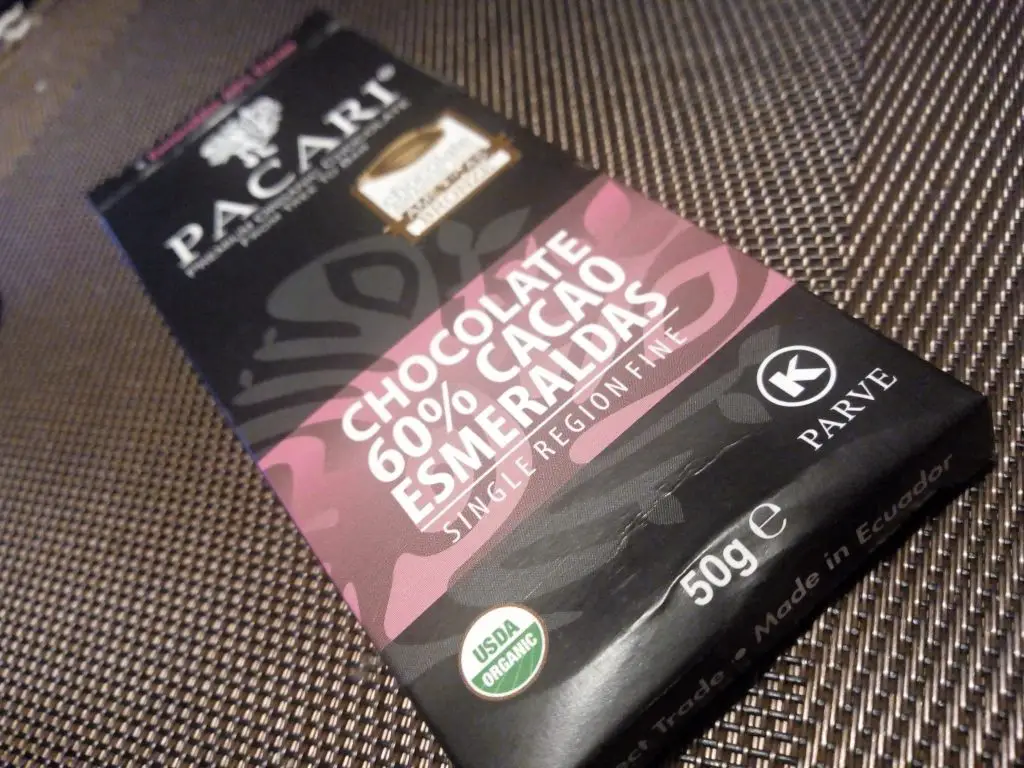
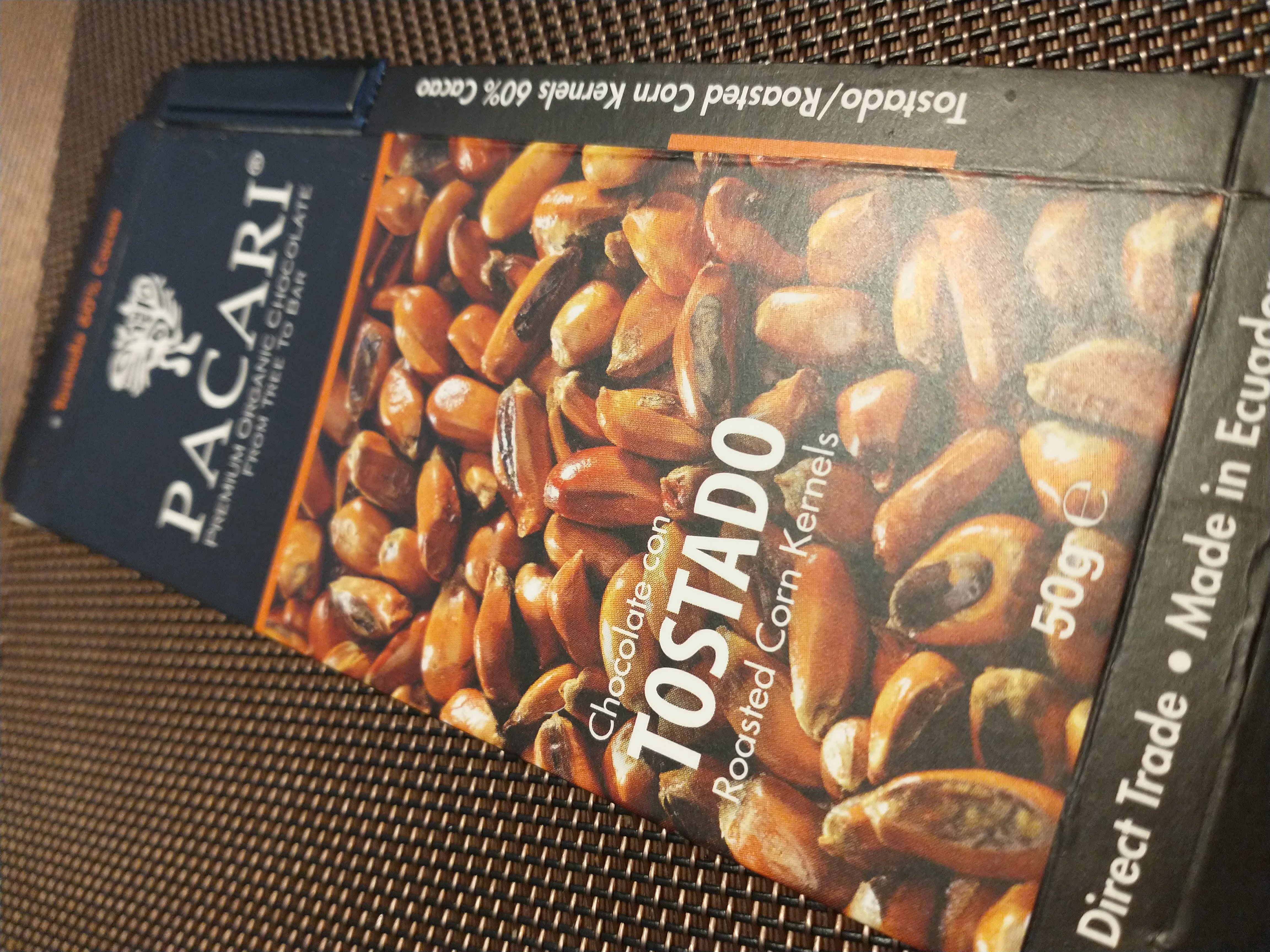
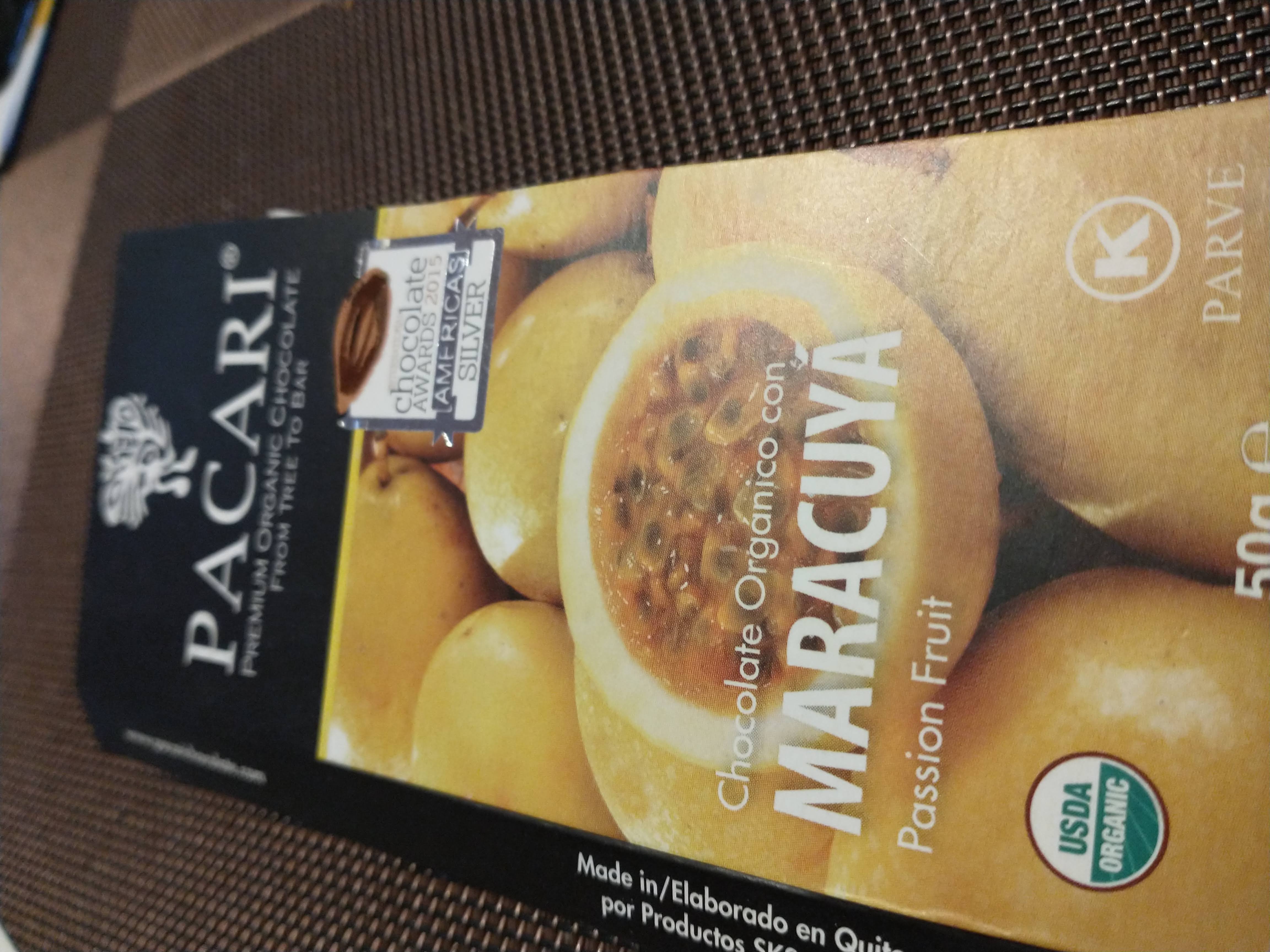
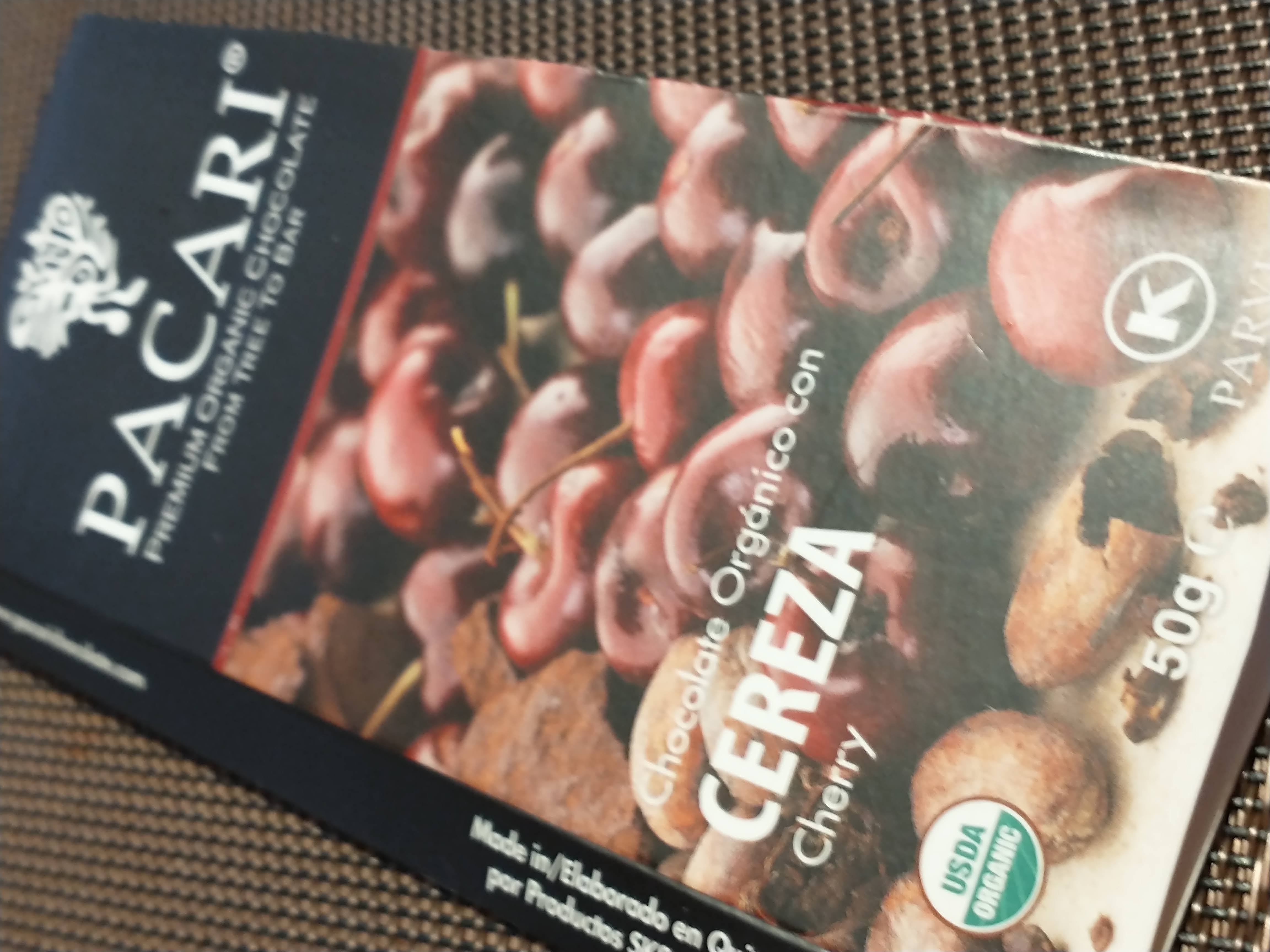
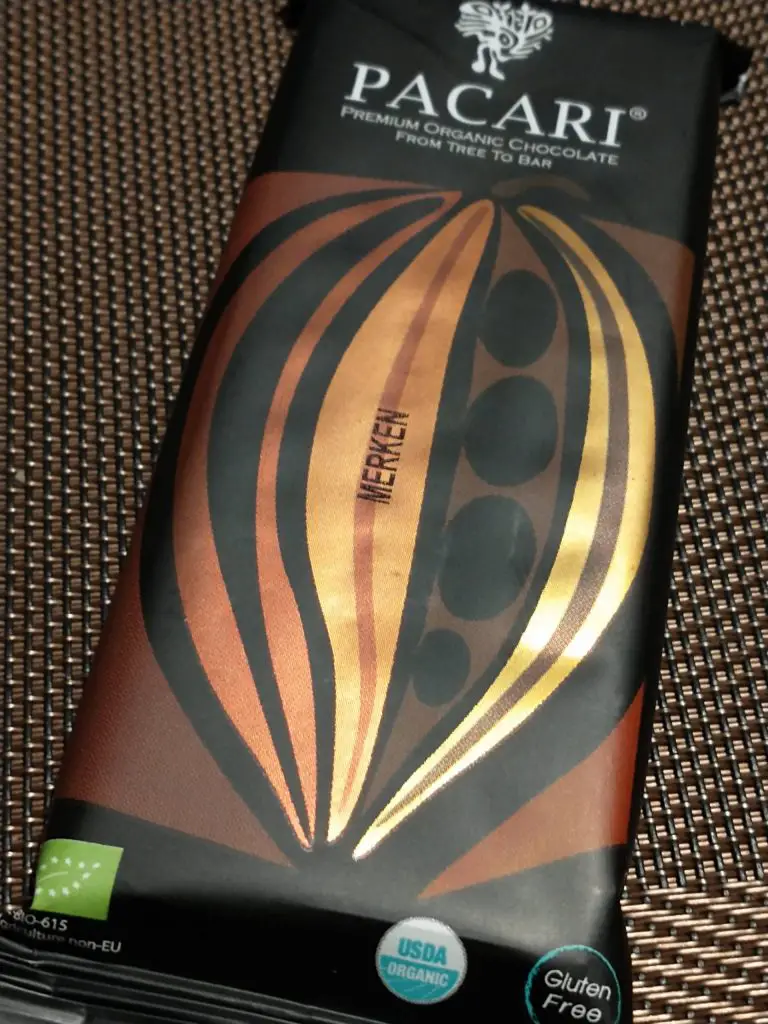
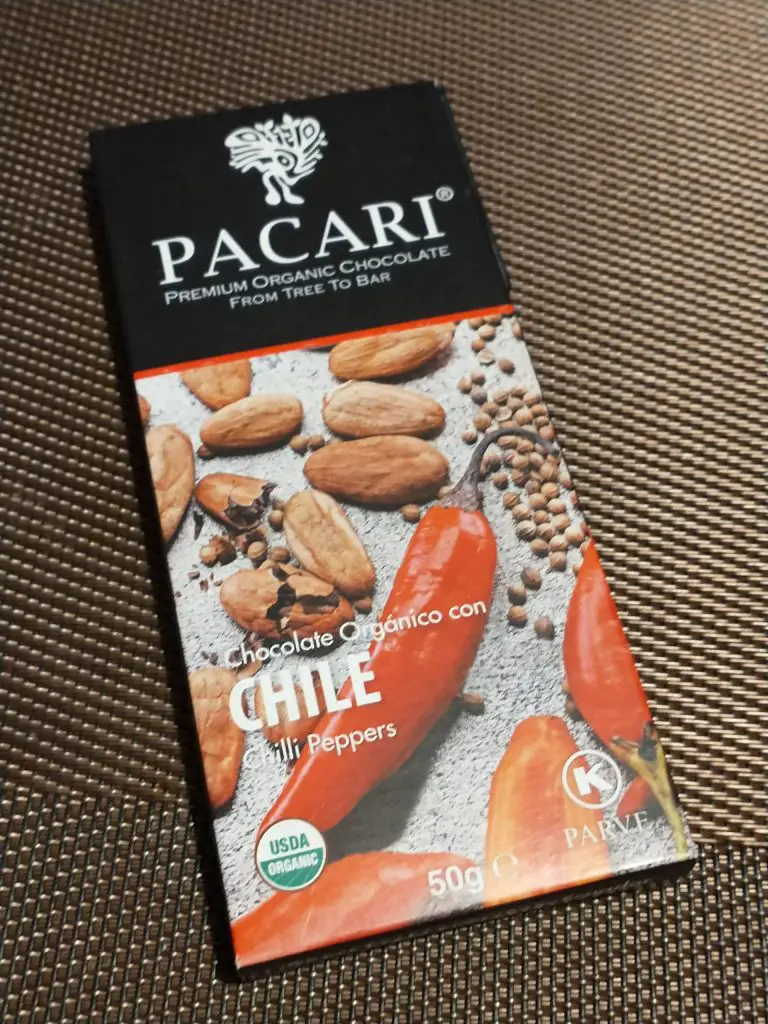
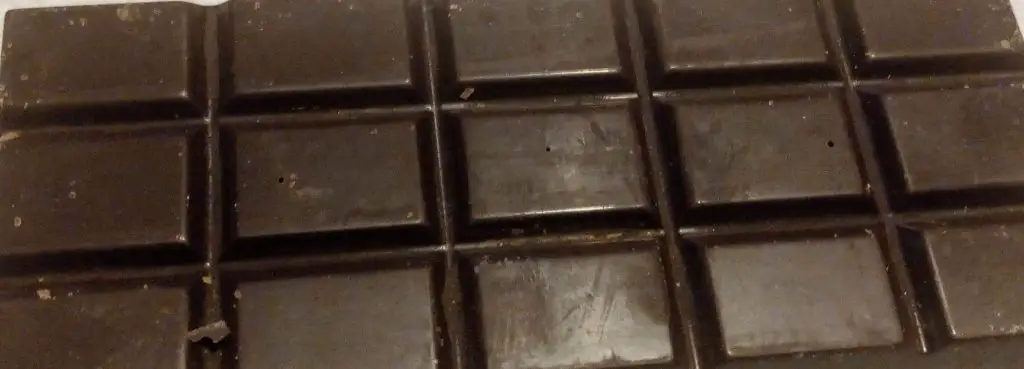
It is possible to buy Pacari chocolate around the world (they also try to offset their carbon footprint) but we’ve found that it is significantly more expensive than in Quito (and it’s pretty expensive in Quito, but emphatically worth every cent), so if you do find yourself in Ecuador, we recommend stuffing every square centimetre of spare space in your luggage with the chocolate before you travel home.
Visit Quito – City Tour
There are lots of city tours available when you visit Quito and most hotels will be able to put you in touch with a company that can suit your budget, whether it’s a group tour or a private guide. Some of the guides are very flexible and can adapt a standard tour to suit your interests so it’s definitely worth asking what options are available.
The Equator is one of the most popular tourist attractions (after all, the word Ecuador means ‘equator’) and it’s difficult not get excited at being able to stand in both the northern and southern hemispheres at the same time. There are two sites, located a short drive of around 25km outside Quito. Amusingly, the official equator site at La Mitad del Mundo (the Middle of the World) isn’t quite on the equator itself, thanks to an error by a French expedition in 1736.
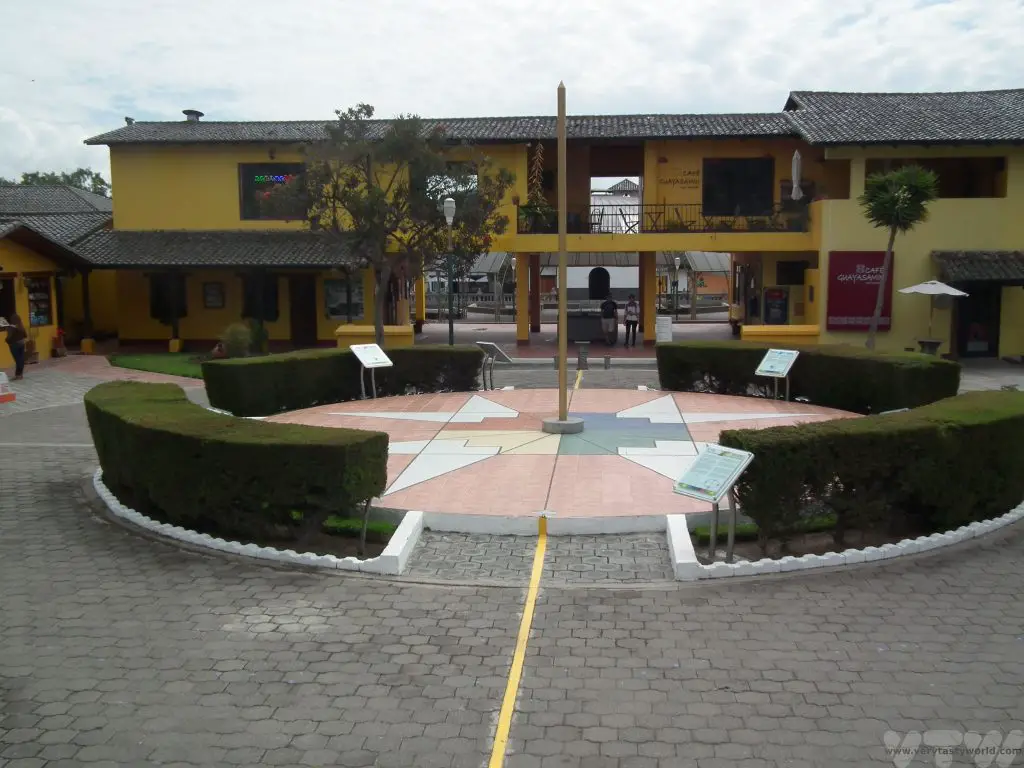
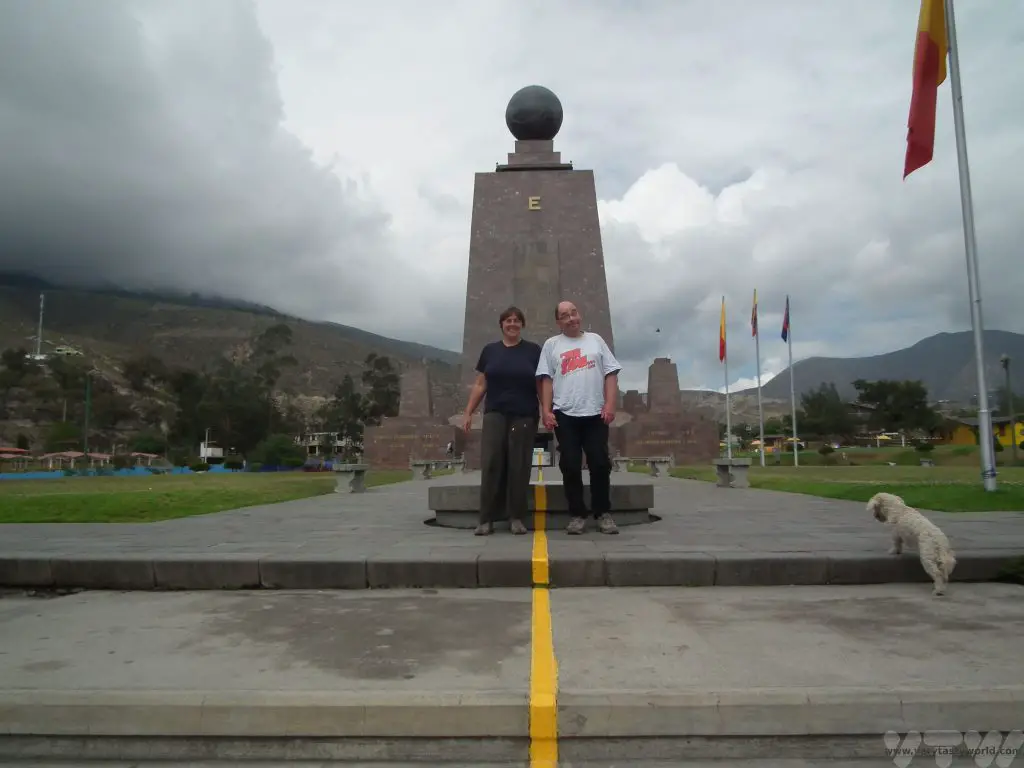
It seems it was the Incas who, several centuries earlier and without the use of GPS, managed to locate the correct location for the equator so we headed over to the Intiñan museum which is just a few minutes away from the incorrect official monument. The museum has an official equator line and also some exhibits showing traditional culture. You can also undertake various activities such as looking at the Coriolis Effect (whether waters swirls down a plughole clockwise, anti-clockwise or straight down depending on which hemisphere you are in – it won’t make a spot of difference), balancing an egg on a nail or walking along the equator with your eyes closed. It’s all ridiculous and hugely touristy but it’s enjoyable fun nevertheless.
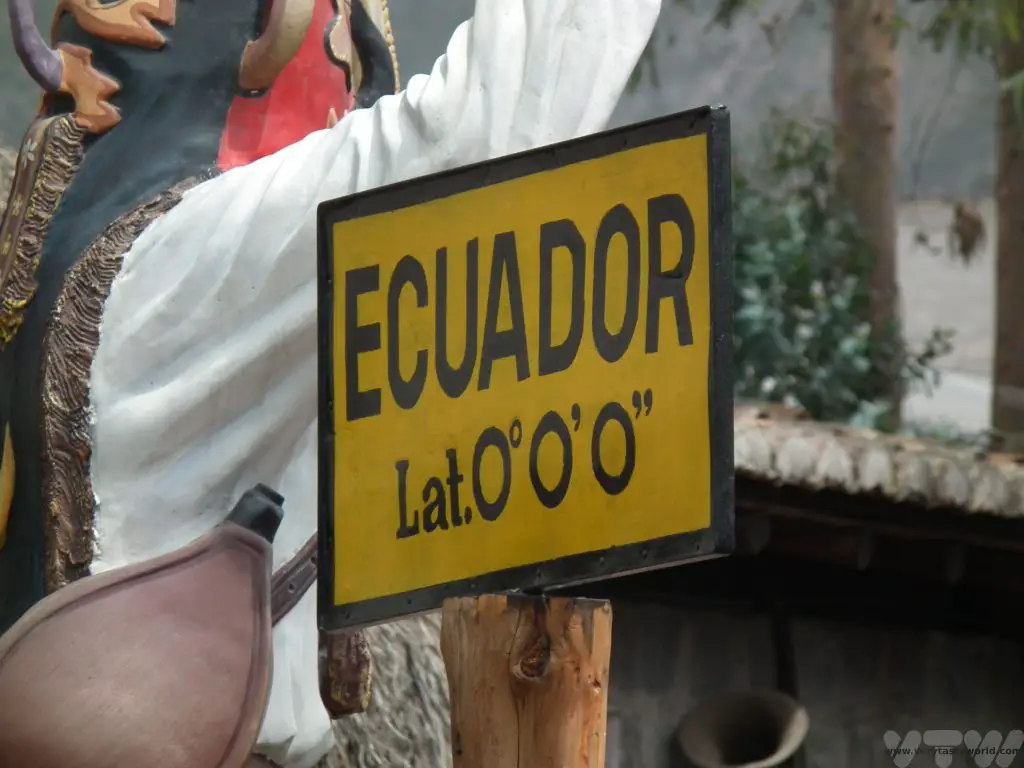
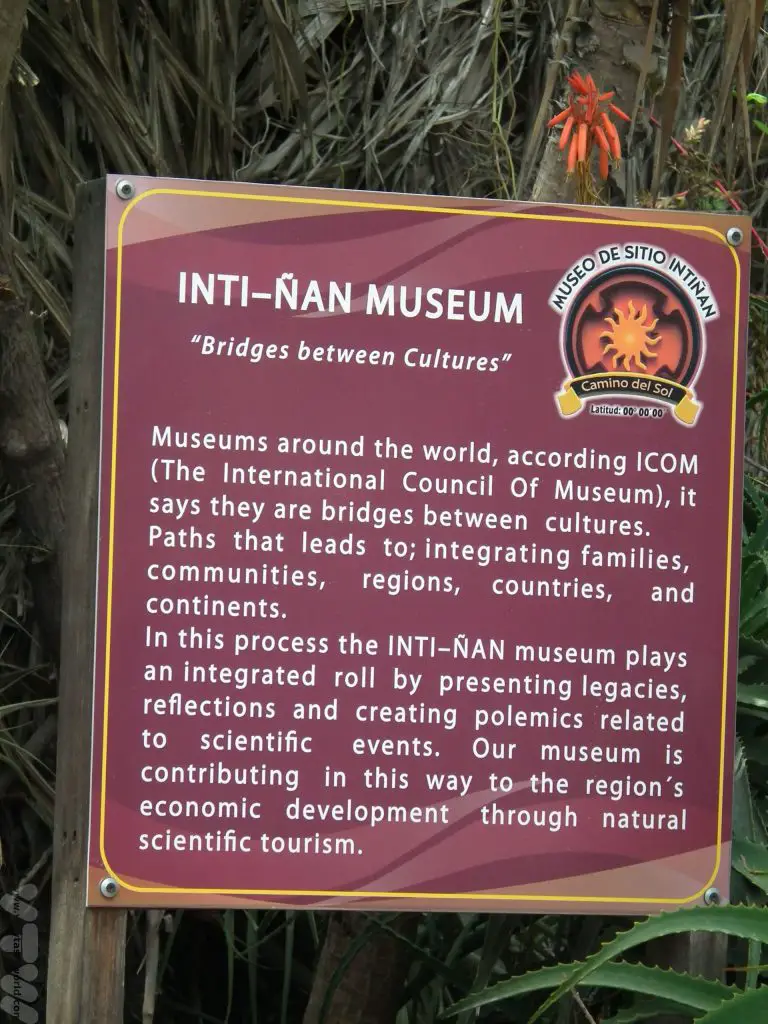
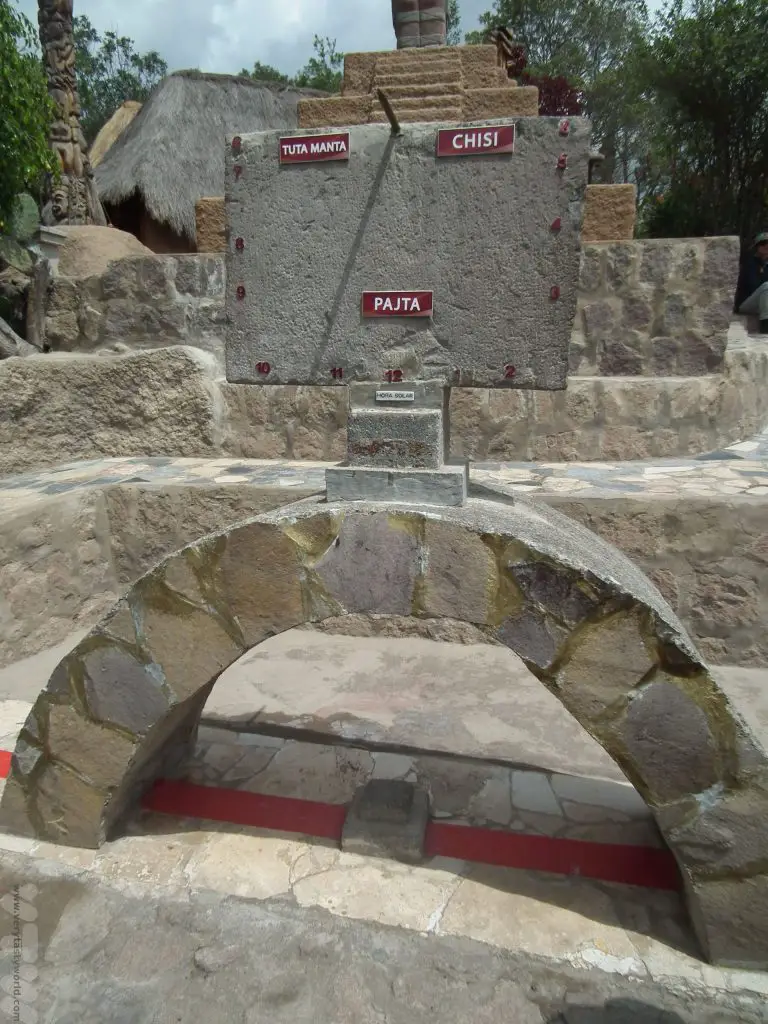
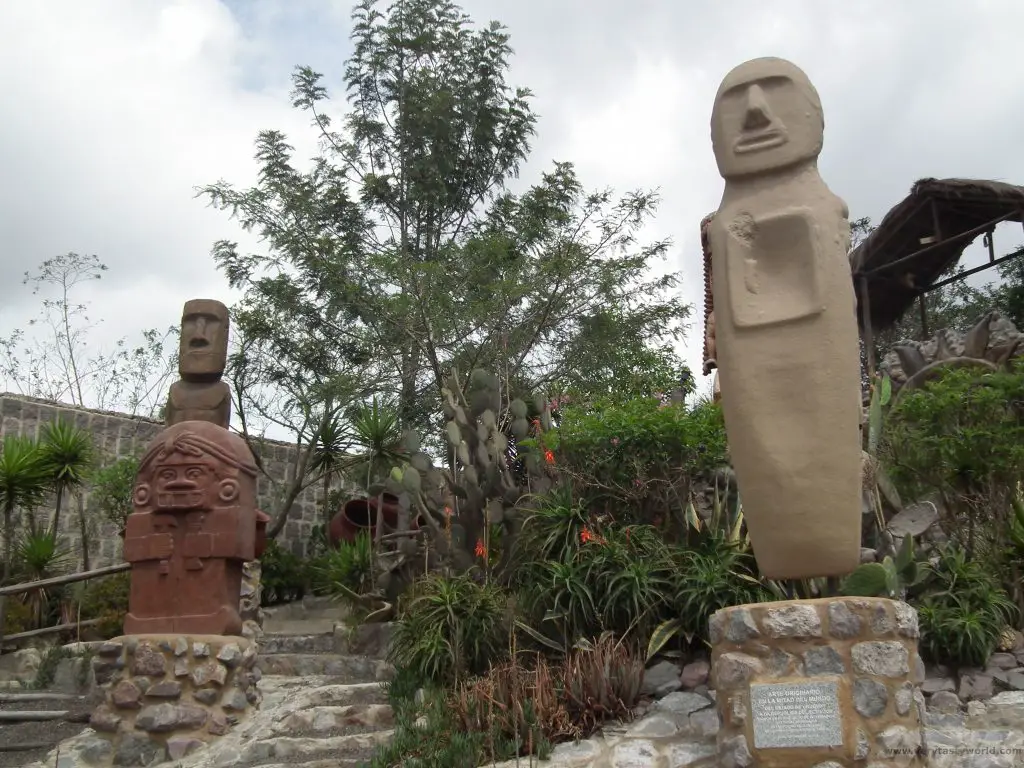
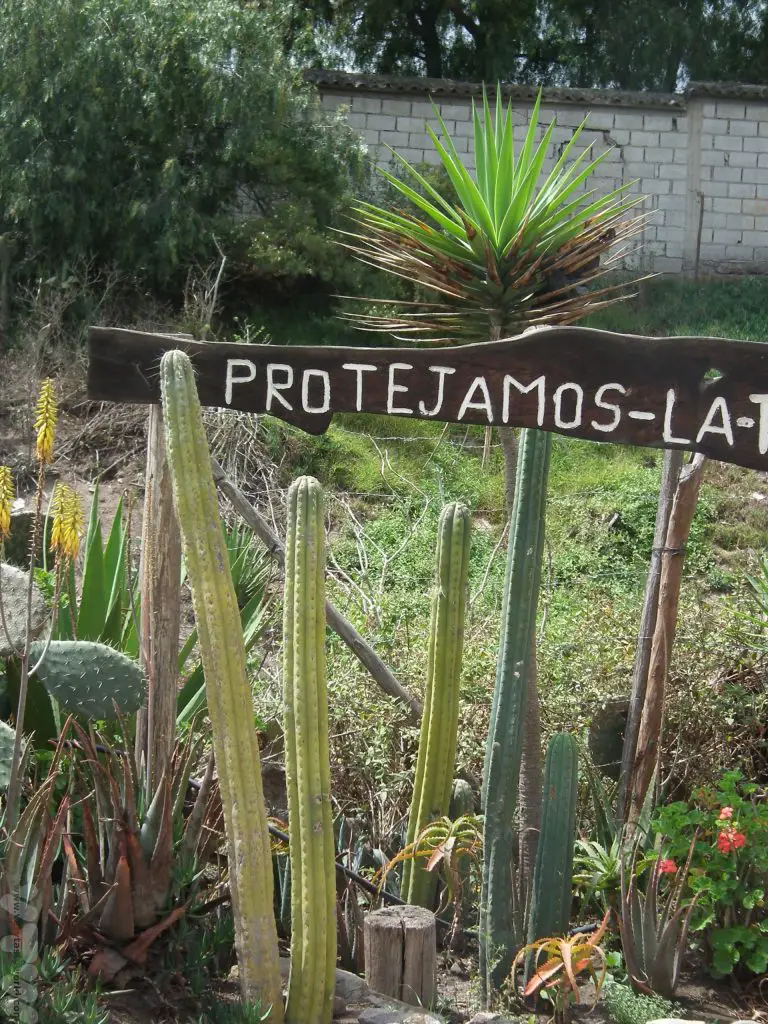
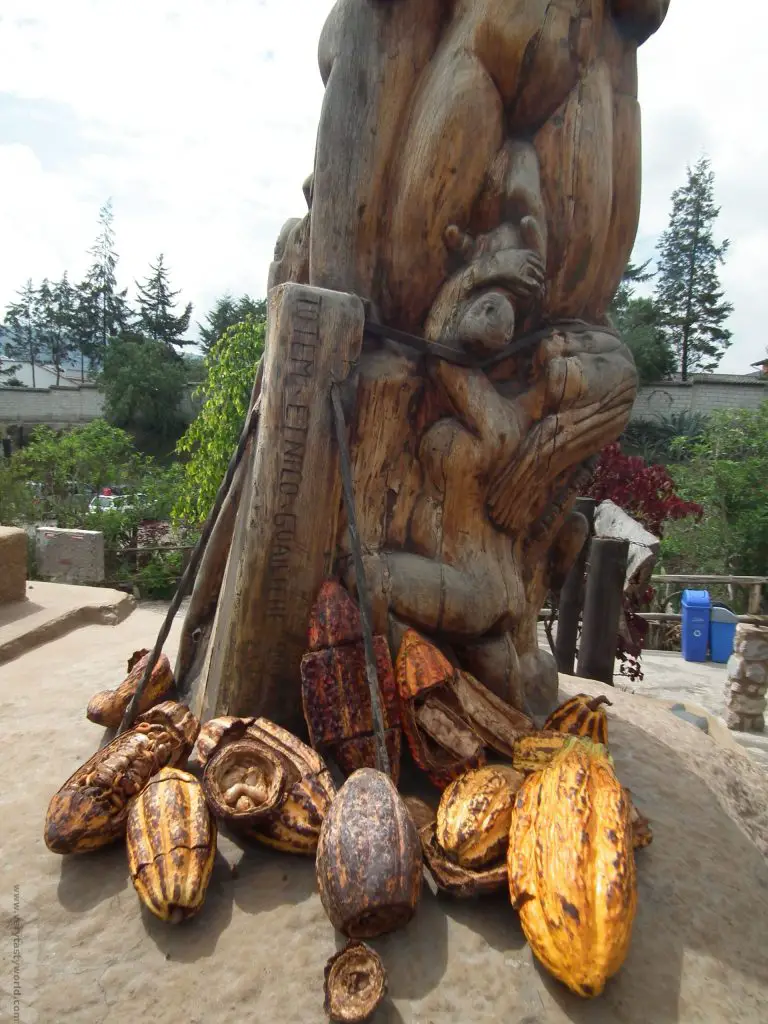
Anyway, whether you are standing on the real equator or not, it’s great to take photos astride a line – whichever one it is.
We made a brief stop to view the Pululahua Crater. It’s a caldera (from an extinct volcano) although you can still see a couple of volcanic cones. The area has plenty of fertile soil so farming here is profitable. It’s possible to walk in the area – the caldera is about five km across – but we only really had time to enjoy the view.
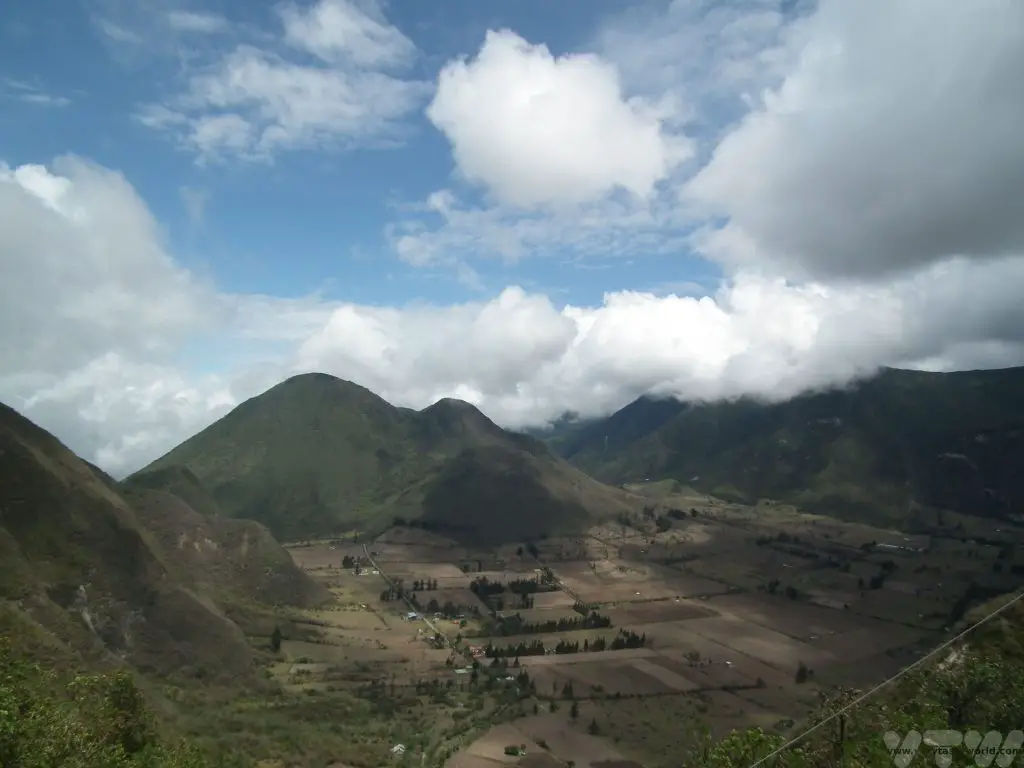
Back in Quito, the Teleferico offers a cable car lift to the top of Cruz Loma which affords fantastic views across the city as well as ‘Volcanoes Avenue’, a splendid vista revealing fourteen peaks across the Andes… if the weather is co-operating. Otherwise it’s a nice ride up and down a mountain in a cable car! It’s located in Pichincha and the site also offers an amusement park, restaurants, a shopping centre and other activities, so there’s plenty to do if the views aren’t spectacular.
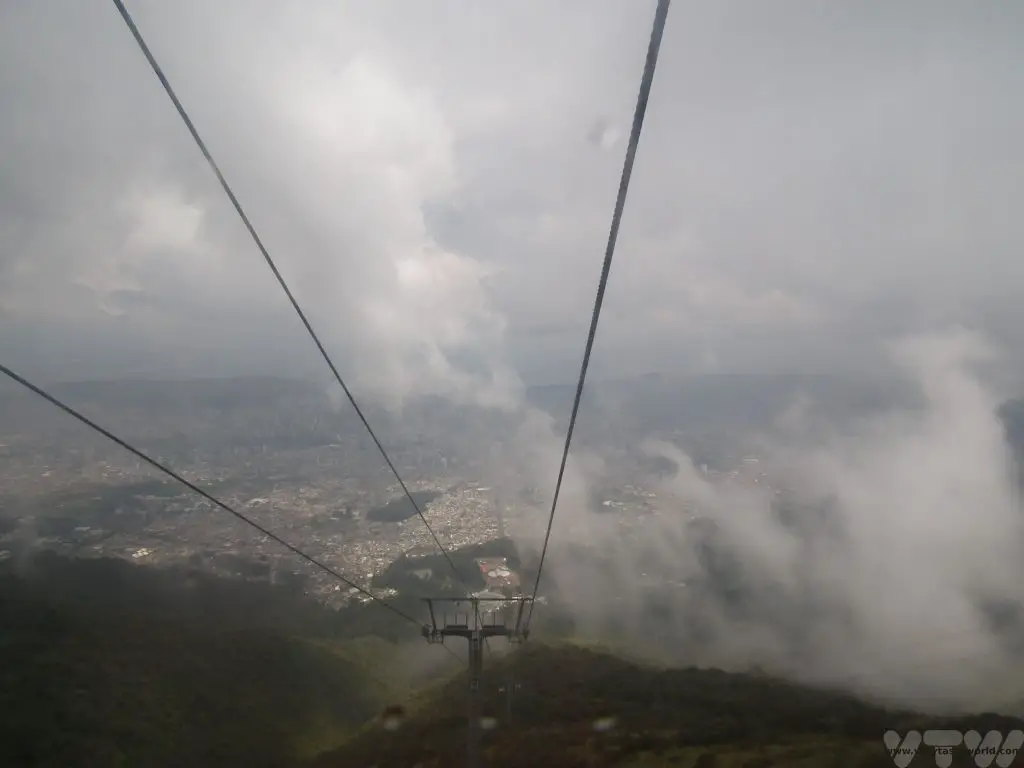
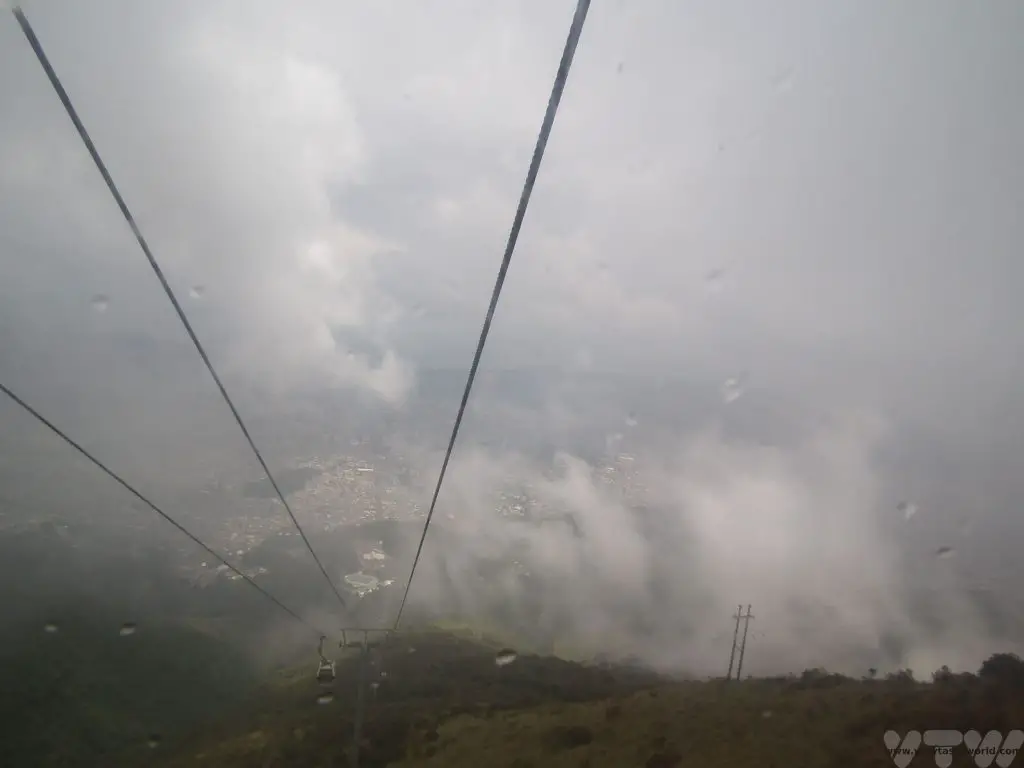
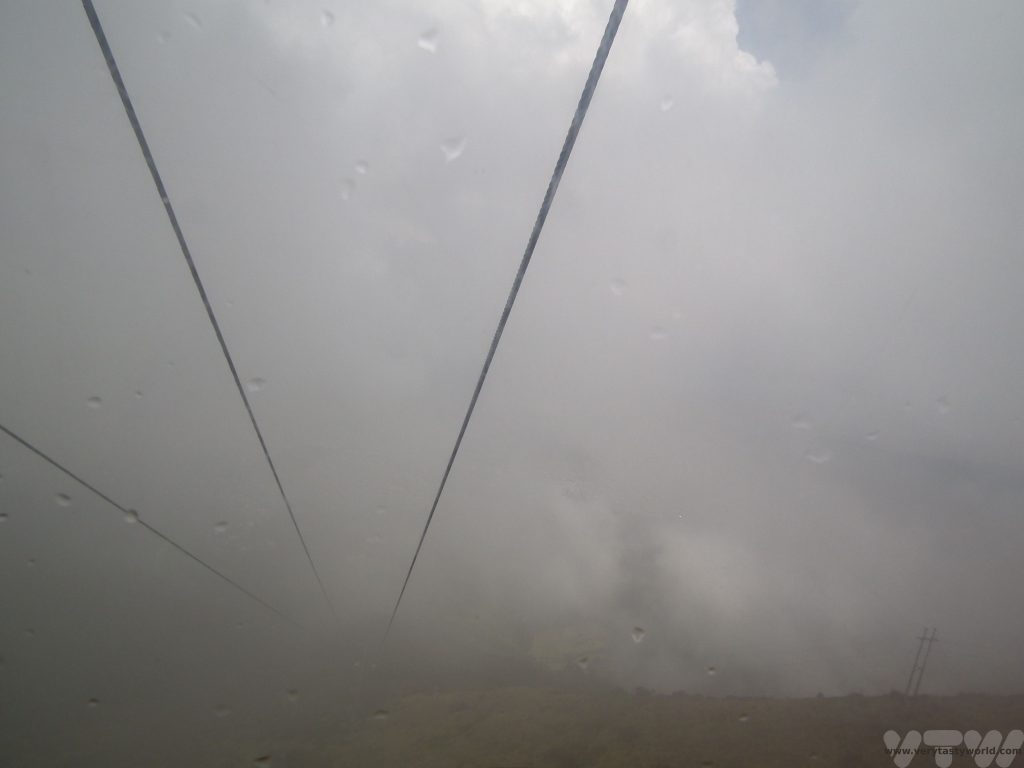
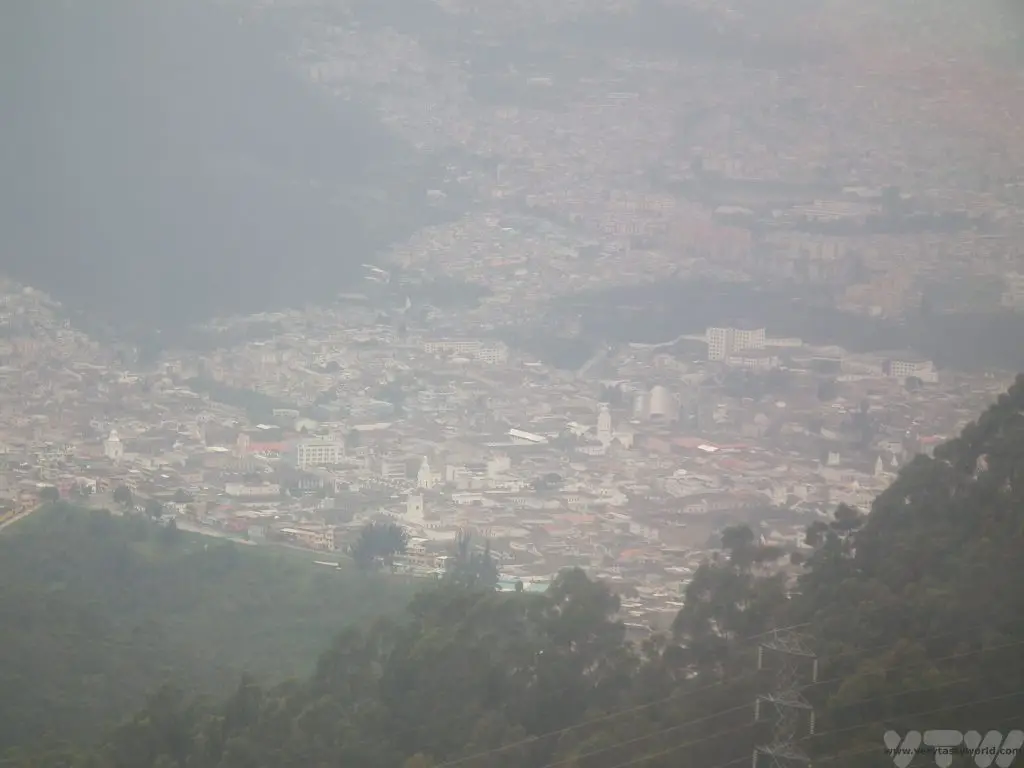
A slightly more unusual stop was a visit to the Fundación Guayasamín Museum, the house with an adjacent art gallery of local artist Oswaldo Guayasamín, widely considered to be one of Ecuador’s greatest artists. The house is located on a hill overlooking Quito in the Bellavista neighbourhood and has been left as he lived in it. It contains many artworks; his own as well as an impressive collection of pre-Columbian, colonial and modern art, and you can also see his studio. We were invited to watch a video about the artist so that we could learn about his life and works.
The adjacent gallery, known as the Chapel of Man, has an exterior on the form of a massive cube with a conical dome atop. Inside it offers multiple levels in which to explore a range of artworks. Guayasamín’s art is big and bold and very much reflects Ecuadorian landscapes and culture. He was also particularly interested in the inequalities in society and many of his works are powerful – and moving – representations of injustice. Photography wasn’t allowed inside the gallery.
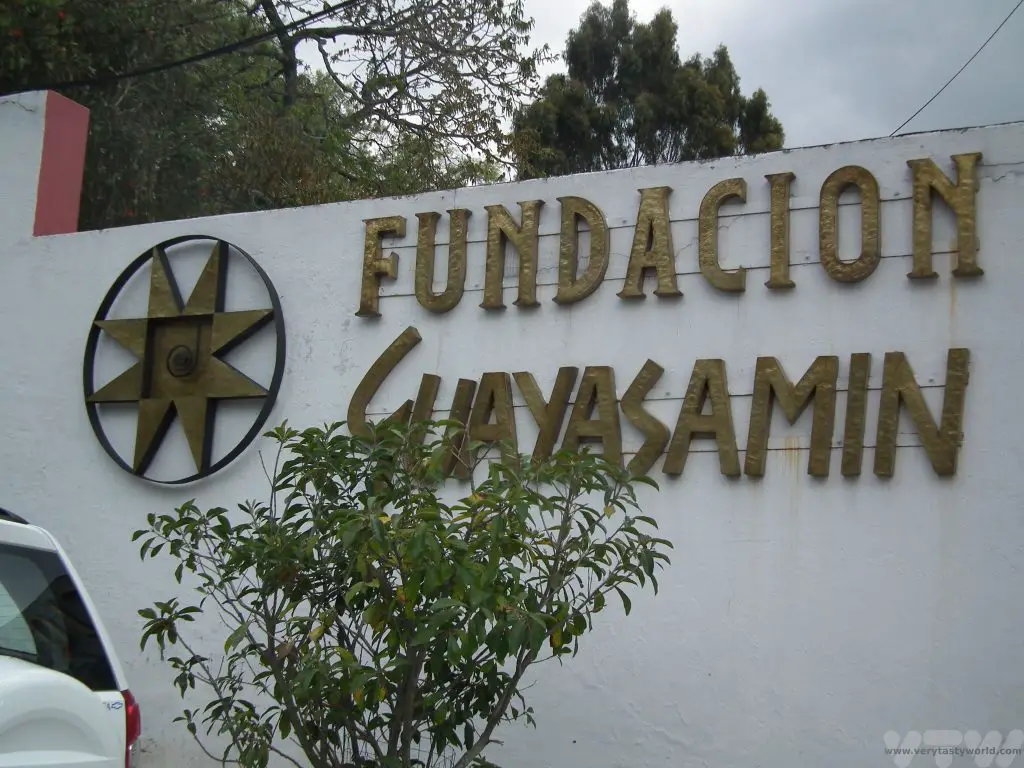
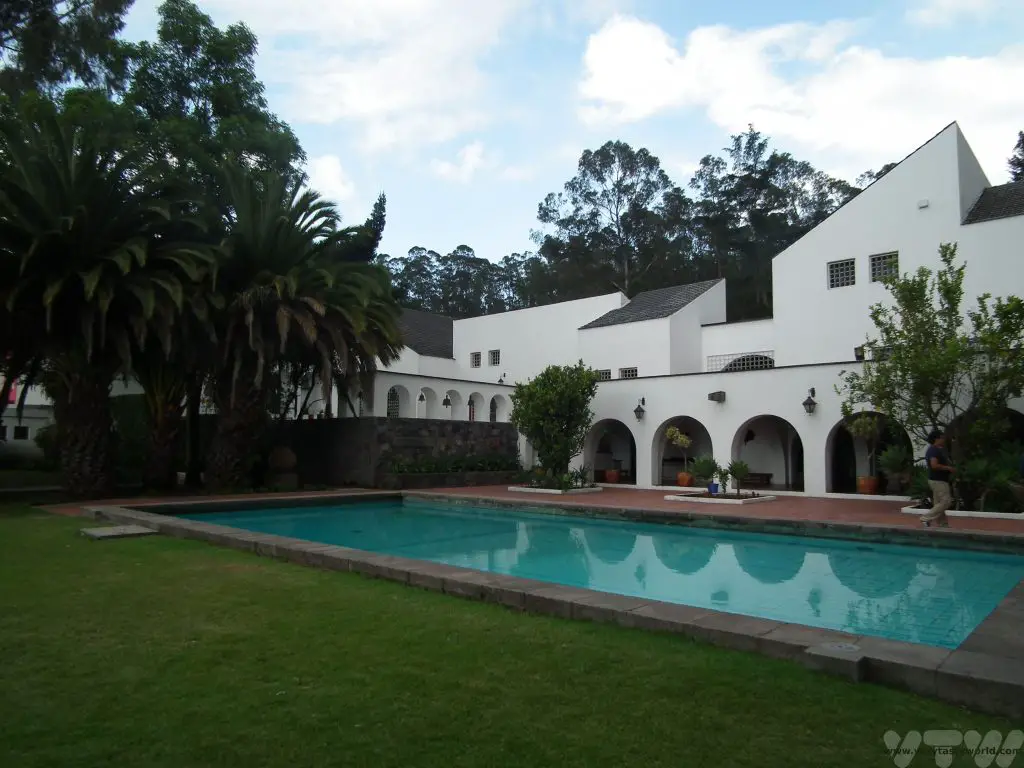
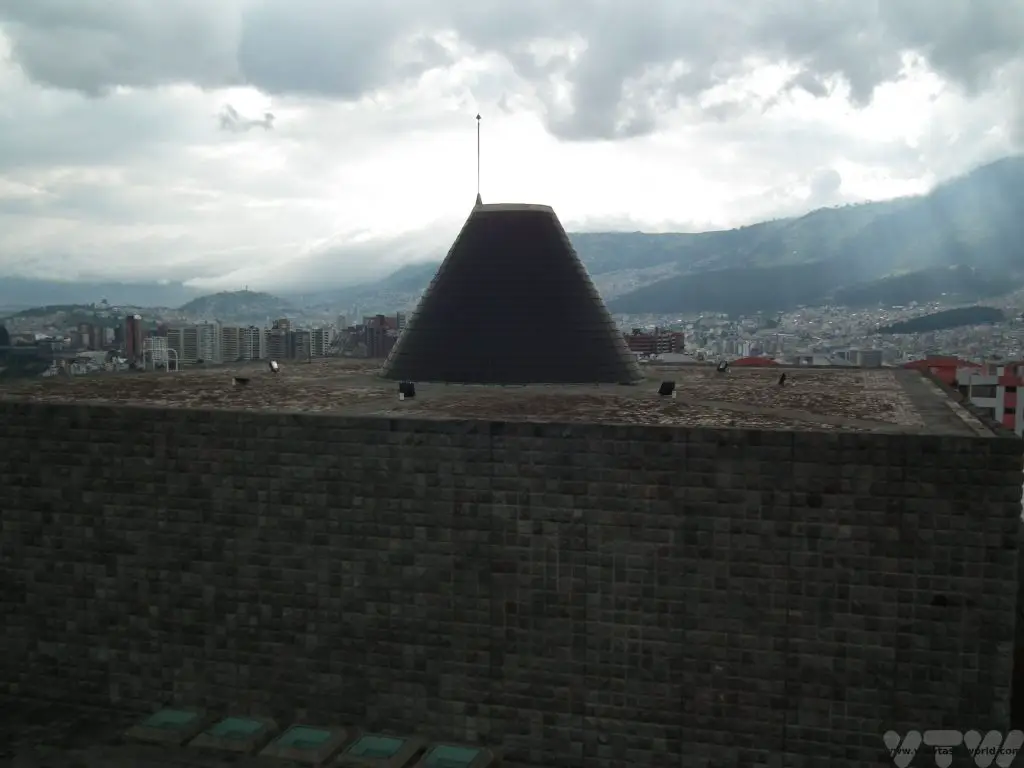
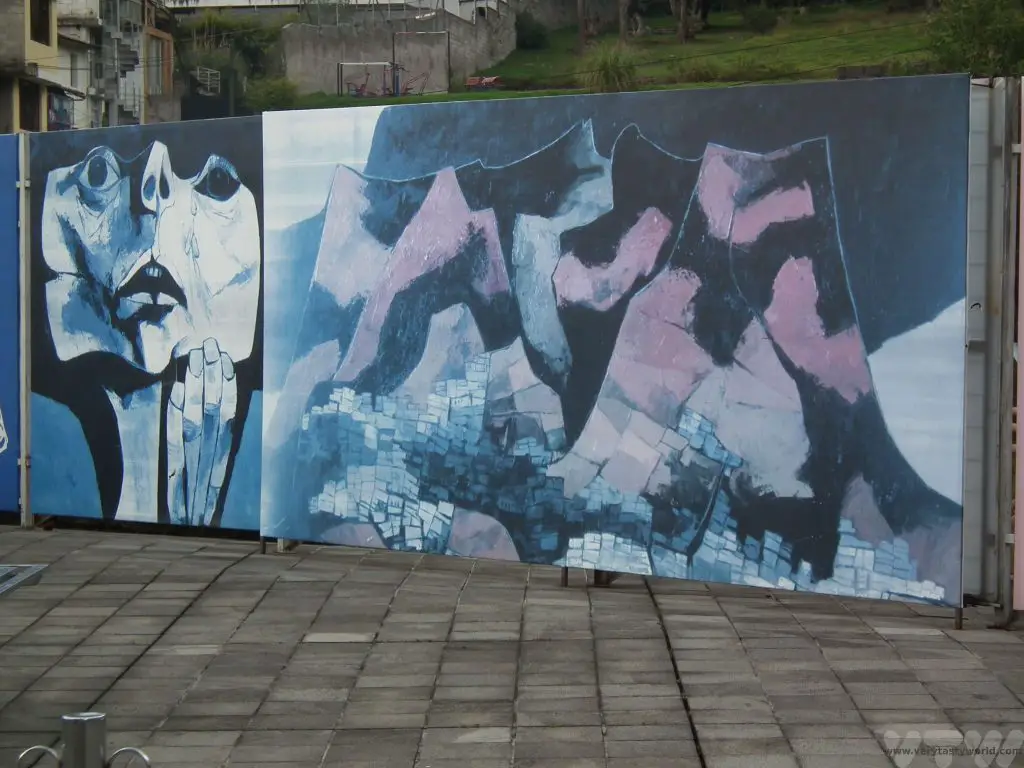
Visit Quito – Day Trips Further Out
There are loads of day trips to explore the area surrounding Quito. Again, your accommodation will likely be able to help you find and book a trip that suits your interests, even if it might be at quite short notice. (We arrived from the airport late in the afternoon and managed to organise a day trip for the following morning.) Many companies offer coach trips that can pick you up from your accommodation (and a whole bunch of other tourists up from their accommodation, so bear in mind that the first hour of the trip could well involve sitting on a coach collecting people – which was fine for us as we could doze for a bit to catch up with the jetlag). But the greater the number of people that join the excursion, the lower the cost, and it’s often nice to have company on a day trip as well. Full day trips usually include lunch at a local restaurant.
Quilotoa Crater Lake
This was a full day trip, primarily to see the crater lake, which is located some 180 km from Quito. The journey takes a couple of hours direct from Quito, so other activities were incorporated into the trip to break up the day.
First stop was a market where we could see local produce for sale…
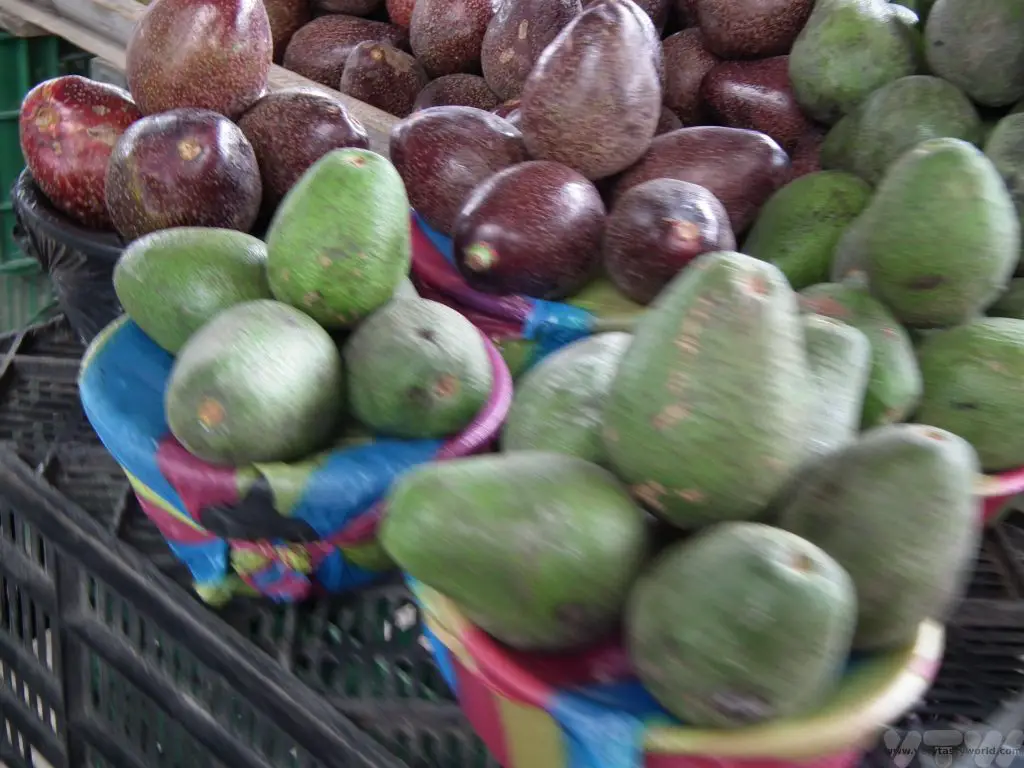
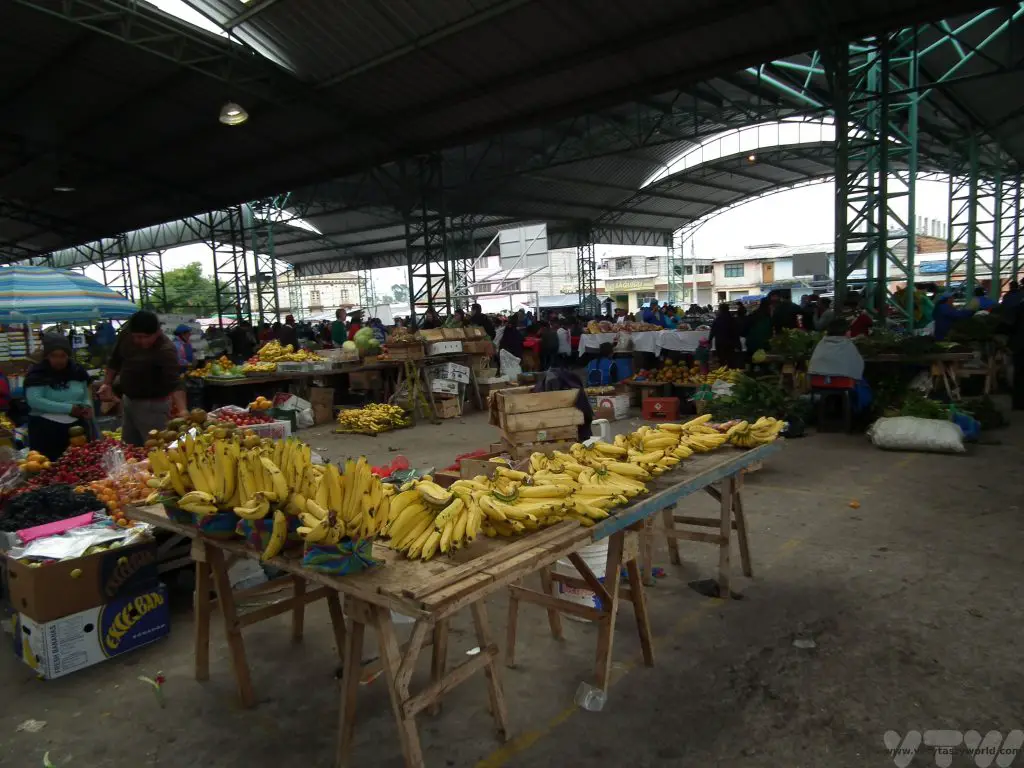
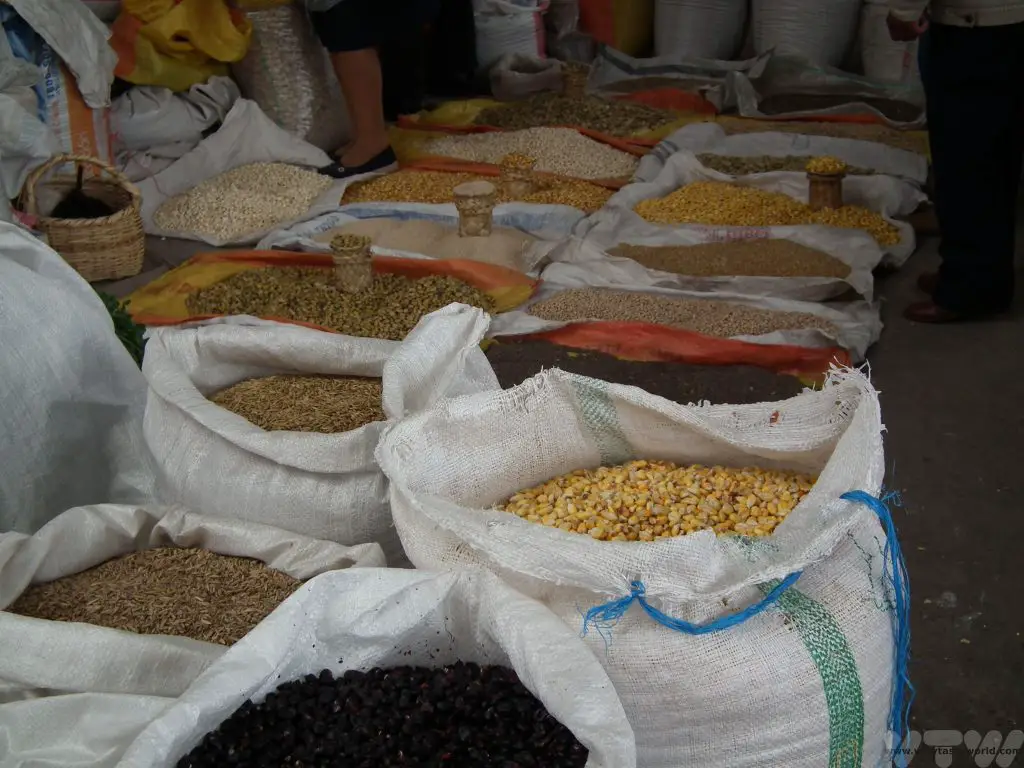
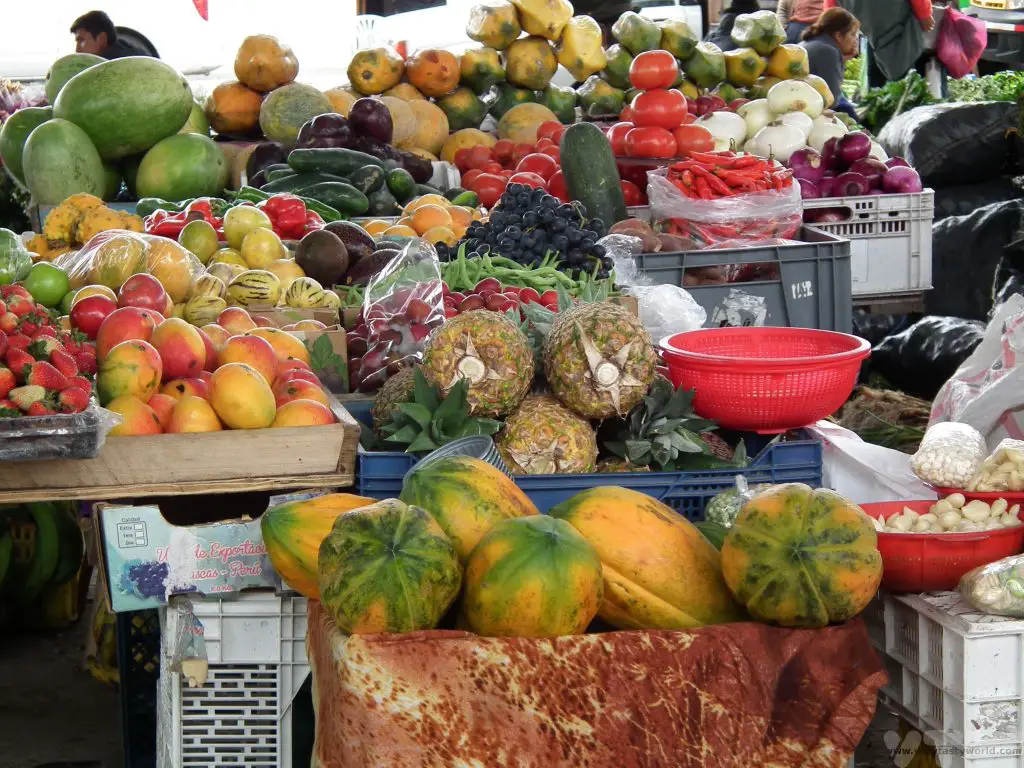
…And then onto the lake itself. It’s a caldera caused by the collapse of the volcano when it erupted in 1280. The crater filled with water over the years and now forms a lake, some 3km in diameter. It is possible to walk around the rim on a trail (it’s about 7.5 km) but we didn’t have enough time for this, so there’s a pleasant half hour stroll to the lake itself. It’s worth remembering that you are at altitude so the hike back up to the rim may take longer if you have not yet acclimatised. Also bear in mind that the sun is strong, even on a cloudy day, so make sure you have sun protection. The caldera itself is beautiful.
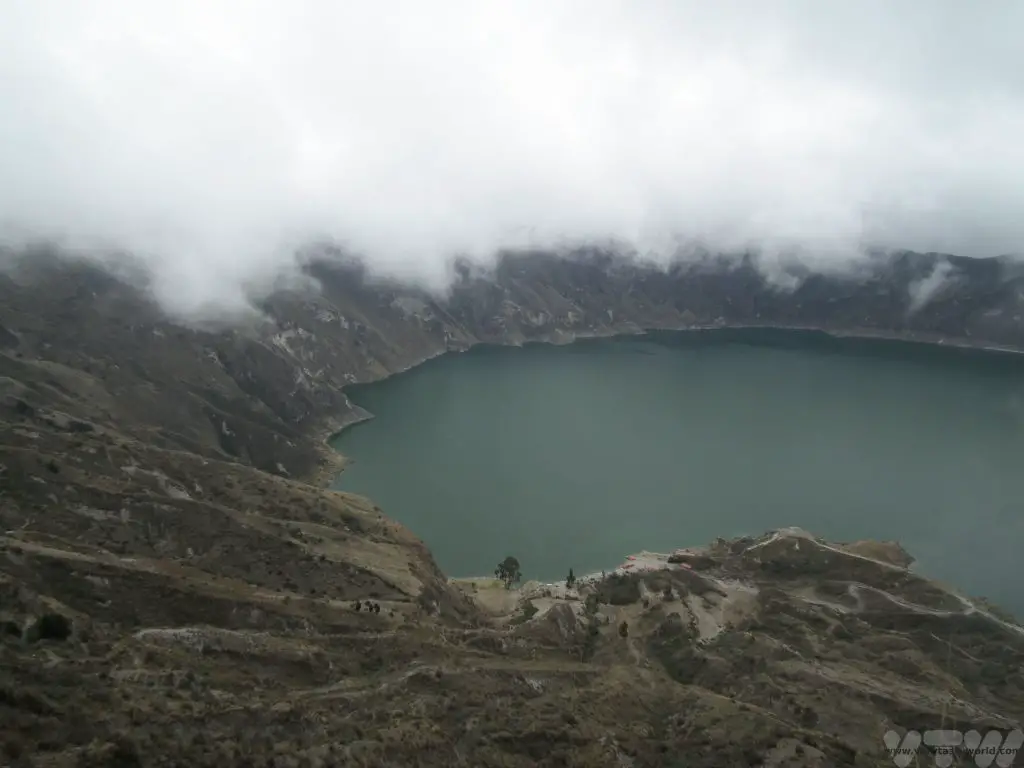
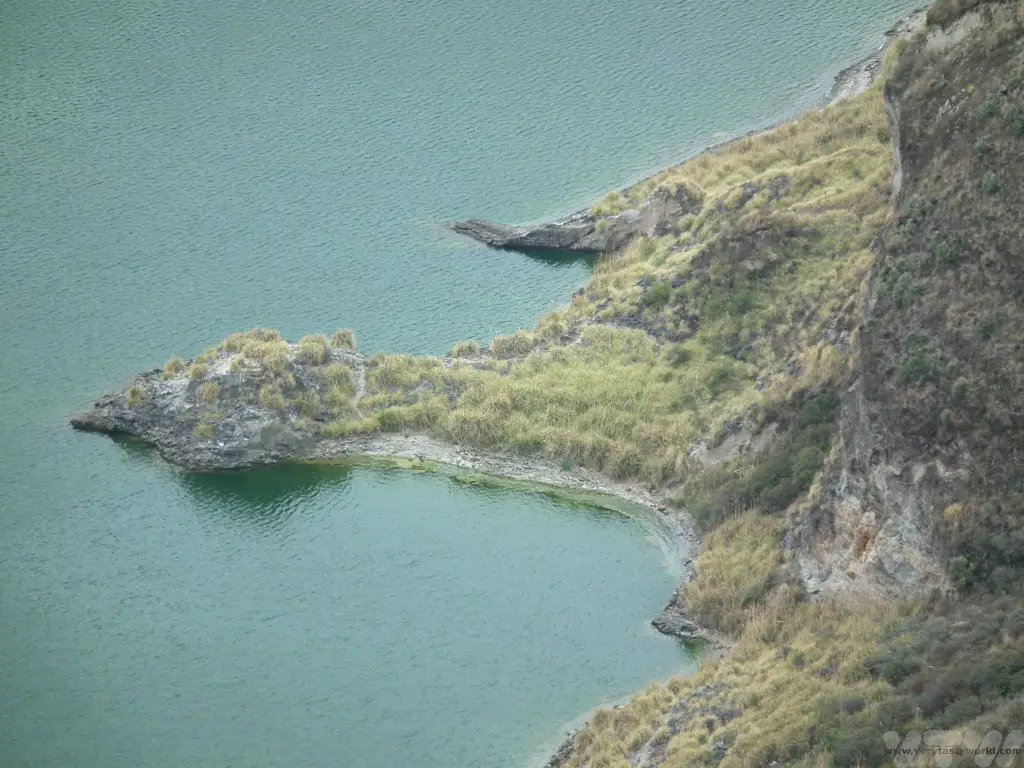
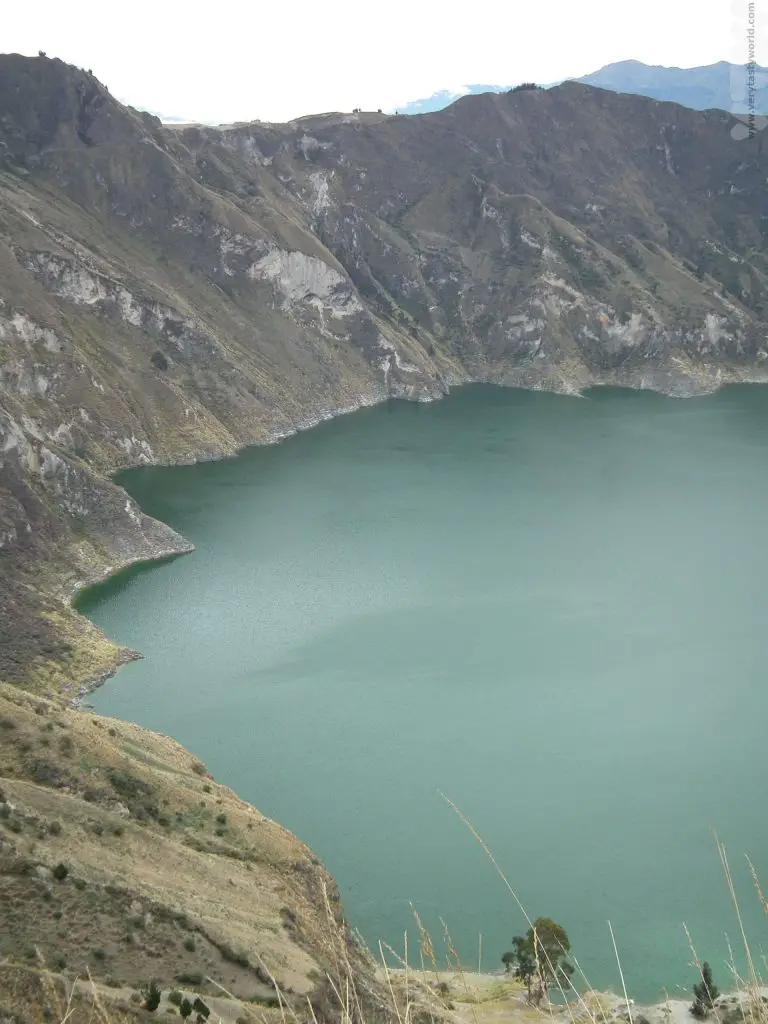
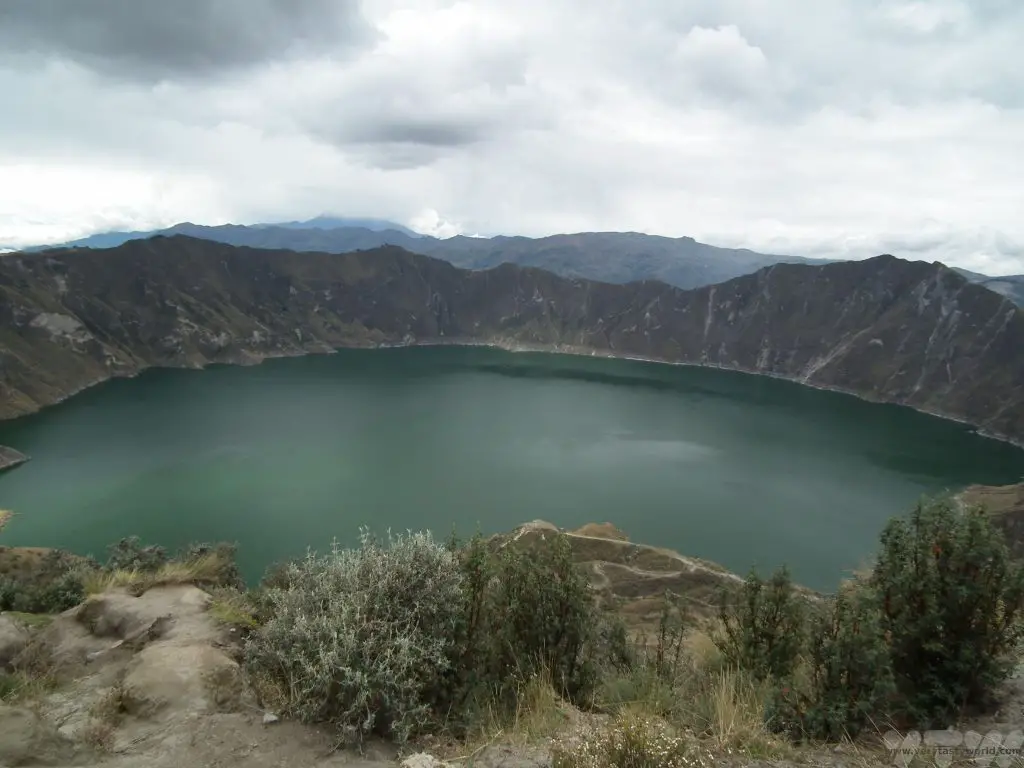
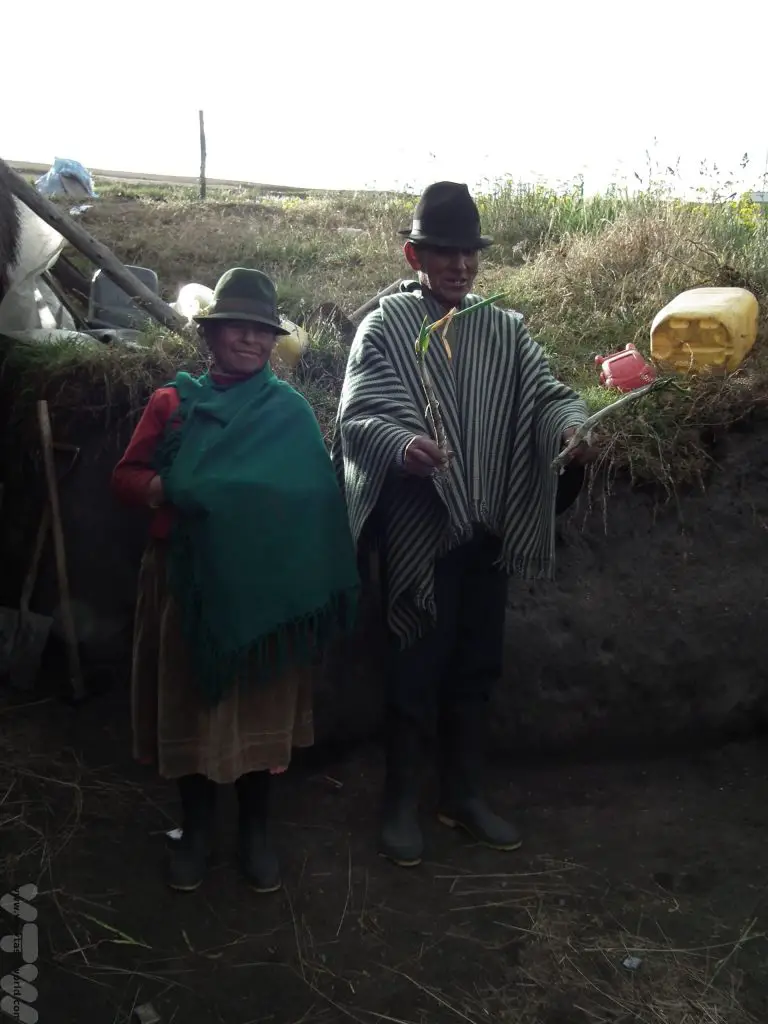
We also stopped off at Tigua to visit a local family home.
And in the late afternoon, as we headed back into Quito to do the reverse of the hotel pickups, we just happened to pass by the Cotopaxi volcano at sunset so the driver stopped off to let us all have a photo stop. Well, with a view like this it would have been rude not to.
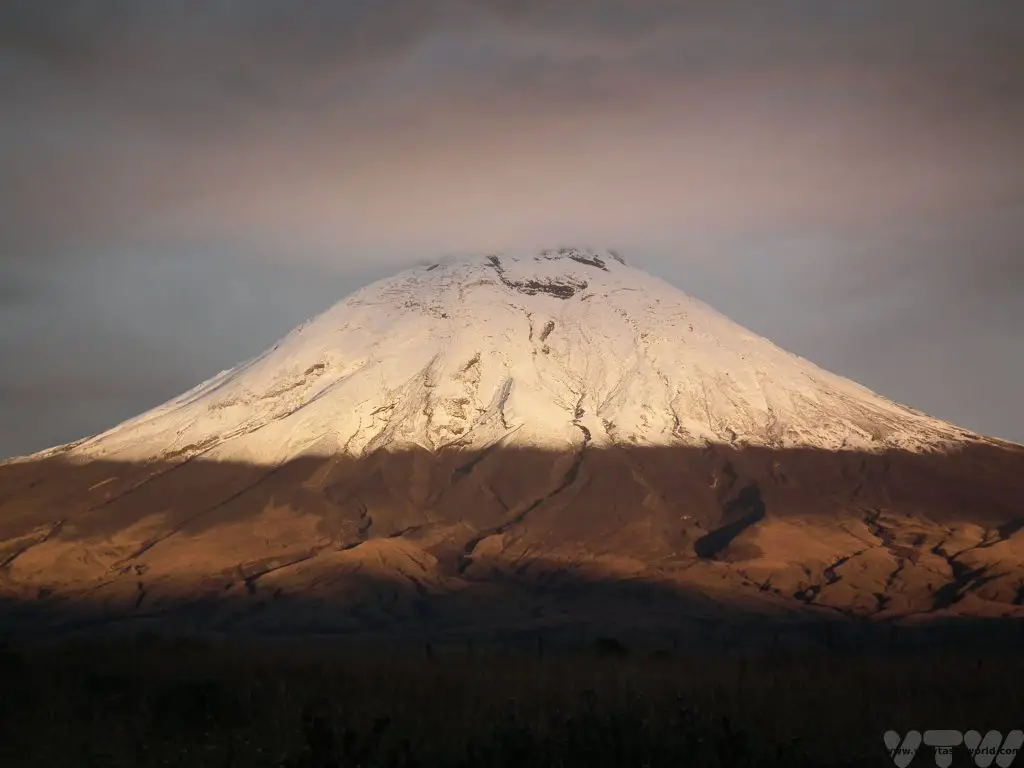
It’s also worth noting there are lots of trips and activities at Cotopaxi – from climbing up it to mountain biking down it (at vast speed) as well as horse riding and jeep tours. Local tour operators and hotels will be available to find something that suits.
Bellavista Cloud Forest
We had long wanted to visit a cloud forest and booked directly with the organisation. They arranged a pick-up from our hotel in the central district – very early in the morning – to take us and a group of other people on a drive to the cloud forest that took a couple of hours. After breakfast at the lodge we embarked on a guided walk. Unfortunately the best time to see the birds is around 6:30am – about the time of our Quito pickup. Some people stay overnight in order to be able to take the early morning walks in order to get a greater chance of viewing the birds. It’s also worth noting that we found the experience to be expensive. Still, the walk was lovely and the guide knowledgeable. These are actually colour photos but the forest was so wonderfully cloudy they have an evocative black and white feel to them.
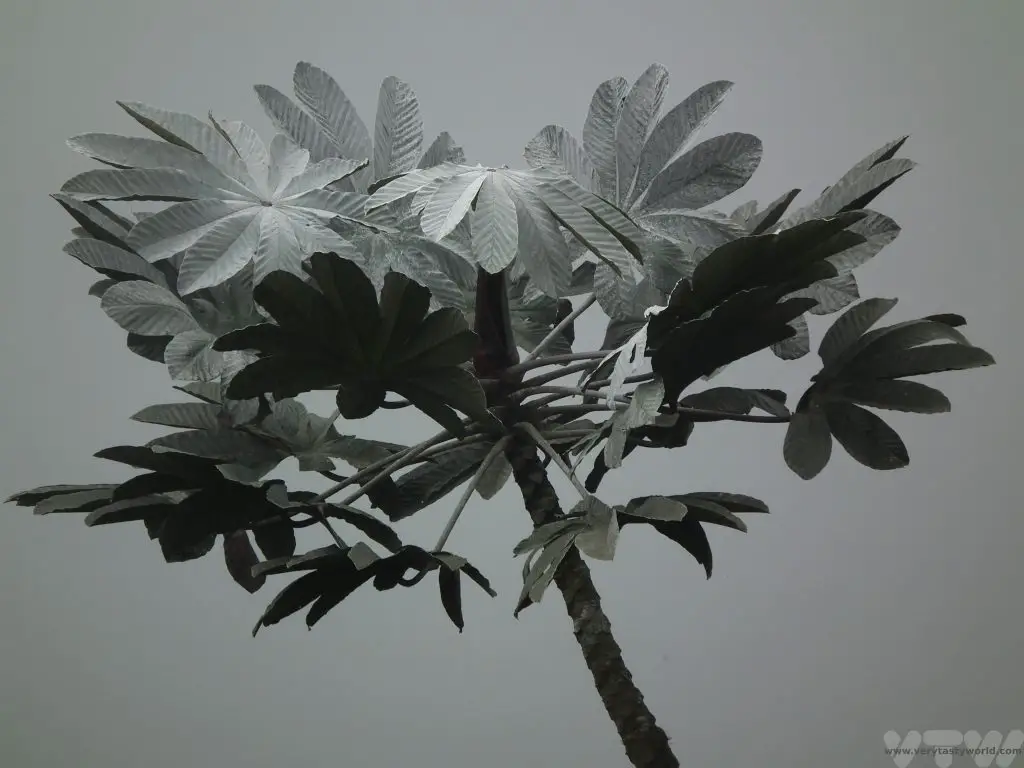

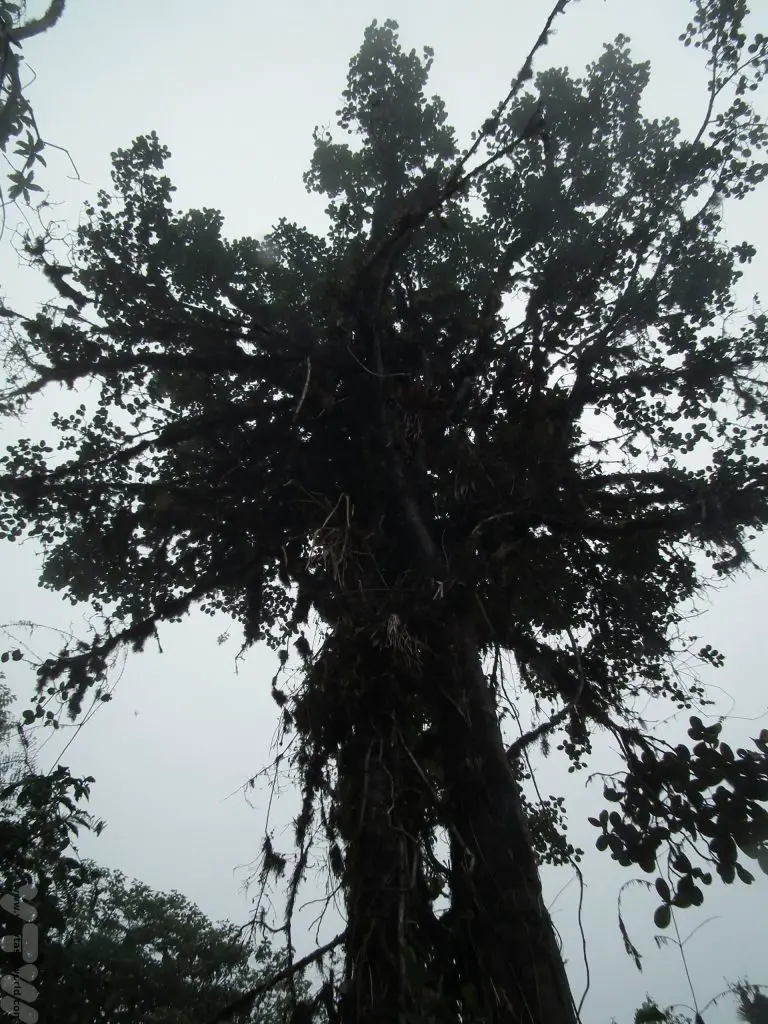
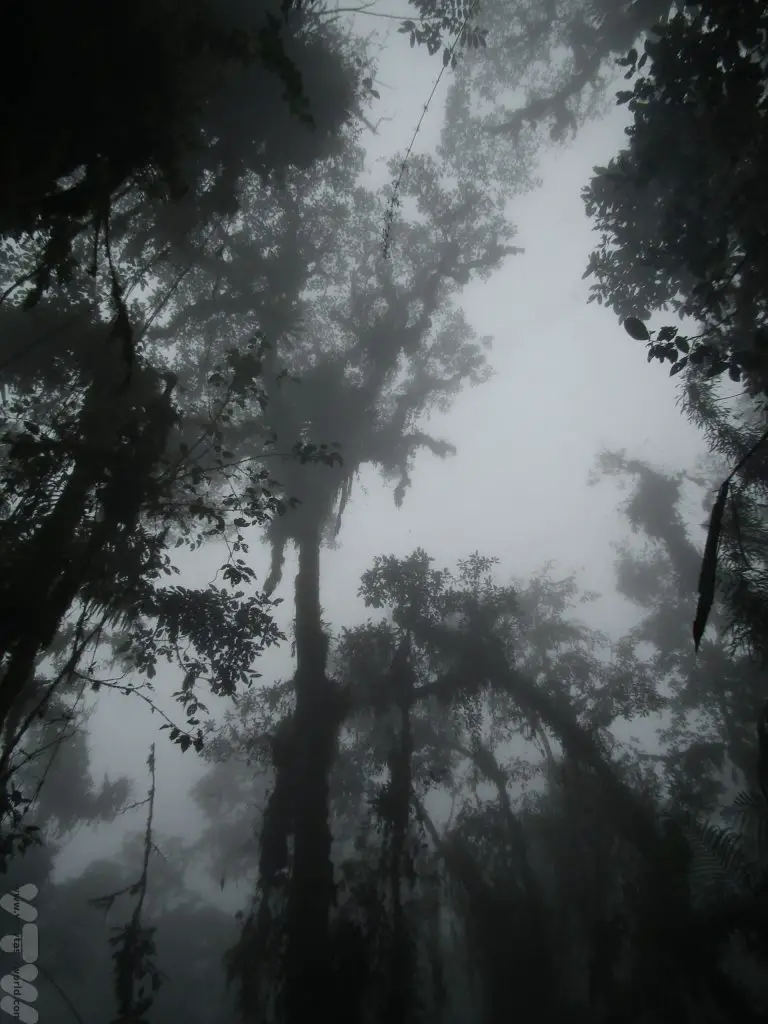
It was also nice to be able to see gorgeously colourful and beautifully iridescent hummingbirds, and other birds, using the feeders that were located around the lodge, flitting, darting and hovering.
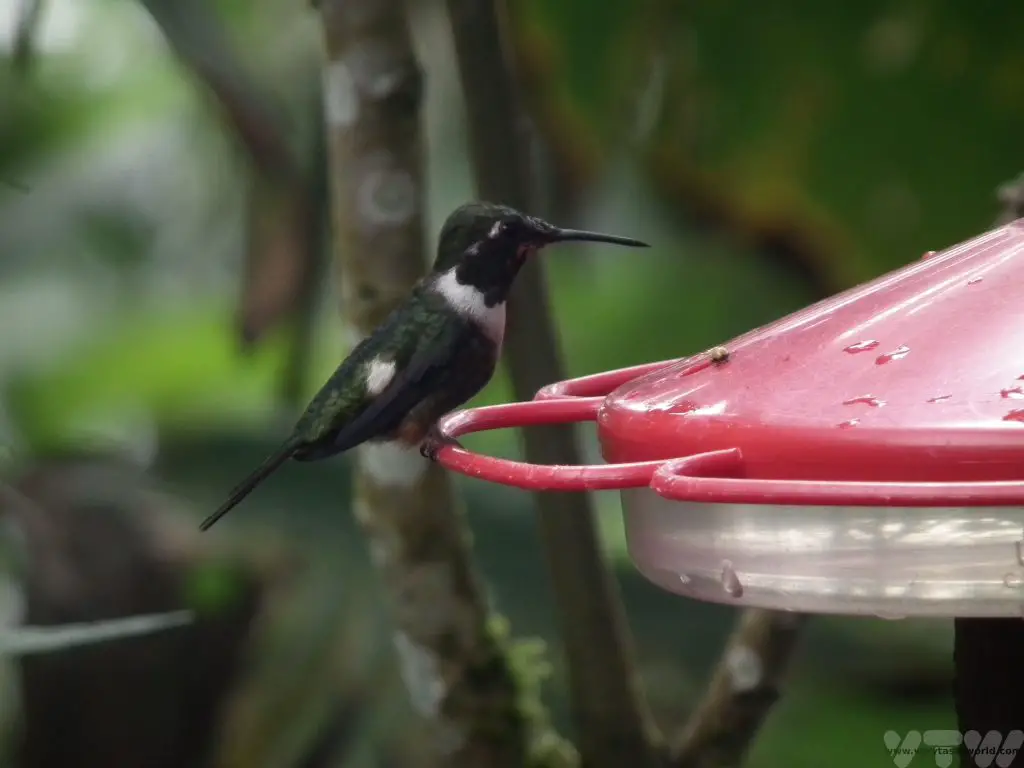
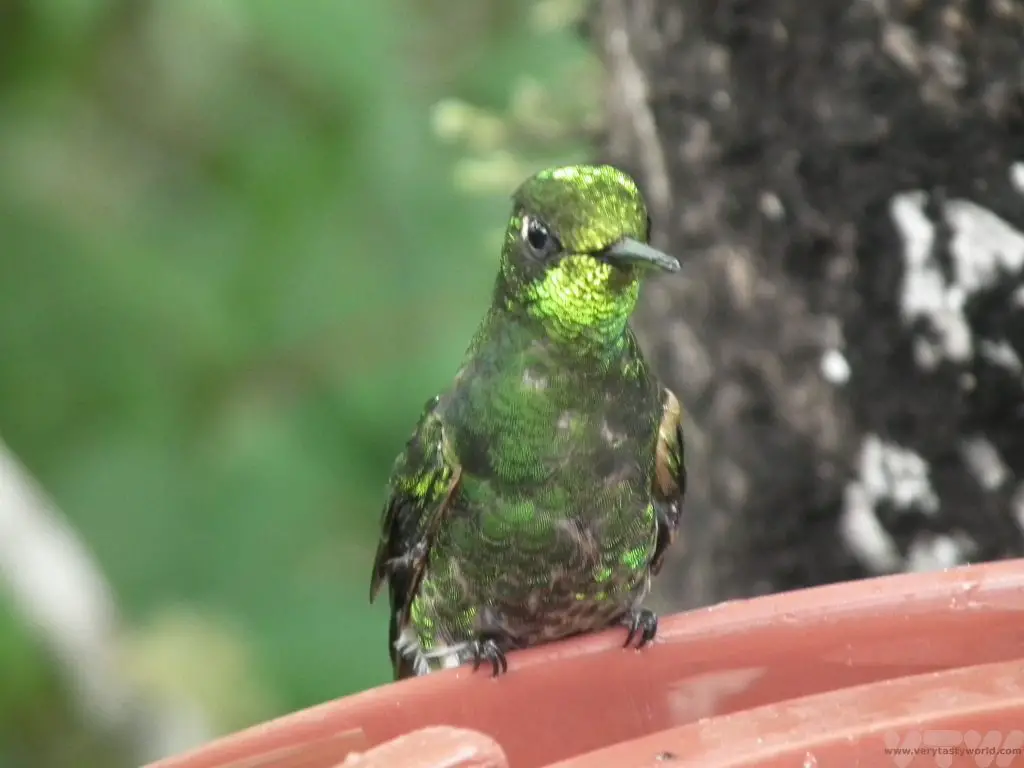
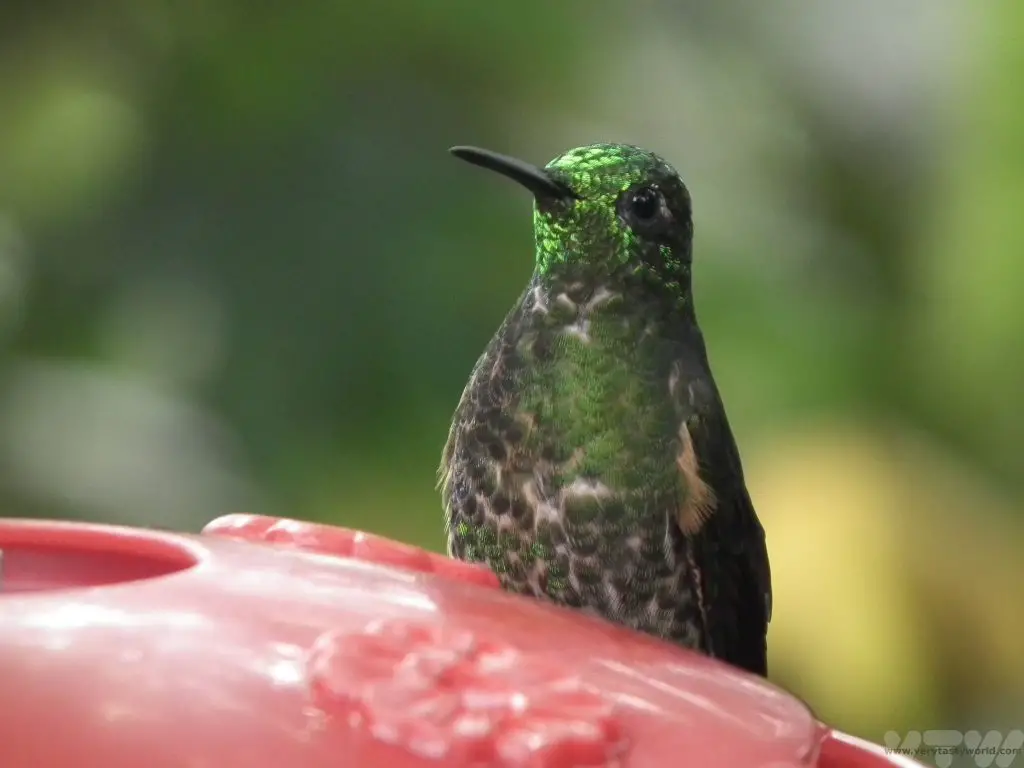
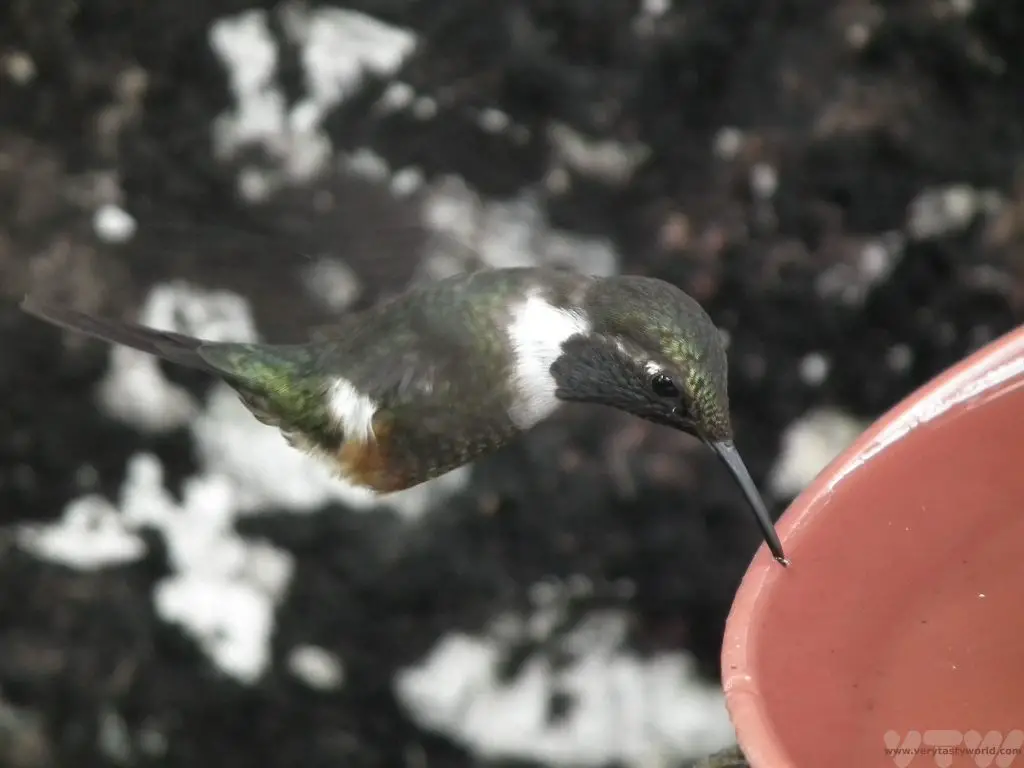
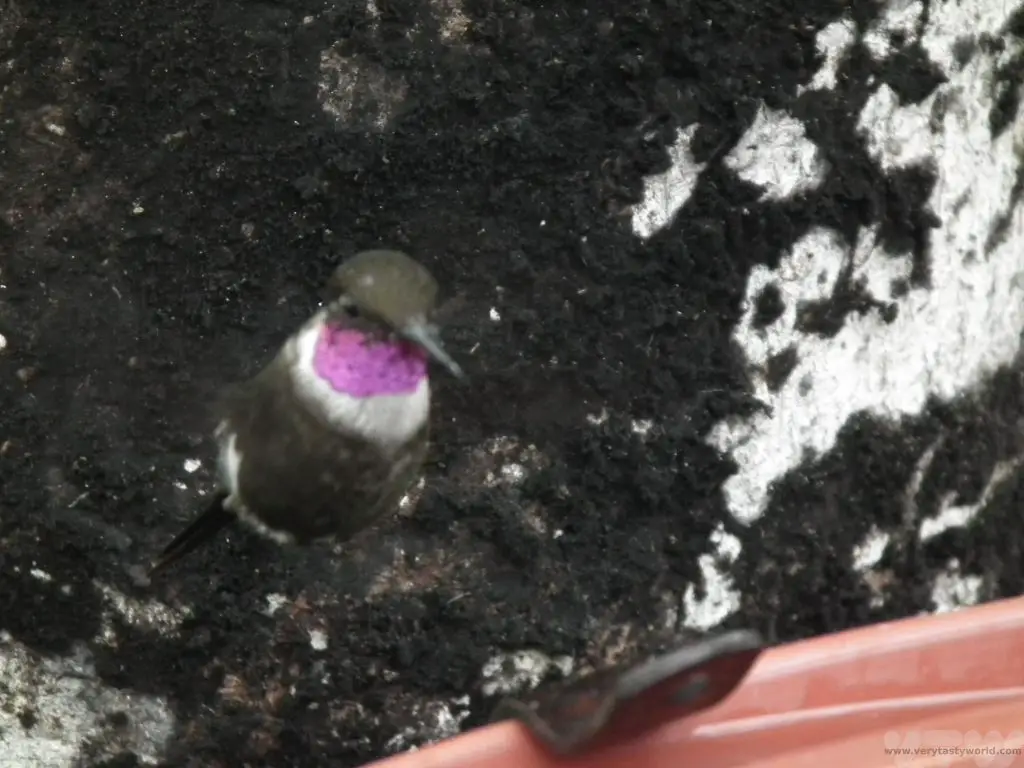
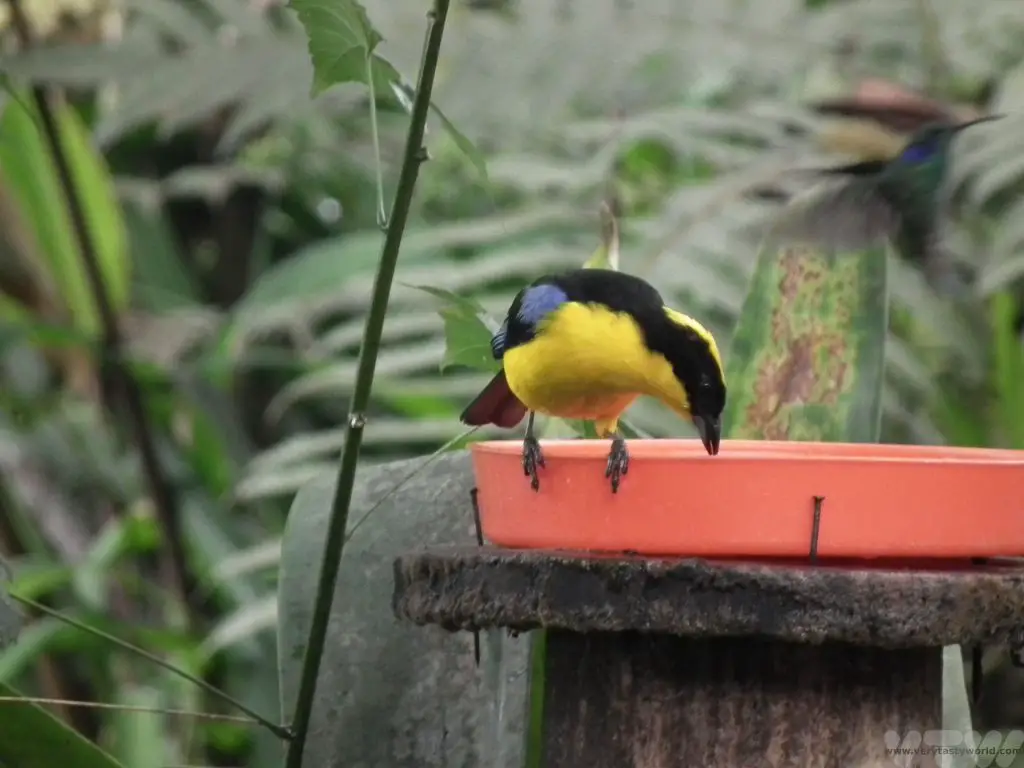
Even if the Galapagos are your primary reason for visiting Ecuador, there are loads of activities in the area when you visit Quito – whether wildlife, activity or cultural – and it is definitely worth incorporating these into your itinerary if you have time.
Related Posts You May Enjoy

- Best Time To Visit Machu Picchu 2024 Update
- A 2 Week Patagonia Itinerary
- Day of the Dead in Campeche
- A Galapagos Land Based Itinerary
- RECIPE: How to Make Costa Rica’s Gallo Pinto
- A Tasty Puebla Food Tour
- Costa Rica Wildlife Sanctuary – Caño Negro
- Visit Torres del Paine National Park in Patagonia
- Atacama Desert Itinerary
Luang Prabang Lao PDR (Please Don’t Rush)
There’s a general assumption that the cuisines of many countries in South East Asia – Thailand, Lao, Cambodia and Vietnam – are pretty much the same but that would be doing them a great disservice. While they may share many ingredients and seasonings, each cuisine is different and it is a joy to be able to discover the nuances of the foods from each country. Lao, for example, being landlocked, relies on the river for its piscine bounties rather than the sea. Hence most of the fish served will be river fish. River weed, dried in in the sun and flavoured with seasonings, makes for a tasty snack. Luang Prabang, Lao’s former capital, located in the north of the country, lies on the Mekong river at its confluence with the Nam Khan.
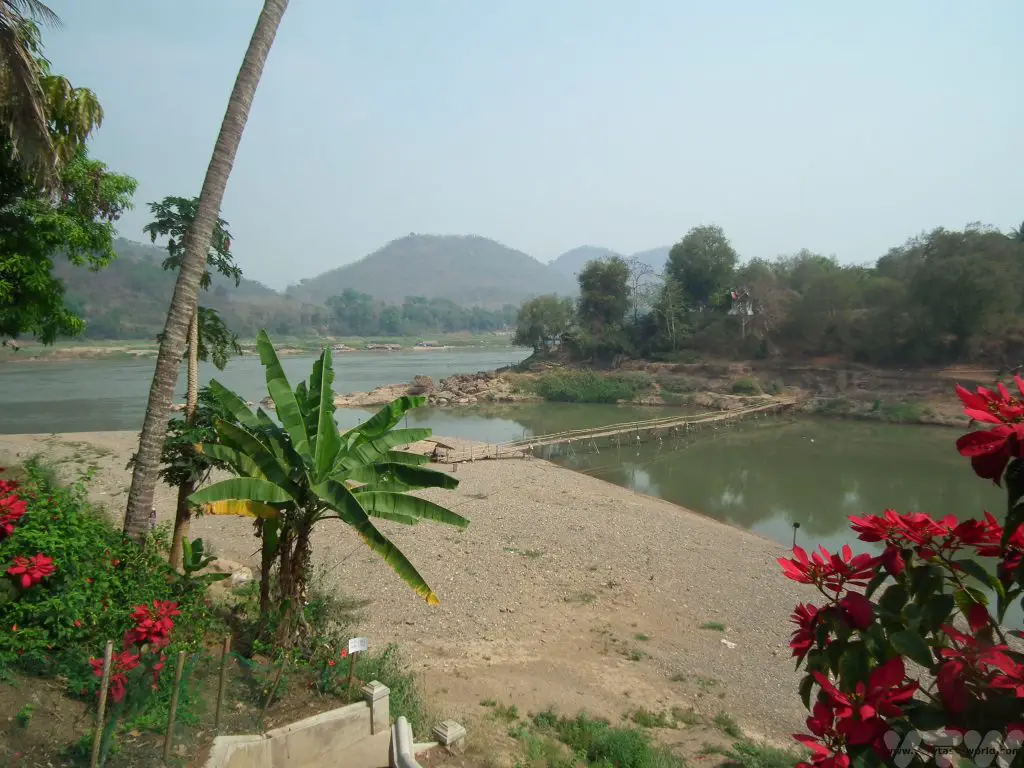
It’s a lovely, laid back town with plenty of temples and palaces to explore, which are largely within easy walking distance.
Wat Xieng Thong is the best known of the temples, located a short walk from the confluence. The main Wat has an intricate design and a beautiful tree of life mural.
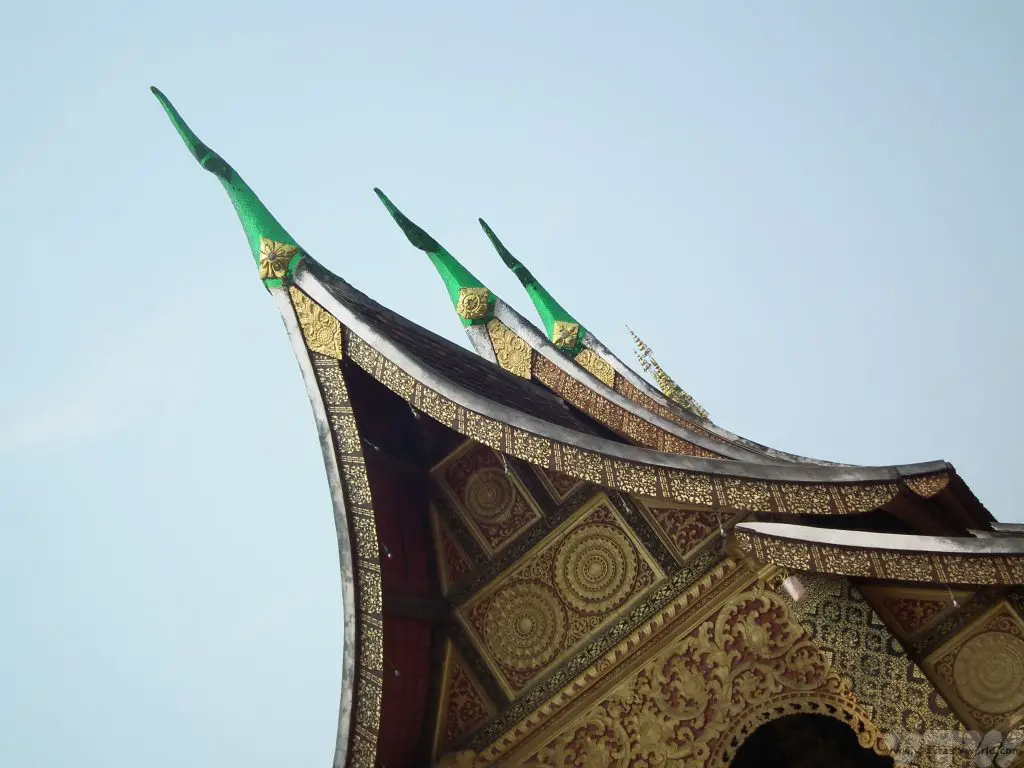
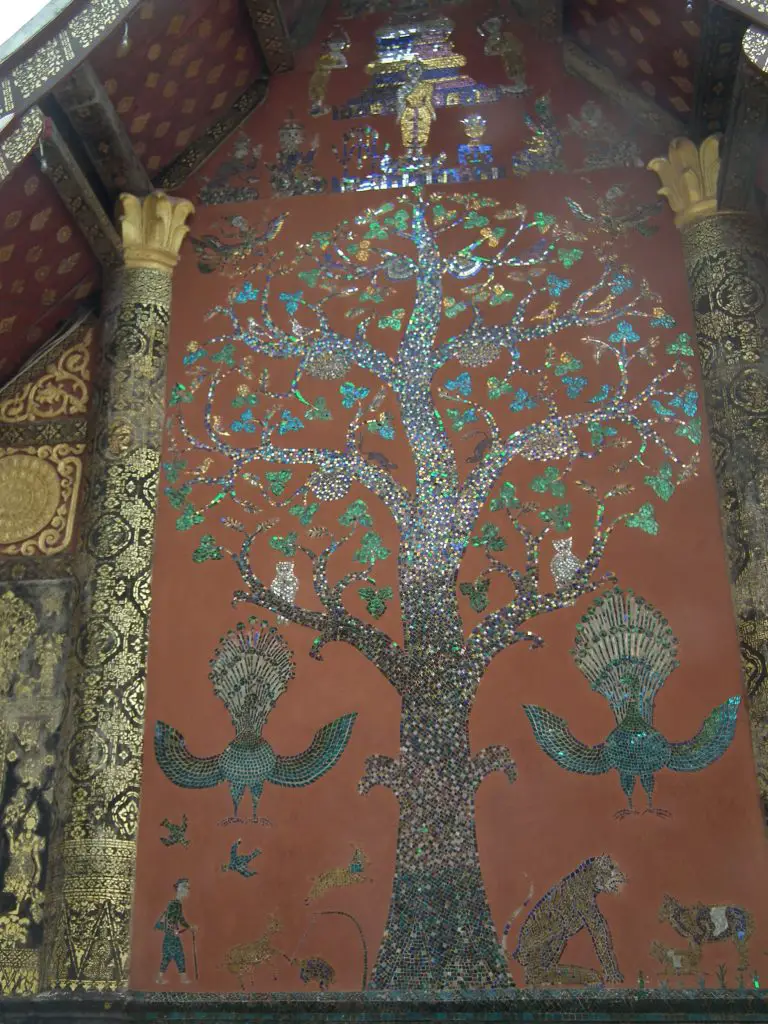
The Royal Palace was built in 1904 when Lao was under French occupation. The monarchy was overthrown by the communists in 1975 and the building converted into a museum.
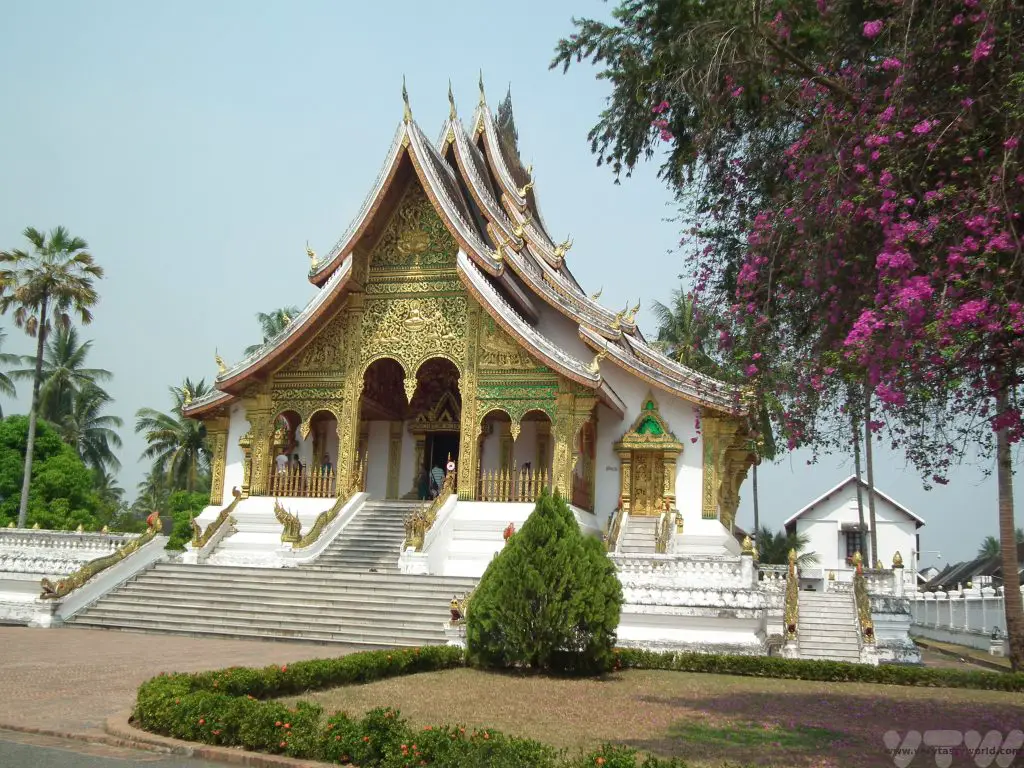
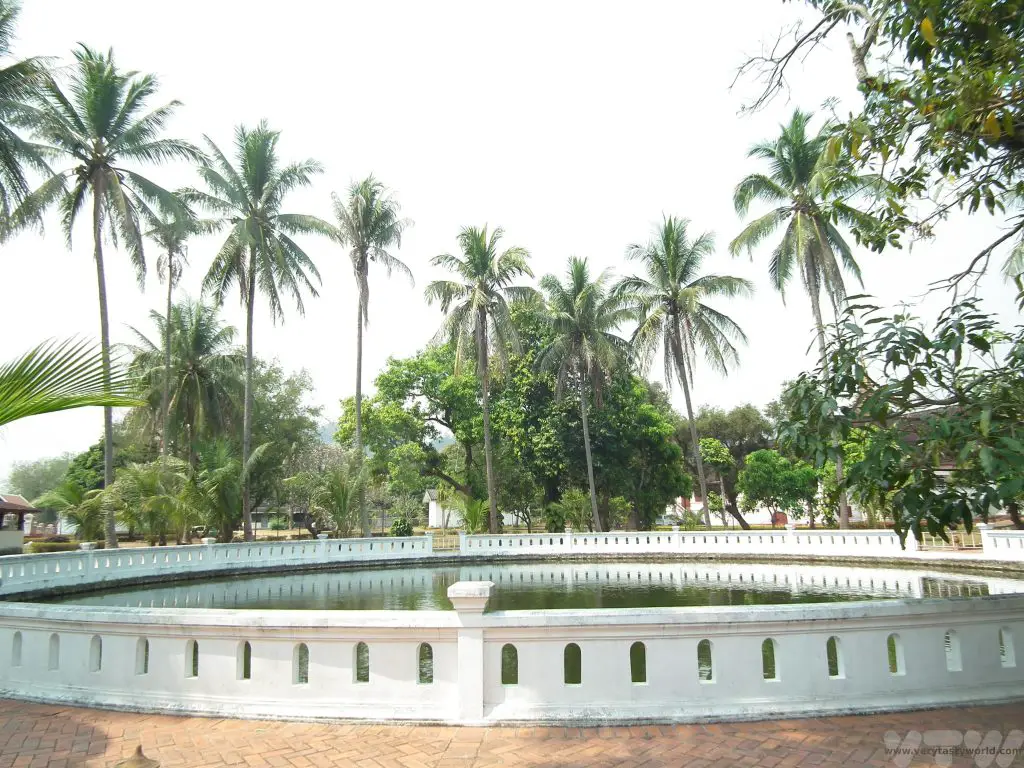
Crossing the Mekong and following a short hike up a hill you can reach the small temple of Wat Chomphet with its old stupa and Wat Long Khone. It’s more peaceful and less touristy on this side of the river.
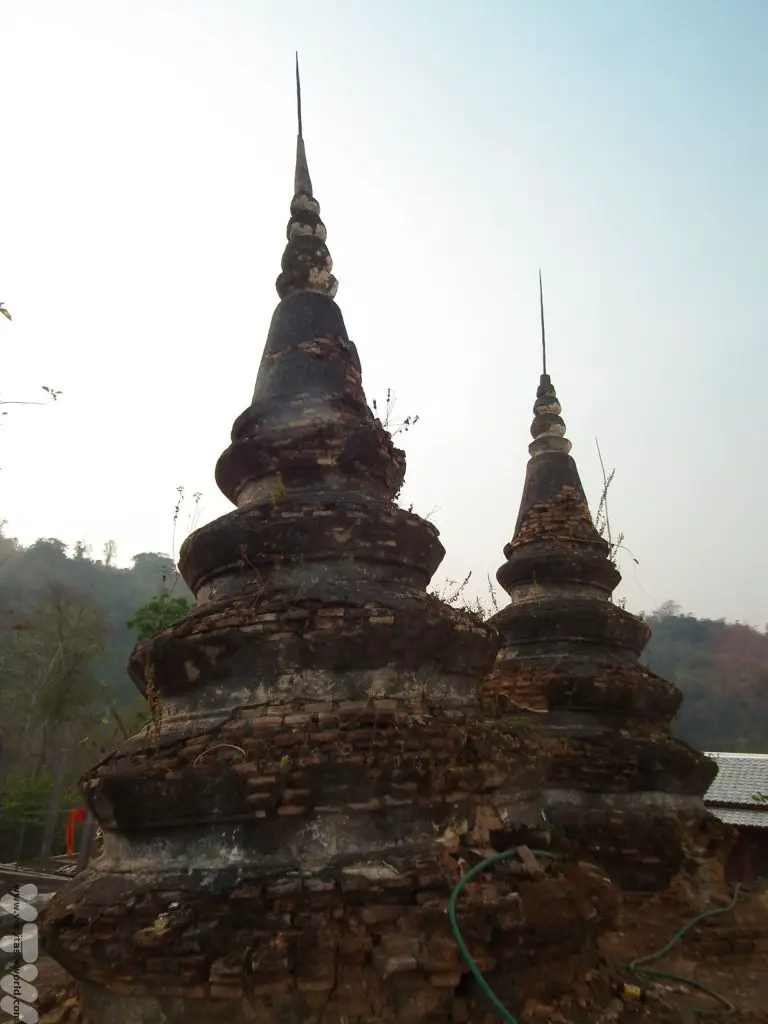
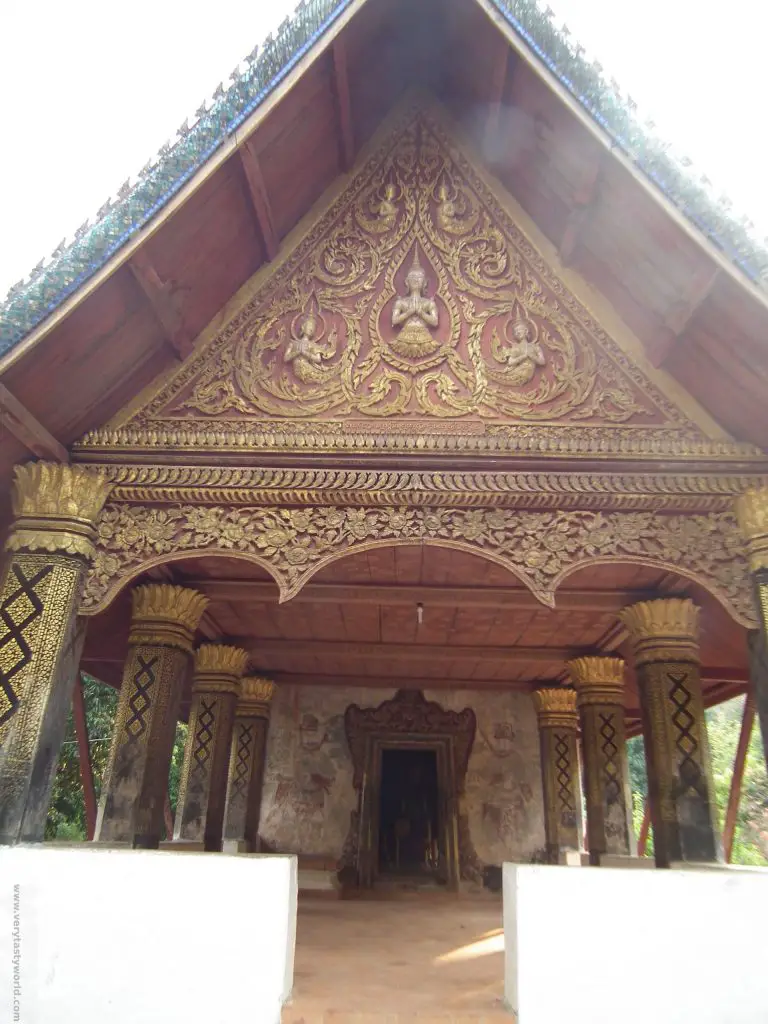
It’s also possible to hire a longboat and drift downriver at sunset, cool glass of beer in hand, enjoying the colours of the evening.
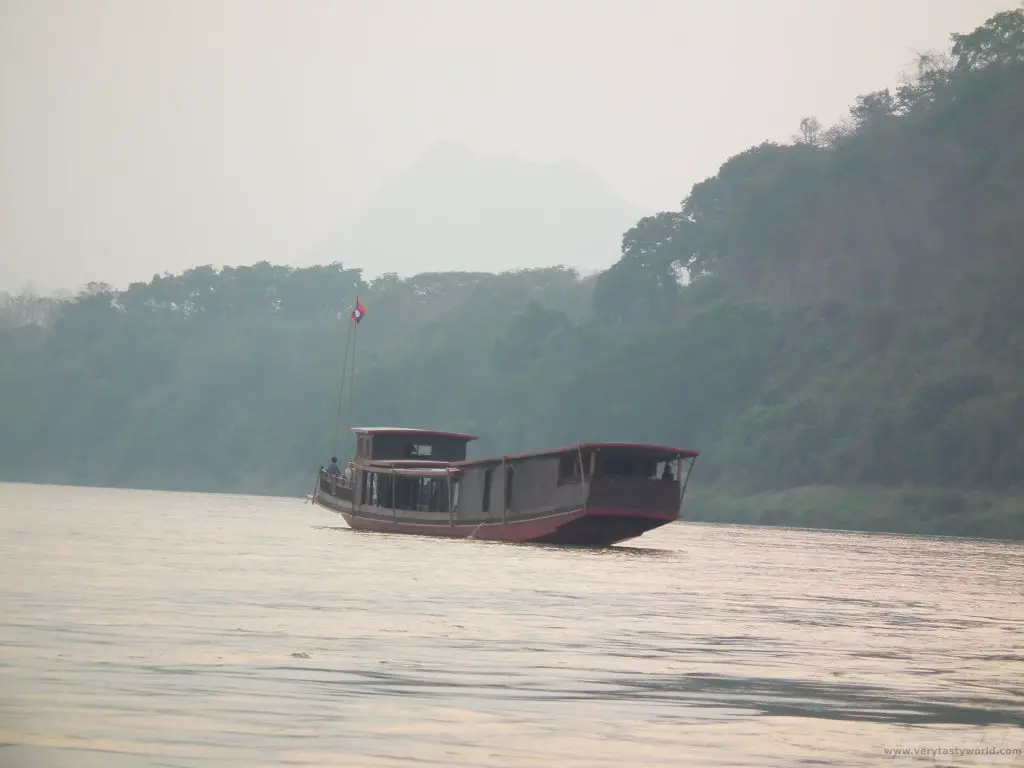
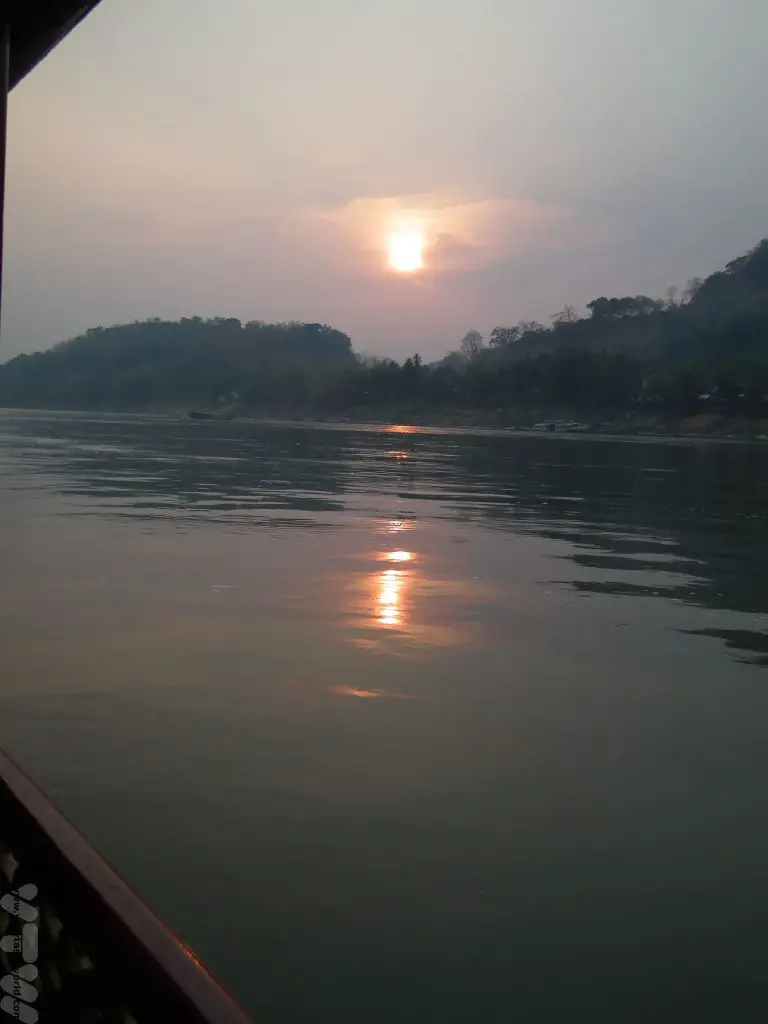
Lao’s formal name is Lao PDR – People’s Democratic Republic. Informally, locals will let you know that PDR stands for Please Don’t Rush – a wise philosophy which also means that you shouldn’t worry if service at restaurants is slow. (Actually, we didn’t notice particularly slow service anywhere we went.) But it’s a good reminder to relax and enjoy your time in this friendly country.
Luang Prabang Lao has a number of bars and restaurants which range from cheap eats to higher end offerings. Utopia is a short walk away from the town, set atop a cliff which overlooks the river. It’s a very laid-back place with a cool vibe and is located in a quirky garden setting.
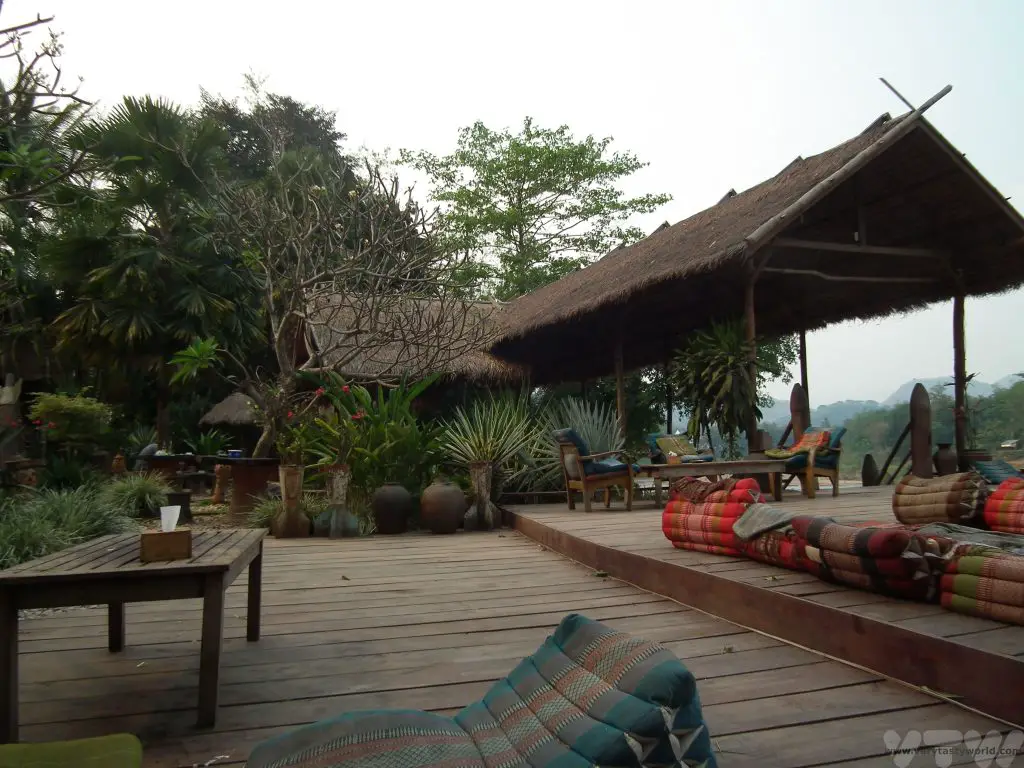
There is a sorrowful side to the garden design though. Many of the flower pots are actually bomb shells from the time of the Vietnam War when, over the course of nine years, the US dropped roughly two million tonnes of bombs on Lao in a secret attempt to support the royal Lao government against the communists led by Pathet Lao, as well as impact the Ho Chi Minh trail. The country remains the most bombed per head of the population in history. Worse still, a significant amount of the ordnance – about a third of the devices dropped – failed to detonate and, more than forty years later, there is still a huge problem with unexploded bombs that remain embedded in the ground, despite some international efforts to clear them.
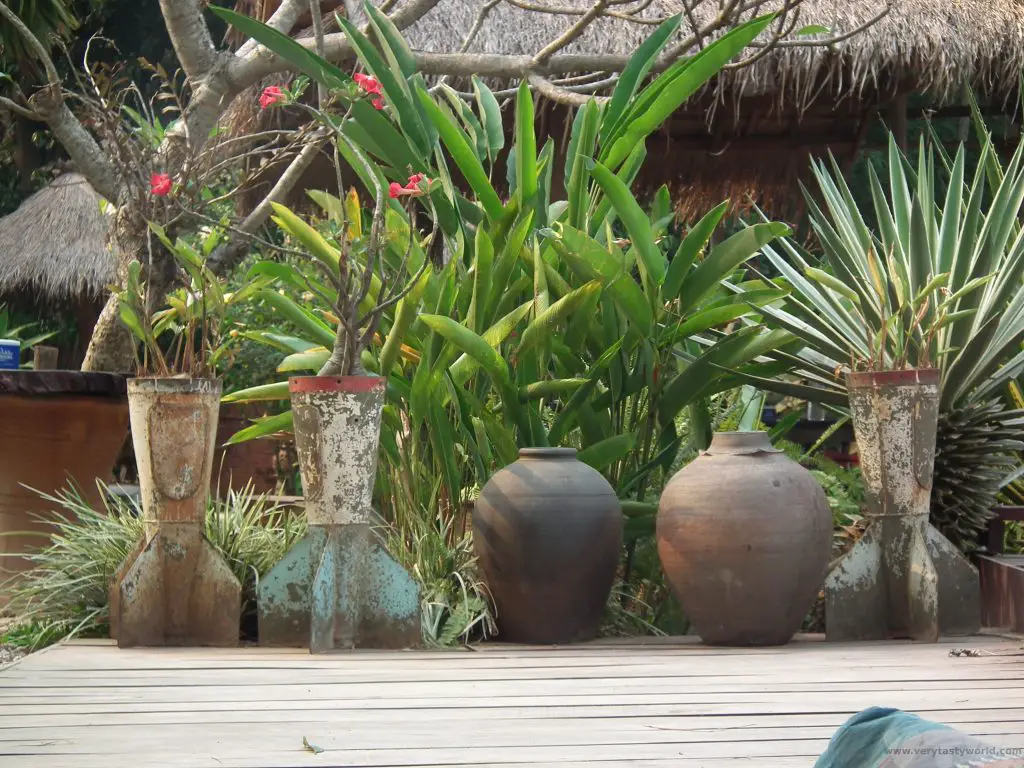
Utopia is popular amongst backpackers for its chilled atmosphere during the day (it has activities such as yoga lessons available) and livens up a lot at night, and it offers local and western food.
One of the best restaurants in Luang Prabang Lao for local food is Tamarind, on the Kingkitsarath Rd, and they specialise in local cuisine. They offer tasting menus which give visitors the chance to try various specialities. It’s a fantastic introduction to local fare. It’s a popular restaurant so it’s worth booking ahead if you can, although we got lucky with a walk-in for lunch.
We started with Lao-Lao shots as an aperitif. Lao-Lao is rice whiskey. Its name isn’t a cute term of endearment – the two words have different tones in pronunciation and hence different meanings. The first Lao means “alcohol” and the second means “from Lao”. The whiskey has a mild flavour but is pretty potent at round 40-45% alcohol.
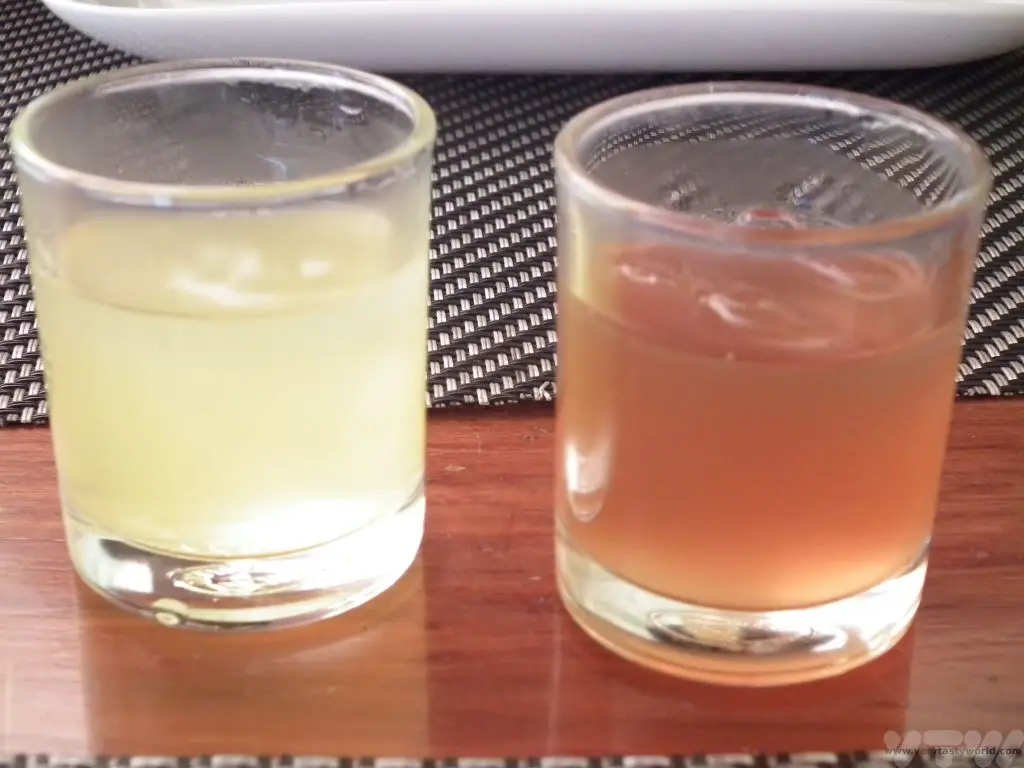
The starter was chunky bamboo and vegetable soup. A lot of Lao food can be searingly hot, with chilli often providing the heat, but this wasn’t; whilst still spicy, it had a piquancy in the seasoning that allowed the flavour of the vegetables and herbs to shine through.
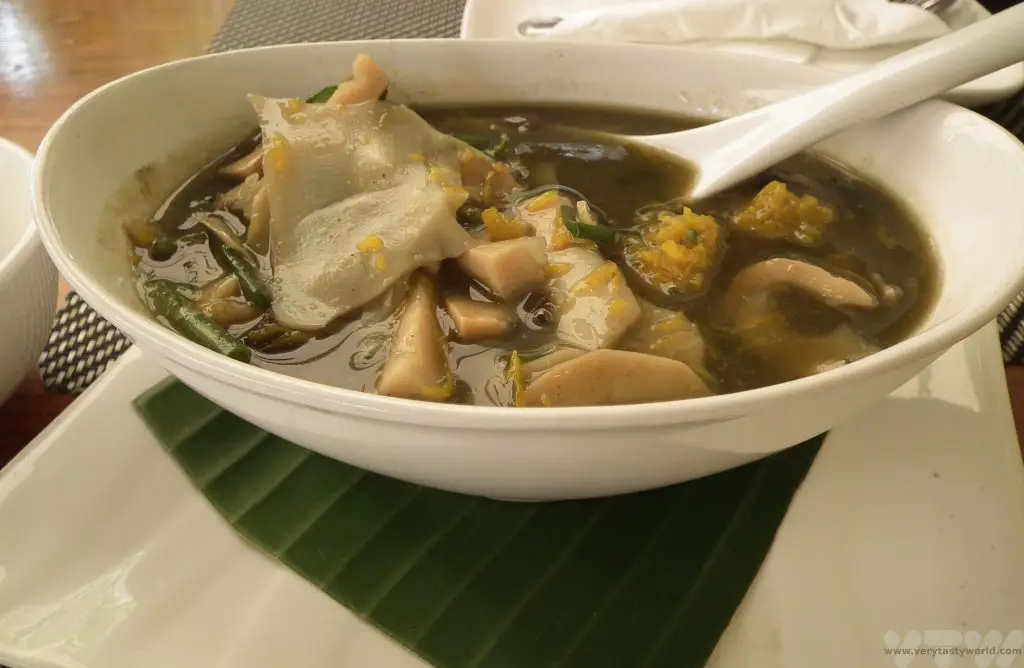
Then came a platter of Lao specialities. These included dinky little sausages with a variety of relishes, which varied in the amount of spice they delivered, as well as kaipen – crispy sun-dried river weed coated with sesame seeds.
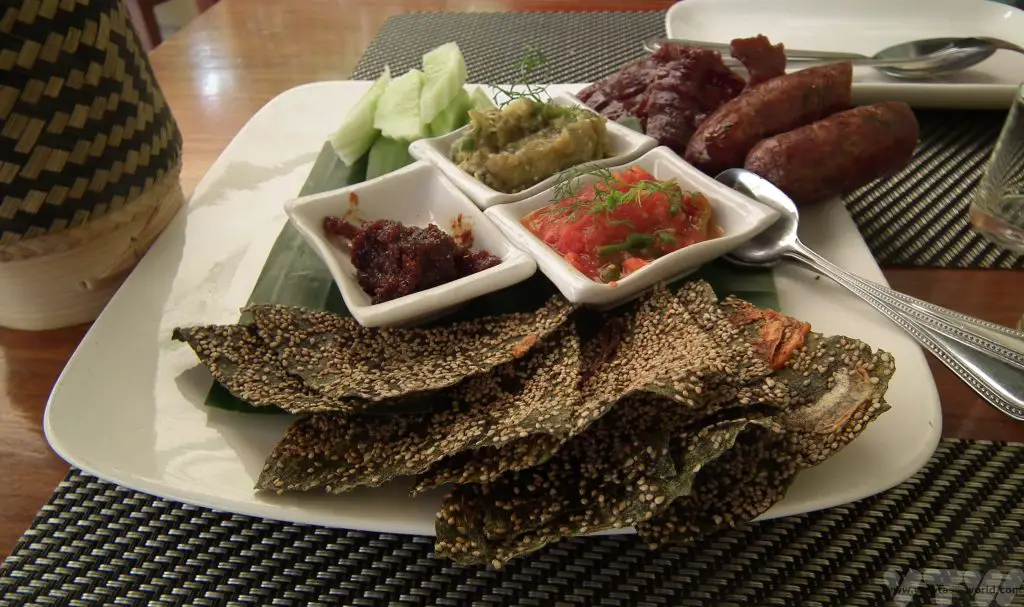
The next dish was fragrant lemongrass stuffed with chicken which felt like a bit of a contradiction. Usually you would expect lemongrass to flavour the meat but this was soft minced chicken, delicately spiced, placed into the bulbous part of the lemongrass stalk, then steamed and fried. The gentle scent of the lemongrass imparted a delicate citrus flavour. It was accompanied by herbed river fish steamed in a banana leaf along with local vegetables.
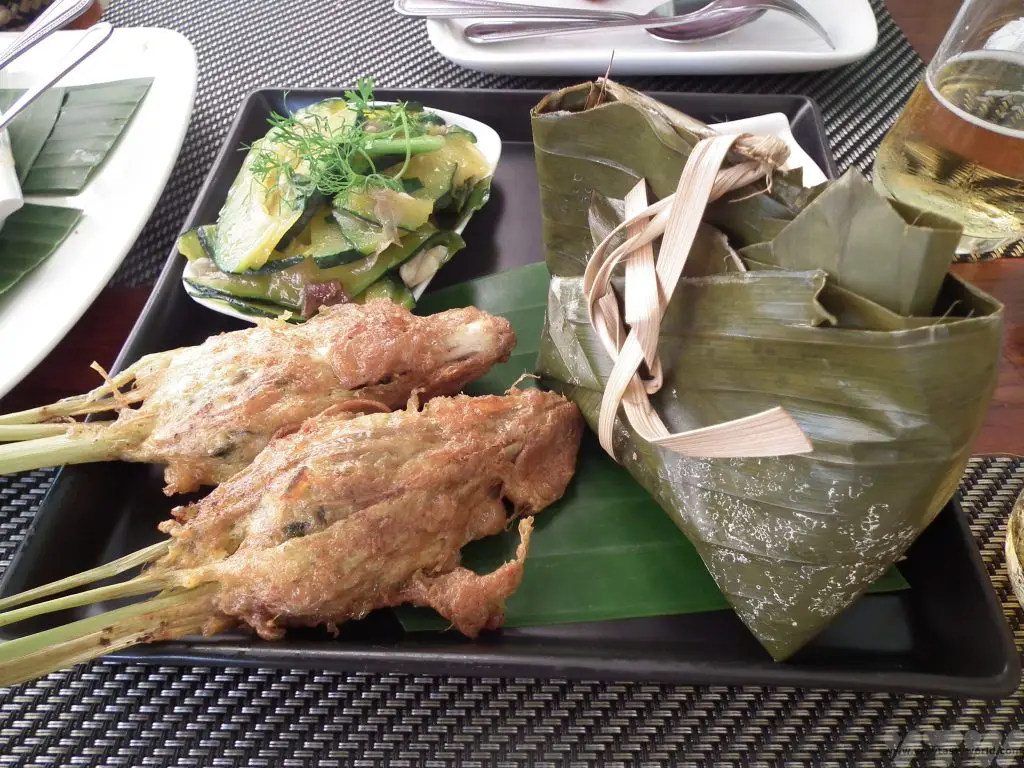
Finally, purple sticky rice cooked in coconut milk with tamarind sauce – which was sweet and slightly sour as well as delightfully sticky – rounded off a splendid meal.
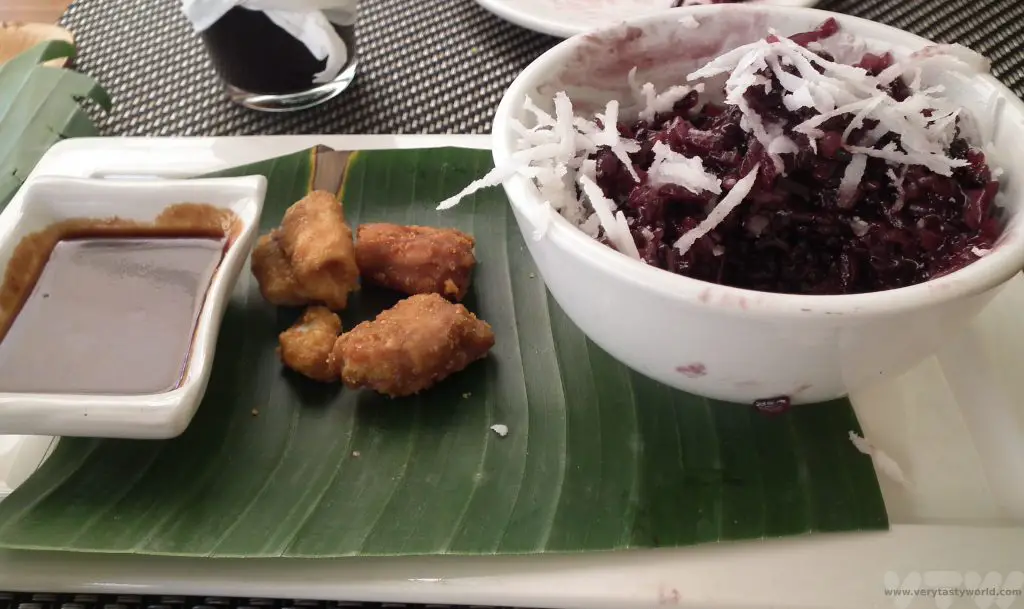

Making Miso Happy Part 1
Miso is the very essence of the fifth flavour umami, that enigmatic taste of ‘savouriness’ or ‘deliciousness’ and forms the flavour base of so many Japanese dishes. At its heart it is basically a fermented mix of soy beans, rice, koji (aspergillus oryzae, the national mould of Japan – really!), salt, water and time…
Like many Japanese foodstuffs, miso has regional variations. As a general rule (and there are always exceptions) the colour of finished miso is darker in the north, and lighter in the south of the country. Kyoto is famous for sweet white miso, for example. This means that it is possible to encounter a wide variety of miso on your travels – from rich umami to salty to sweet and with textures from smooth to chunky.
We visited a miso factory/koji park on a trip to Kanazawa on the western coast of Japan. Shinkansen (bullet train) construction reached Kanazawa just recently, in 2015, and the city is now easily accessible from Tokyo; the journey takes around 2.5 – 3 hours. It’s a great city with a lively market (which has some amazing seafood restaurants) and one of the top three gardens in Japan. The miso factory is located at Ohno machi (Ohno port), which is a bit of a journey; you can catch a bus from the Kanazawa station area (ask for the location of the bus stop at the tourist information centre inside the station concourse – it’s a five minute walk away) and it’s the very last stop. When you arrive at the sea you are there. You’ll likely be the last ones on the bus. Alternatively you can get a taxi. The journey from the station takes around 20 minutes but the cost is considerably higher than the bus. Then just walk over the bridge to the little island.
As an aside, at the far end of the island is a charming museum of mechanical toys which has a brilliant hands-on exhibition where you can spend hours playing games and enjoy viewing antique toys and games. The staff were absolutely delightful and very much wanted to make sure we enjoyed the exhibits. They were also very helpful when it came to supplying a timetable for the bus journey back into the centre of Kanazawa.
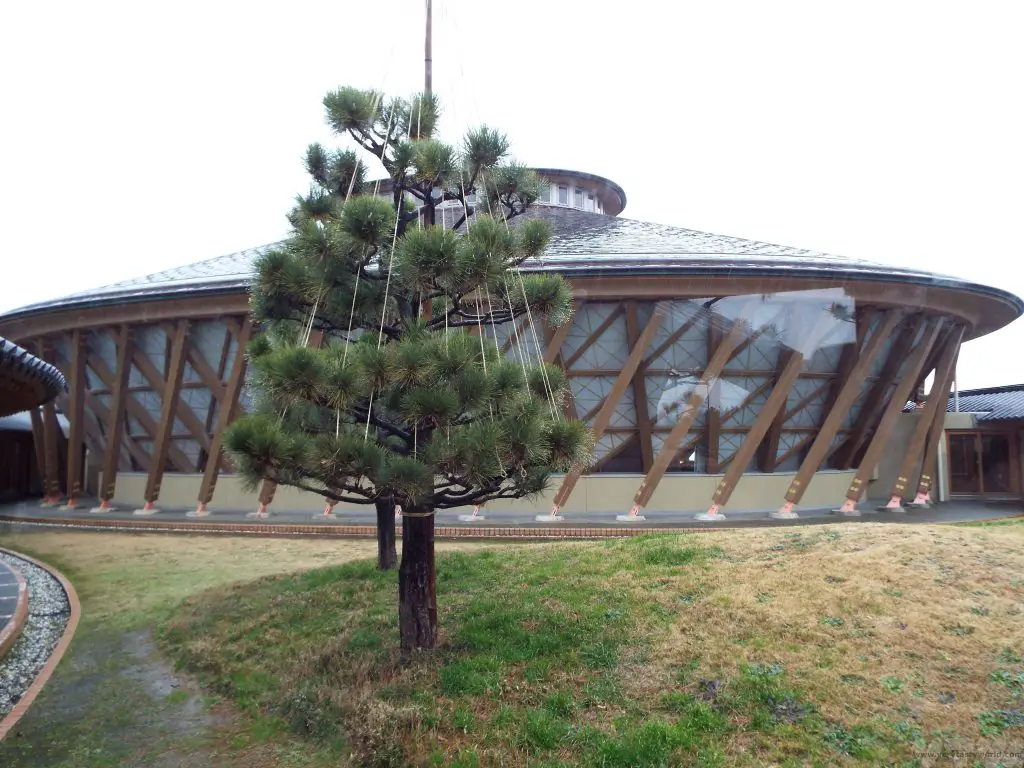
There are many historic mechanical puppets – karakuri – on display. The museum is a memorial to Benkichi Ohno,a master craftsman who lived in the area from 1831. Many of his creations can be seen at the museum.
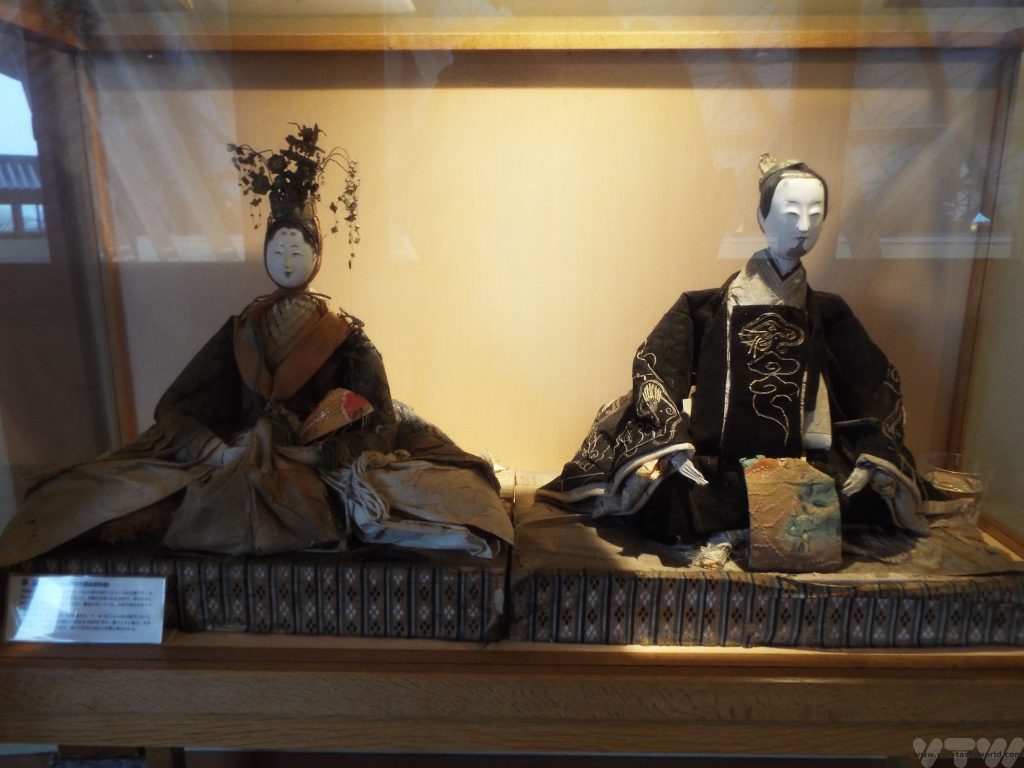
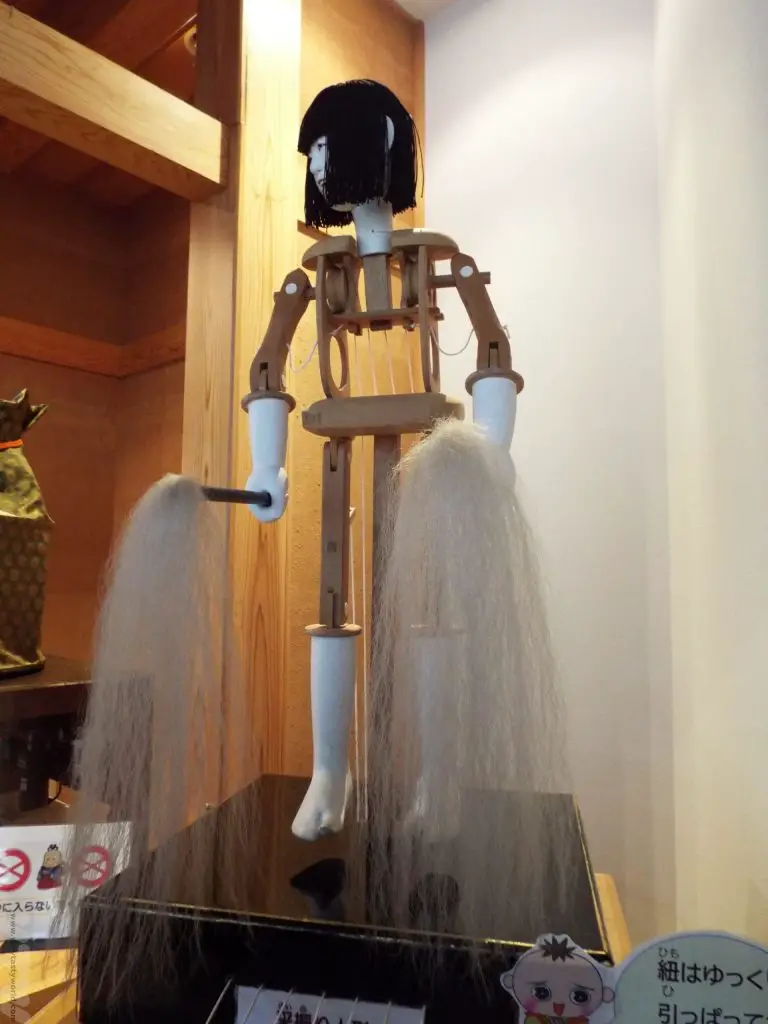
Some exhibits show you how the puppet mechanisms work.
Some dolls are cute(ish) which turn into scary (incidentally these words are, respectively, kawaii and kowaii in Japanese, be careful not to confuse the two!).
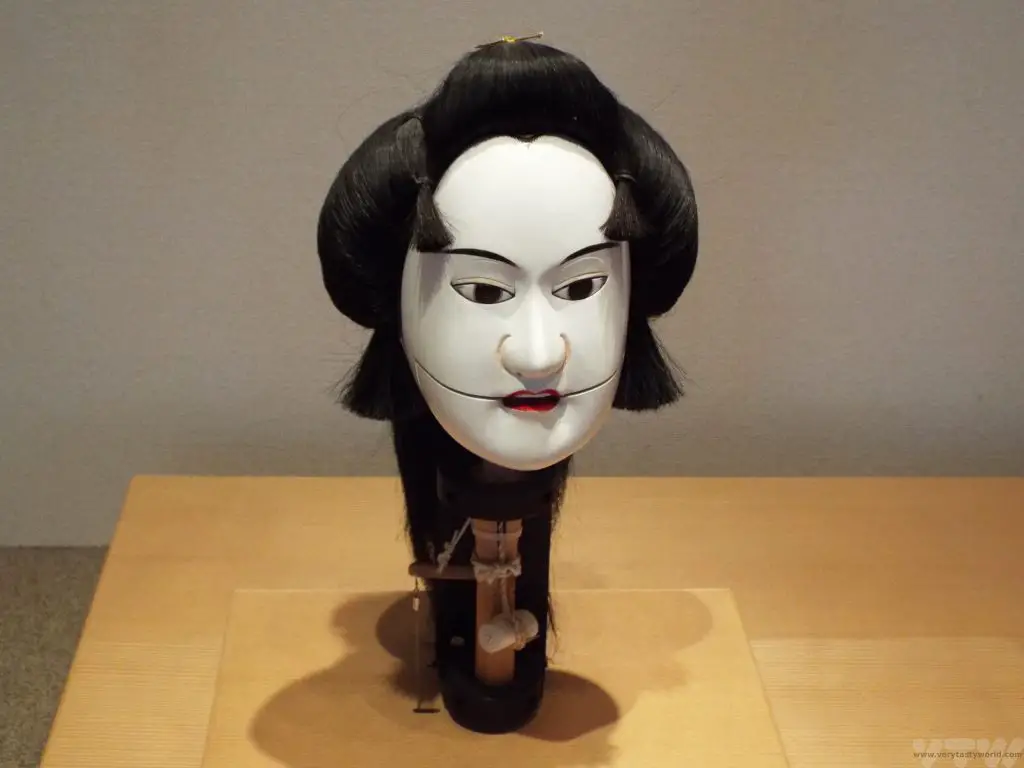
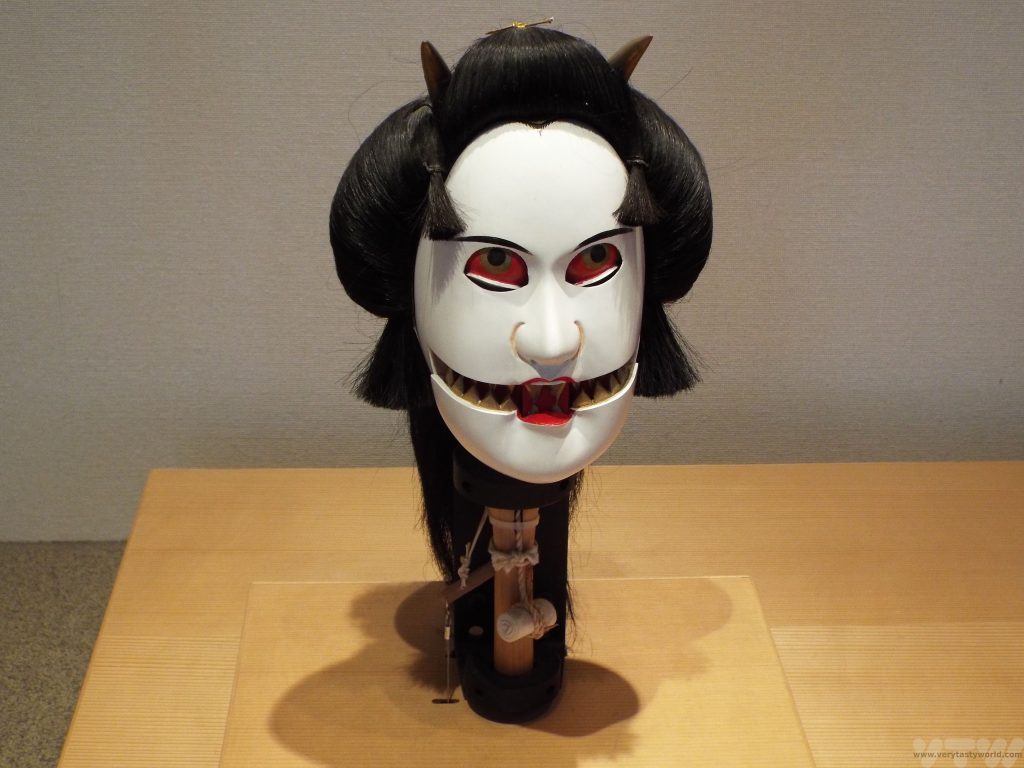
Around the circumference of the main building there are tables and chairs set out with all sorts of puzzles that you can try to solve.
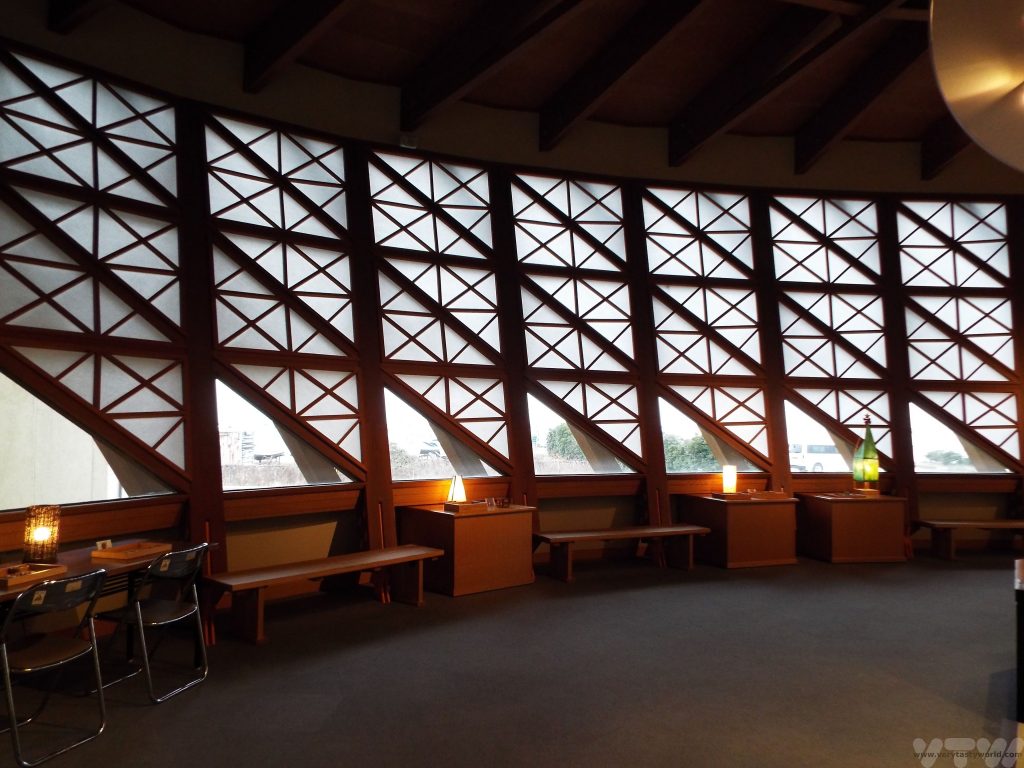
It’s a really hands-on museum and it was lovely to see families with children of all ages sitting together and working out solutions to some of the puzzles.
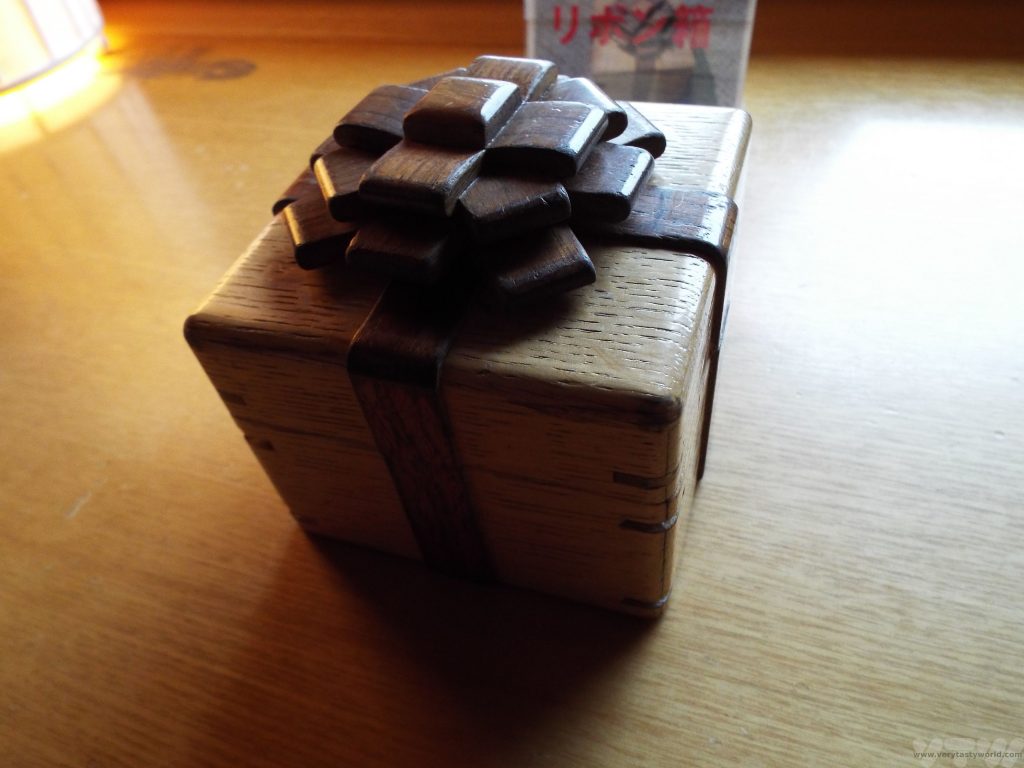
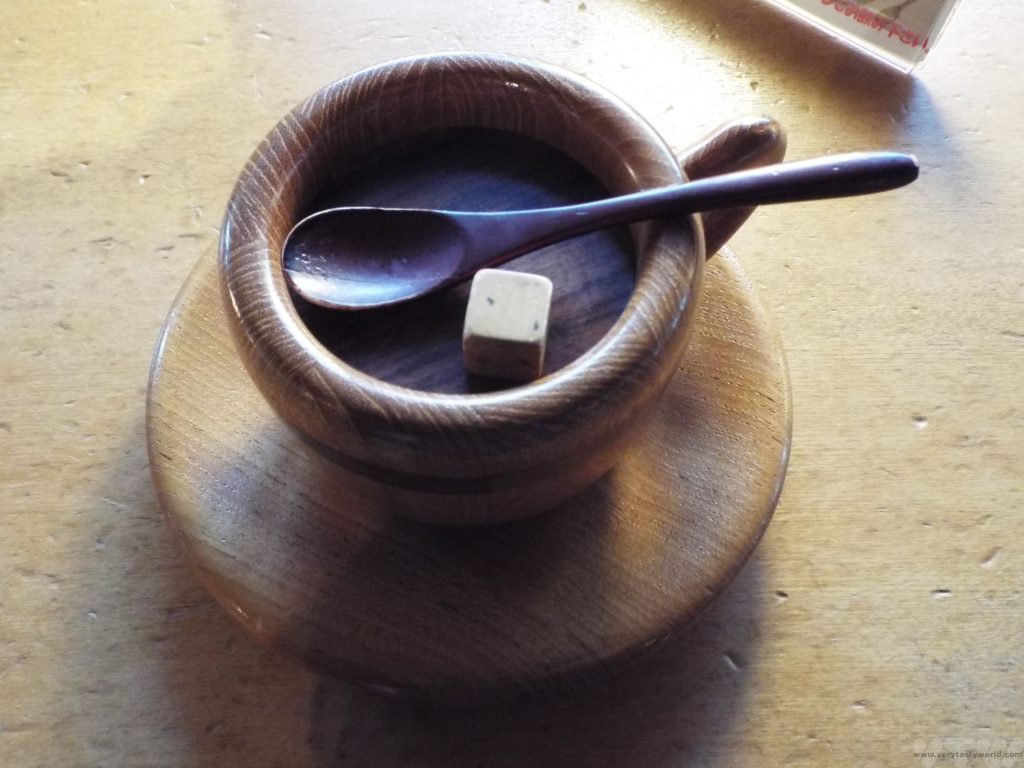
This doll is 300 years old, from the Edo period. The craftsmanship is exquisite.
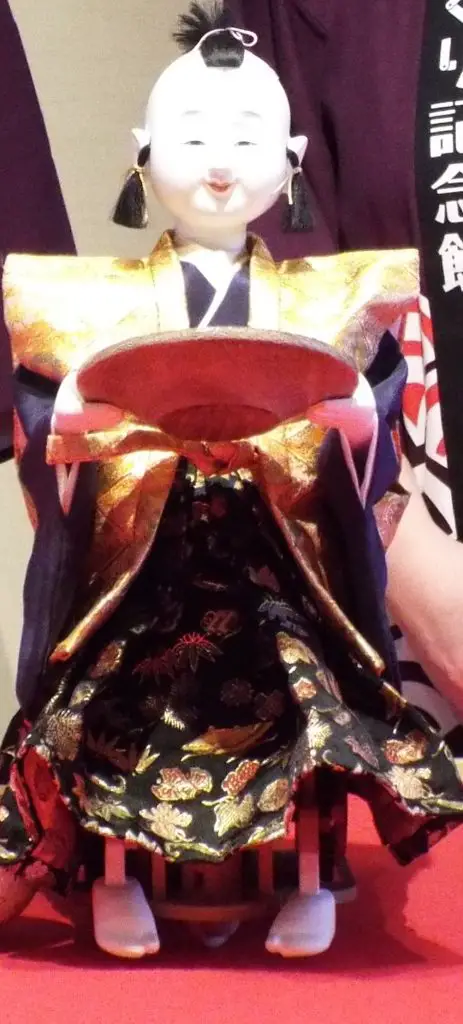
Just as we were leaving the park, the heavens opened and the rain started lashing down. We started to make a dash but a lovely staff member ran after us, brandishing an umbrella. We thanked her kindly but explained that we were British and were used to lots of rain. No, they insisted, and gave us a brolly so that we wouldn’t get wet. We’ve experienced this sort of kindness all over Japan, a welcoming generosity that just makes us love the country more and more.
So, after a lovely diversion, it was on to the Yamato koji park, just a 10 minute walk (or 5 minute trot in the rain) away at the other end of the island. It’s part factory, part museum, part shop and part café. There weren’t any specific tours when we visited but the staff were super-helpful and directed us to a display where we could understand how miso is made.
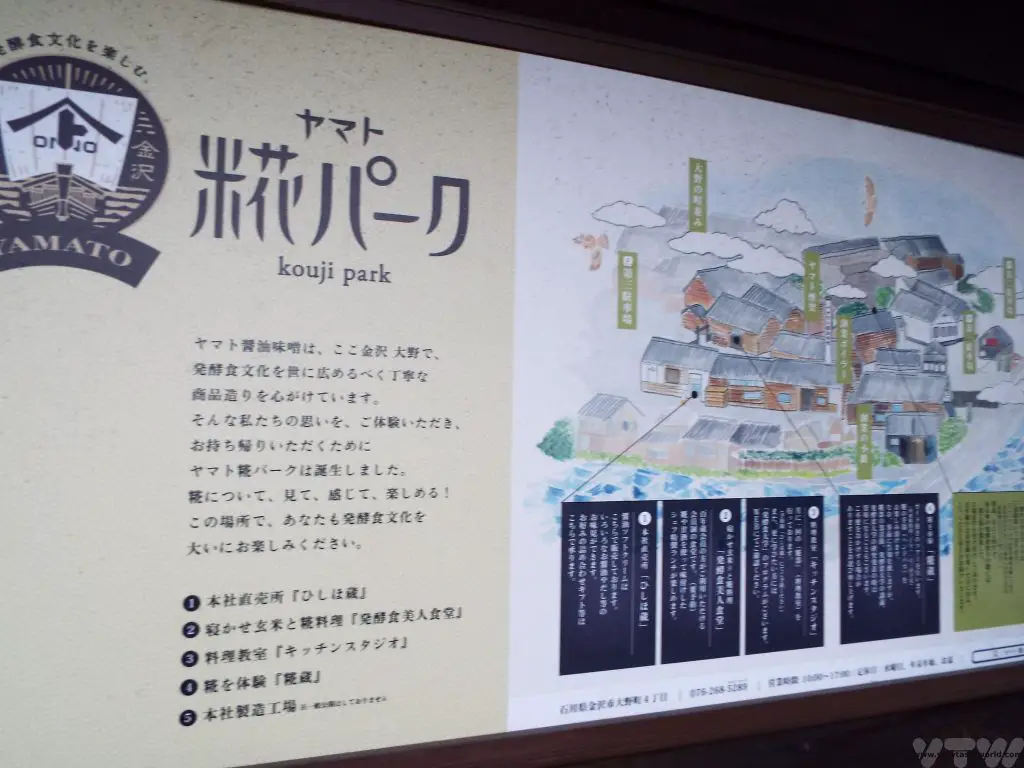
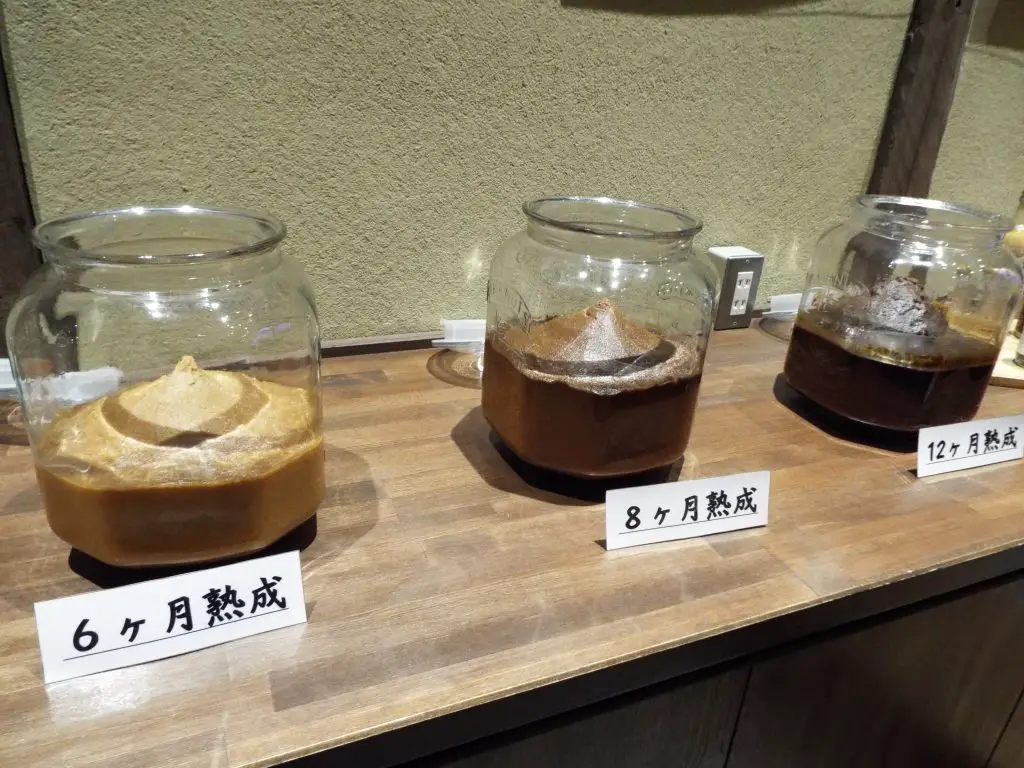
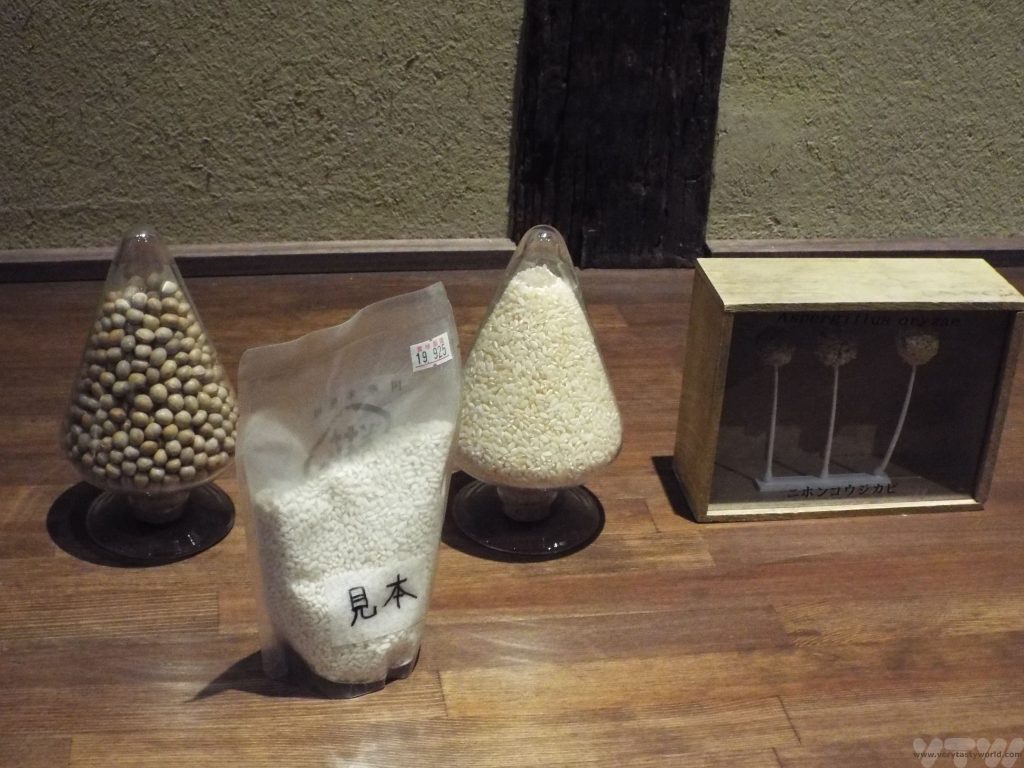
Miso basically contains five ingredients: water, koji, soy beans, rice, salt. Koji thrives on the rice. Then it is mashed with the soy beans, salt and water. After about six months yeast forms. The miso flavour develops thanks to the interactions between the yeast and the koji. Fermentation can take as long as three years.
Soy sauce is made using a very similar process and ingredients to miso but uses wheat instead of rice. A mash is formed and then it’s pressed (like olives for olive oil). After fermentation, the resulting liquid is soy sauce. It was fascinating to taste the difference between pasteurised and unpasteurised soy sauce. Unpasteurised soy has a more complex flavour because some of the heady aromas are lost in the pasteurization process.
Some the the traditional fermentation vessels are enormous. This was over two metres in height.
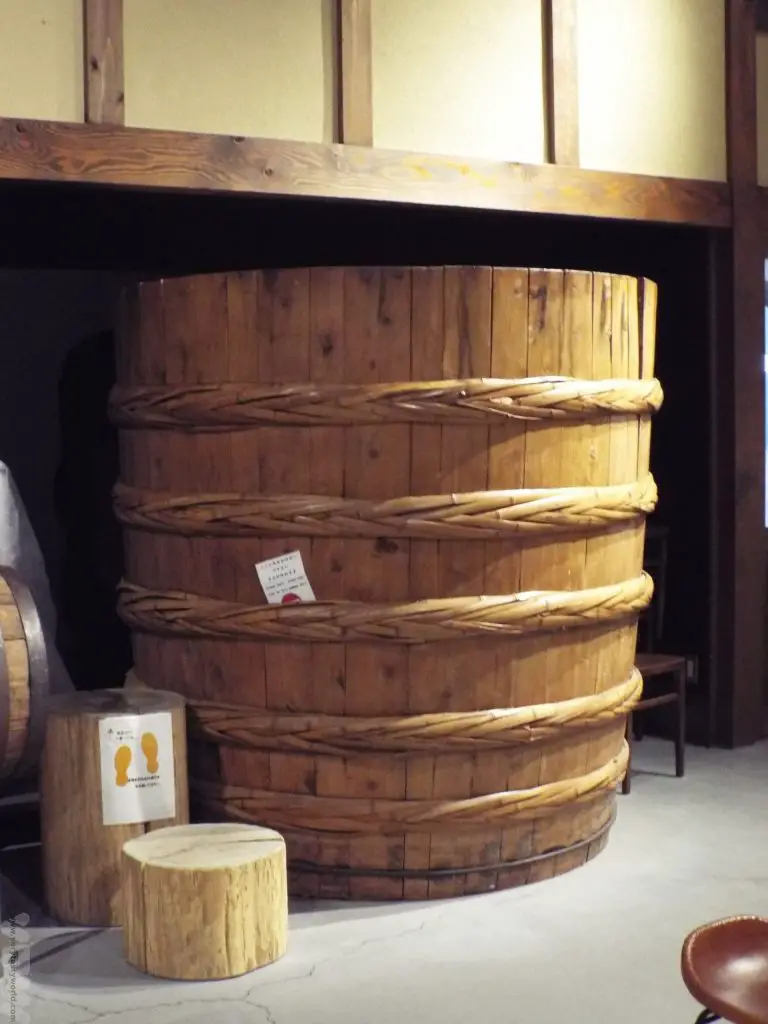
You can also dip your hands into a koji hand bath which will, apparently, give your skin a soft and delicate sheen. It’s quite nice to be able to dip your hands into a warm bath, especially on a cold, wet day. Apparently two minutes is the optimum time – there is a timer so you can check. And yes, we can confirm that our hands did emerge from the bath silky-smooth.
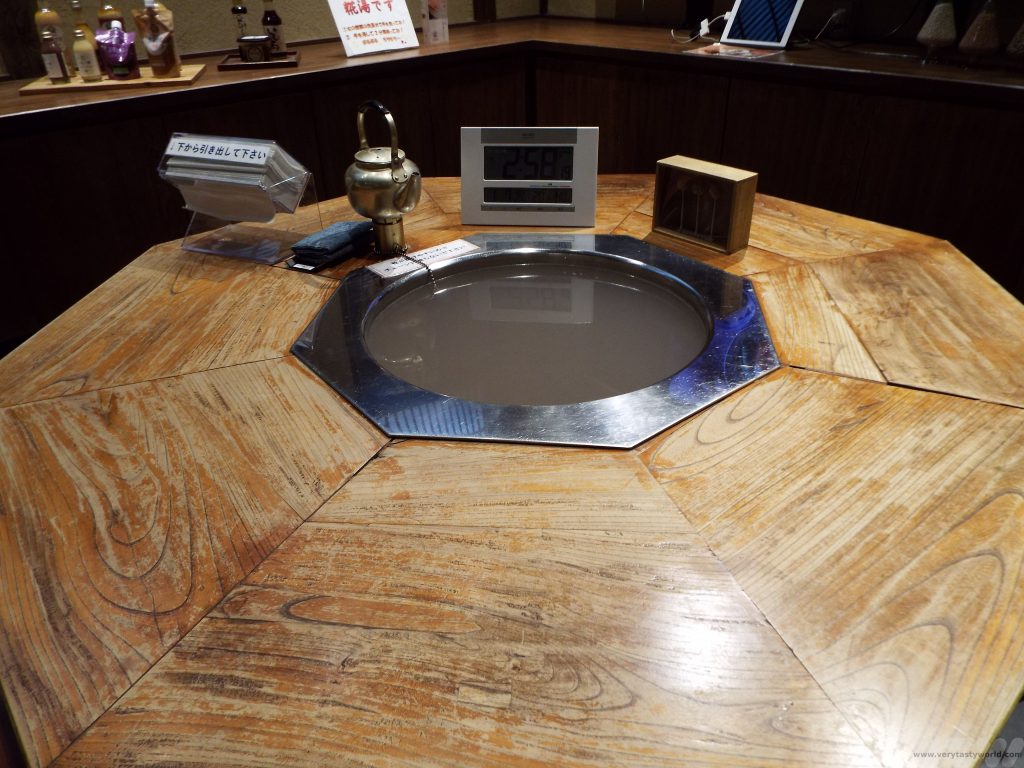
There is a shop with an extensive variety of products and you are able to sample before you buy. It was particularly interesting to be able to taste different sauces and compare the flavours.
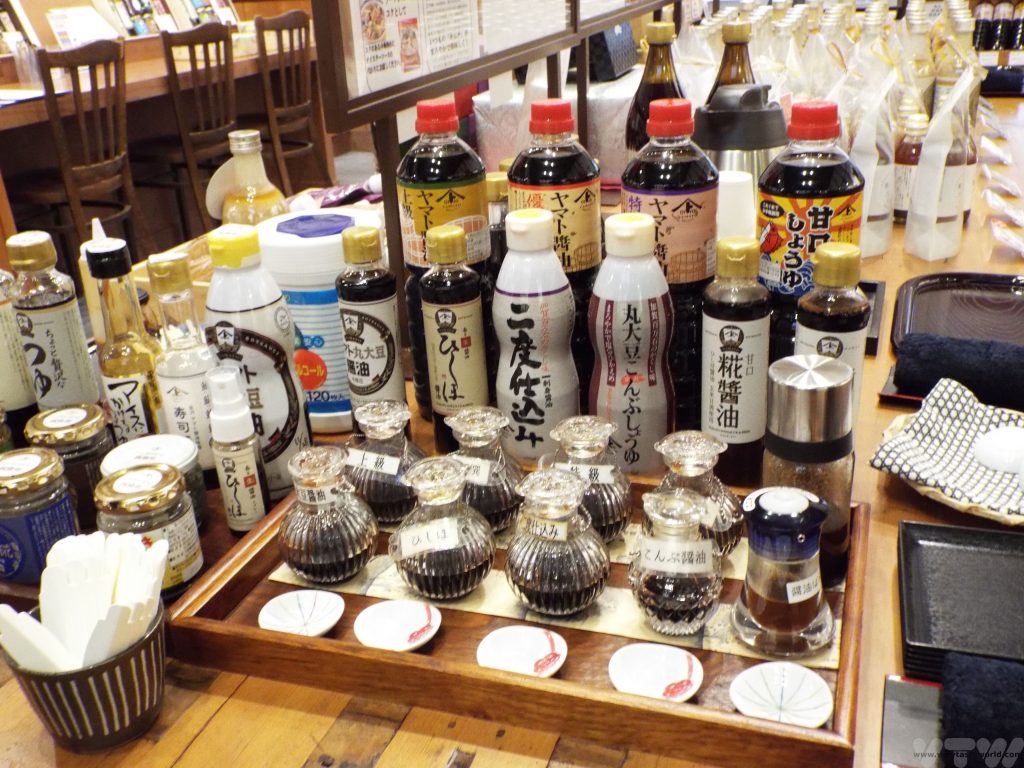
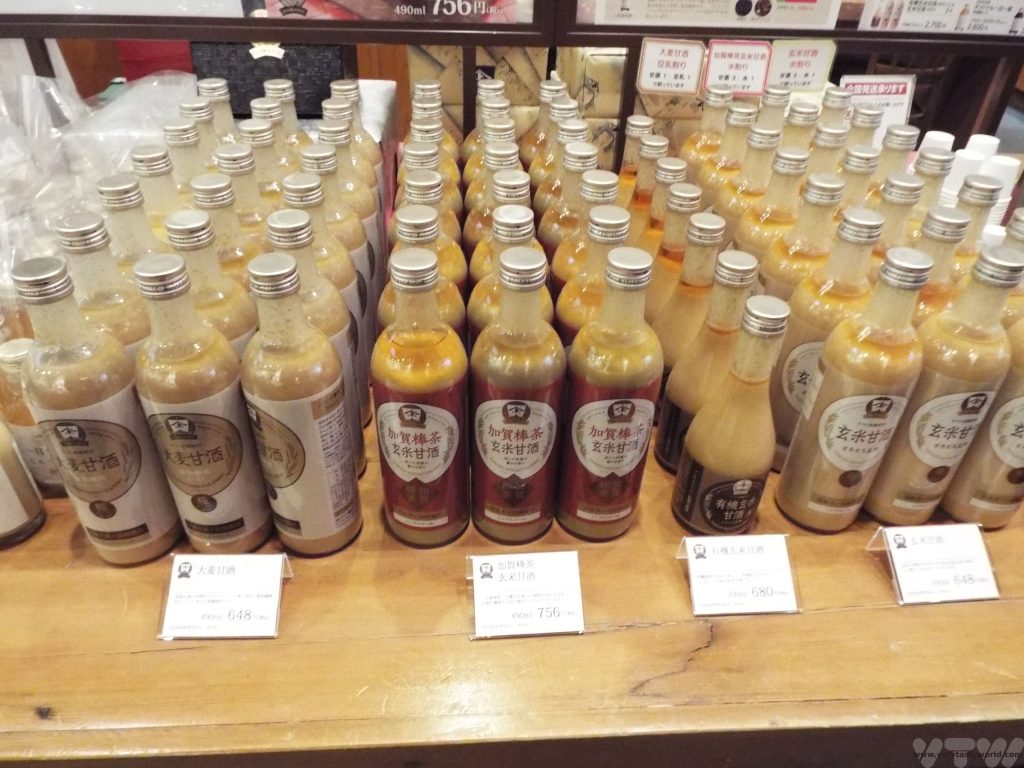
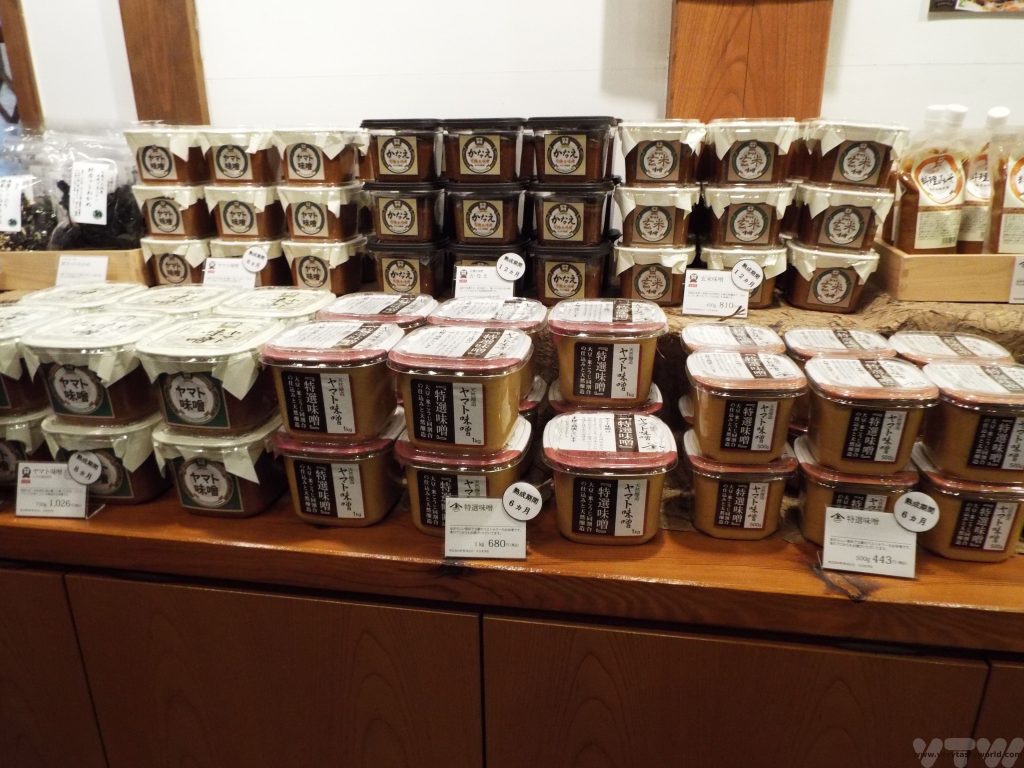
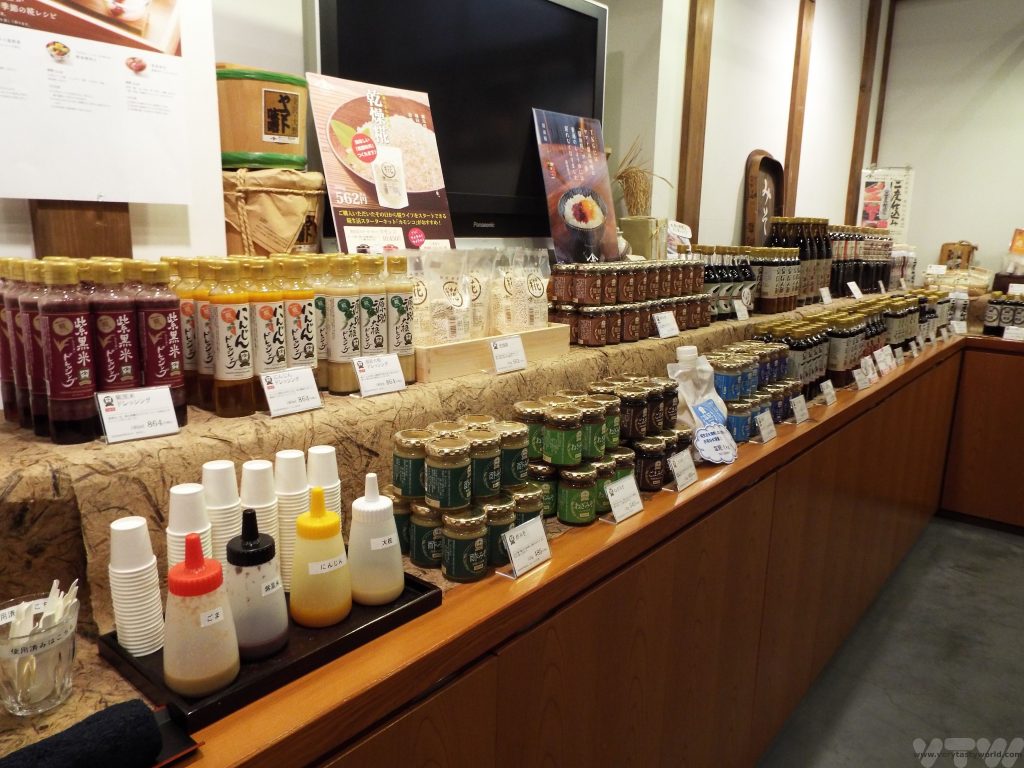
Amazake is a sweet, low alcohol drink made from fermented rice and koji. Amazake literally means ‘sweet’ (ama) ‘sake’ (sake, which can be used to describe alcohol). You can buy the paste, mix with hot water and drink. It tastes sweet and has a smooth, creamy texture. And for a delicious dressing, you can mix amazake with ponzu soy sauce (ponzu is a citrus juice comprising Japanese fruits sudachi, yuzu, and kabosu and vinegar mixed with soy sauce to give an amazingly tangy, salty flavour) in the ratio 1:1.
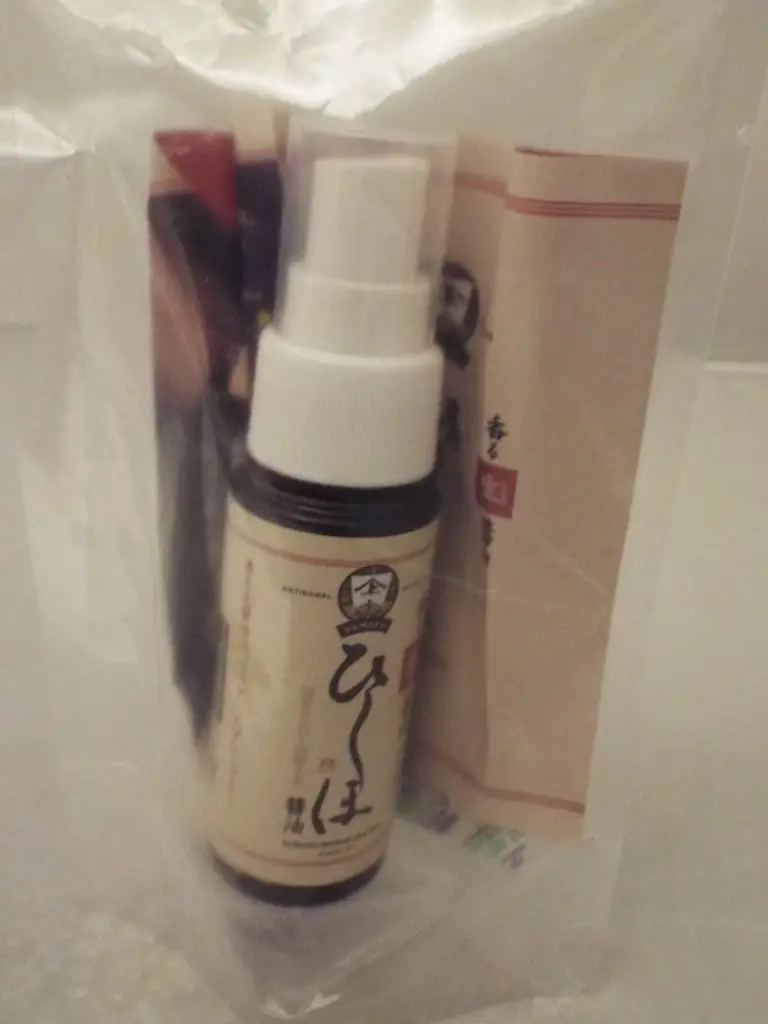
And one of the best foodie souvenirs ever – for the adventurer who cannot travel without seasoning – spray soy sauce, conveniently packaged in a container that would even fit into your hand-baggage.
They also have a café and ice-cream maker. Amazake and soy sauce ice-cream were on offer and we tried both. Soy sauce ice cream sounds so wrong but it was delicious, full of rich salty umami flavour that complemented the creamy sweet ice-cream.
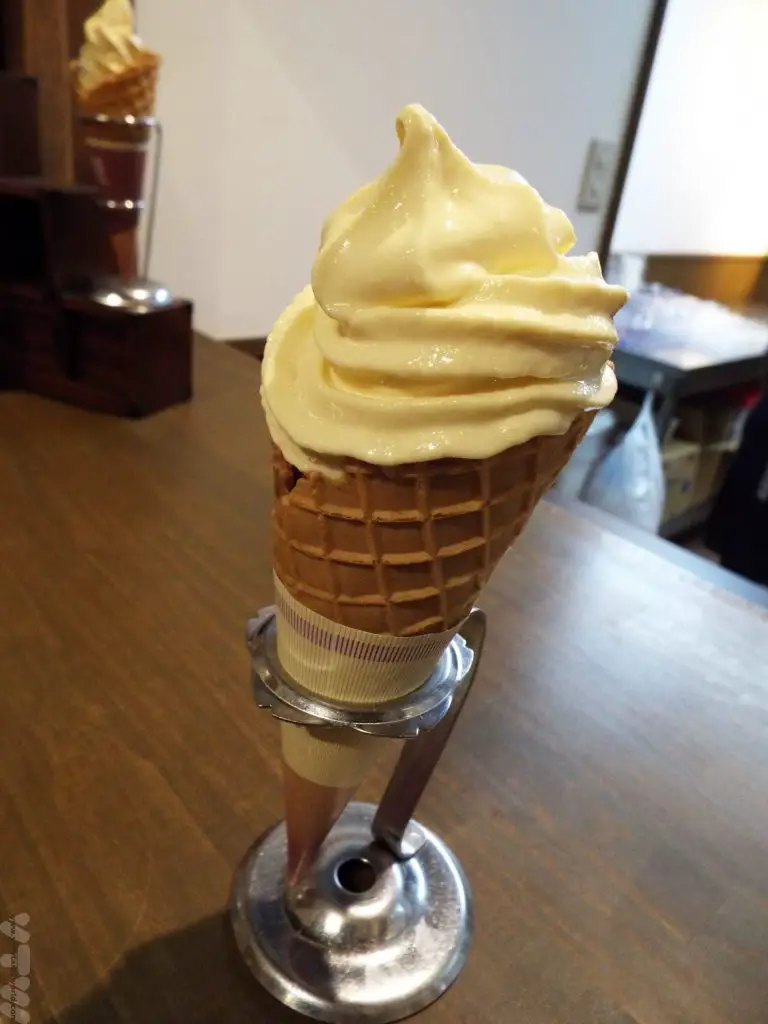
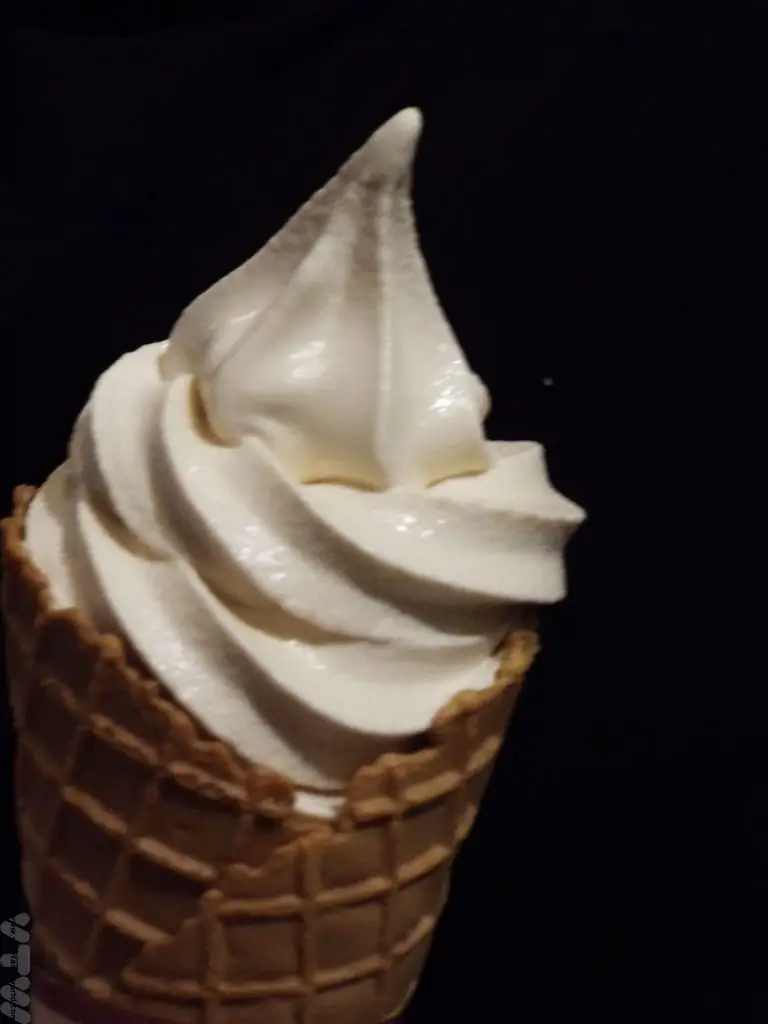
What was also rather lovely was that the CEO, Mr Yamato, was on site that day and came to say ‘hello.’ We can’t think of many companies where the boss would greet some very enthusiastic, albeit extremely damp, tourists.
We shopped for as many products as we could fit into our luggage. One particular packet that we were very happy to find was that of inoculated rice koji. It was also conveniently flat for packing and much cheaper than koji that we can purchase in Europe.
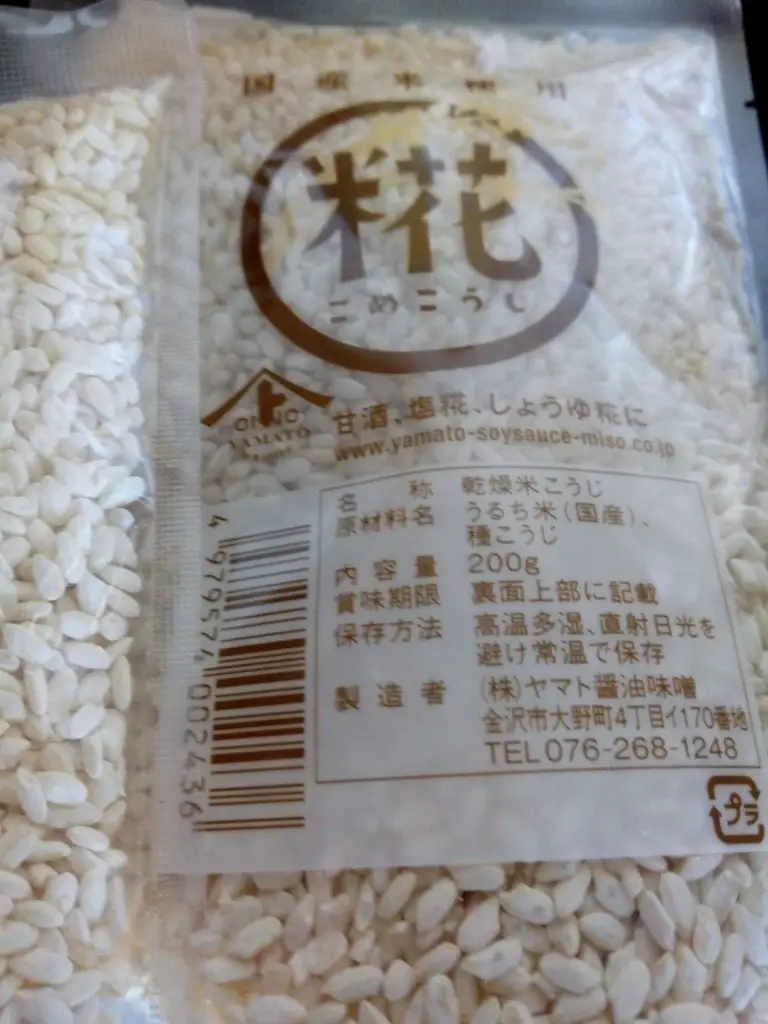
Making our very own miso was most definitely going to be one of our foodie missions on our return home. And this is how we made it…

- Recipe: Simmered Shiitake Mushrooms

- How to Use Public Transport in Japan

- RECIPE Oyakodon Donburi

- Planning a Trip to Japan

- The Makanai: Cooking for the Maiko House

- Setsubun Food – Bean Throwing Day

- The Gassho Farmhouses of Rural Japan

- Recipe: Japanese Simmered Pork Belly – Buta no Kakuni

- RECIPE: How to Make Umeboshi

Super-Vlaai in South Netherlands!
Limburg in the south of the Netherlands offers a complete contrast to the cosmopolitan charms of Amsterdam. When we recently picked up train tickets at Schiphol airport’s railway station to make the two hour journey, the friendly ticket master inquired, “are you sure you are going to South Netherlands?” On receiving a positive reply he very kindly printed out a timetable for us showing us where and when to change trains. He was super-helpful.
Limburg is a rural area and the way of life is more relaxed. The flat landscape, interspersed with pretty towns and villages, is ideal for walking and cycling at an easy pace, especially along the banks of the broad River Maas.
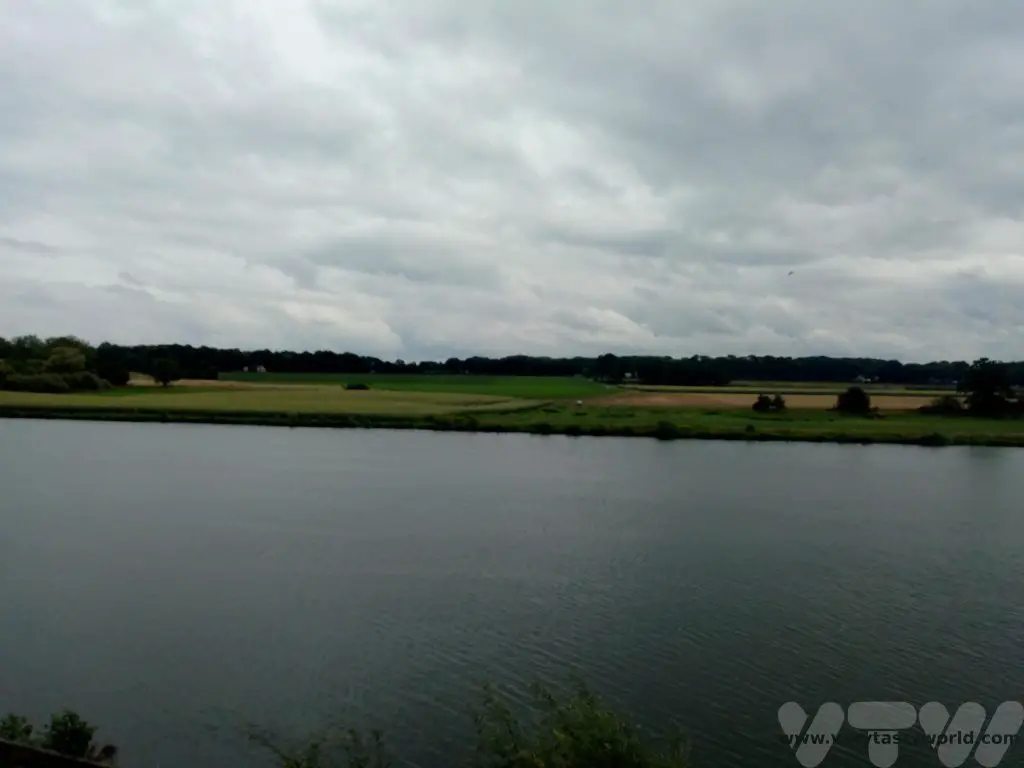
Limburg residents are very sociable. This is emphasised by their greeting technique: not one, not two, but three kisses on the cheek. Left-right-left. Or right-left-right. Either is fine.
If you are lucky enough to visit a local home you will almost certainly be offered coffee and vlaai. Dutch coffee is always properly made ground coffee. Vlaai – also known as Limburgse Vlaai – is a fruit tart.
The base isn’t made from traditional flaky pastry but from a yeast dough which gives it a light, cake-like texture. Each vlaai comes as a big round disc of deliciousness, usually around 30 cm in diameter. It is cut into large slices for guests to enjoy.
So Many Varieties of Vlaai
The traditional vlaai is a fruit-based tart, often with a latticed pasty top. Cherries, apricots, apple – all sorts of soft fruit can be used as a filling. It may be served with a dollop of rich cream.
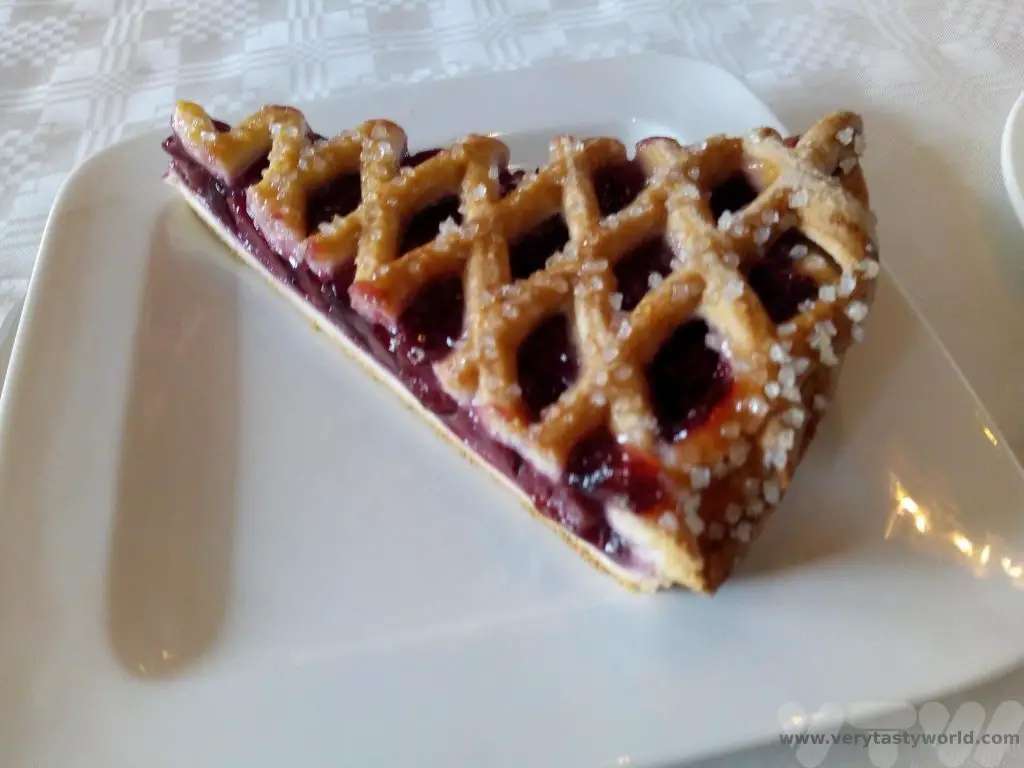
And then there are more unusual variations. The gooseberry vlaai topped with fluffy meringue is both tart and sweet.
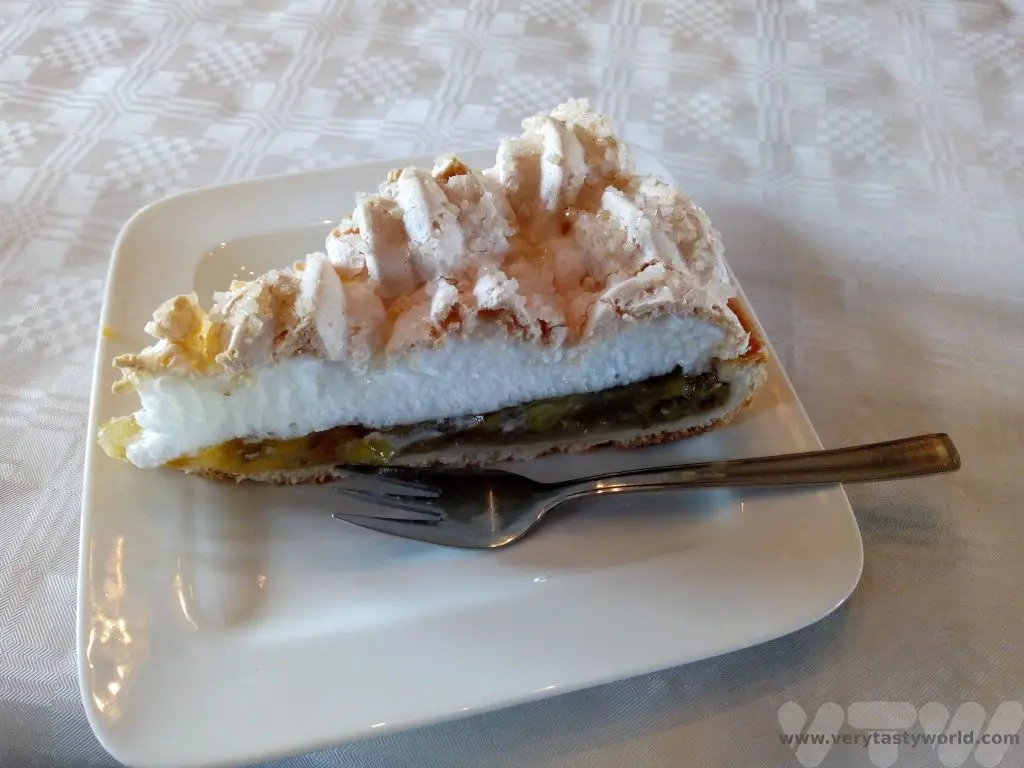
Berry mouse and meringue is also a great combination.
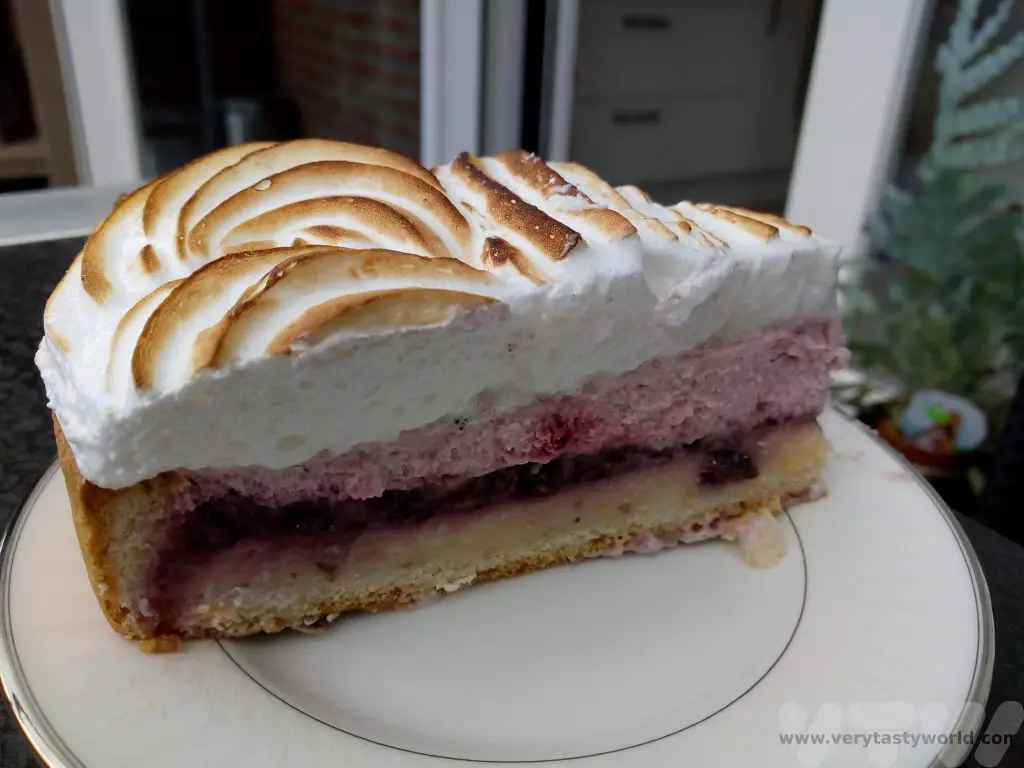
The rice pudding vlaai, with cream and chocolate shavings for added decadence, will keep you satisfied for a week.
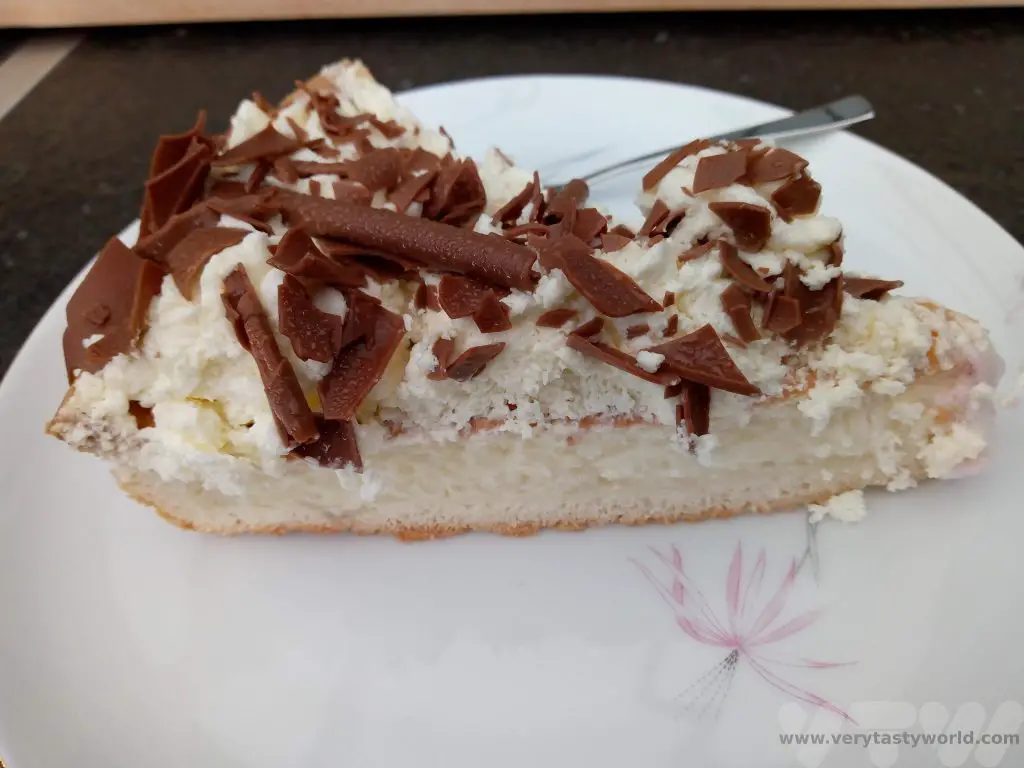
Tradition dictates that visitors are offered coffee and vlaai and it is polite to accept. Apparently it is also considered to be a little bit rude not to accept a second slice. It’s possible that Limburgians have a secret second stomach as it is genuinely impossible to eat two slices of vlaai in quick succession, scrumptious though it is.

Love at First Bite – Costa Rica Chocolate
We had always wondered what the point of mosquitoes actually was. As far as we could see all they do is bite people to suck their blood which causes much irritating itching and, worse, they spread horrible diseases. We might be particularly biased against the nasty little blighters as we seem to be strawberry flavoured to them and are guaranteed to attract any within our vicinity so that they can have a really good feast on us.
But it turns out that mosquitoes have a hugely important – and very beneficial – role in the ecosystem: they pollinate chocolate flowers. Yes, without mosquitoes the cacao trees of Costa Rica would not produce nearly enough fruit and hence there would be less chocolate in the world. And Costa Rica’s chocolate is fantastic quality.
Monteverde is one of Costa Rica’s most visited locations. The primary reason for visiting would be to experience the cloud forest nature reserve with its abundance of spectacular wildlife.
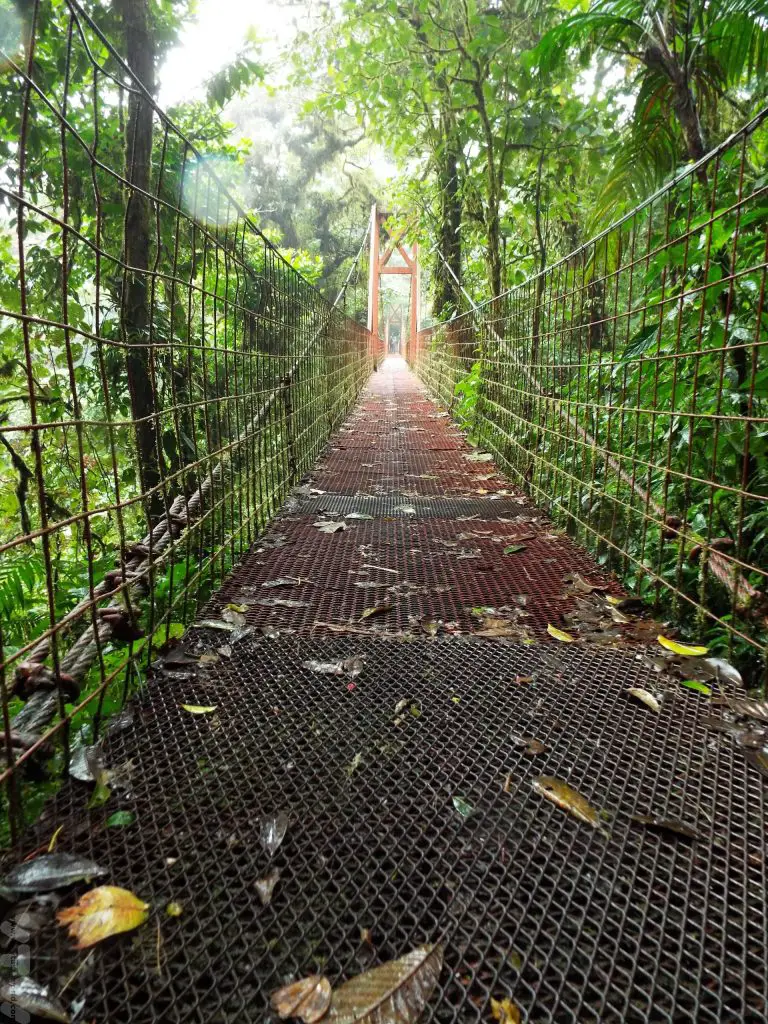
There are all sorts of other activities available, including adventure tours such as ziplining across spectacular scenery.
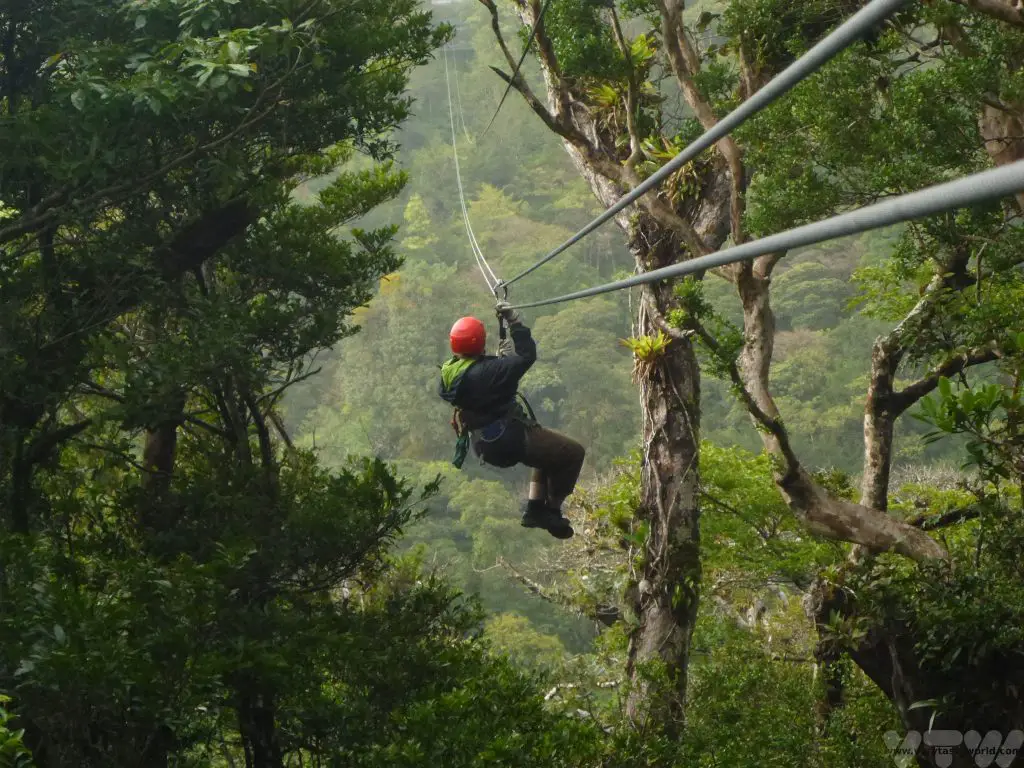
And, indeed, a number of foodie tours are also available. Don Juan’s plantation in Monteverde offers the opportunity to see chocolate being produced, as well as coffee and sugar cane.
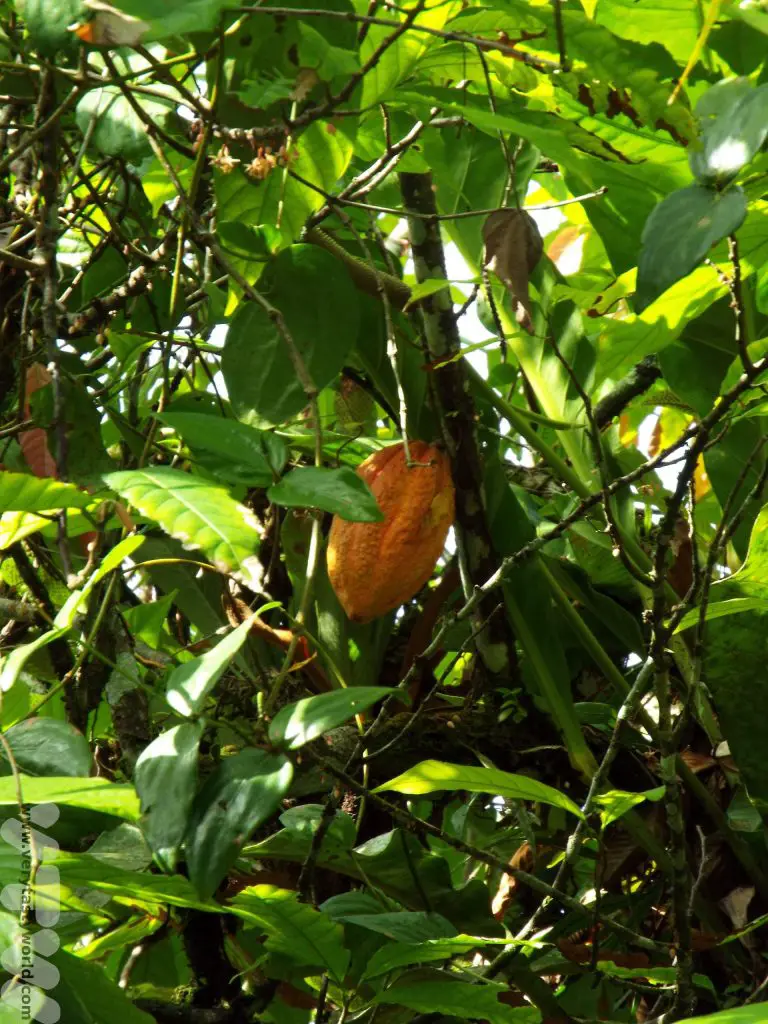
Cacao trees produce a fruit which has the shape of a rugby ball but is a little smaller. It has a tough orange leathery rind.
You cut it open to reveal 8-12 beans inside, all covered in what appears to be a slimy membrane that is white with a pale greenish tinge. It is these almond shaped beans inside that will become chocolate.
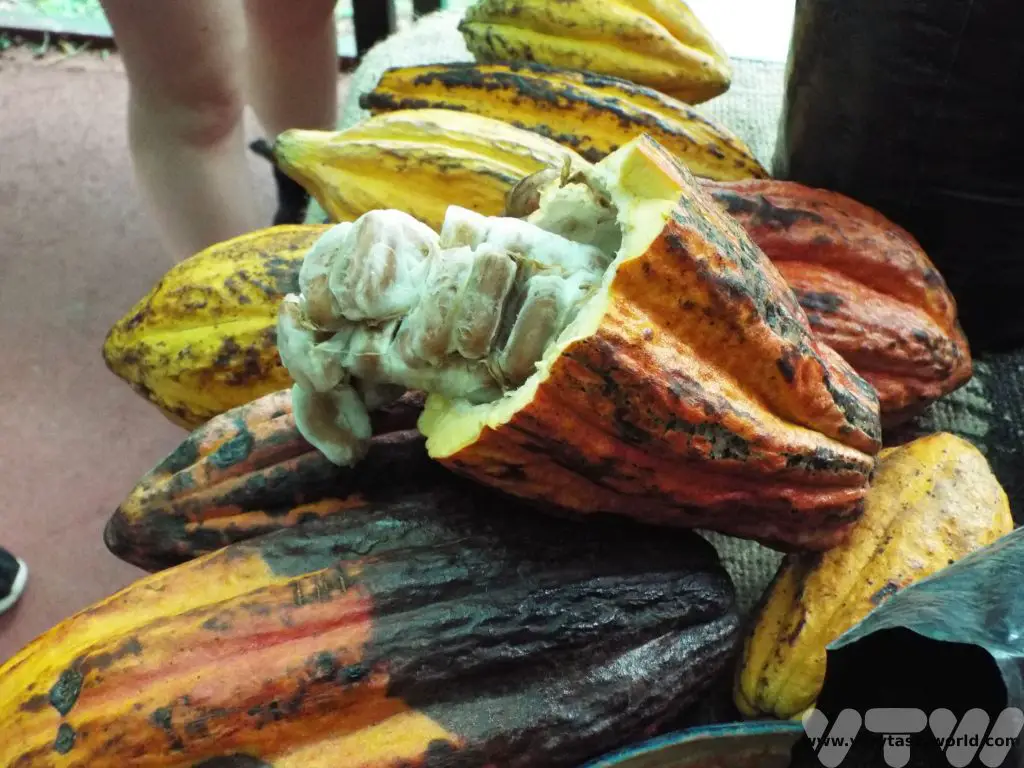
First of all, the beans are removed from the pod and undergo a fermentation process for five days. By day five you can really smell the alcohol. This process helps develop the chocolate flavour.
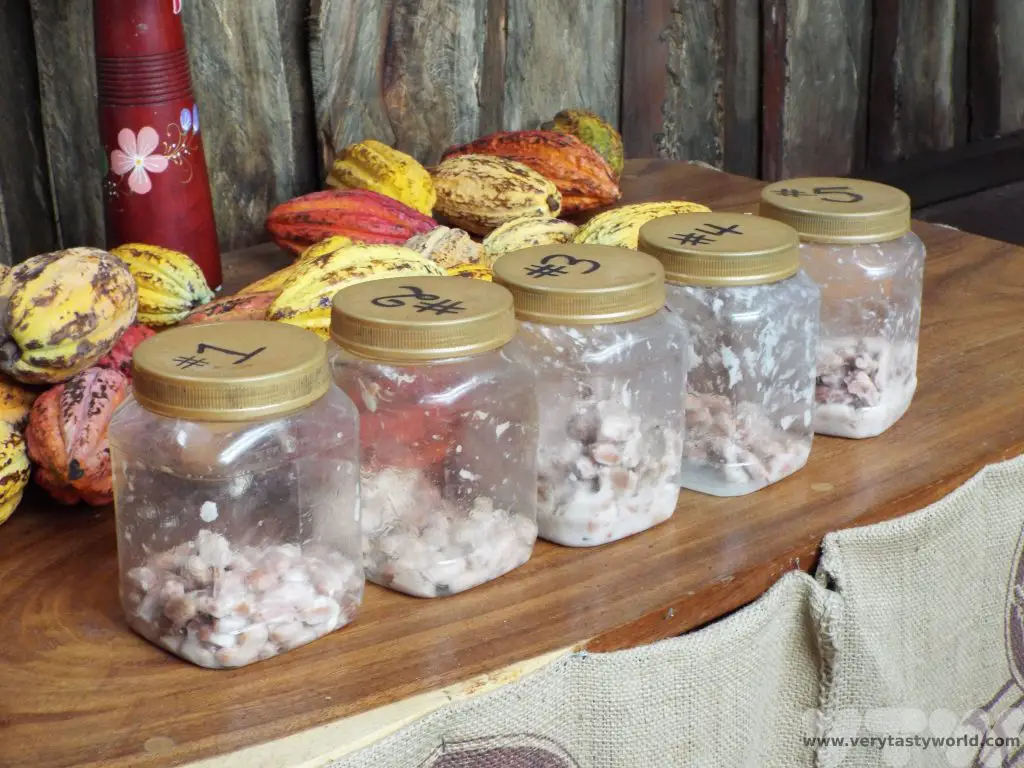
The beans are then dried naturally by spreading them out in the sun for a couple of weeks before they are roasted.
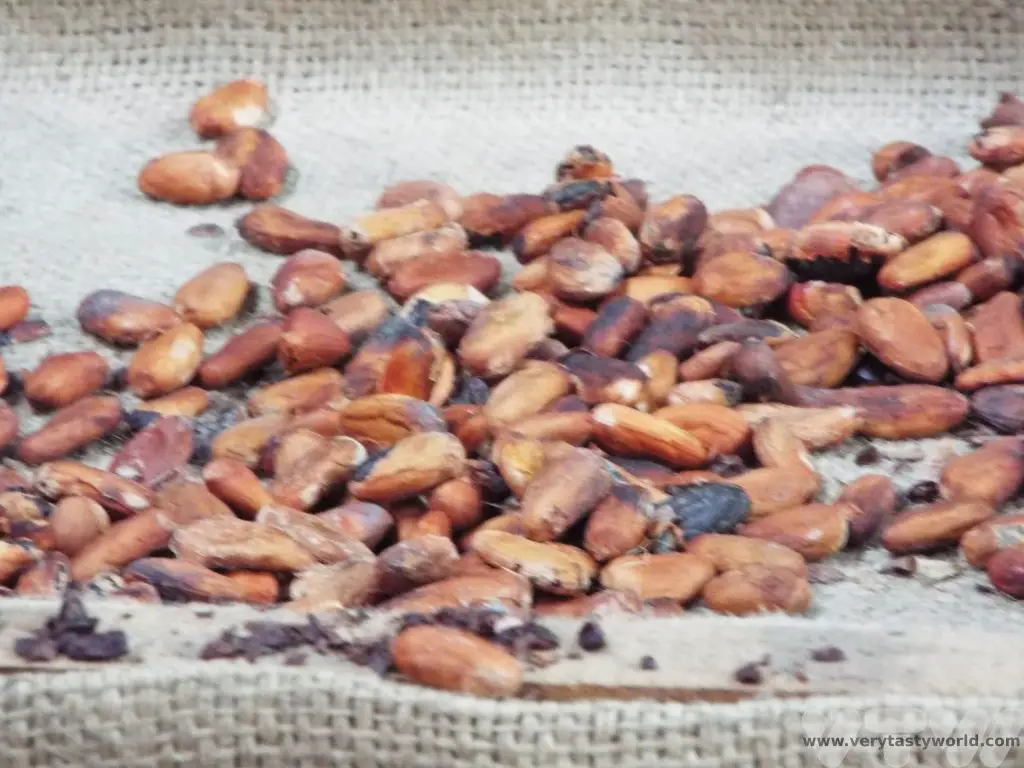
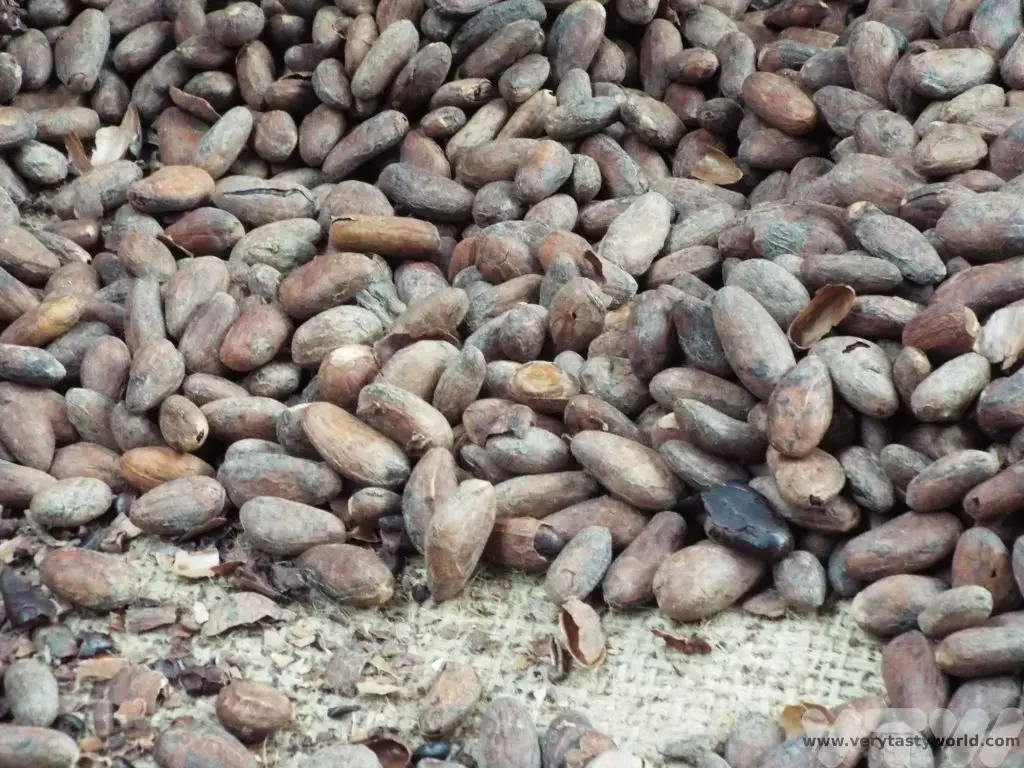
The roasting gives a bitter note to the complex flavour which feels counterintuitive because we all know chocolate to be sweet. But the sweetness is, of course, due to the vast quantities of sugar added to our favourite childhood confections later on in the process.
Winnowing separates the beans from their shells leaving the cocoa nib which forms the basis of the chocolate. You can eat the nibs directly – they have a slightly bitter flavour.
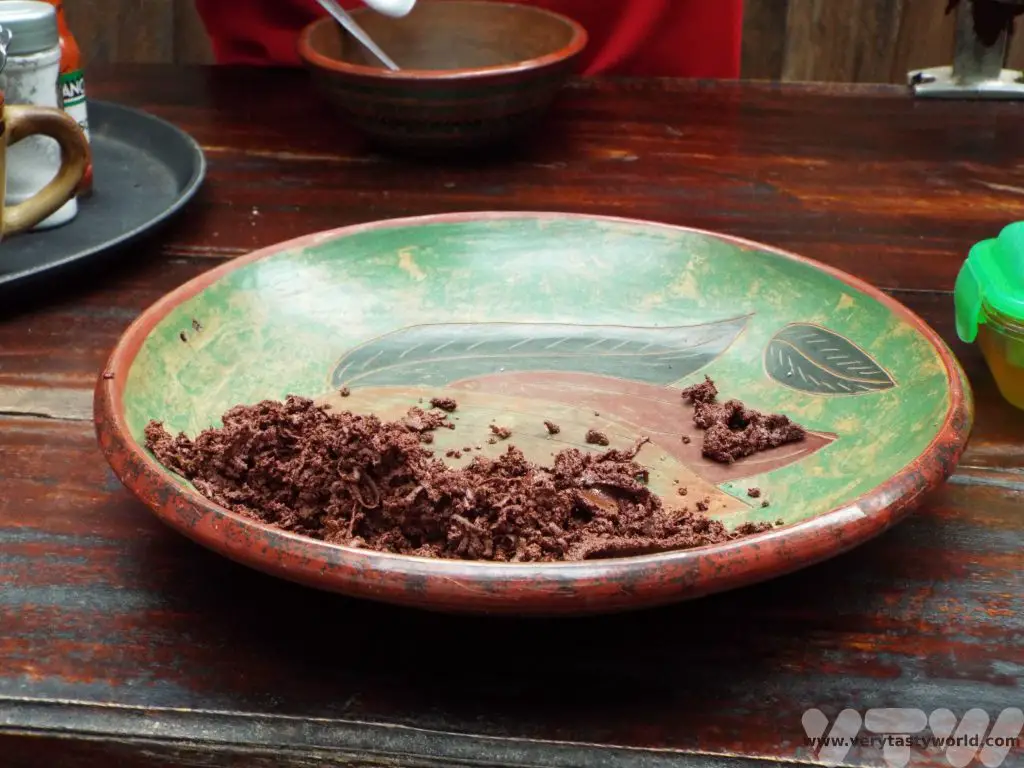
The nibs are then ground into a paste. The result of this is chocolate mass (also called chocolate liquor) – a combination of cocoa solids and fat in roughly equal proportions, the friction of the grinding process brings out the cocoa butter. The cocoa mass can be processed further to make chocolate or squeezed out in a press to separate the two elements – powder and cocoa butter. In combination, the cocoa mass is what gives chocolate its special qualities – the flavour and aroma from the hundreds of chemical compounds and the amazing meltiness. Cocoa butter doesn’t impart flavour but it has a melting point that is at body temperature which means that chocolate remains solid at room temperature but starts melting in the most gloriously decadent way as soon as you put it in your mouth.
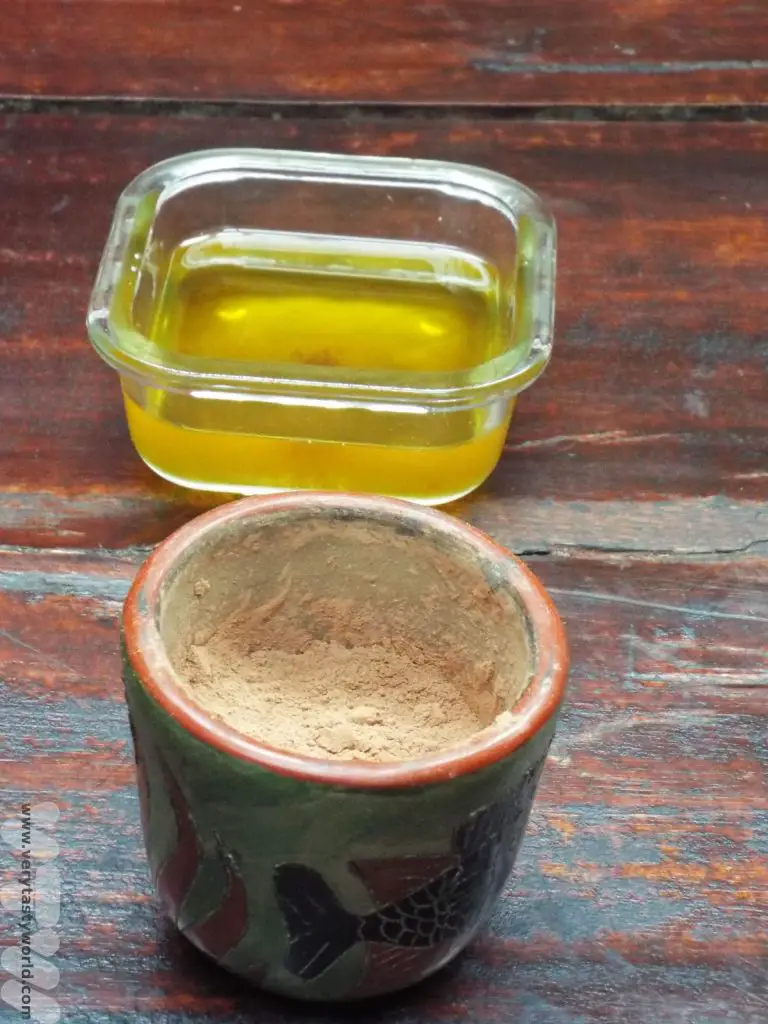
Of course there are lots of variations on the next stage of the processing. The nibs continue to be ground and then other ingredients can be added to produce chocolate. Of course, we are all familiar with the different types of chocolate and very likely have our childhood favourites.
Dark chocolate is made from sugar, cocoa butter, cocoa mass.
Milk chocolate is made from sugar, cocoa butter, cocoa mass, milk or milk powder.
White chocolate is made from sugar, cocoa butter, milk or milk powder. Curiously, there is no cocoa mass in white chocolate.
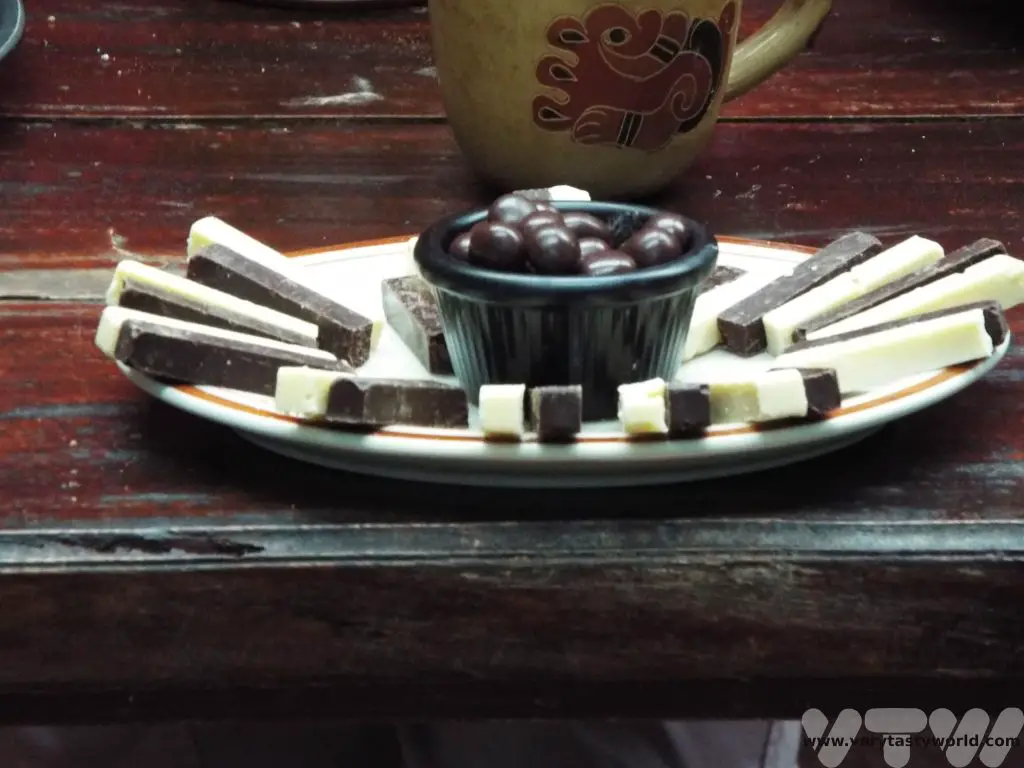
There is a further process to making chocolate and that is tempering, which creates uniform crystals of the cocoa butter and makes the texture of the chocolate smoother and less prone to cracking. Tempering involves heating the chocolate to about 50⁰C in order to melt all the types of crystals that form, then agitate at 27⁰C then heat slightly to 31⁰C. This gives the chocolate its silky shininess.
We tried some of the products on offer. These treats were direct from the plantation and had had minimal processing.
Pure cocoa butter is all about the texture – soft and luscious, it is completely different to the white chocolate bars you grew up with as a kid.
And, of course, we couldn’t refuse a cup hot of chocolate made direct from grated cocoa mass. It is a rich, smooth, warming, slightly bitter drink – a very adult hot chocolate.
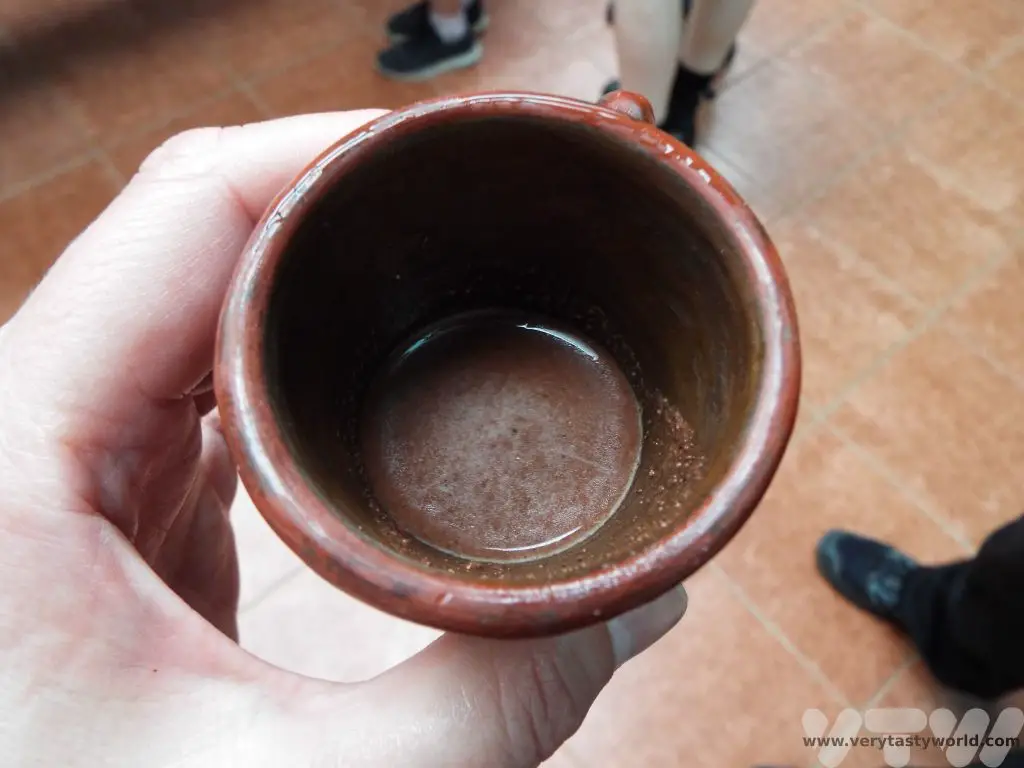

- Best Time To Visit Machu Picchu 2024 Update
- A 2 Week Patagonia Itinerary
- Day of the Dead in Campeche
- A Galapagos Land Based Itinerary
- RECIPE: How to Make Costa Rica’s Gallo Pinto
- A Tasty Puebla Food Tour
- Costa Rica Wildlife Sanctuary – Caño Negro
- Visit Torres del Paine National Park in Patagonia
- Atacama Desert Itinerary
